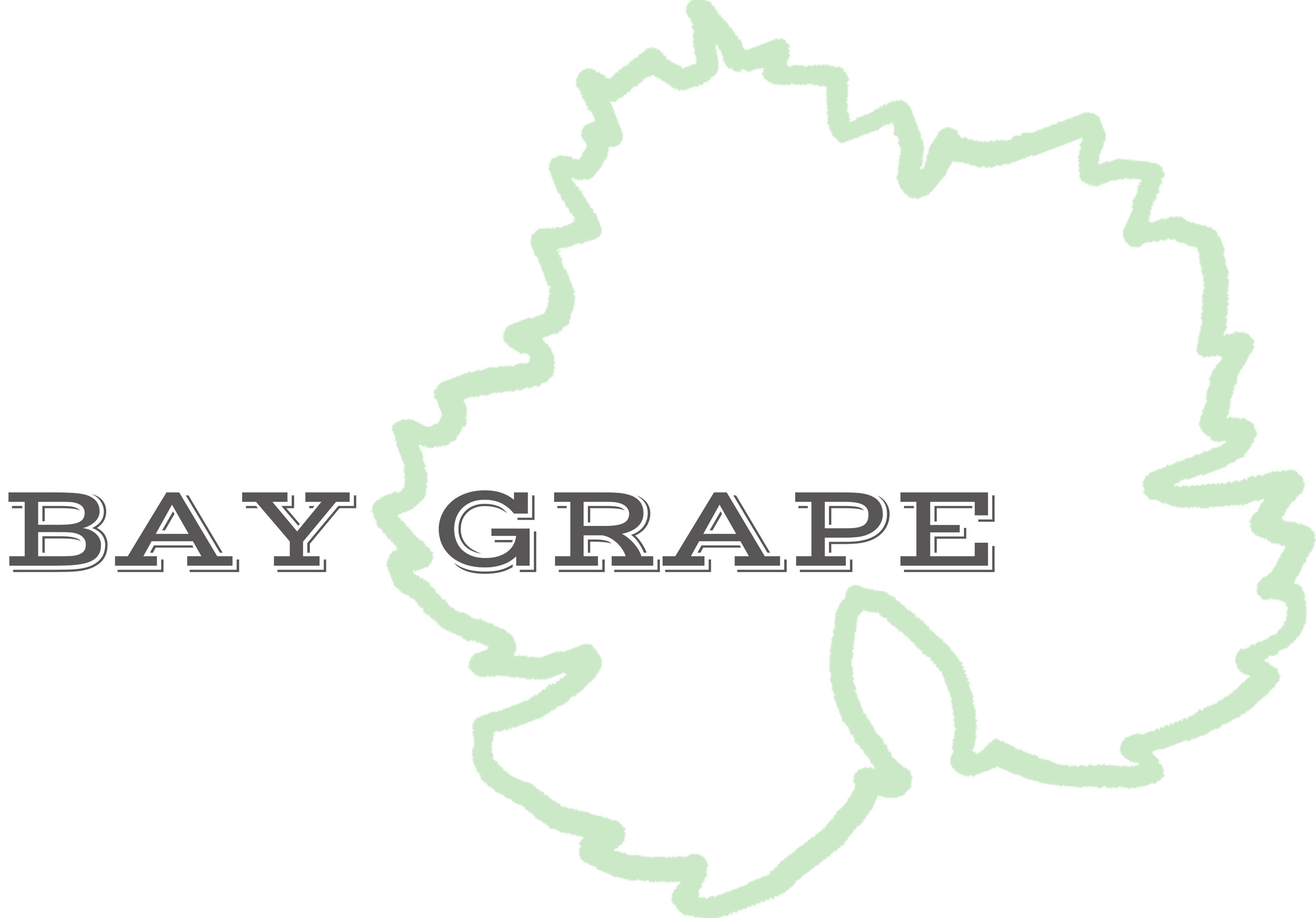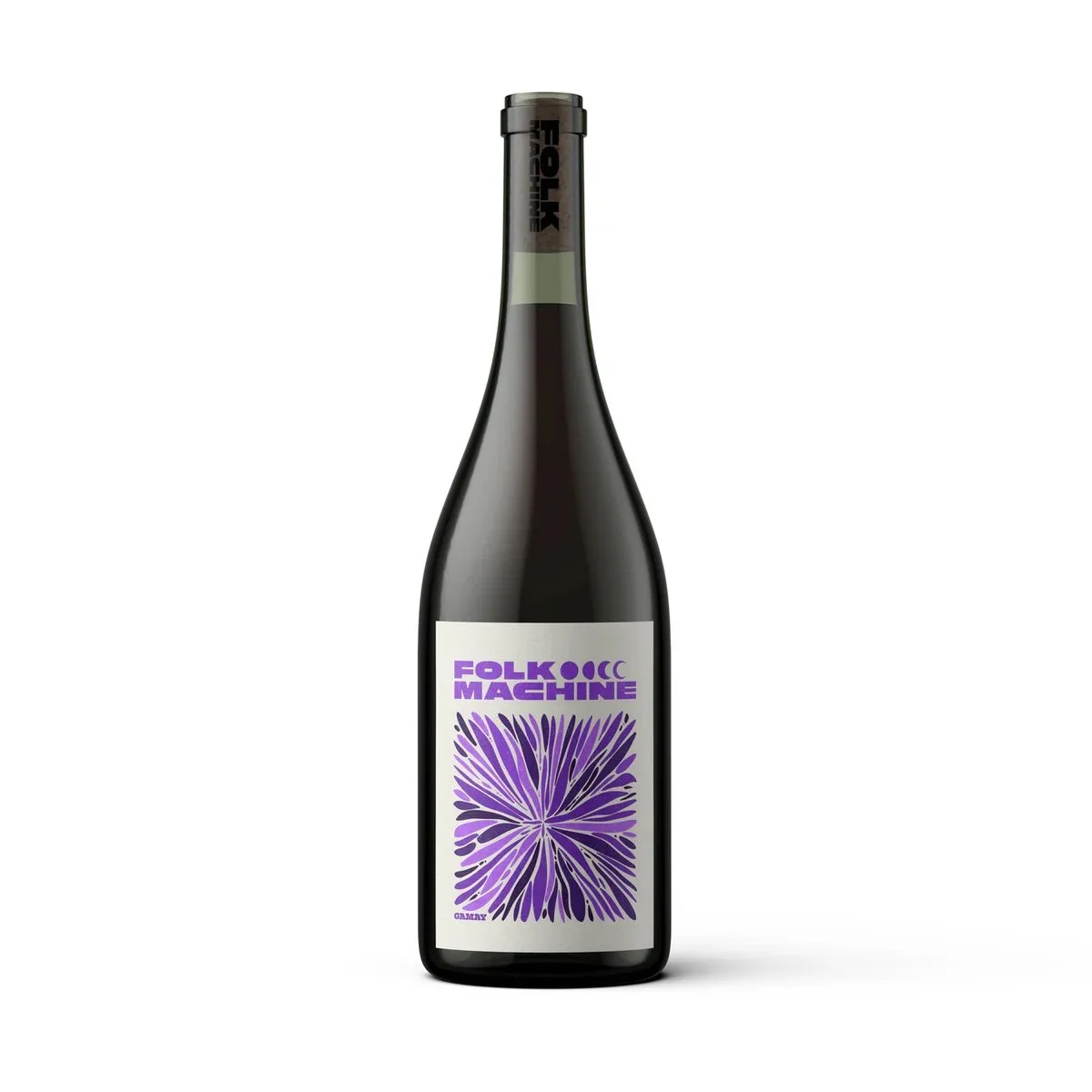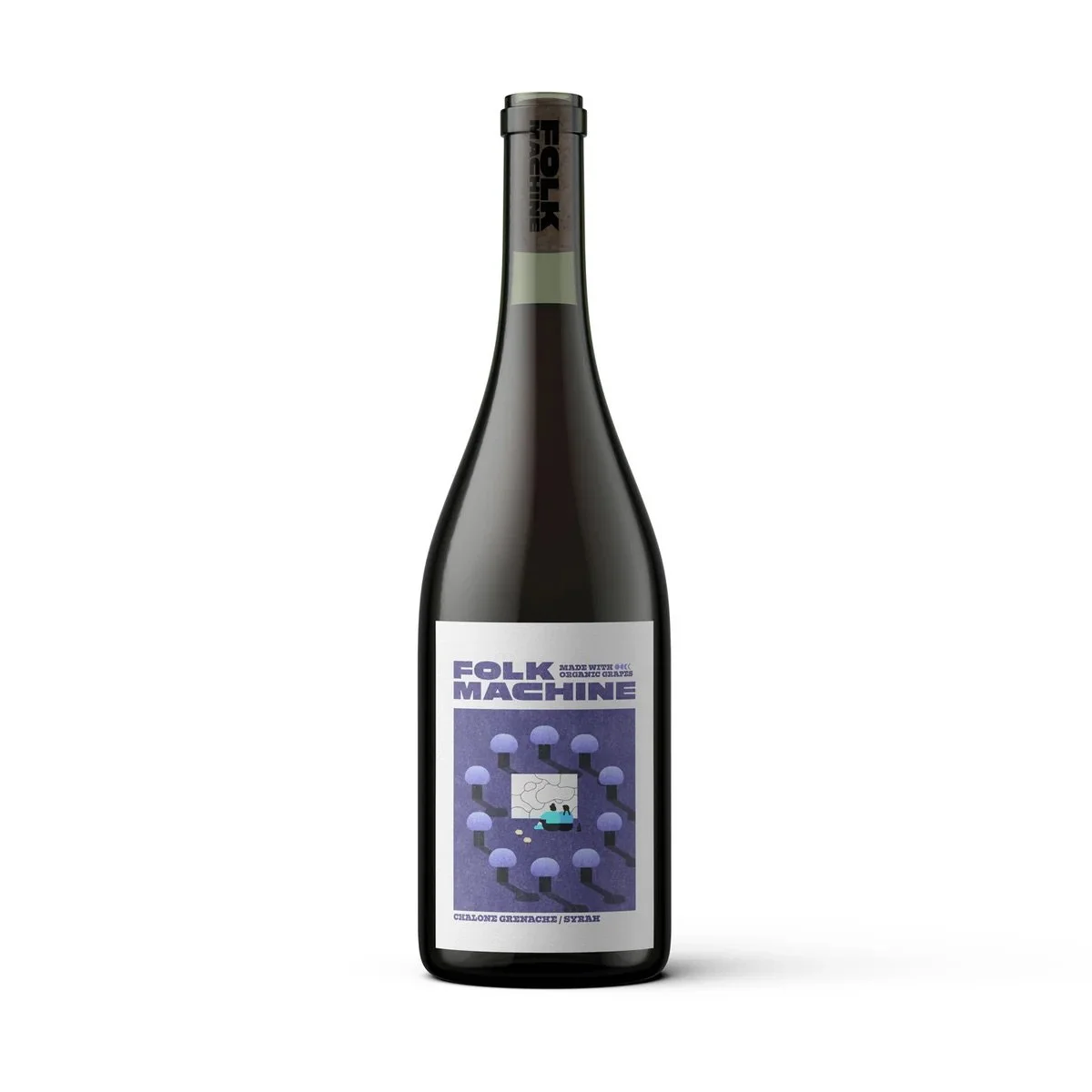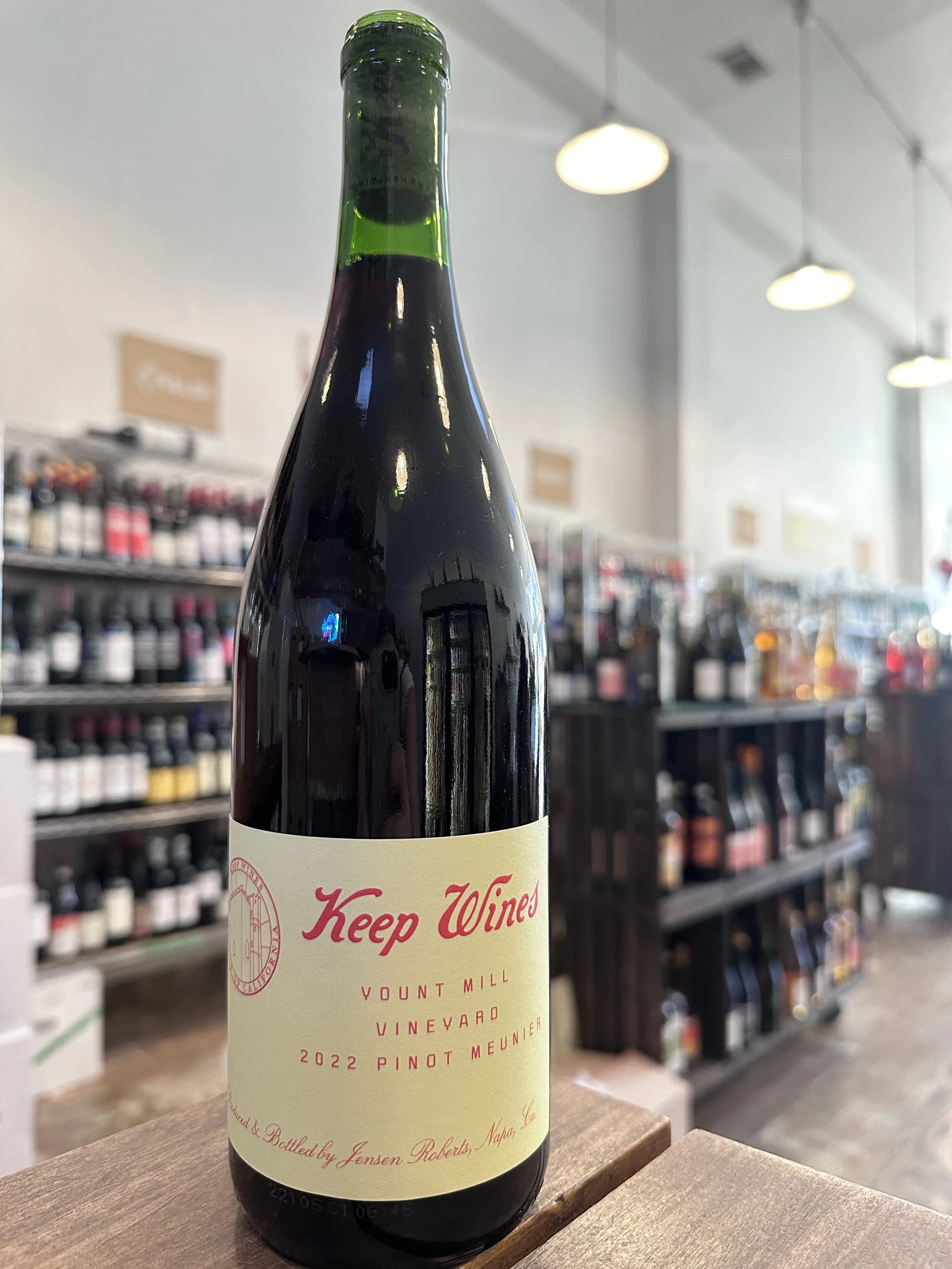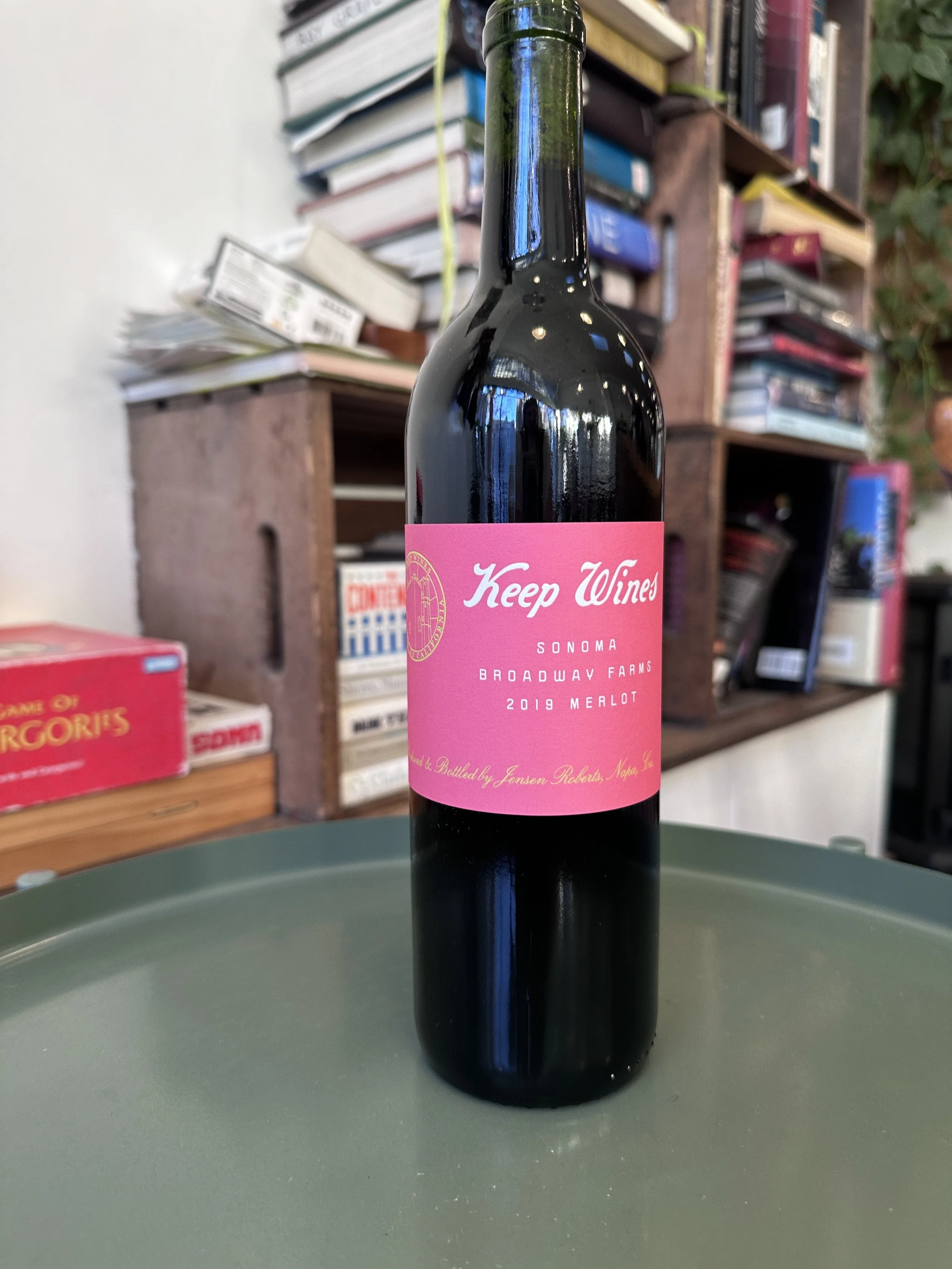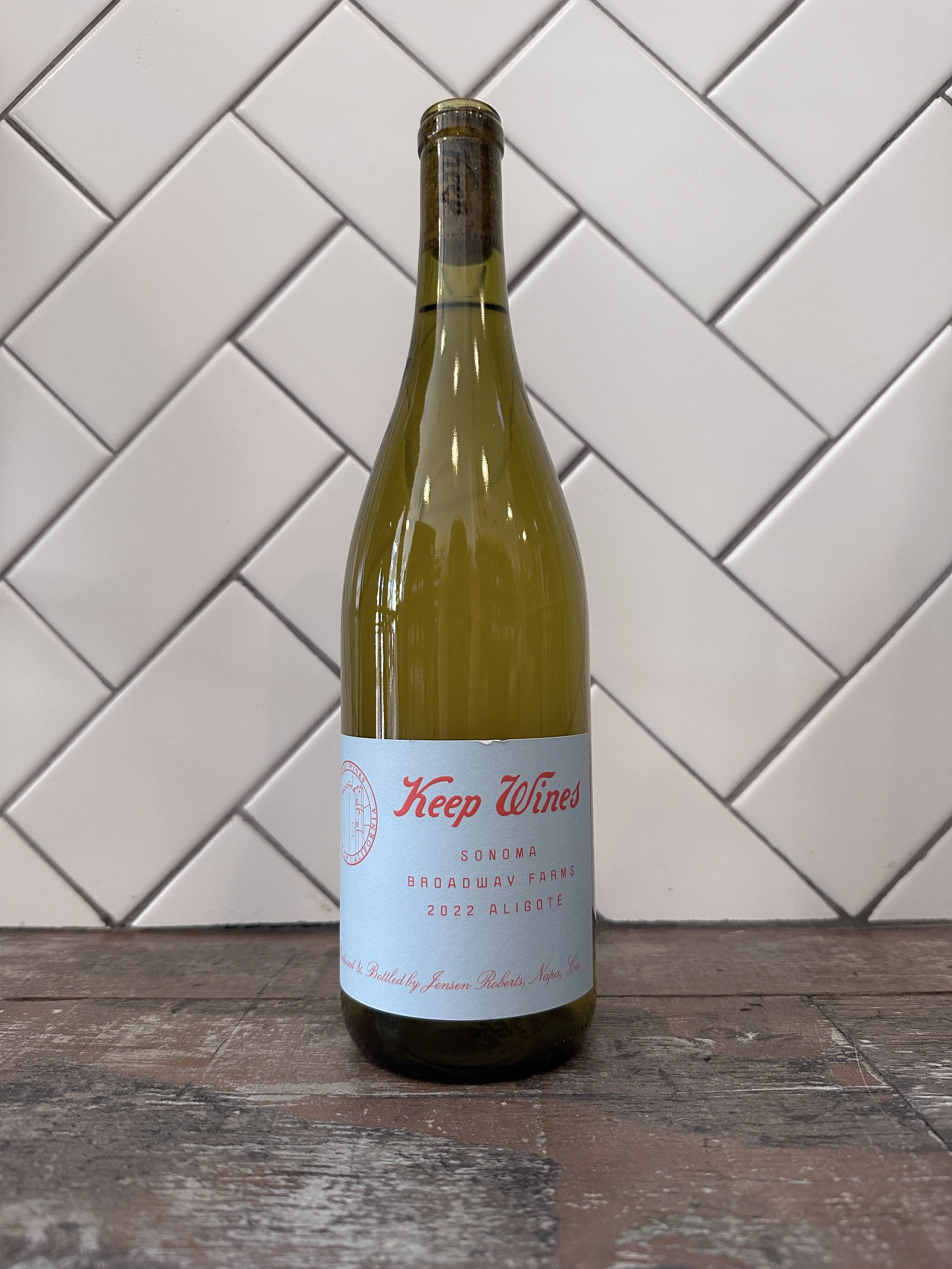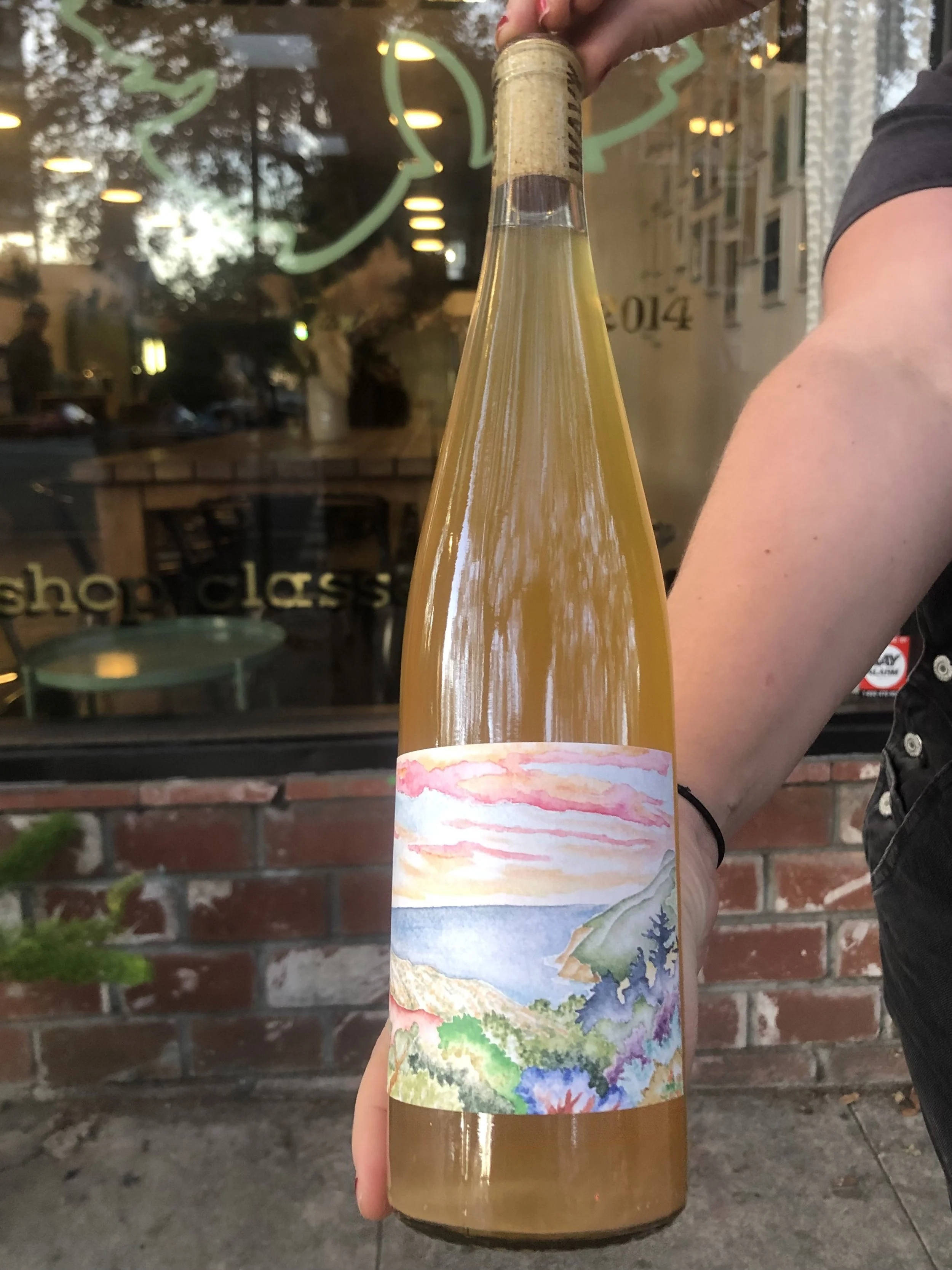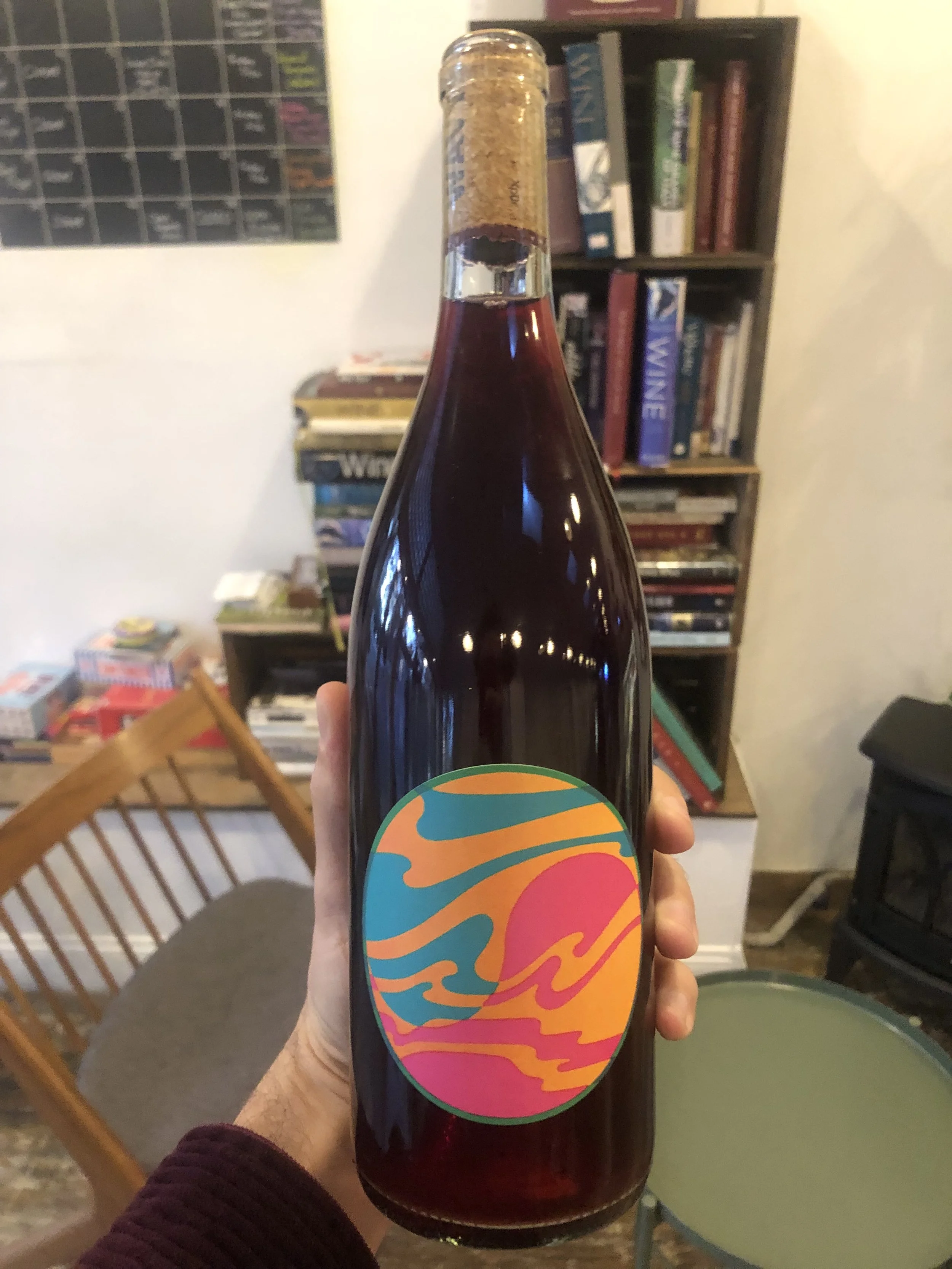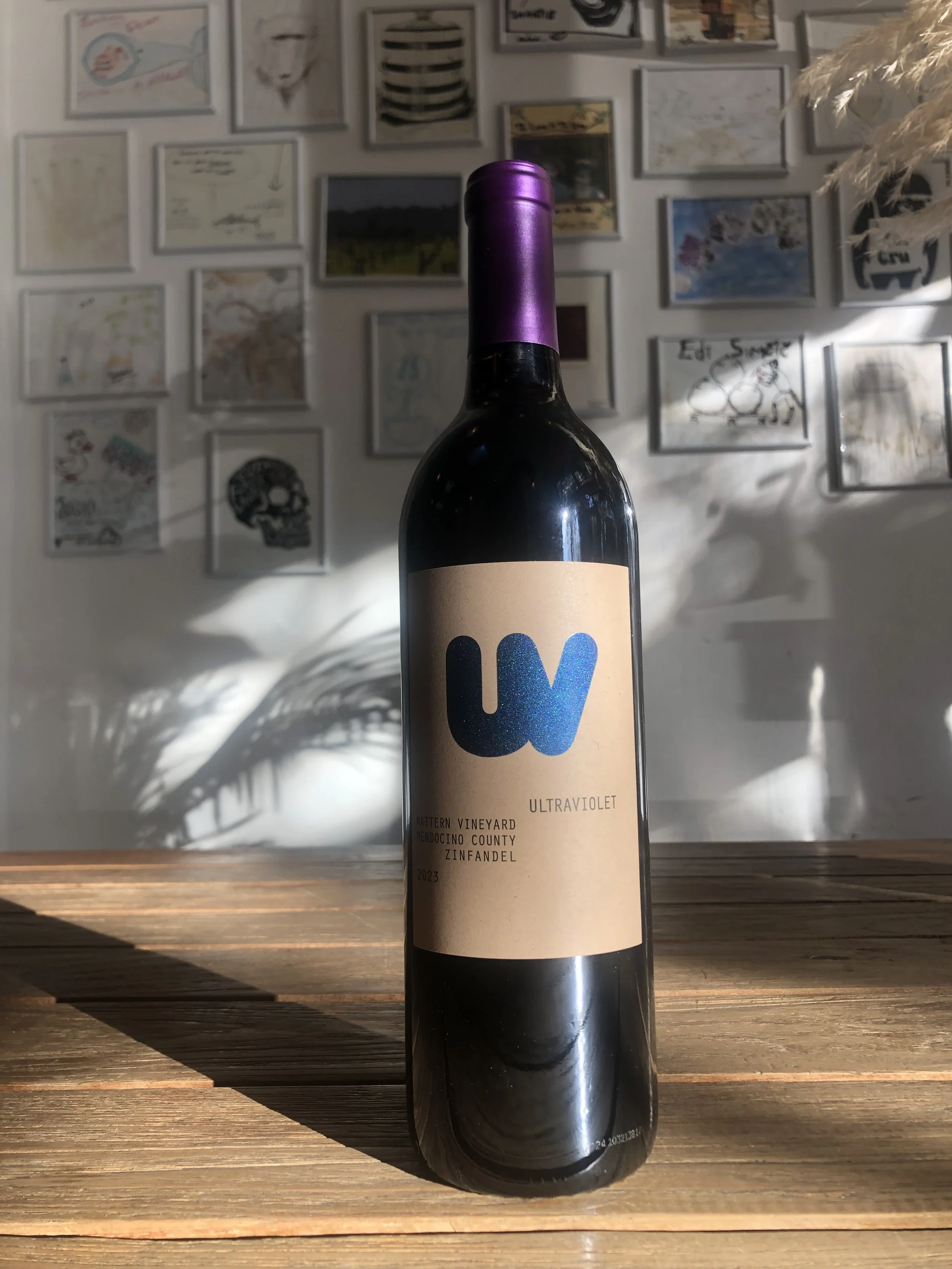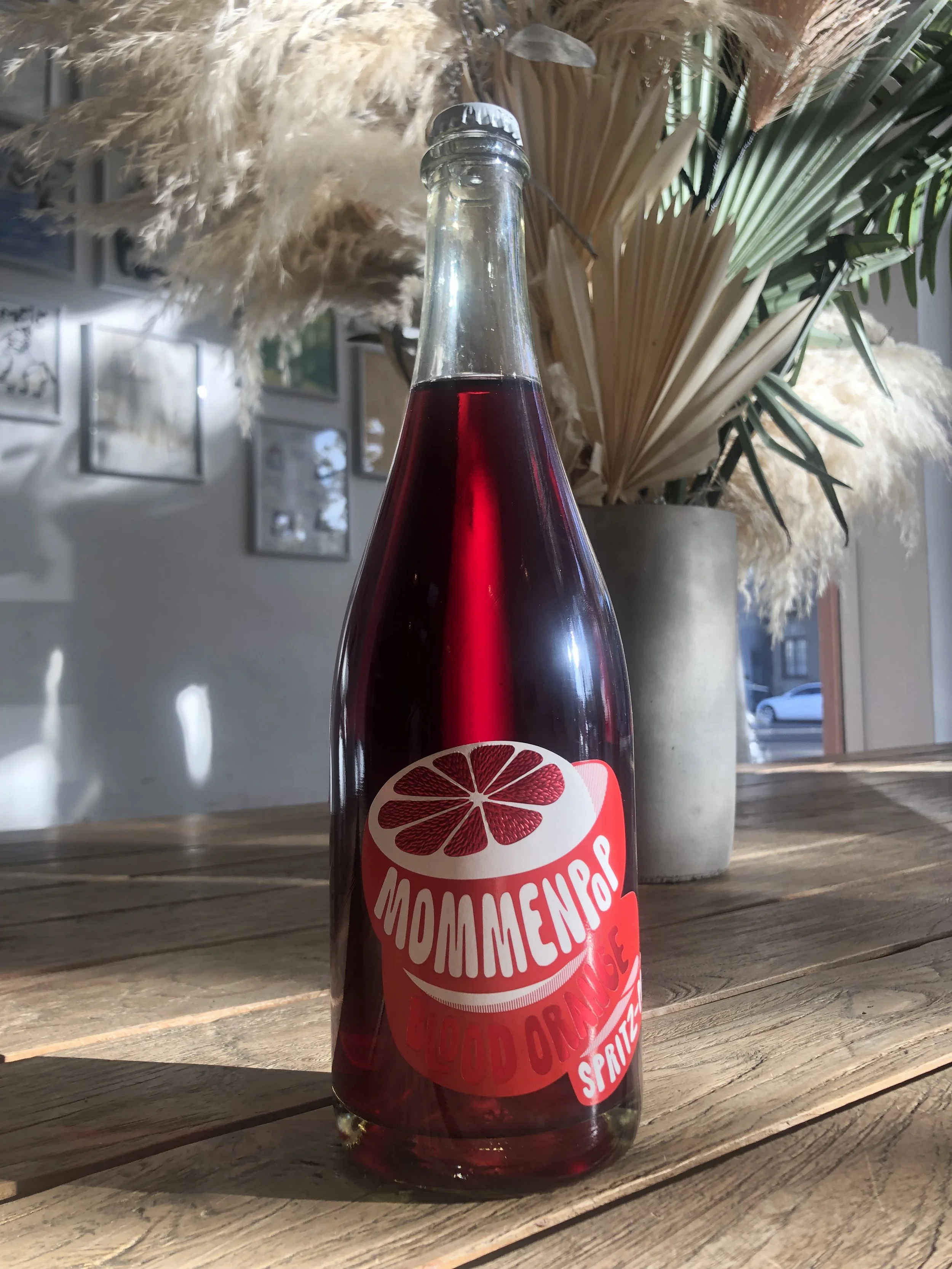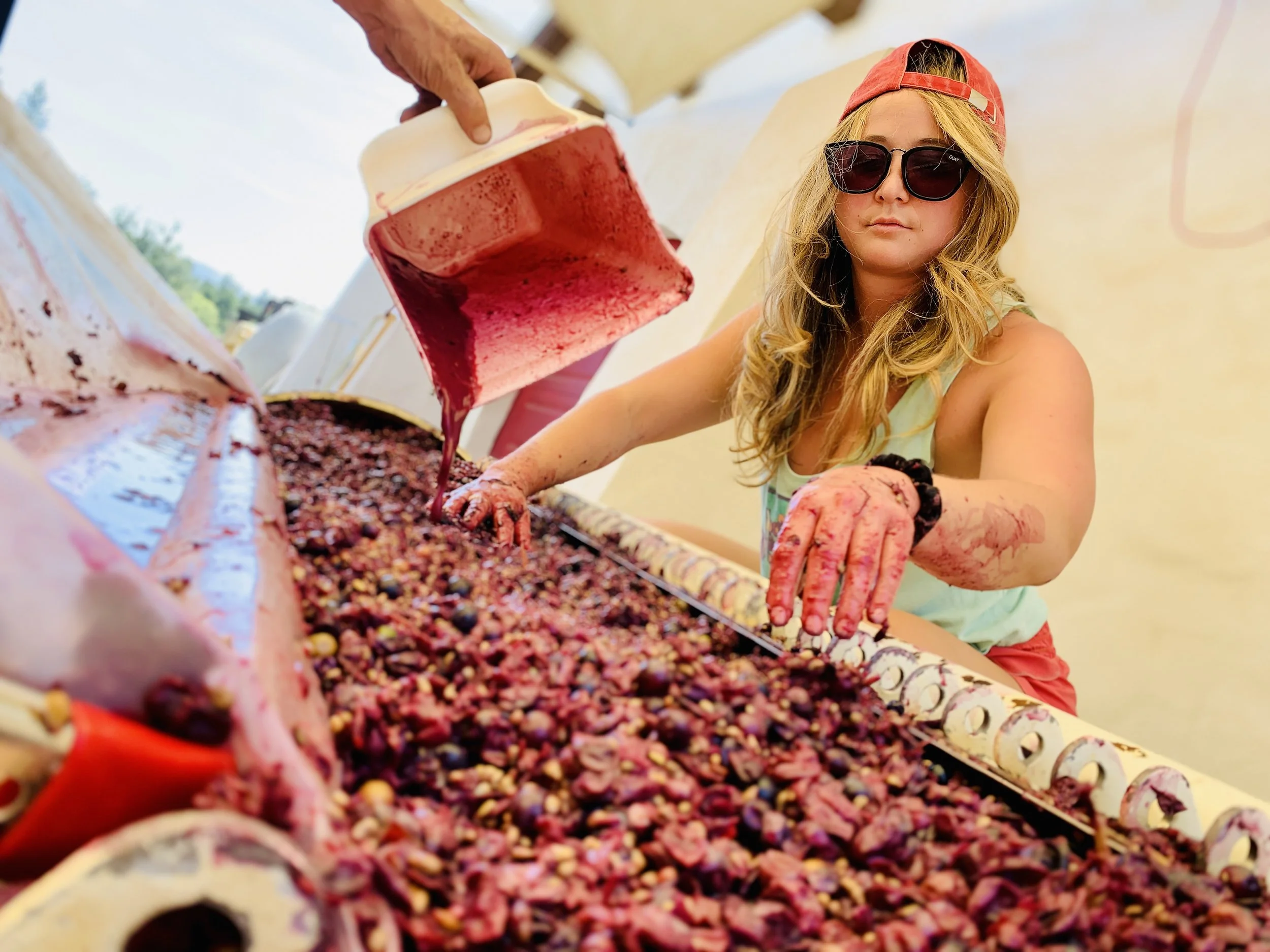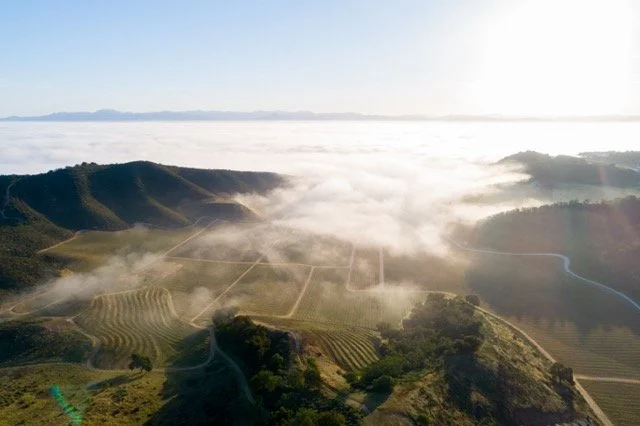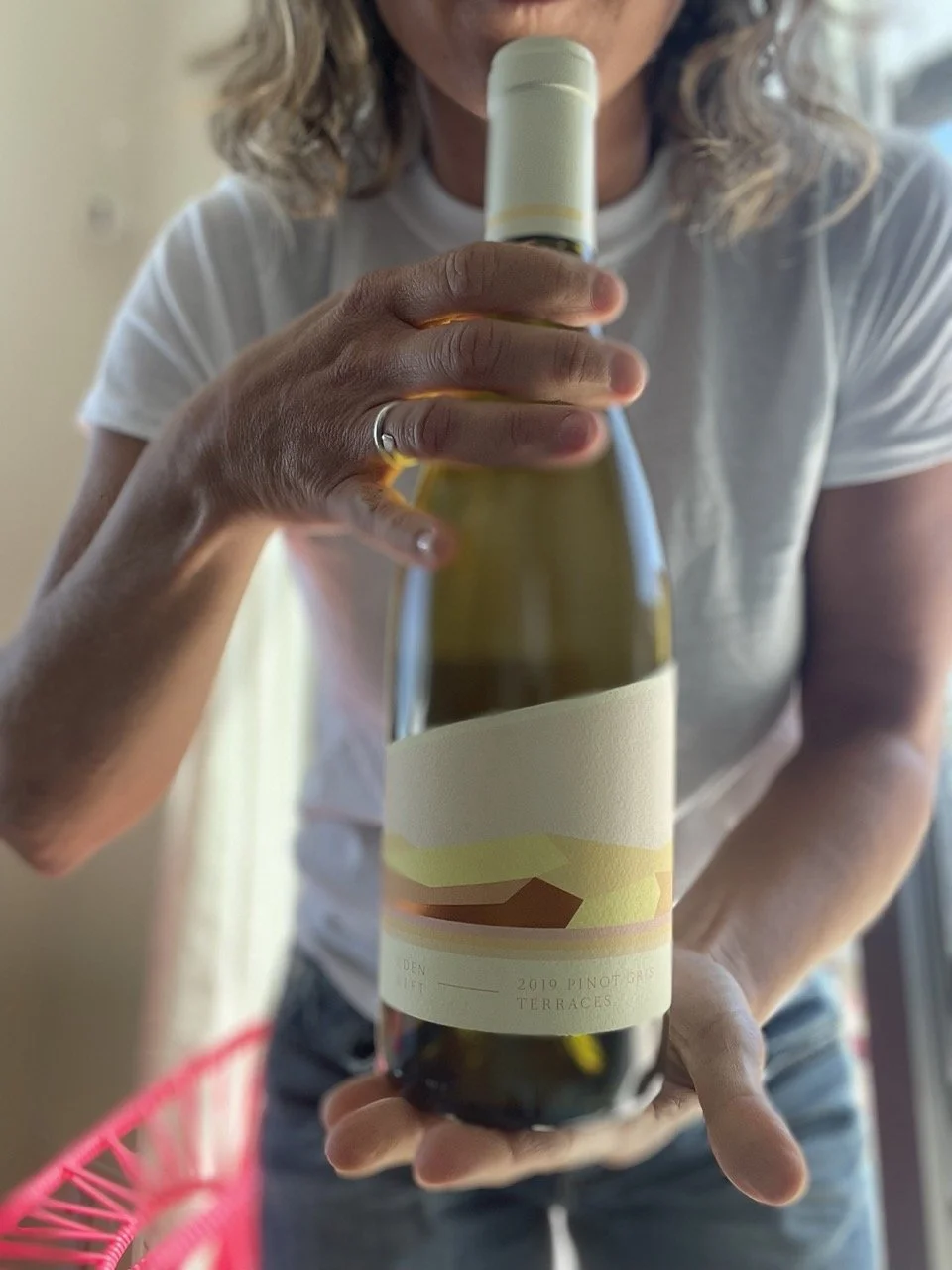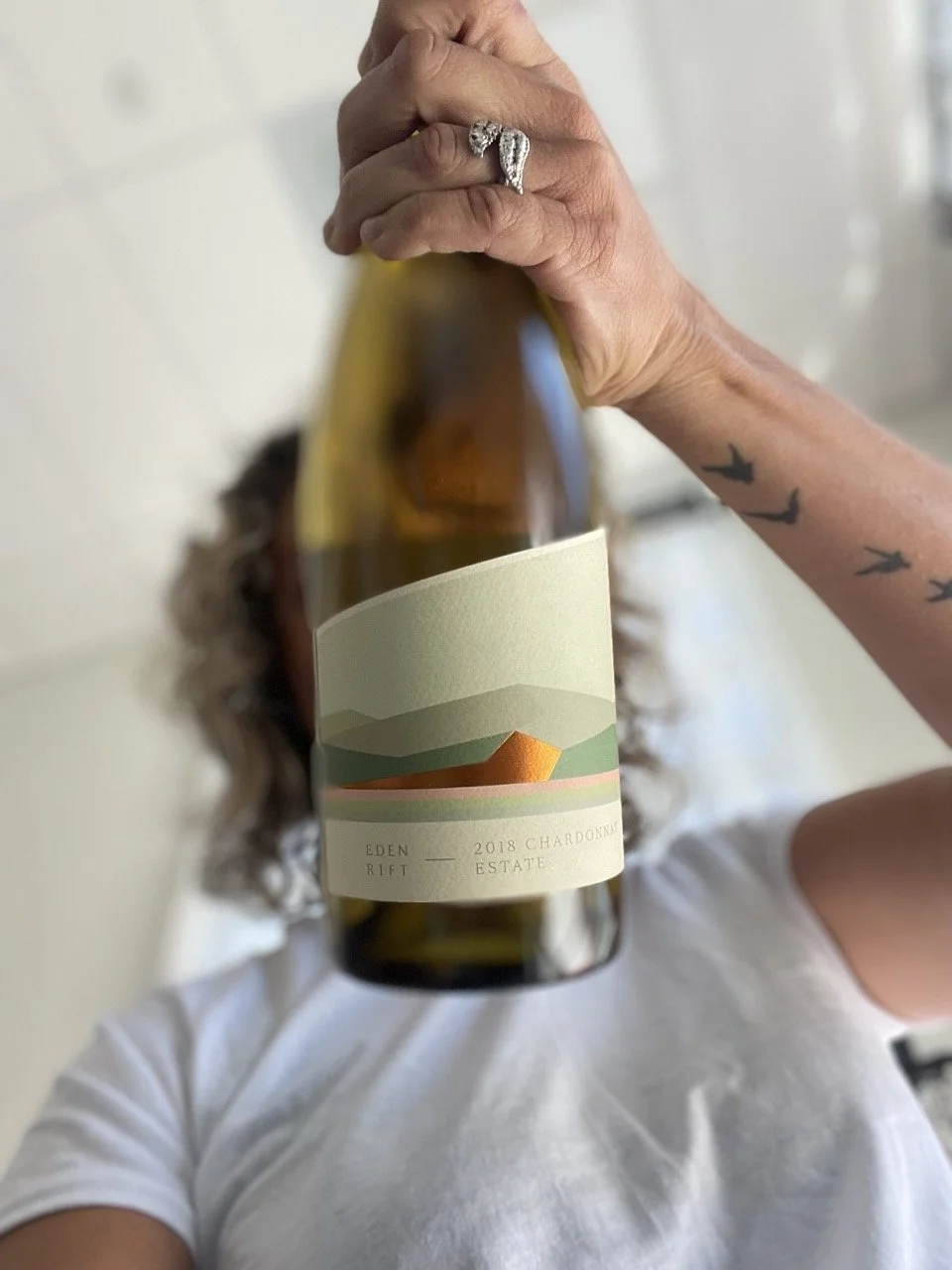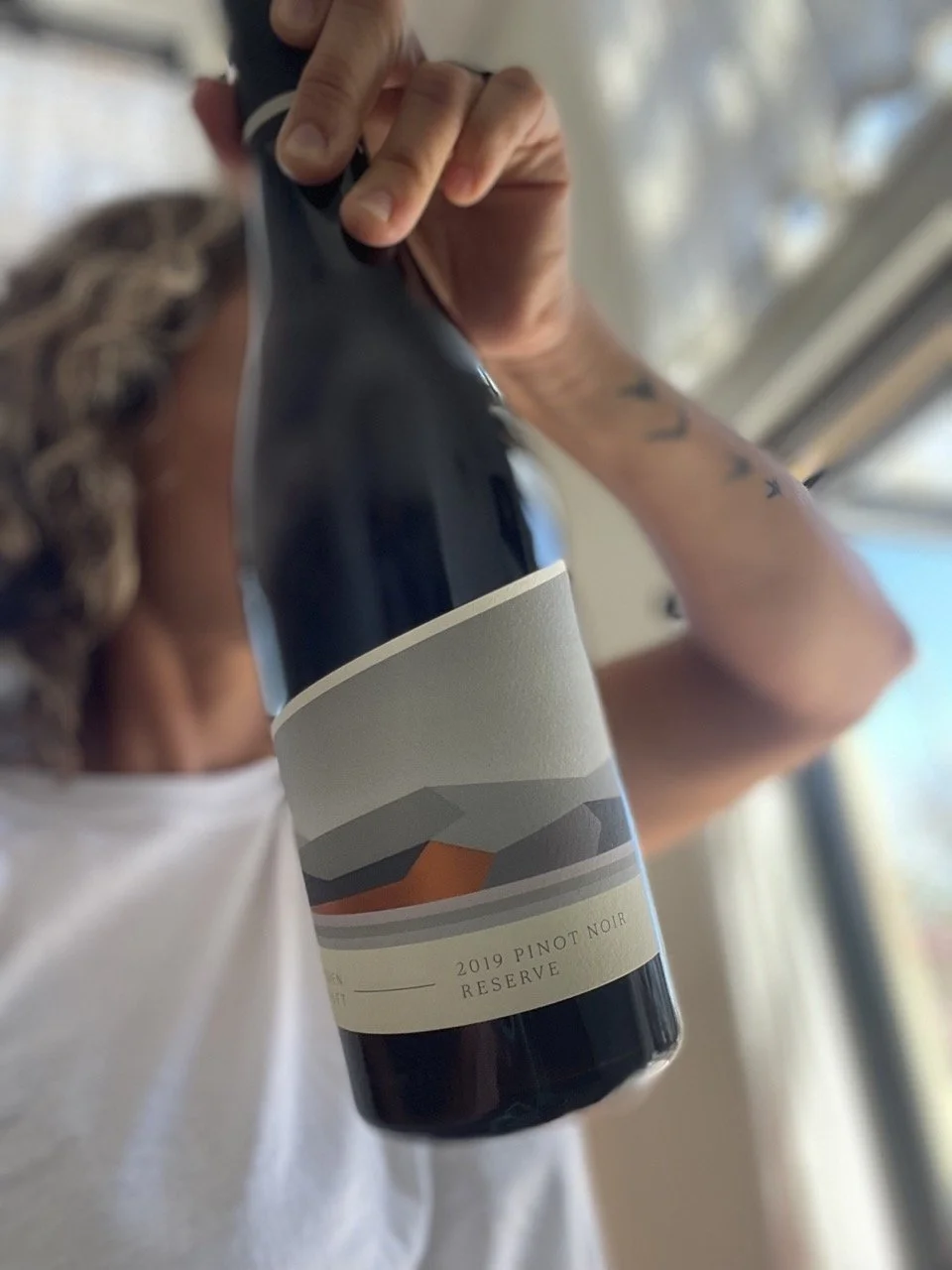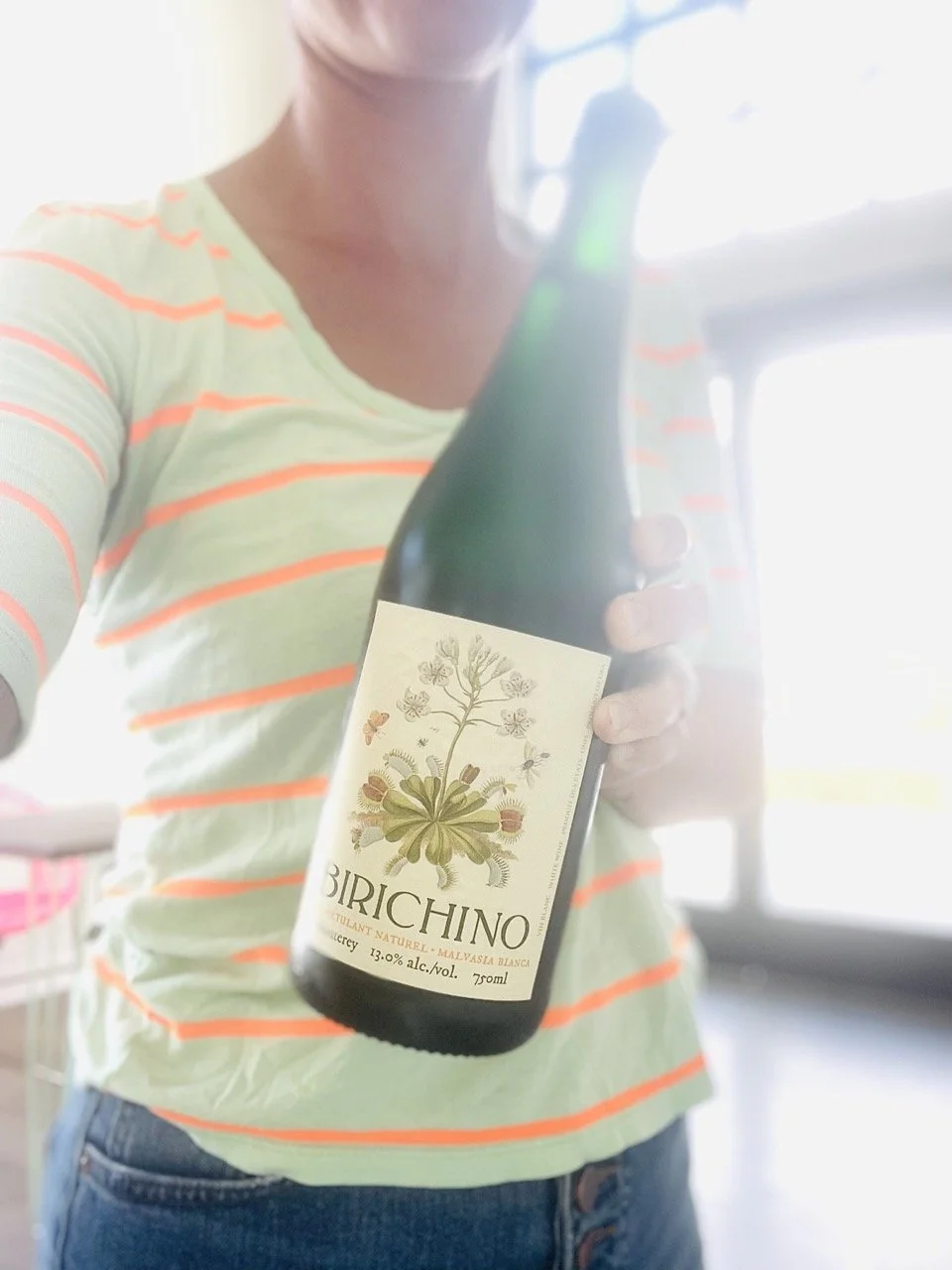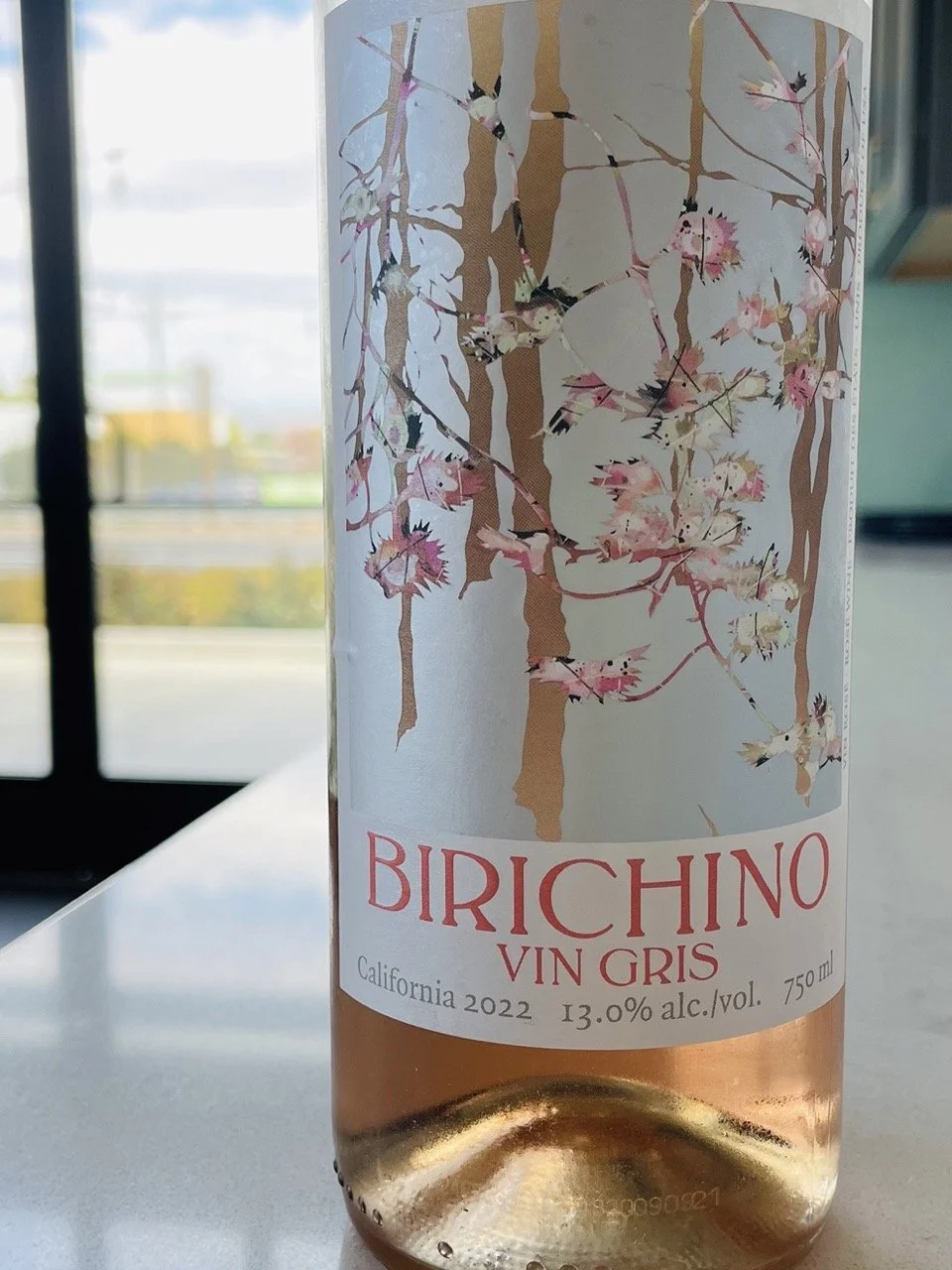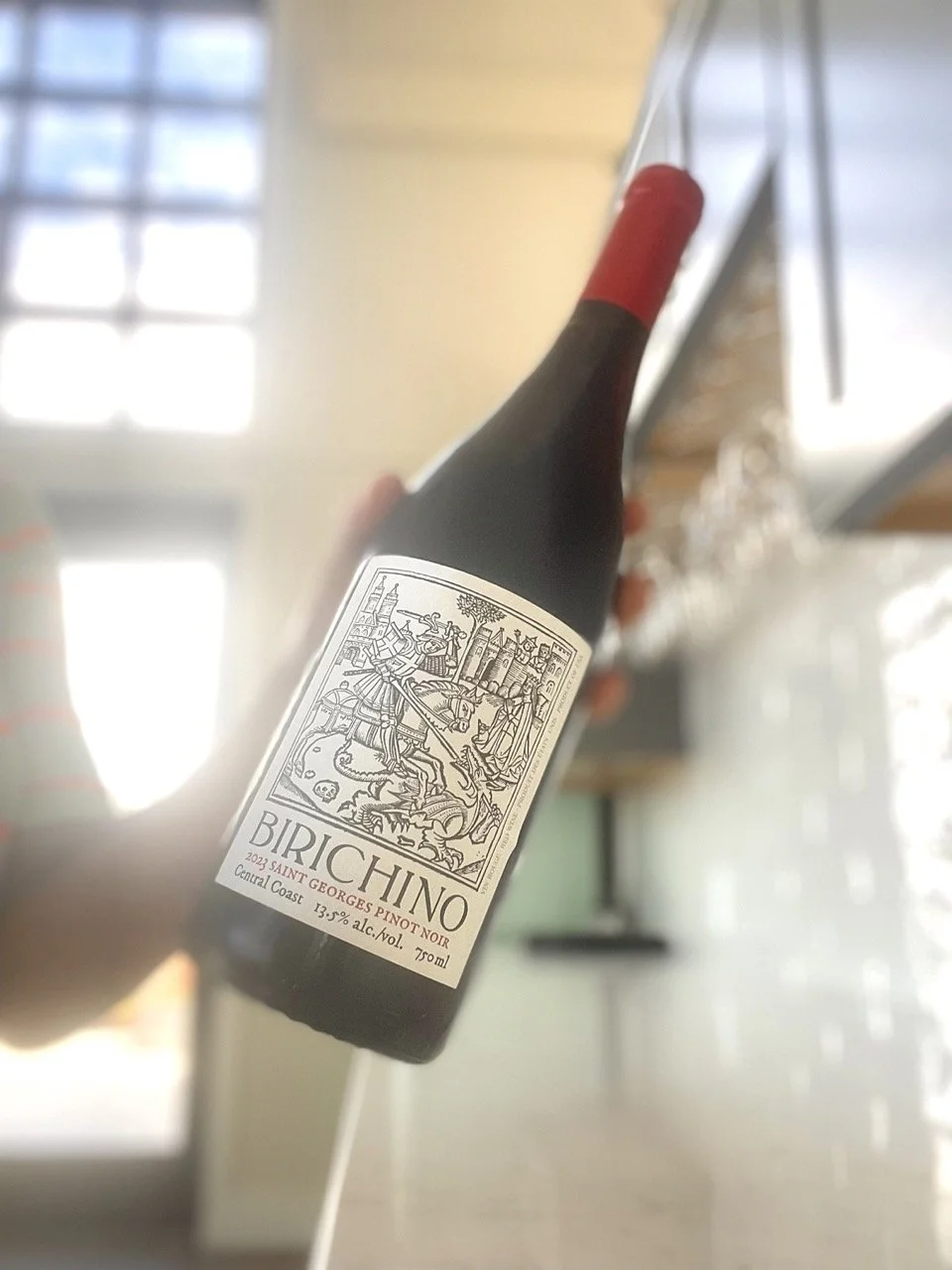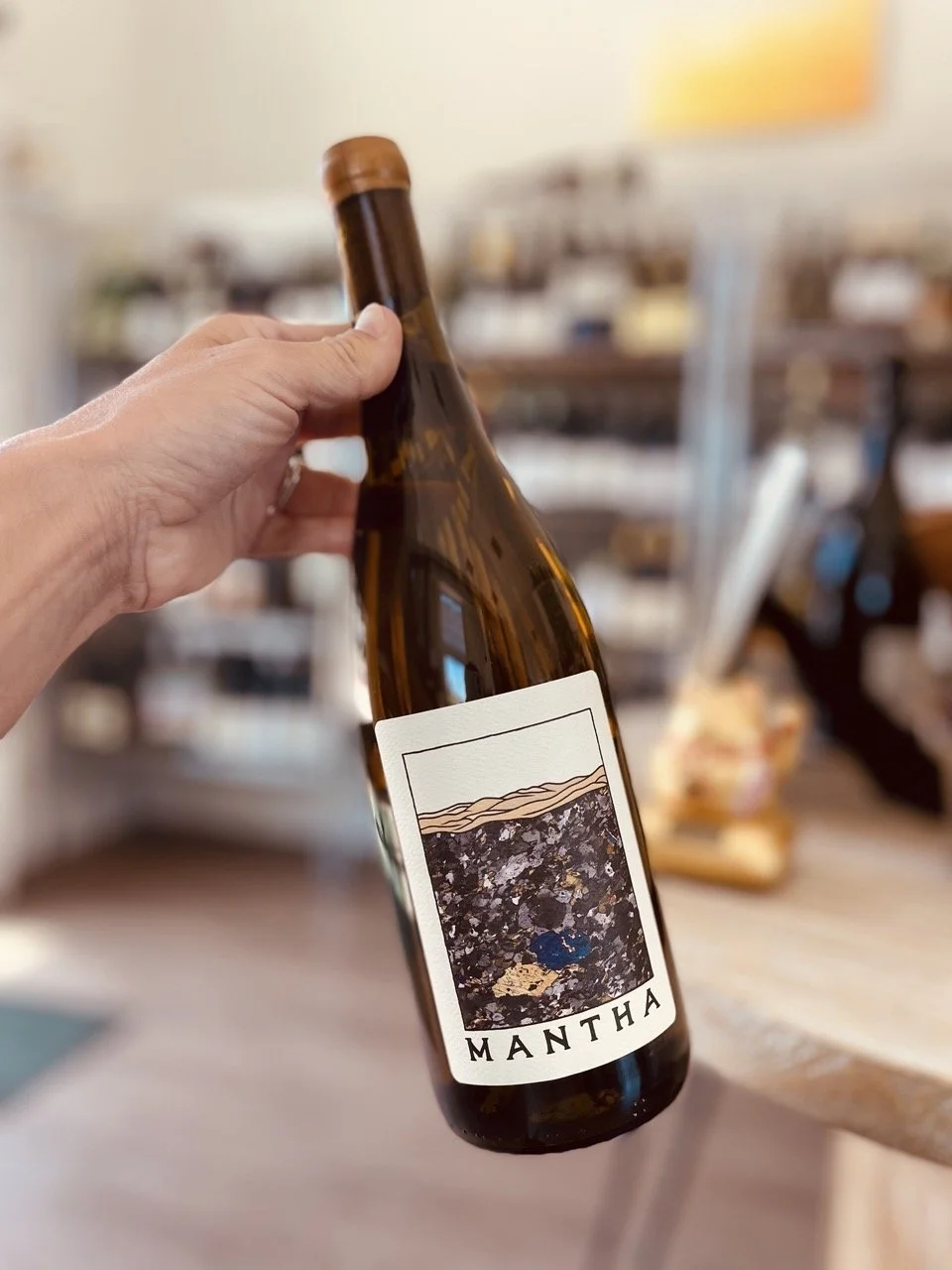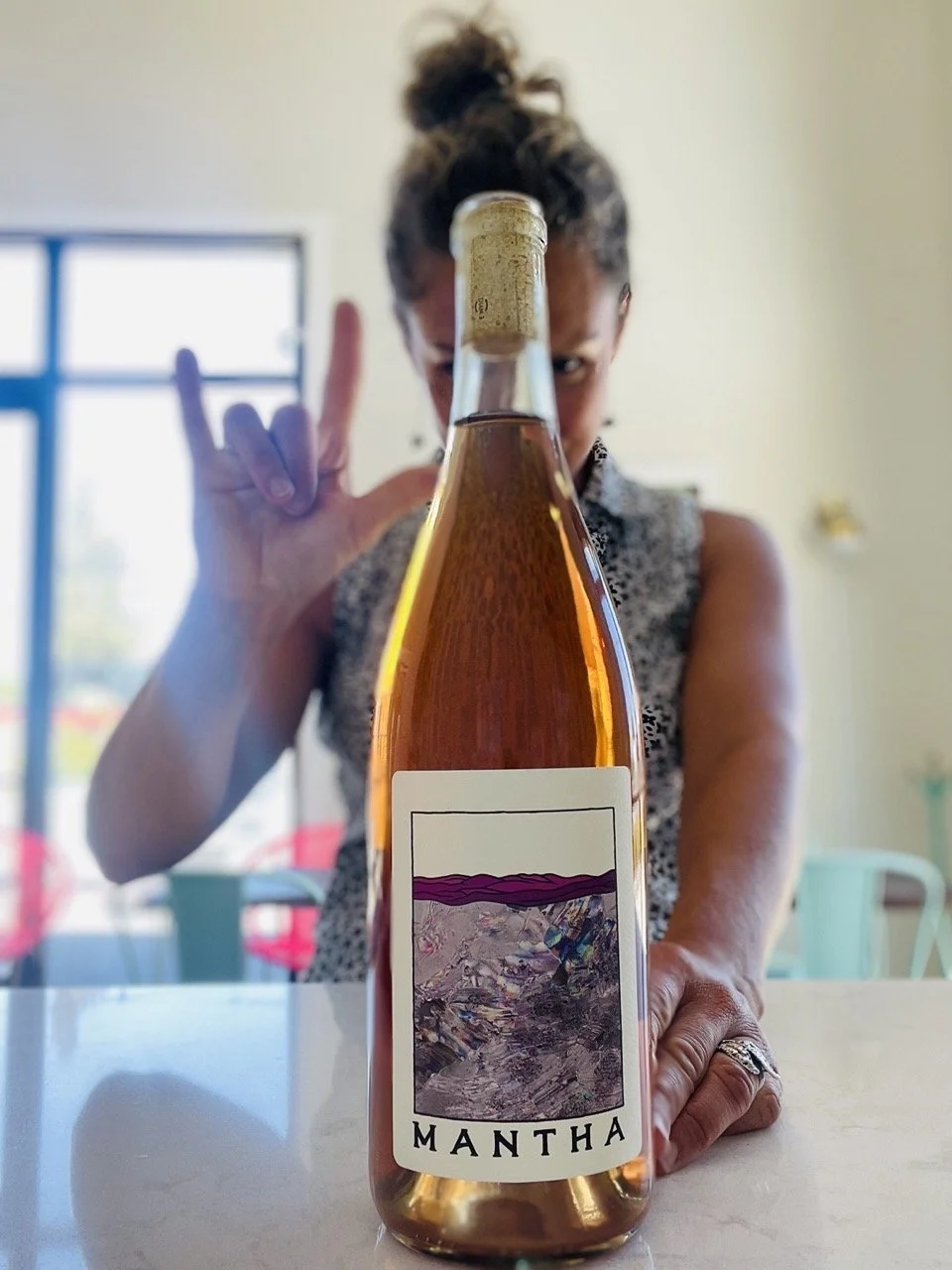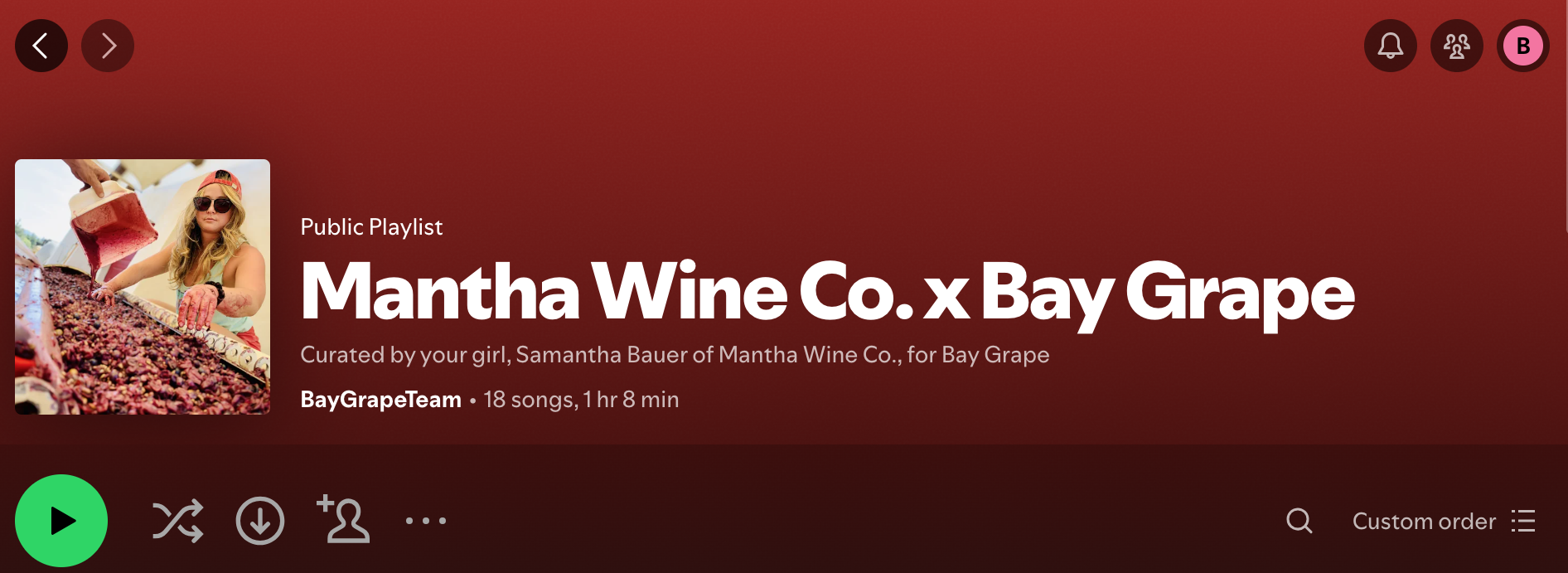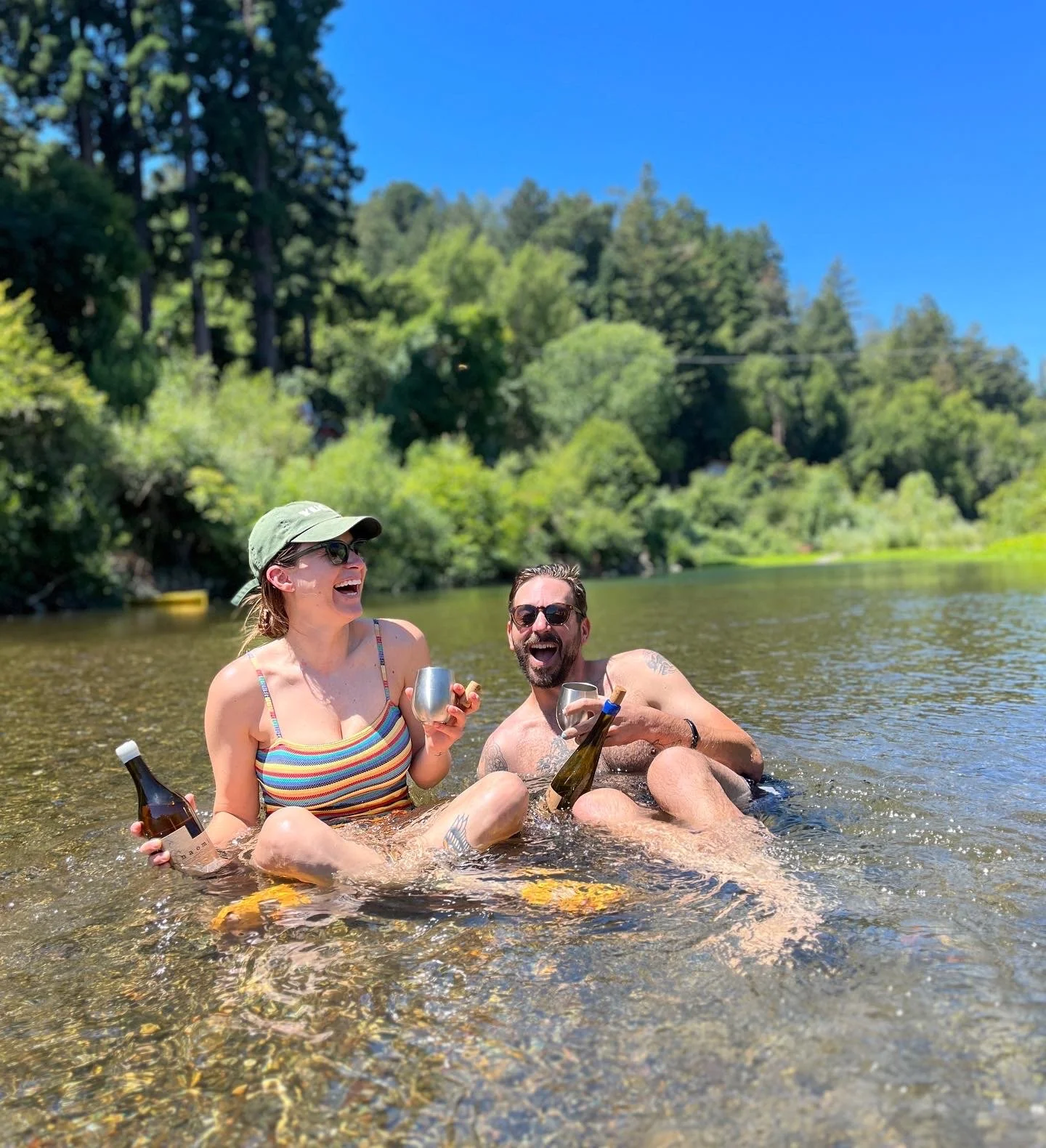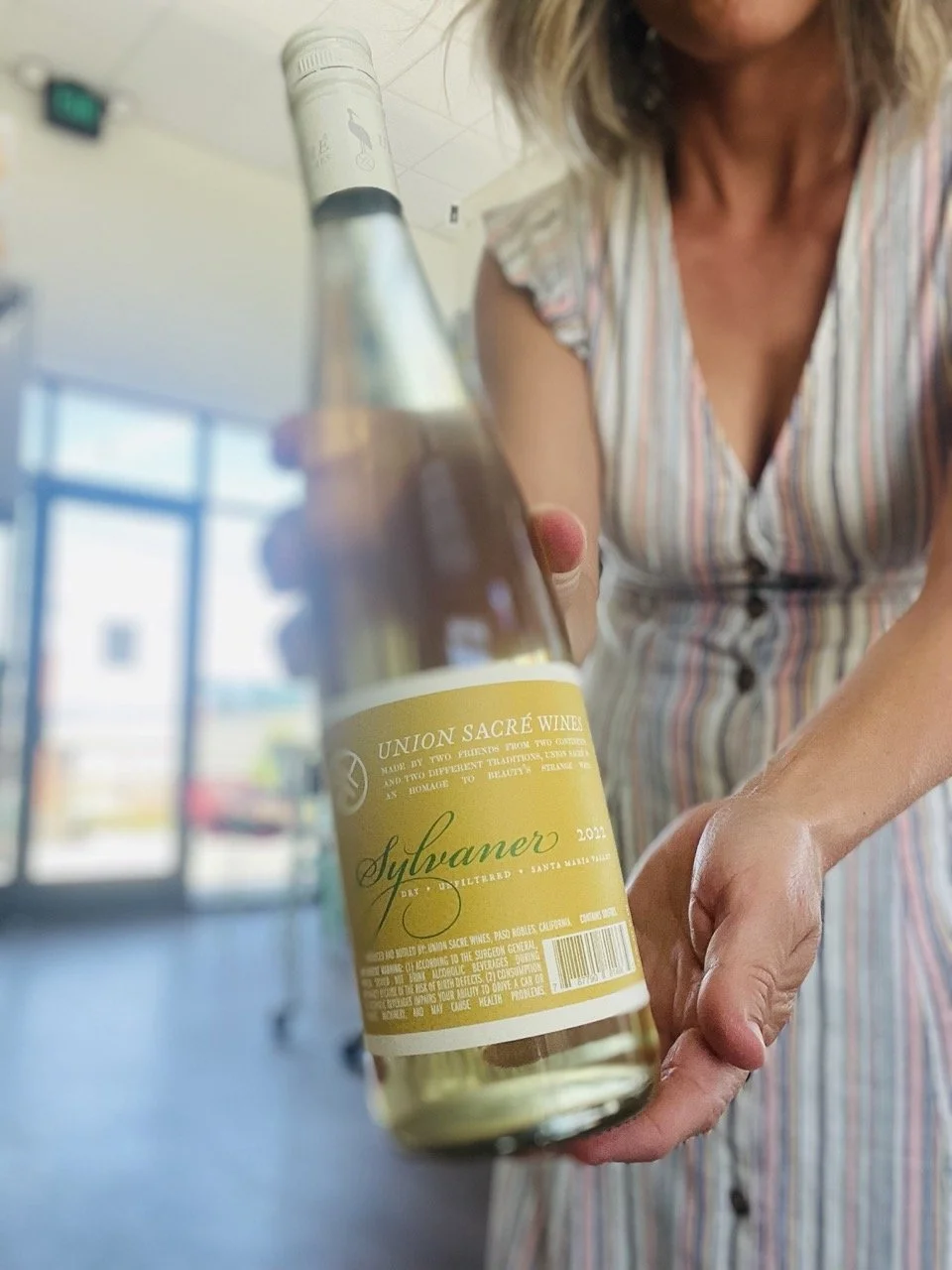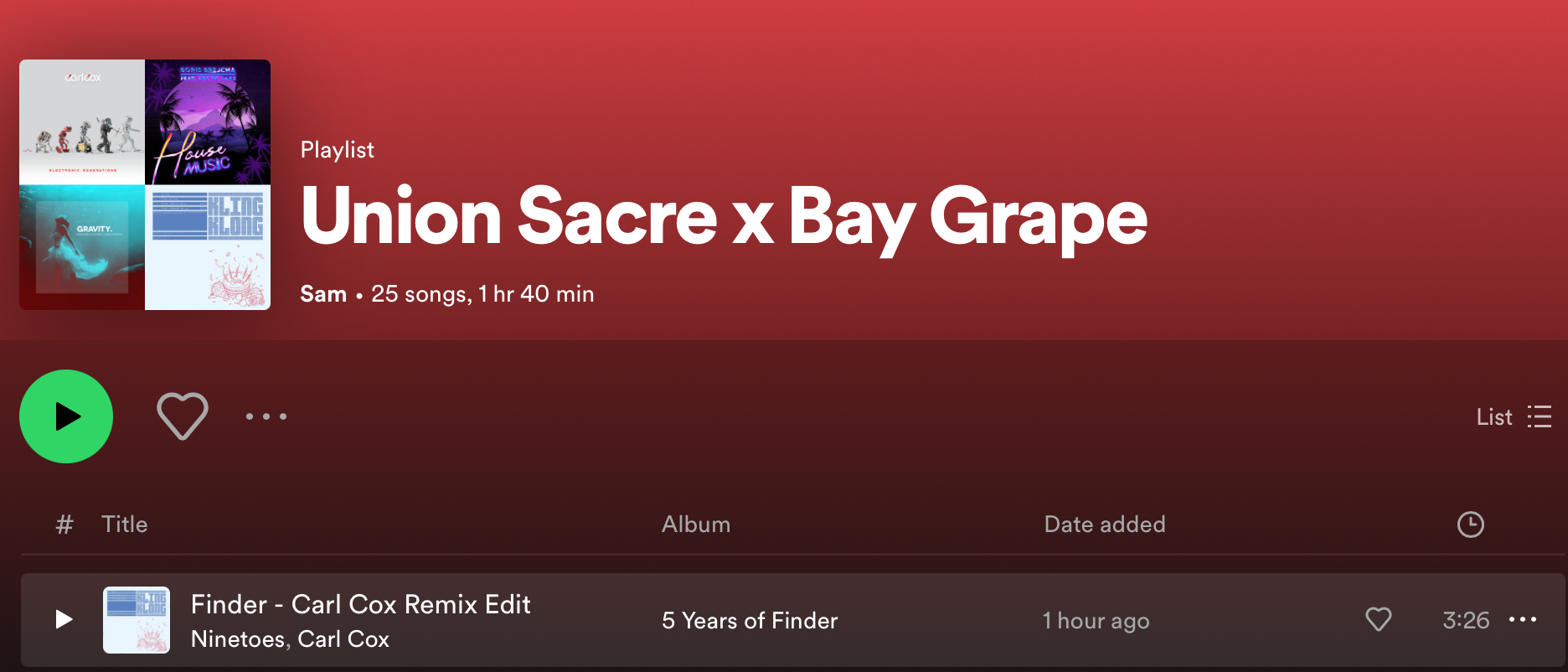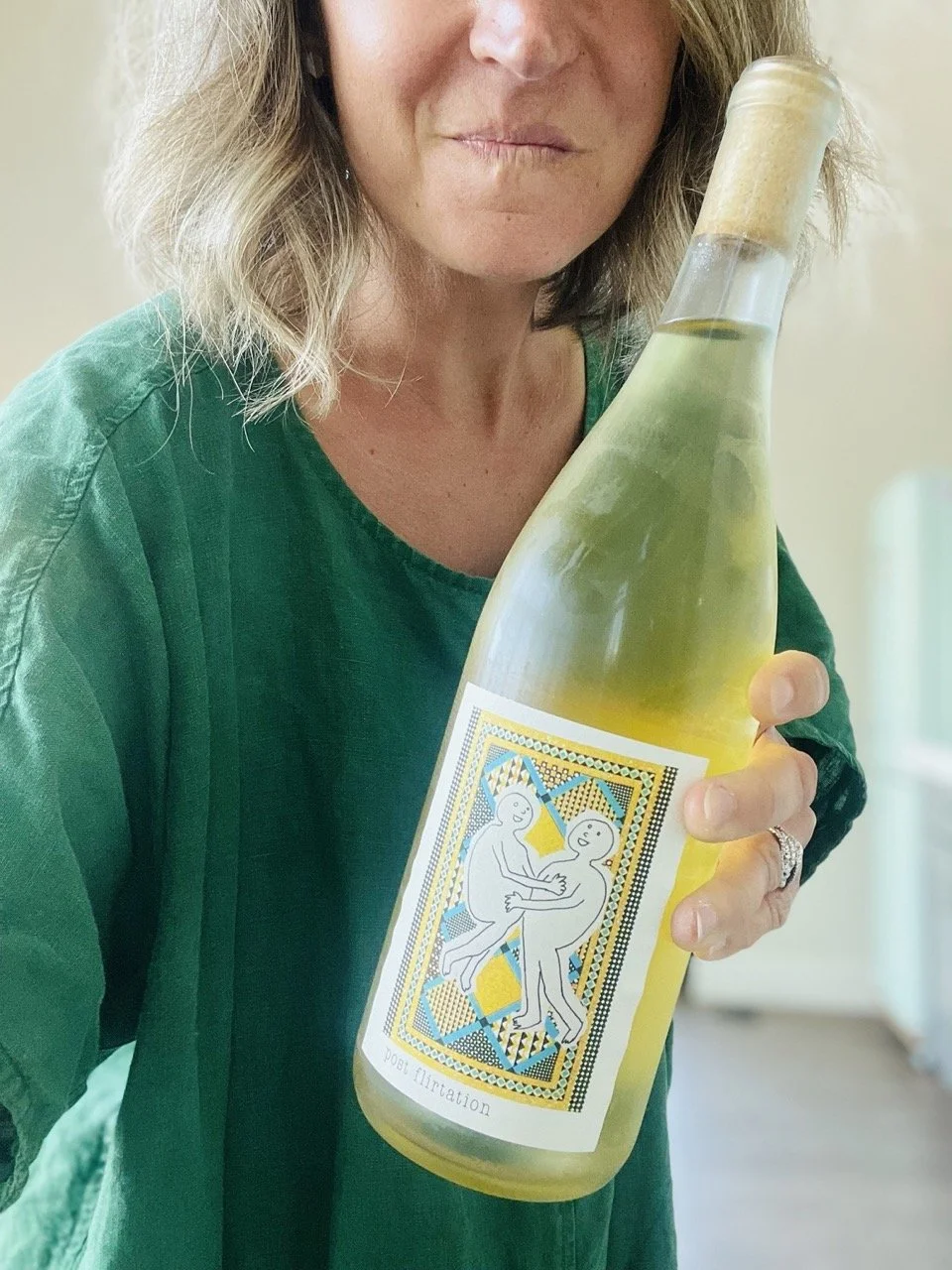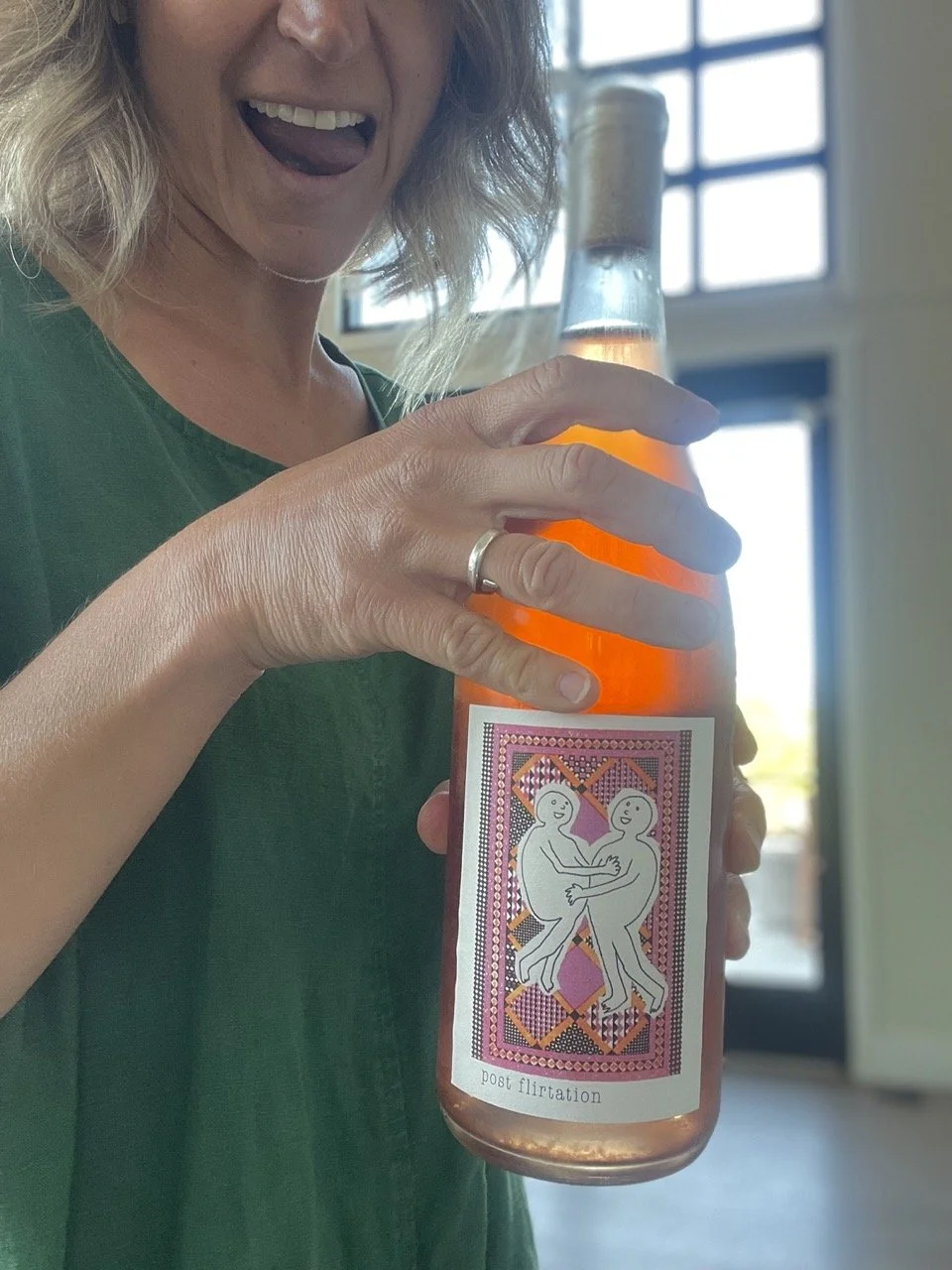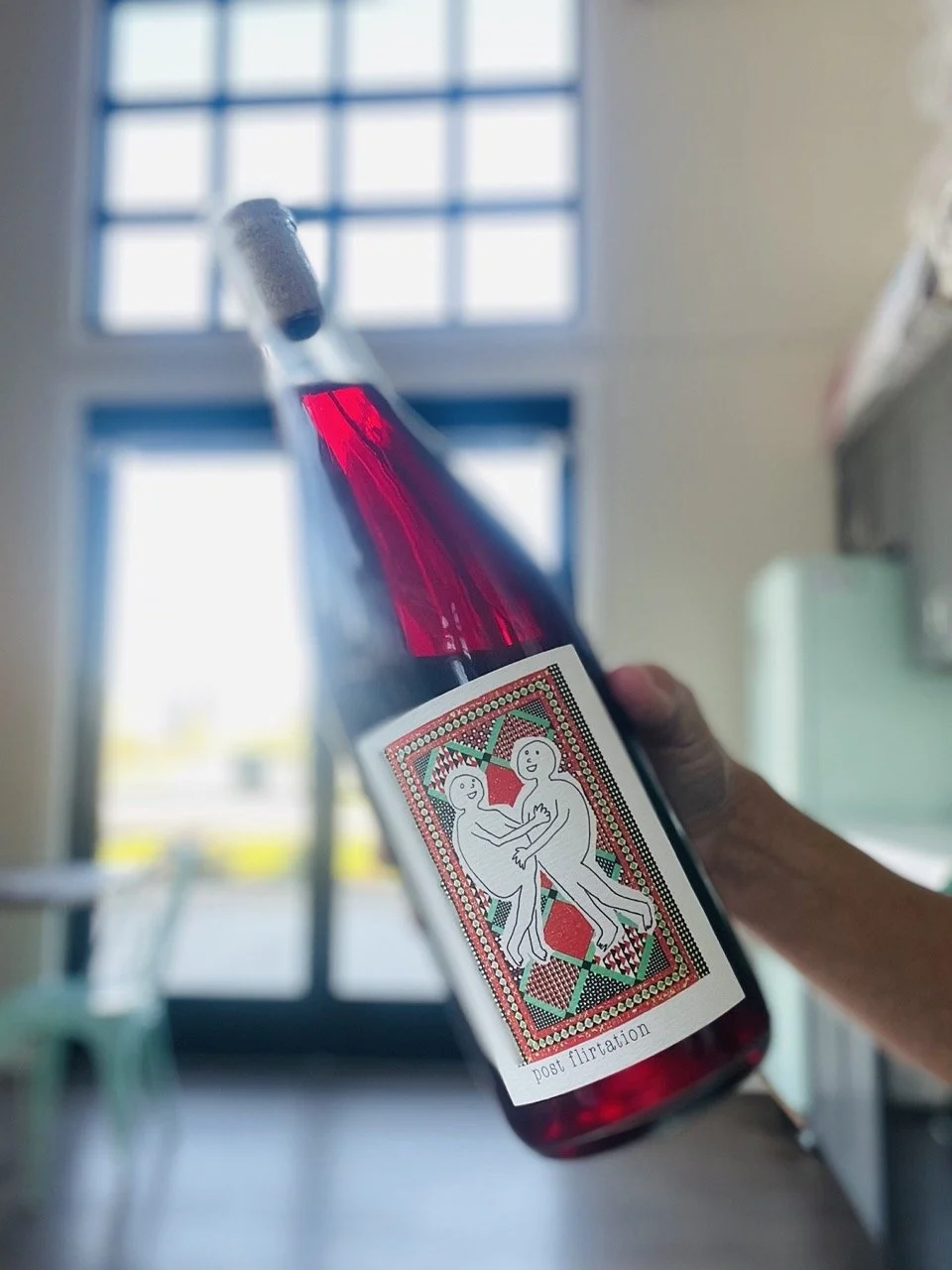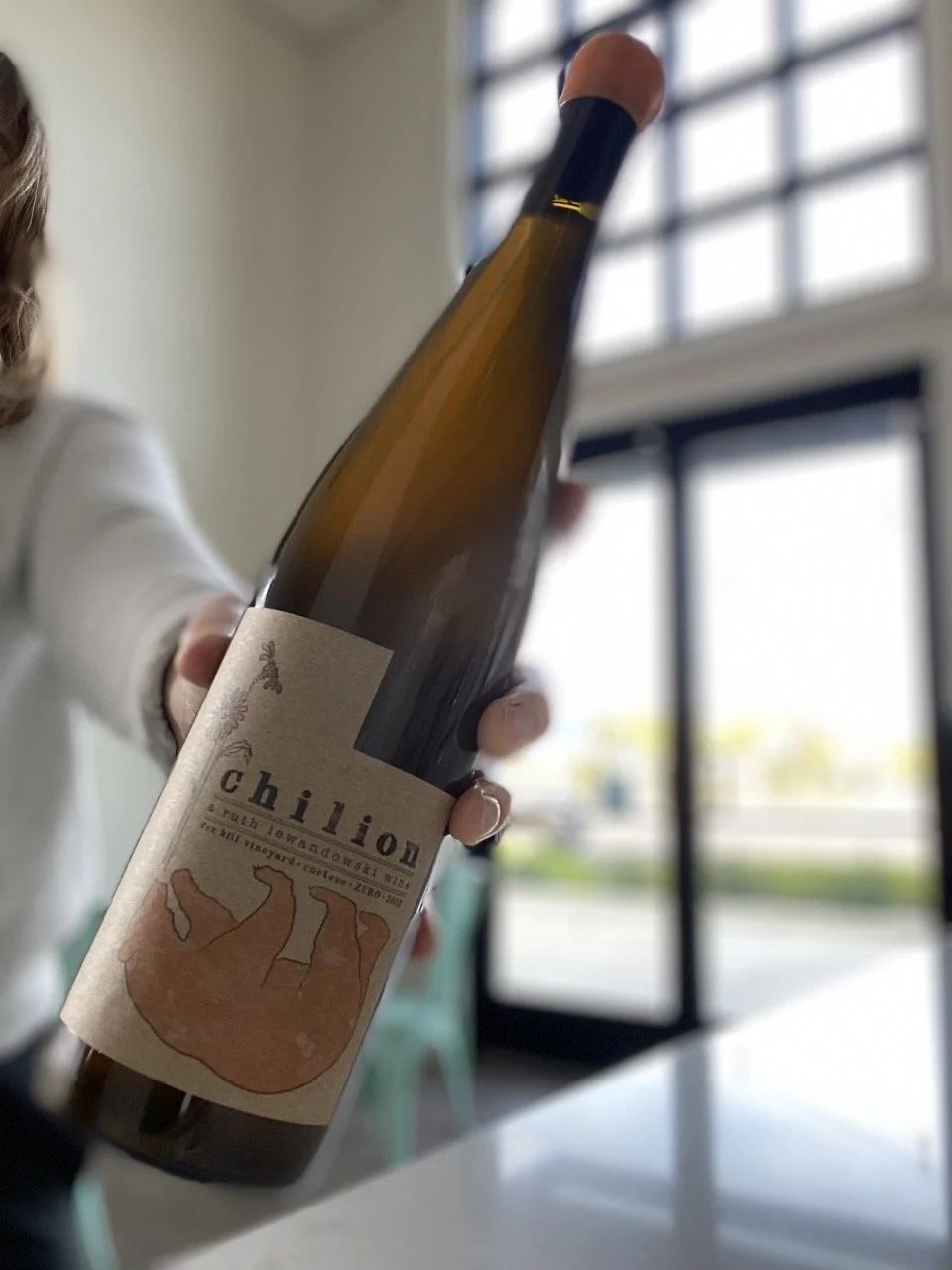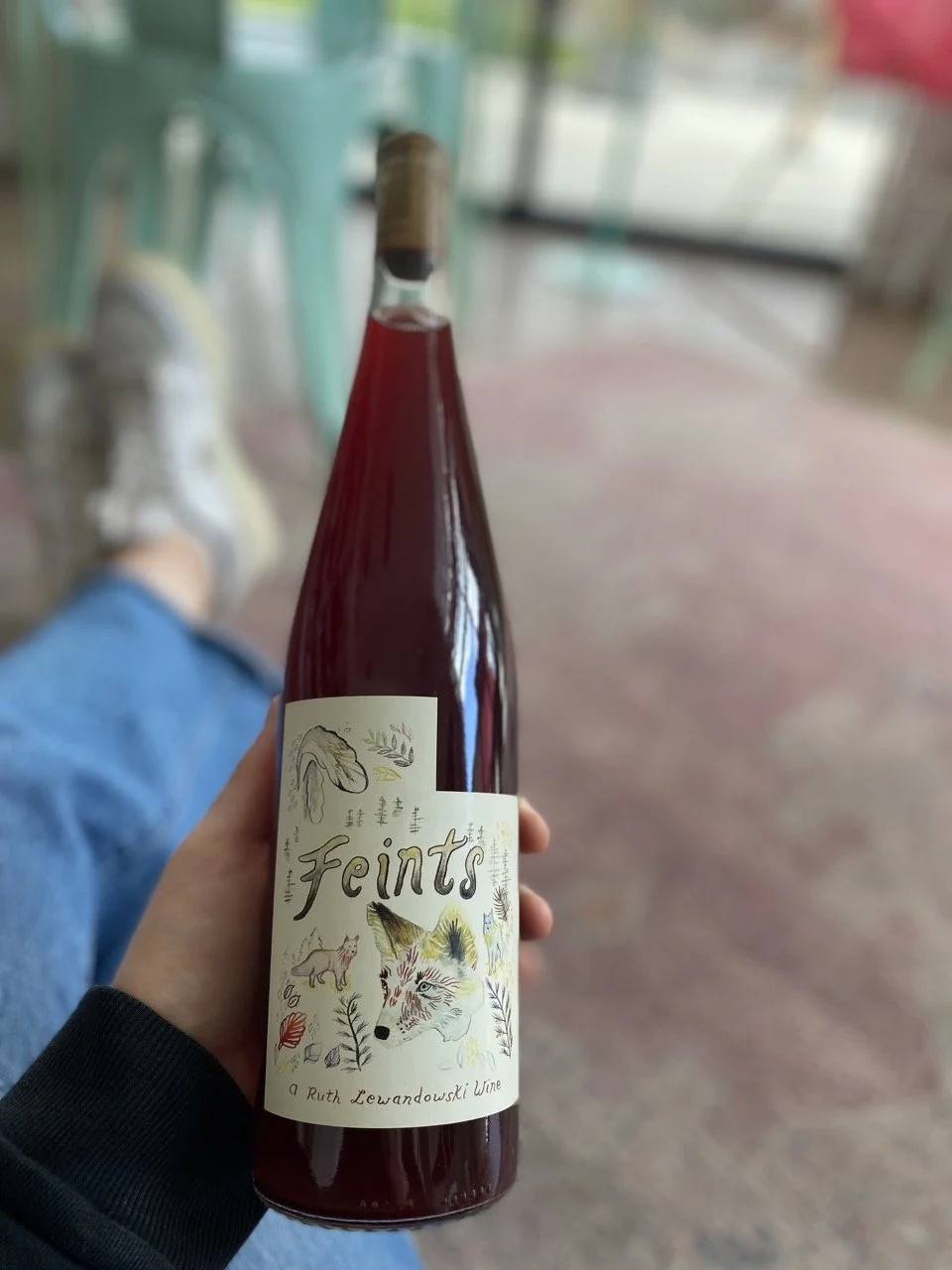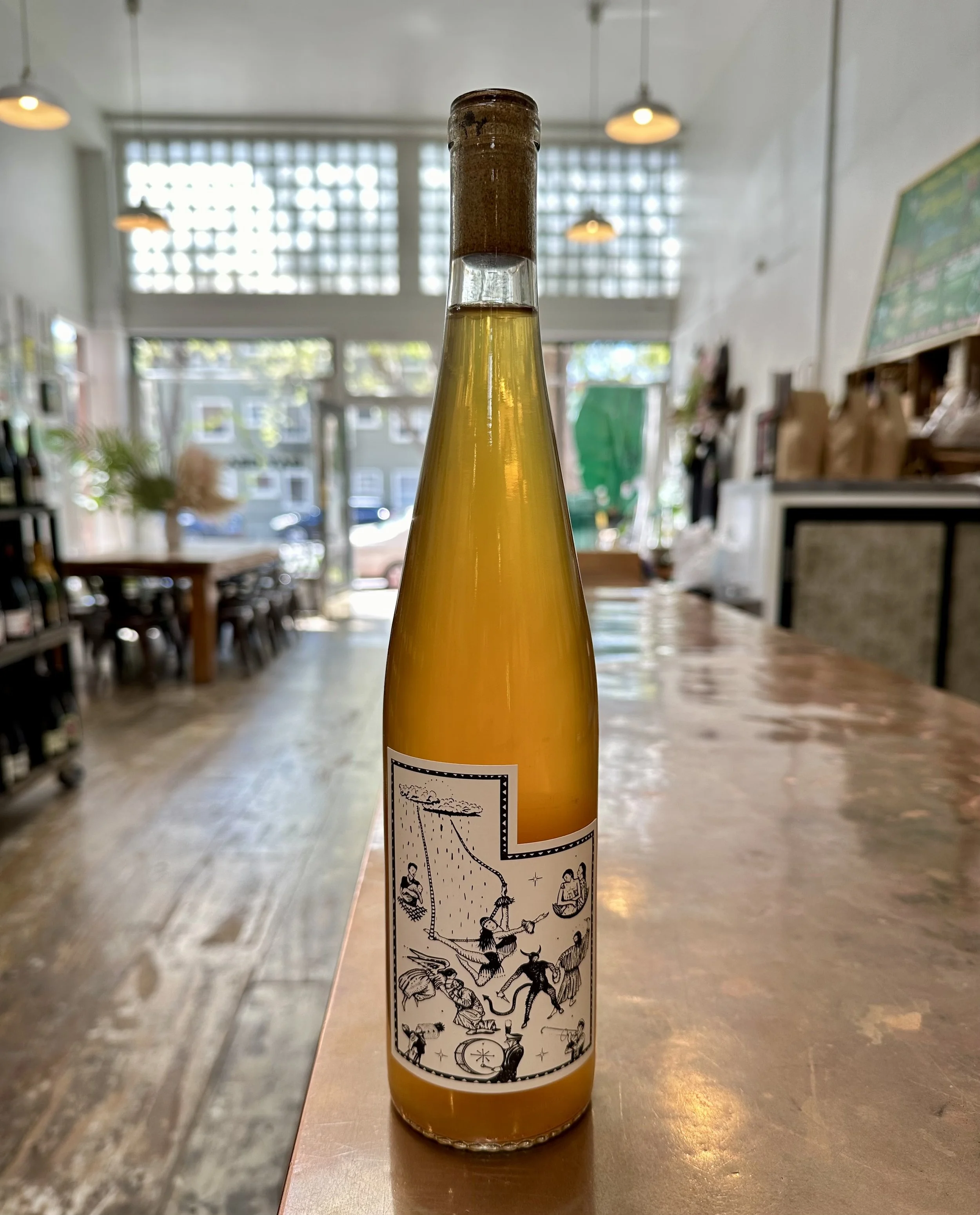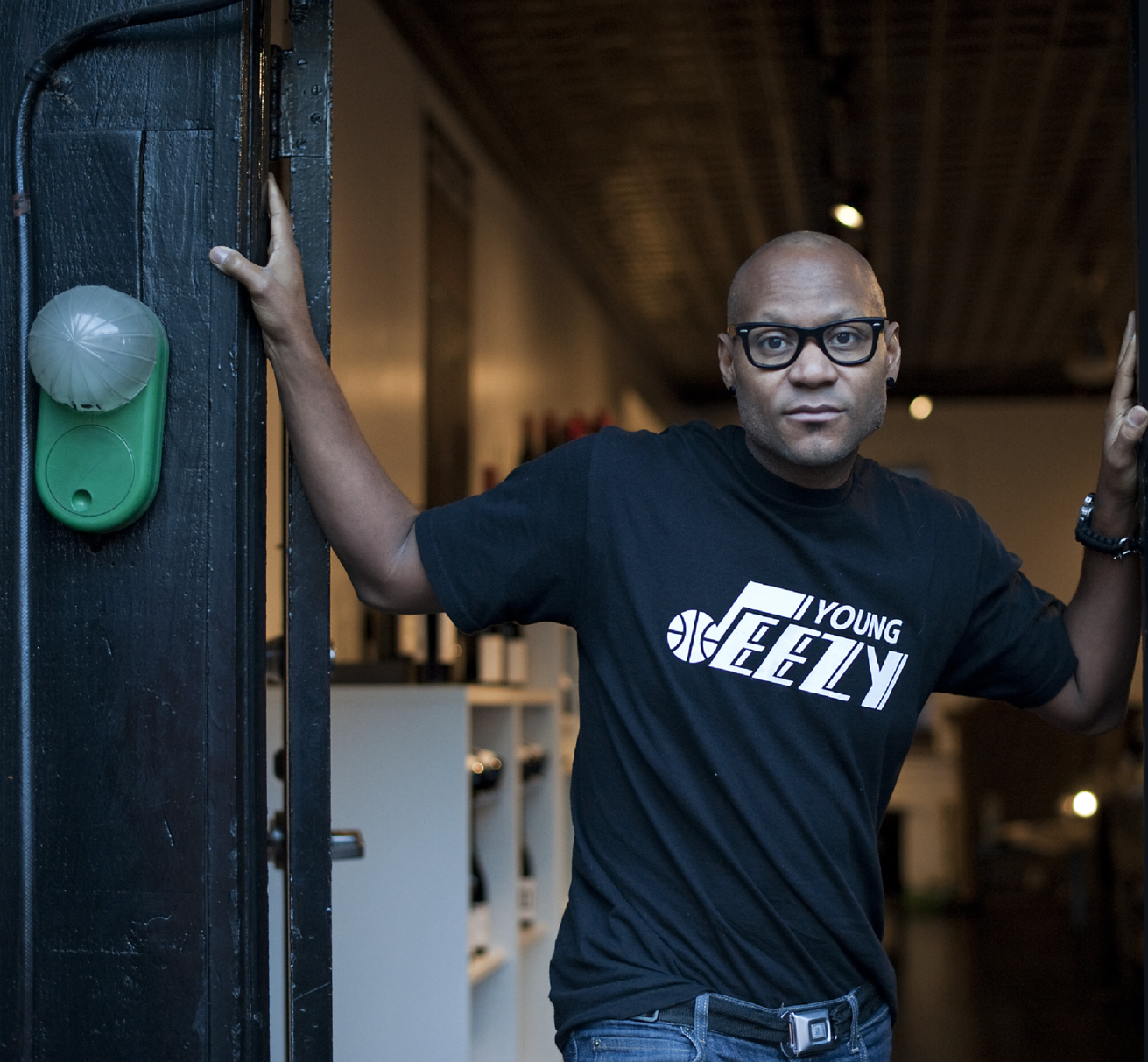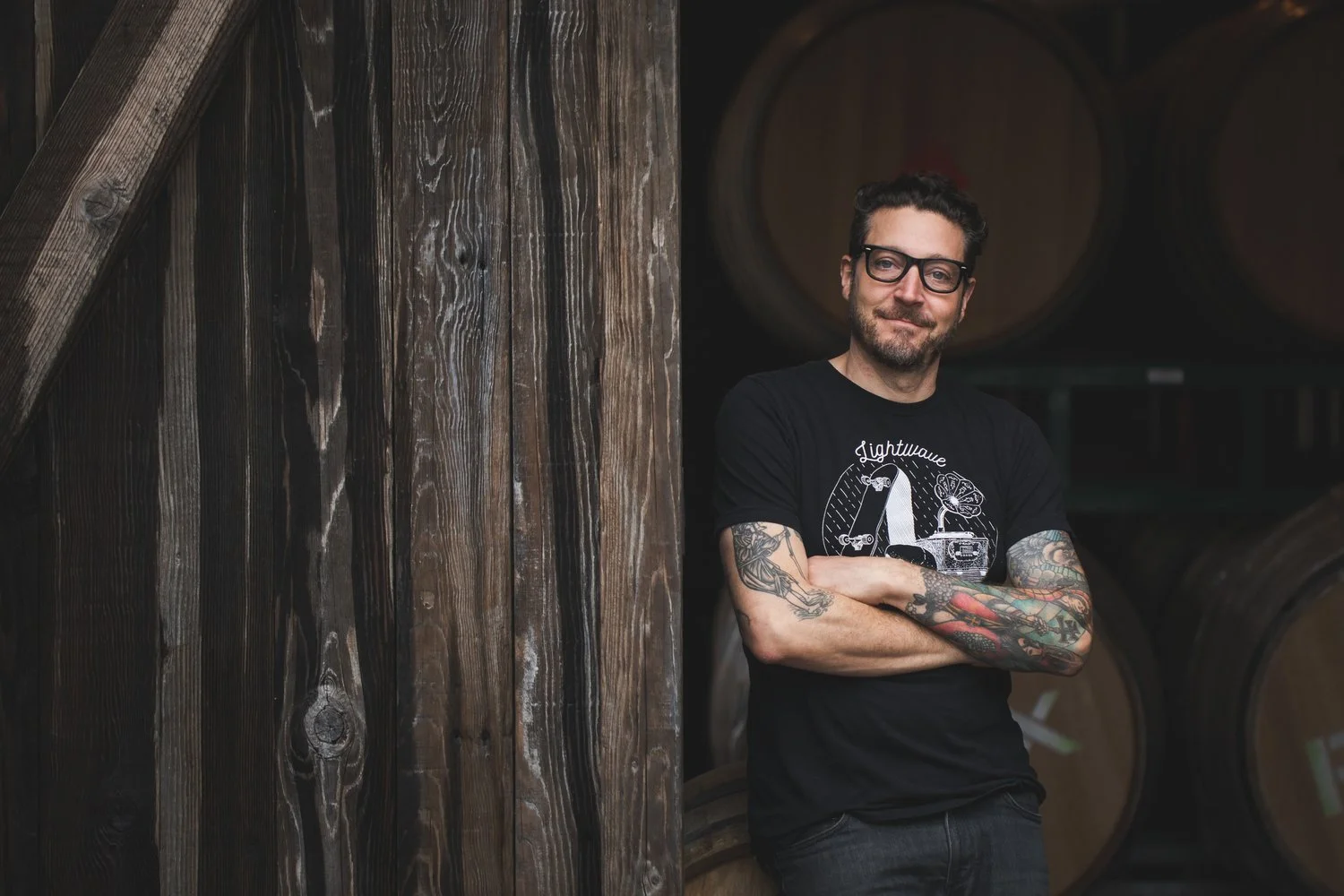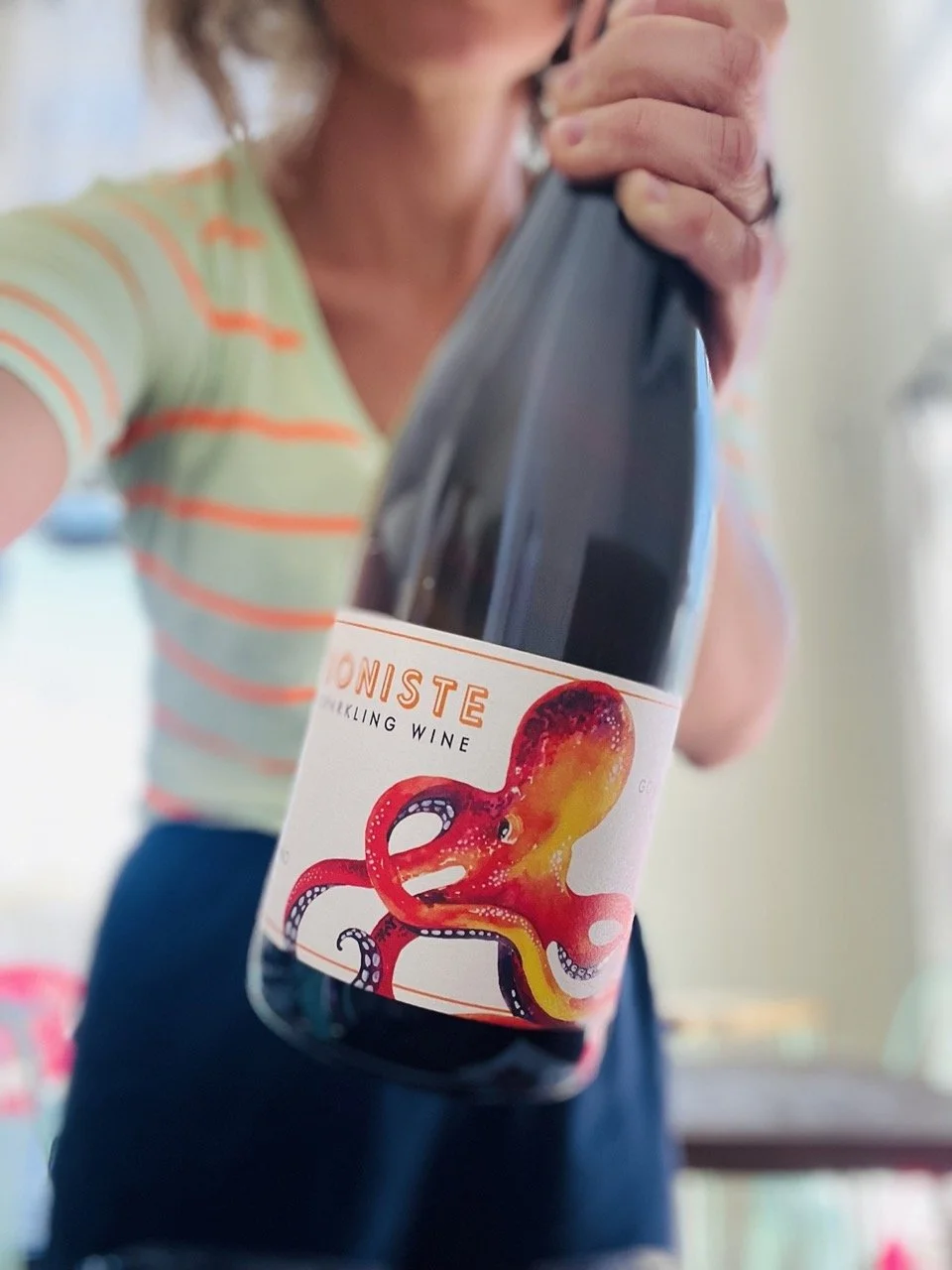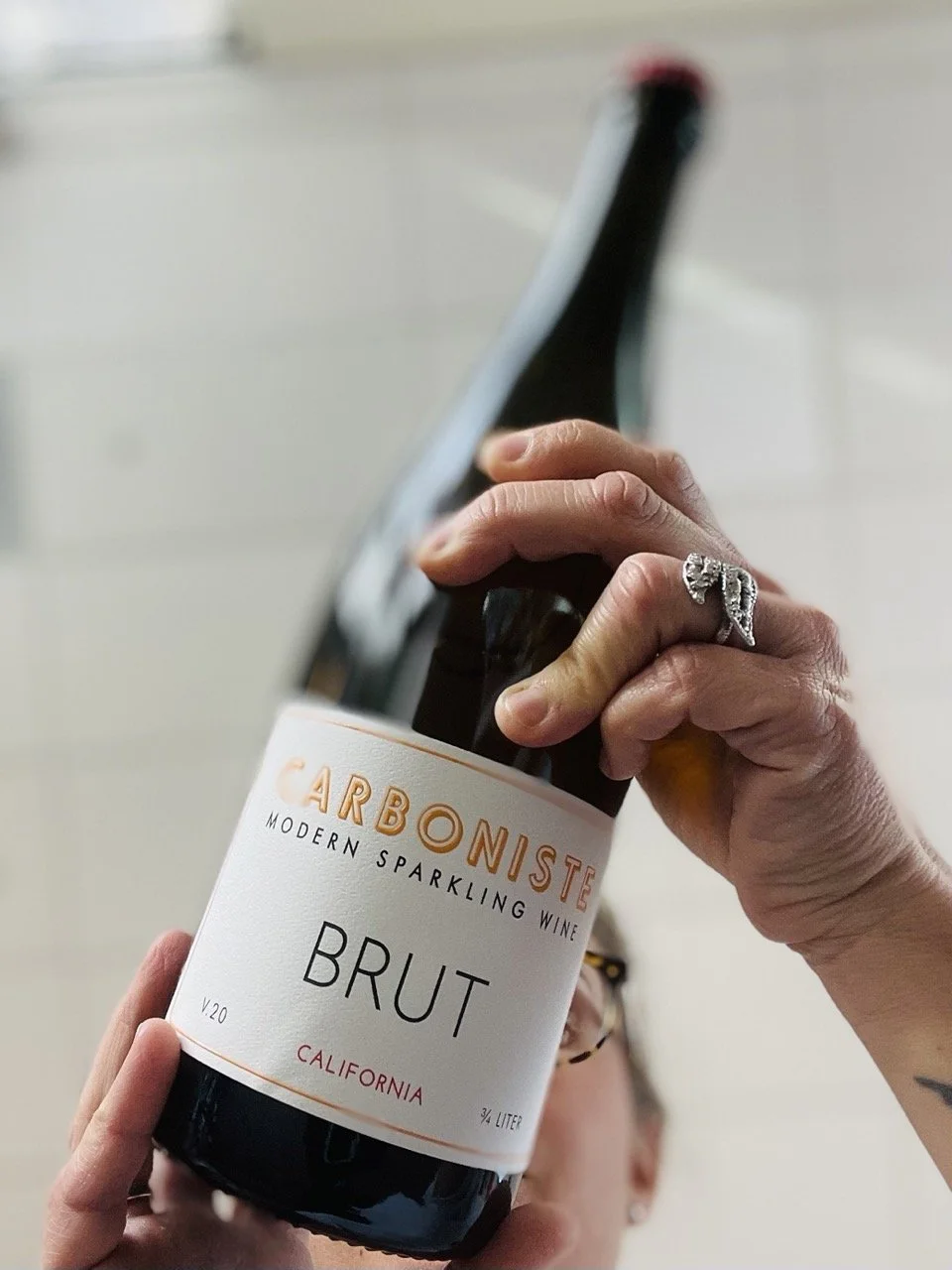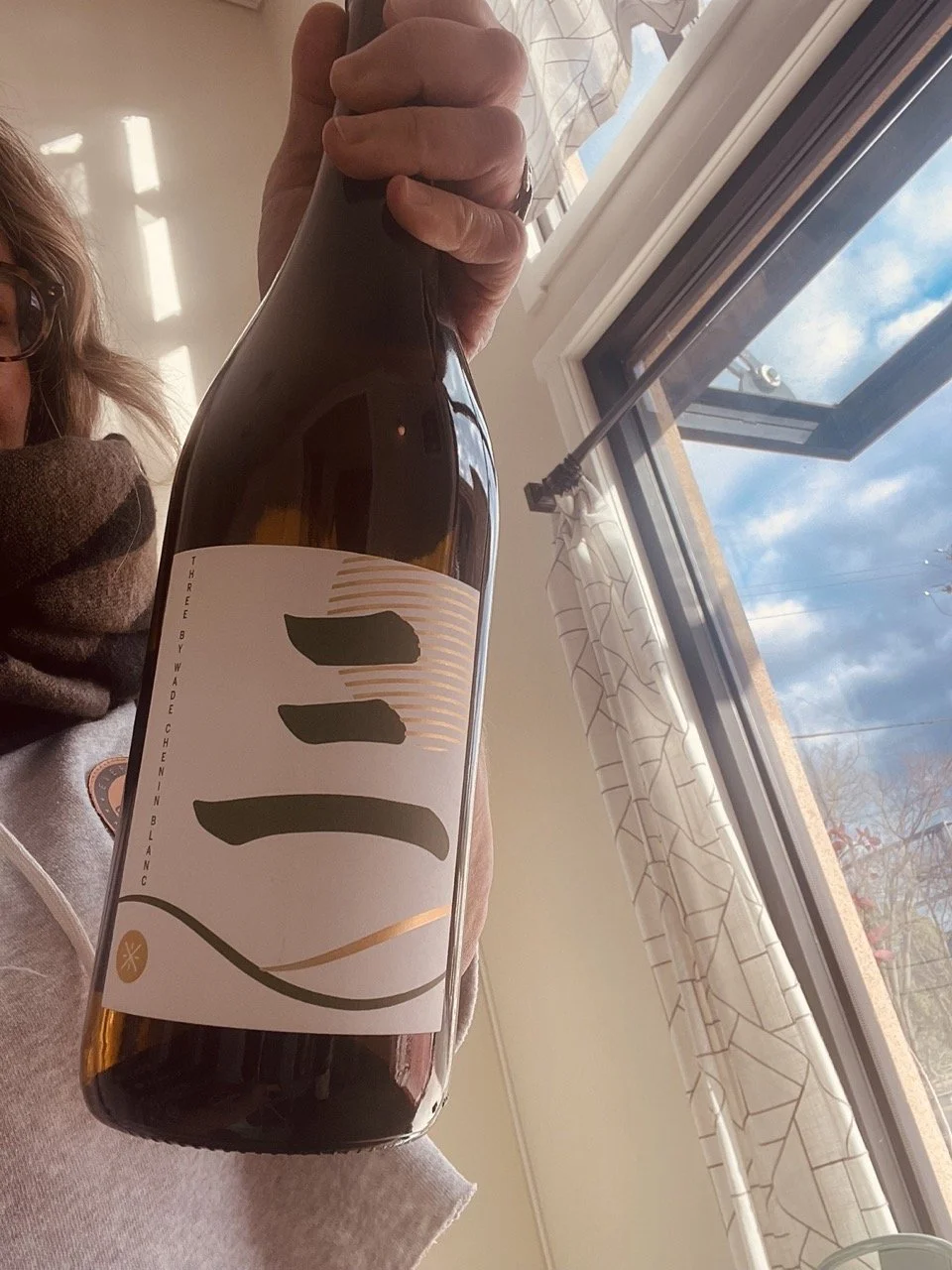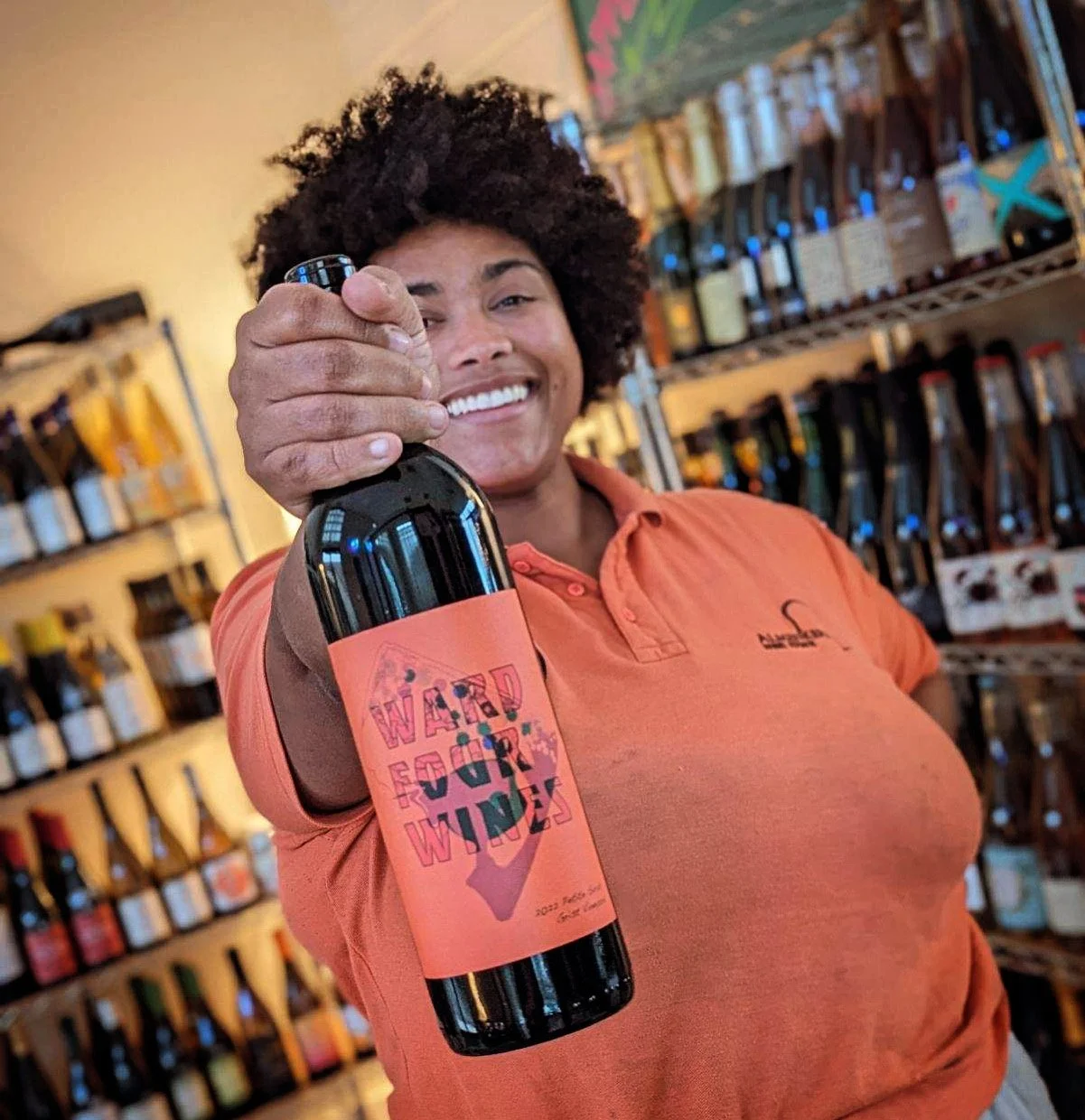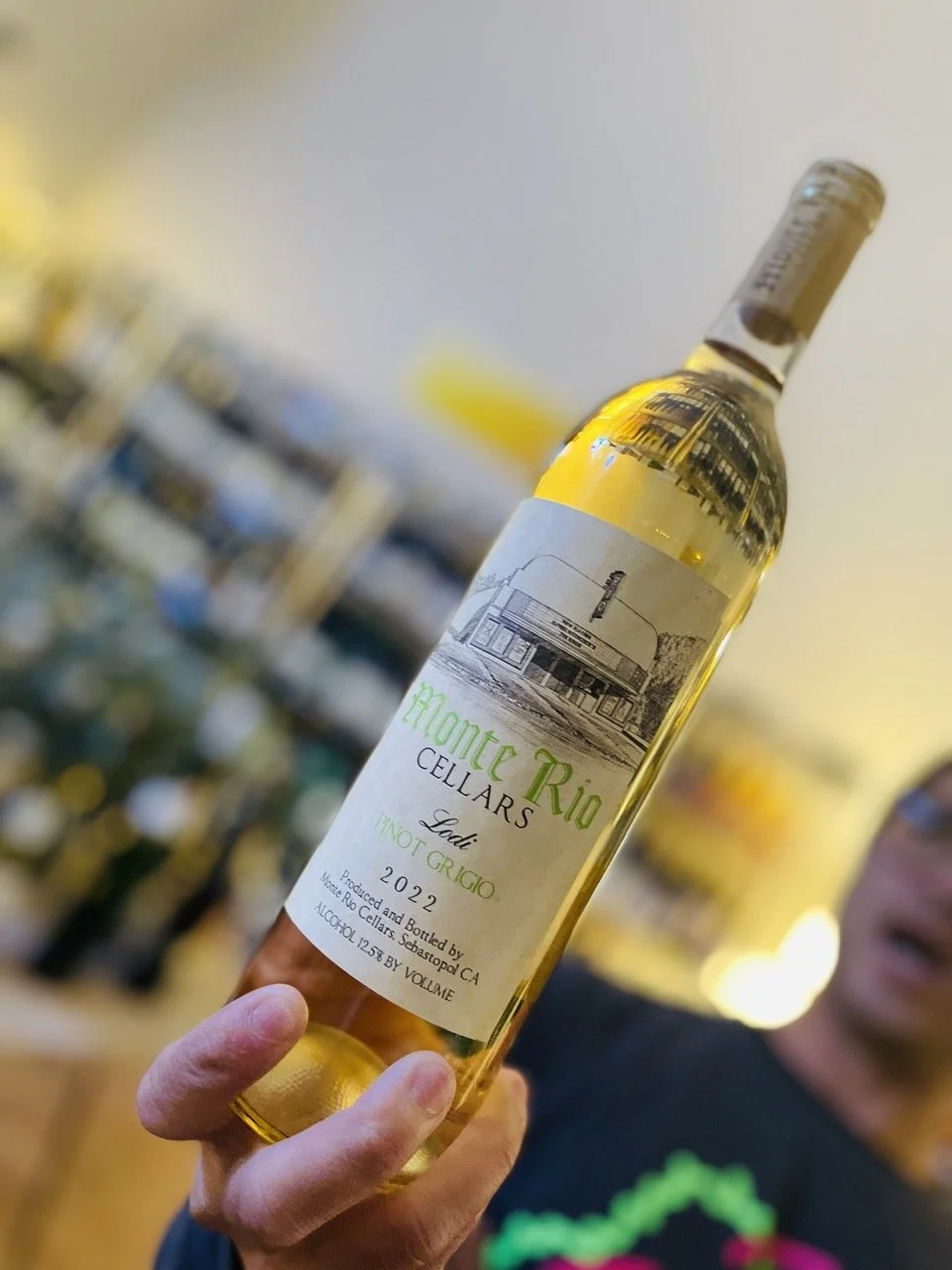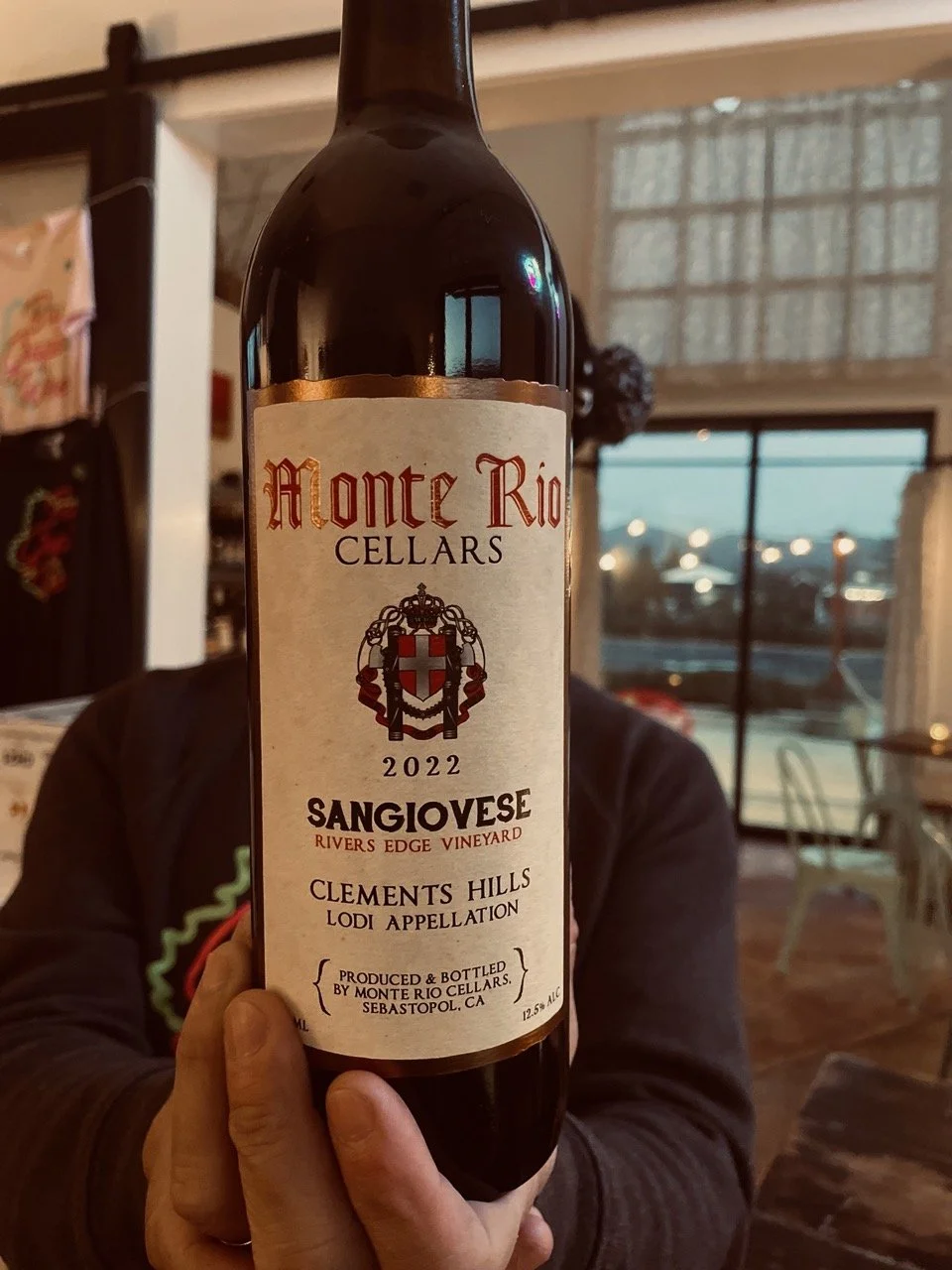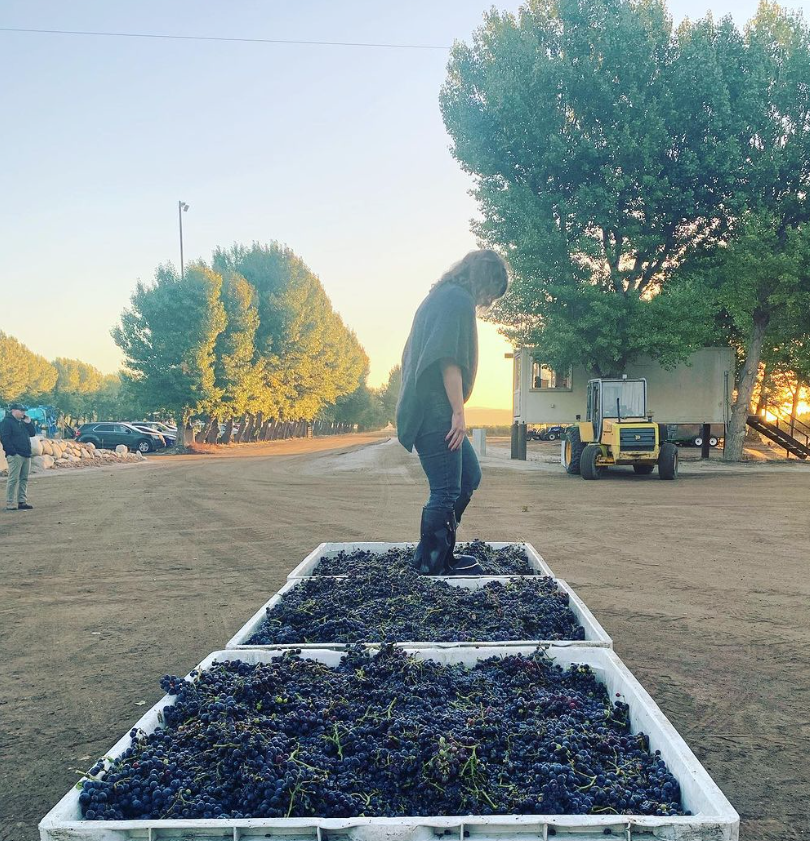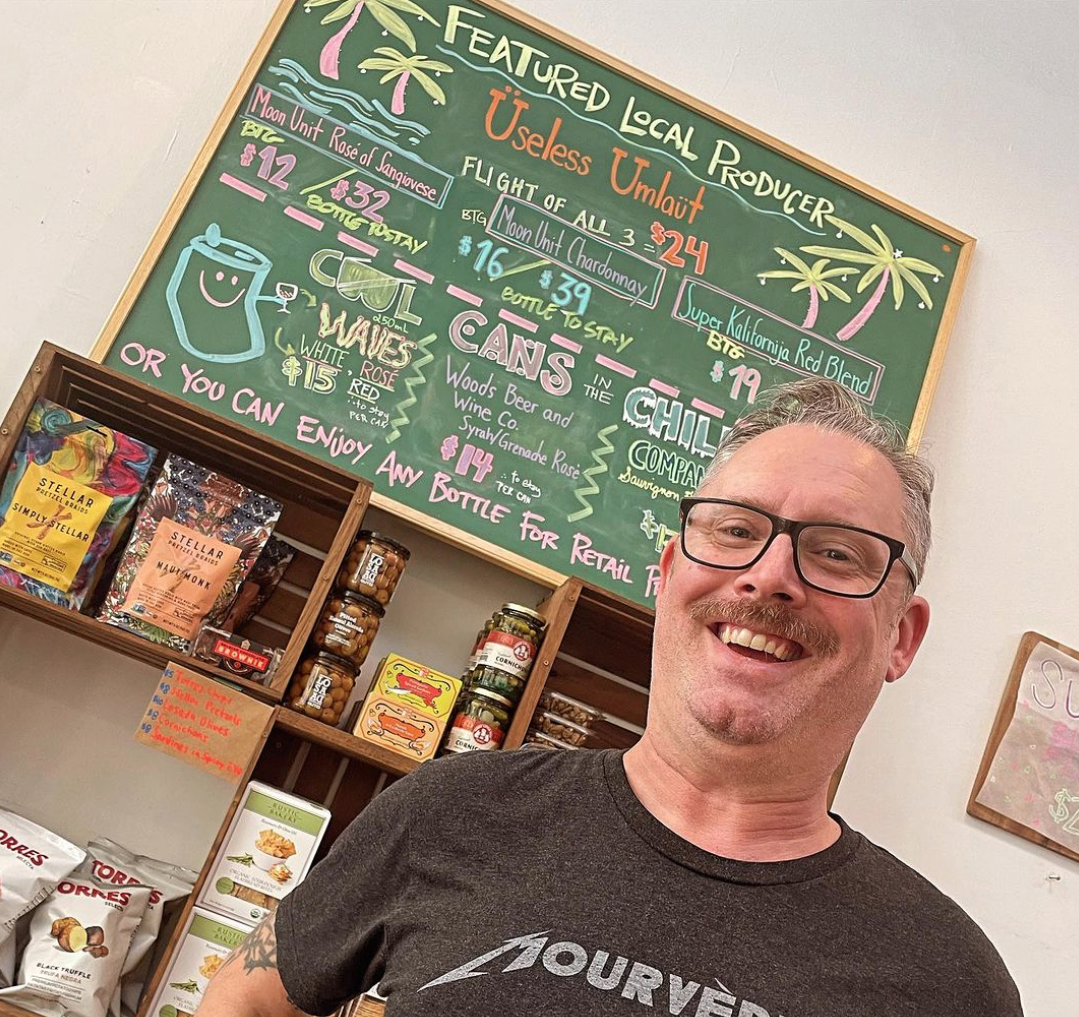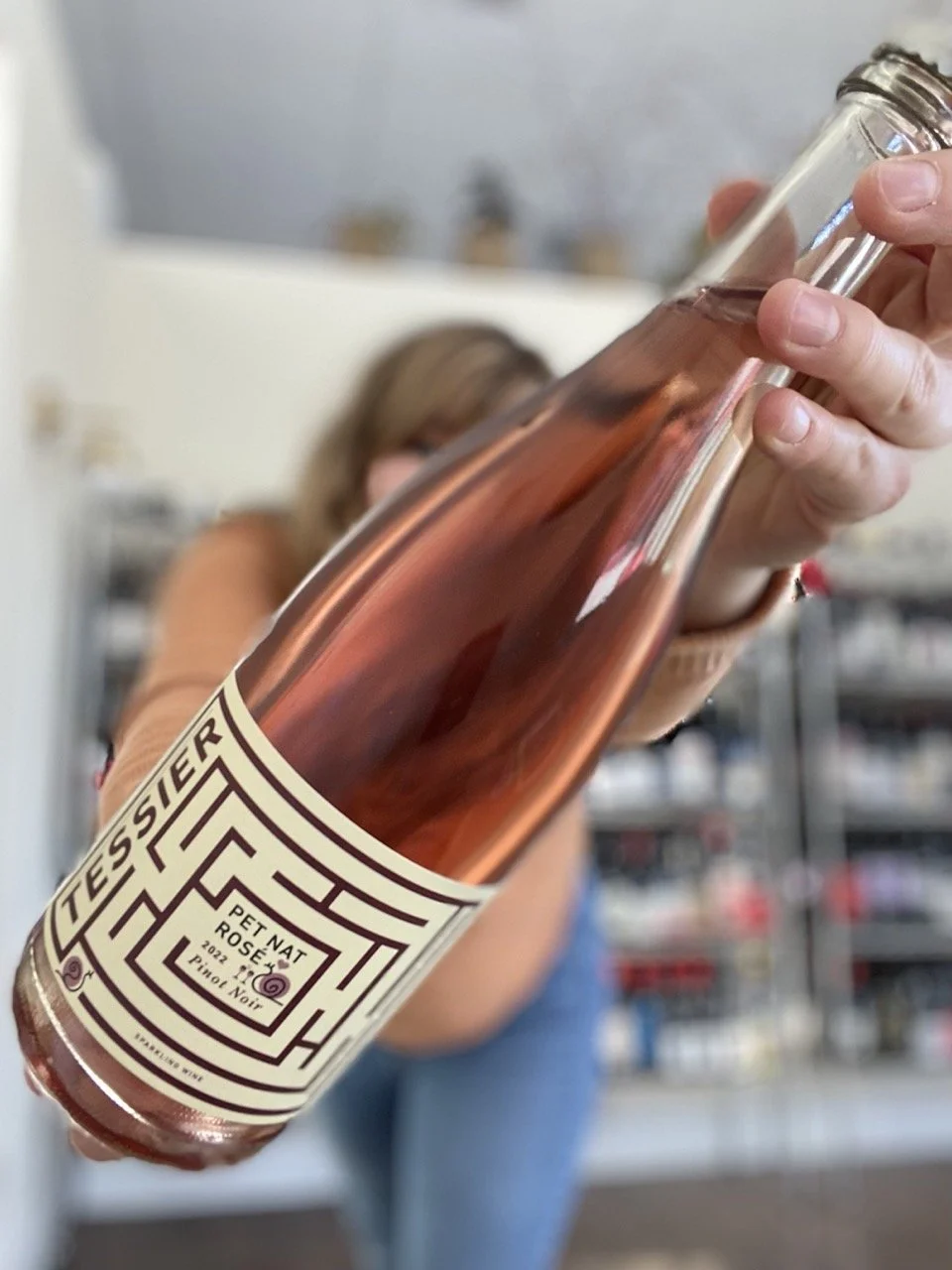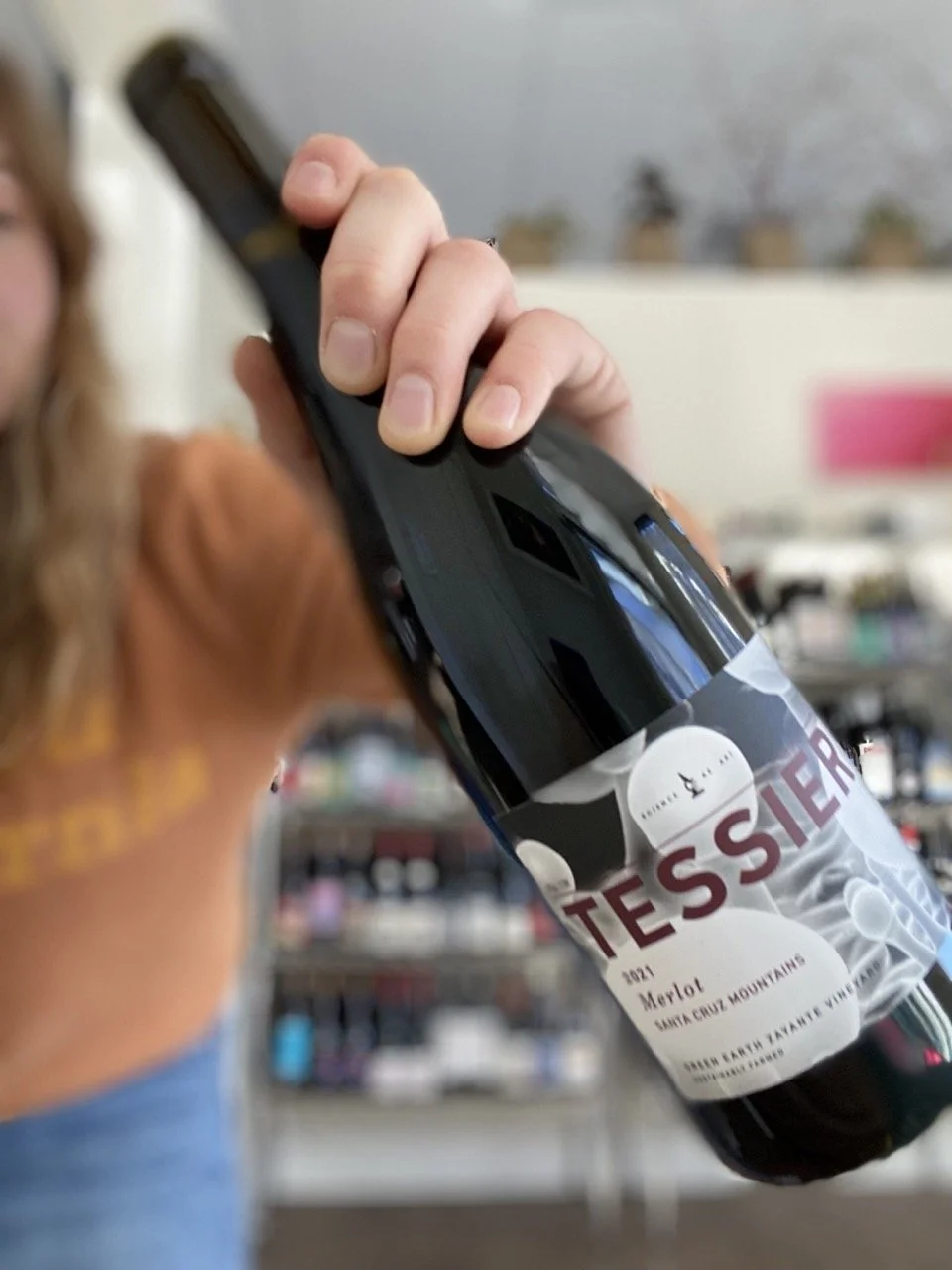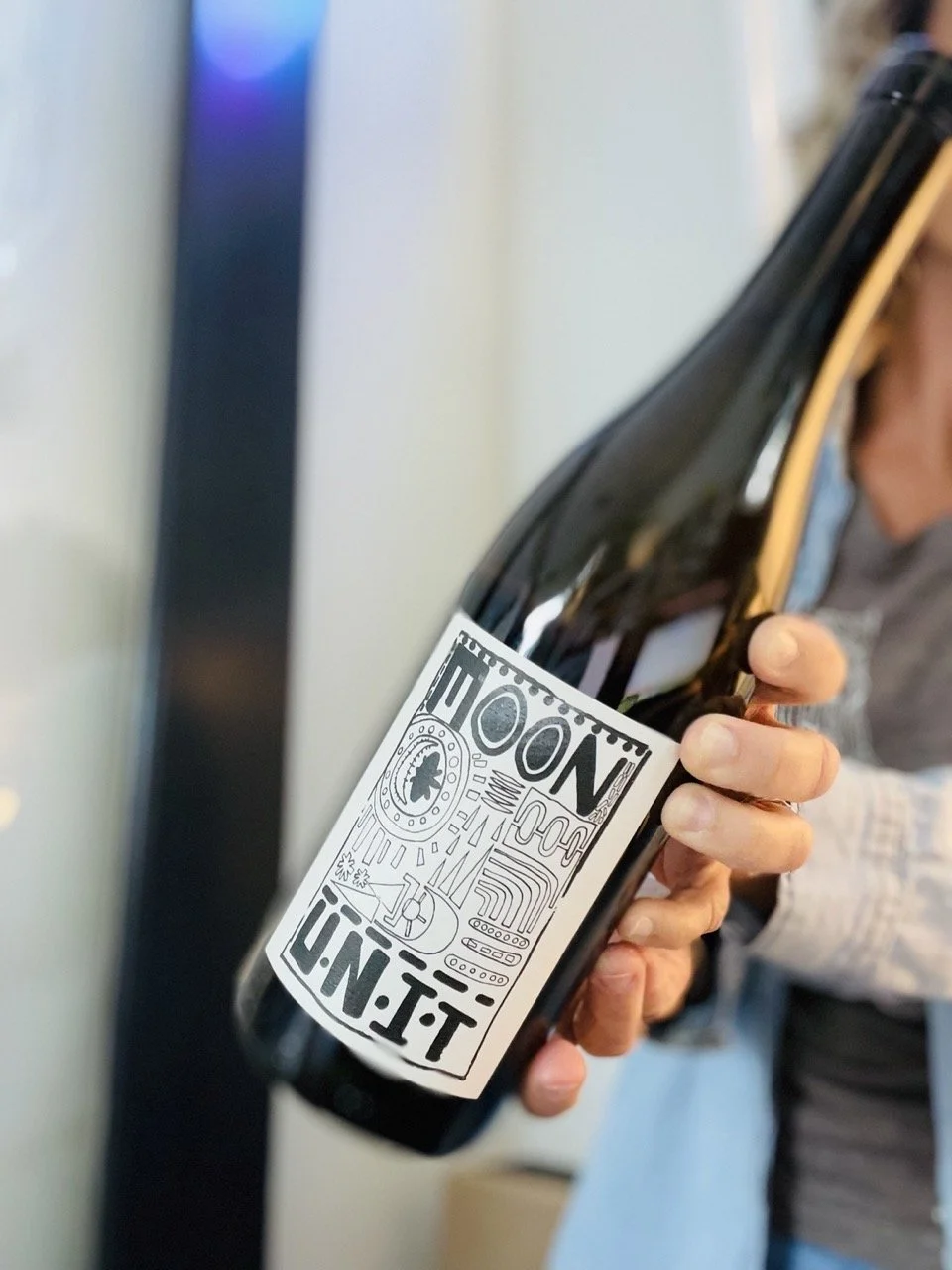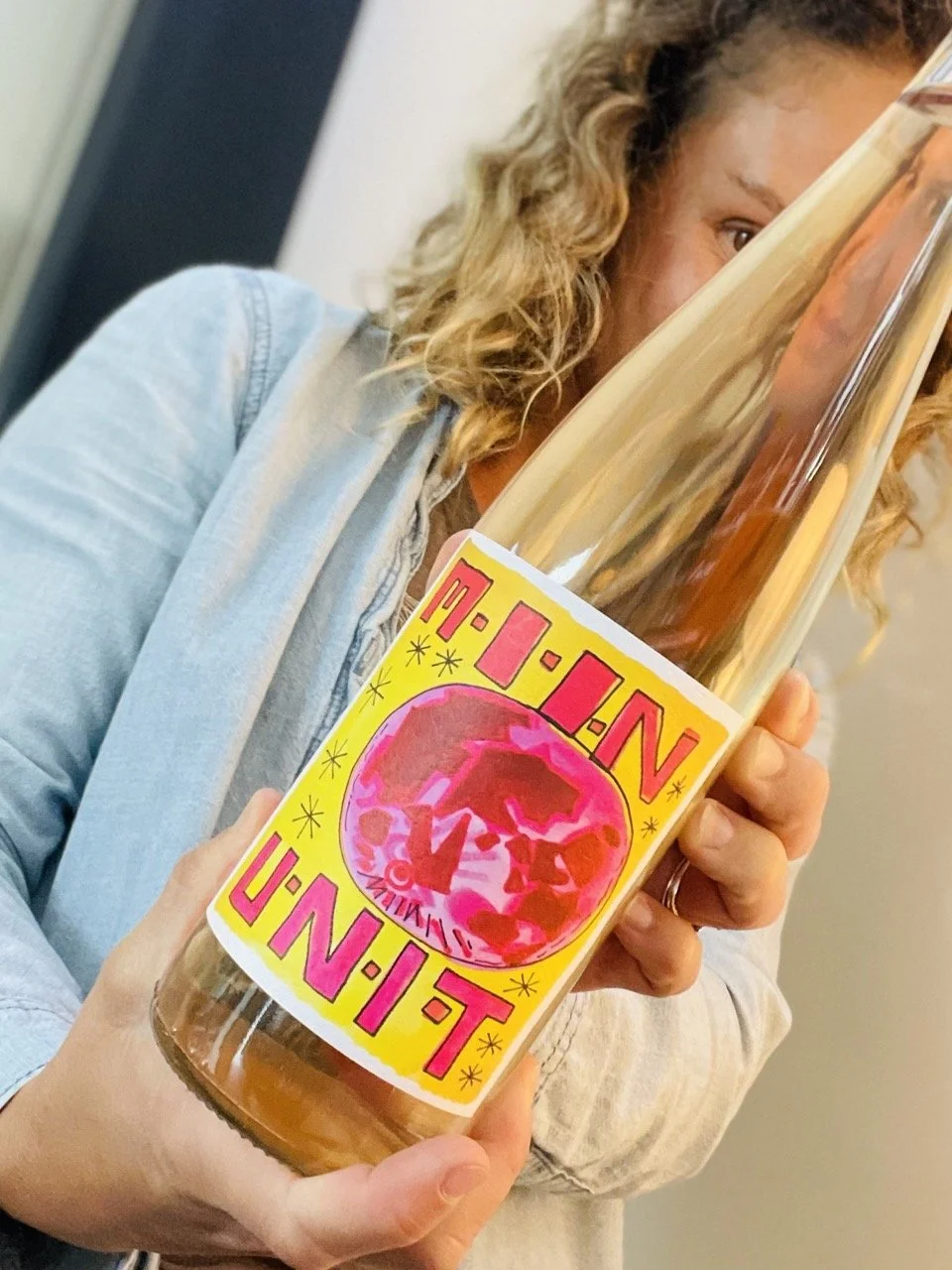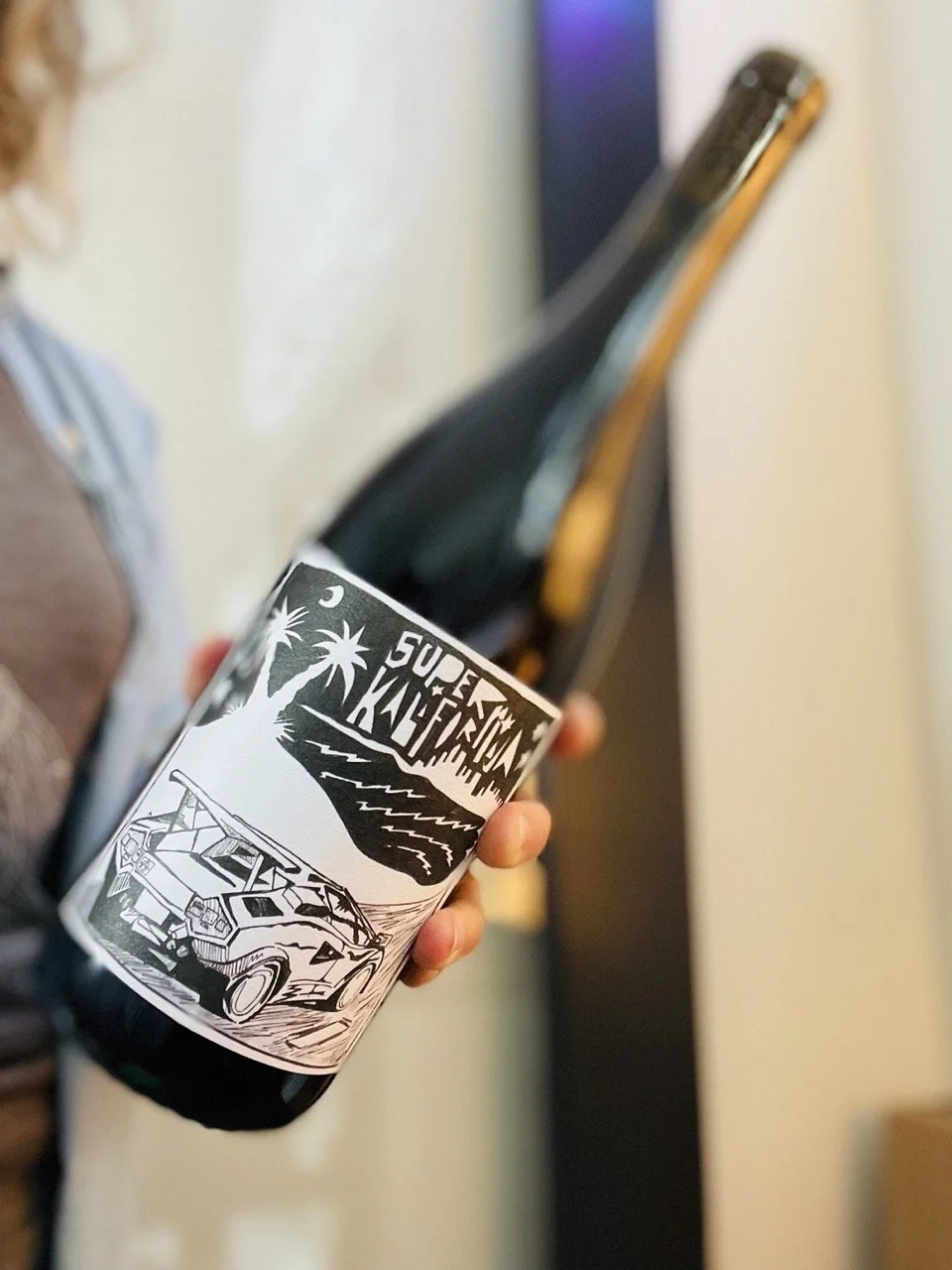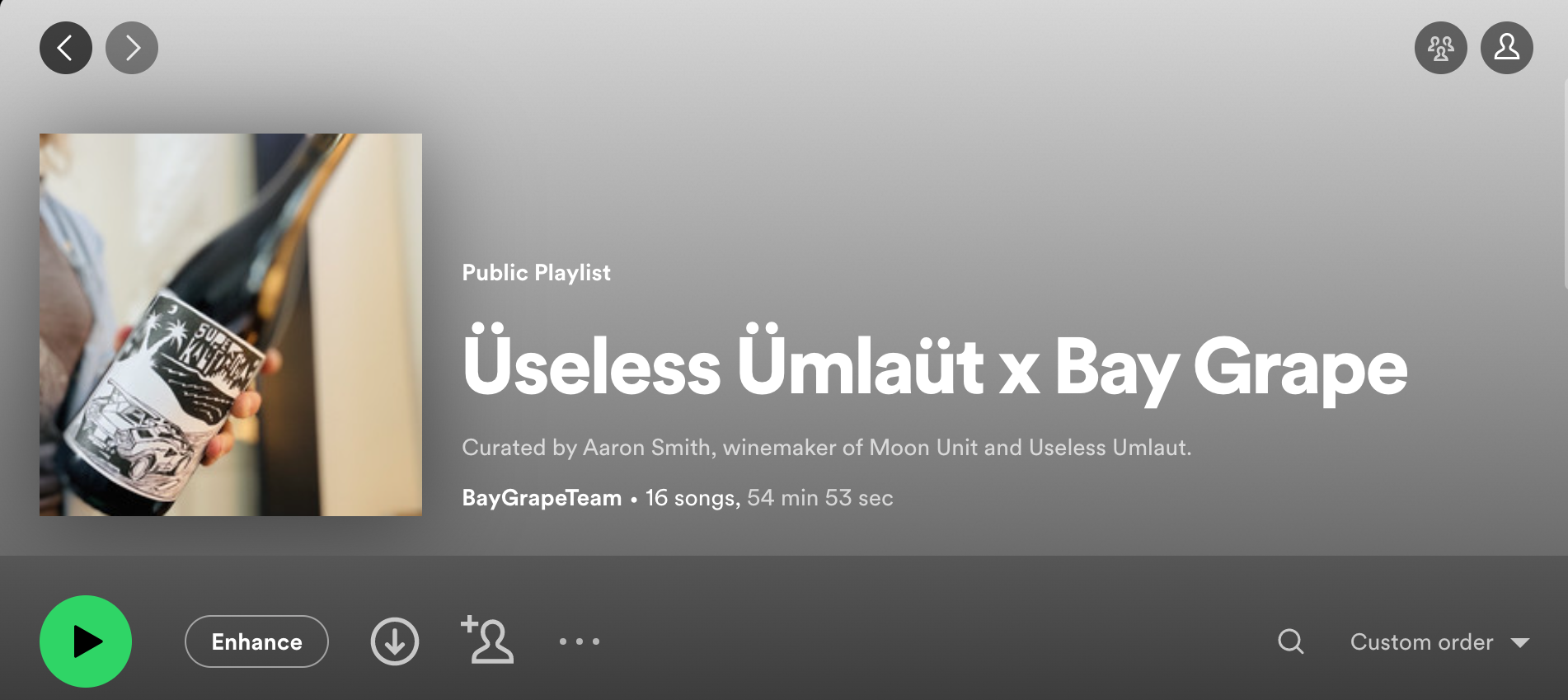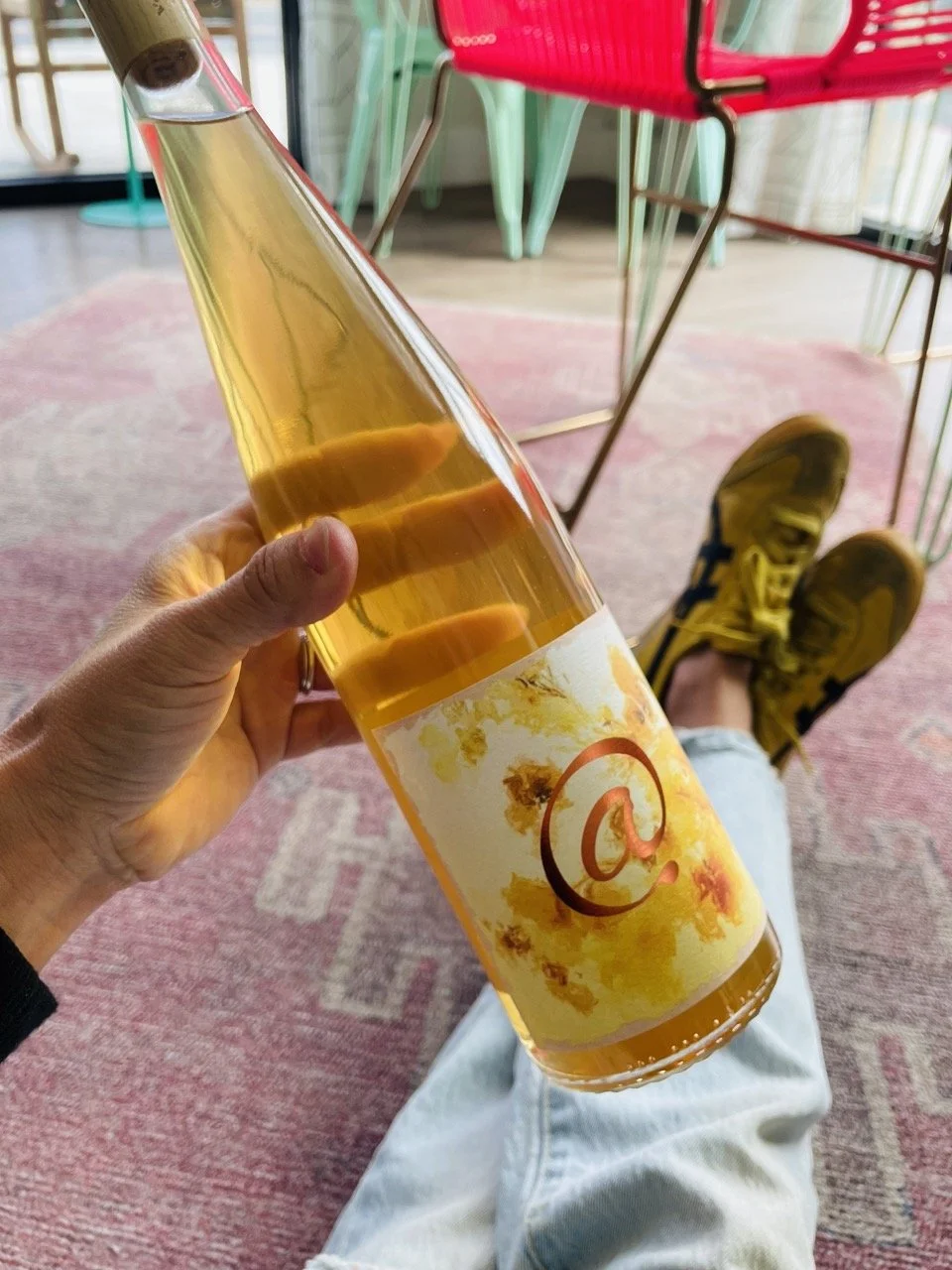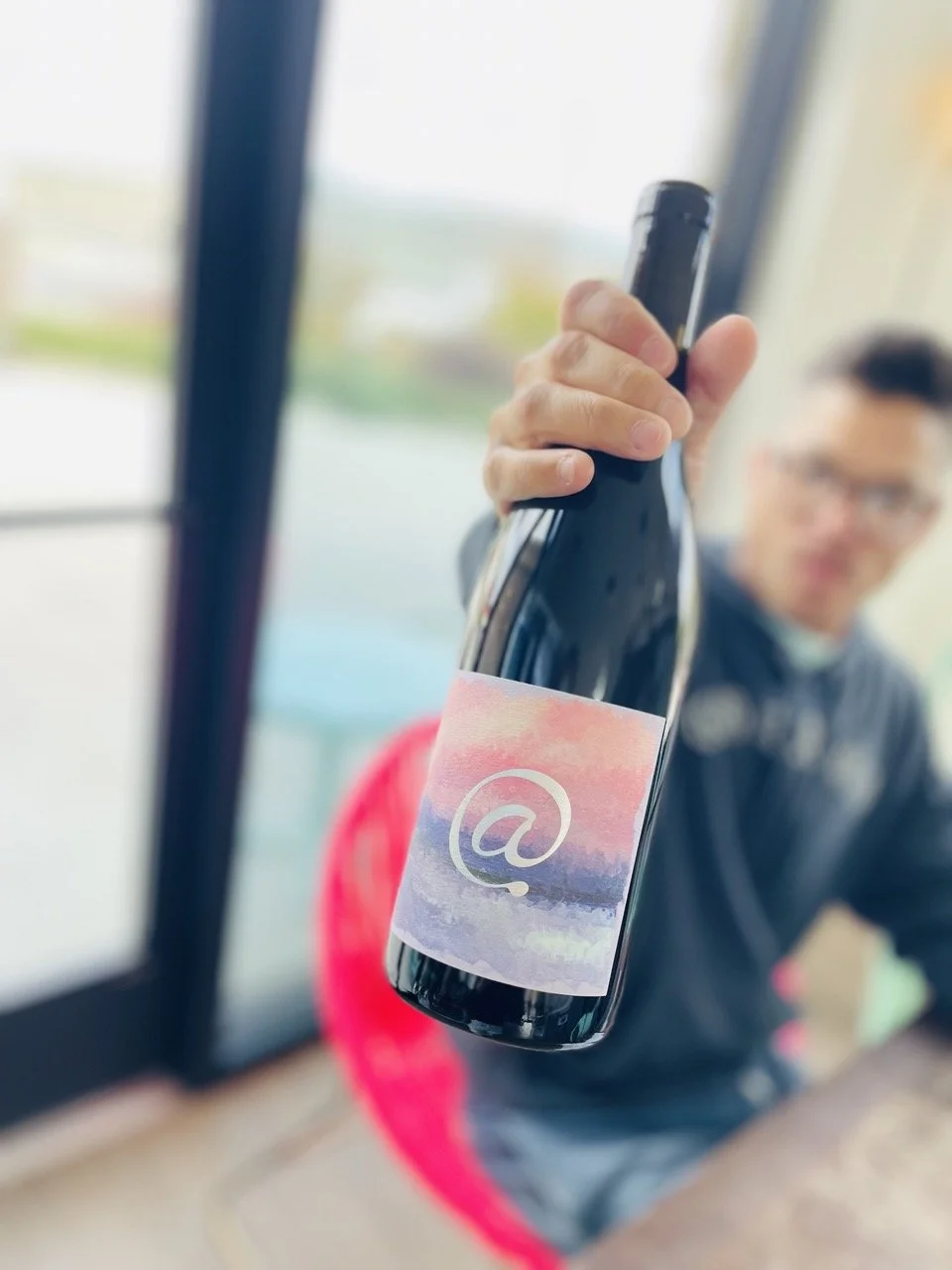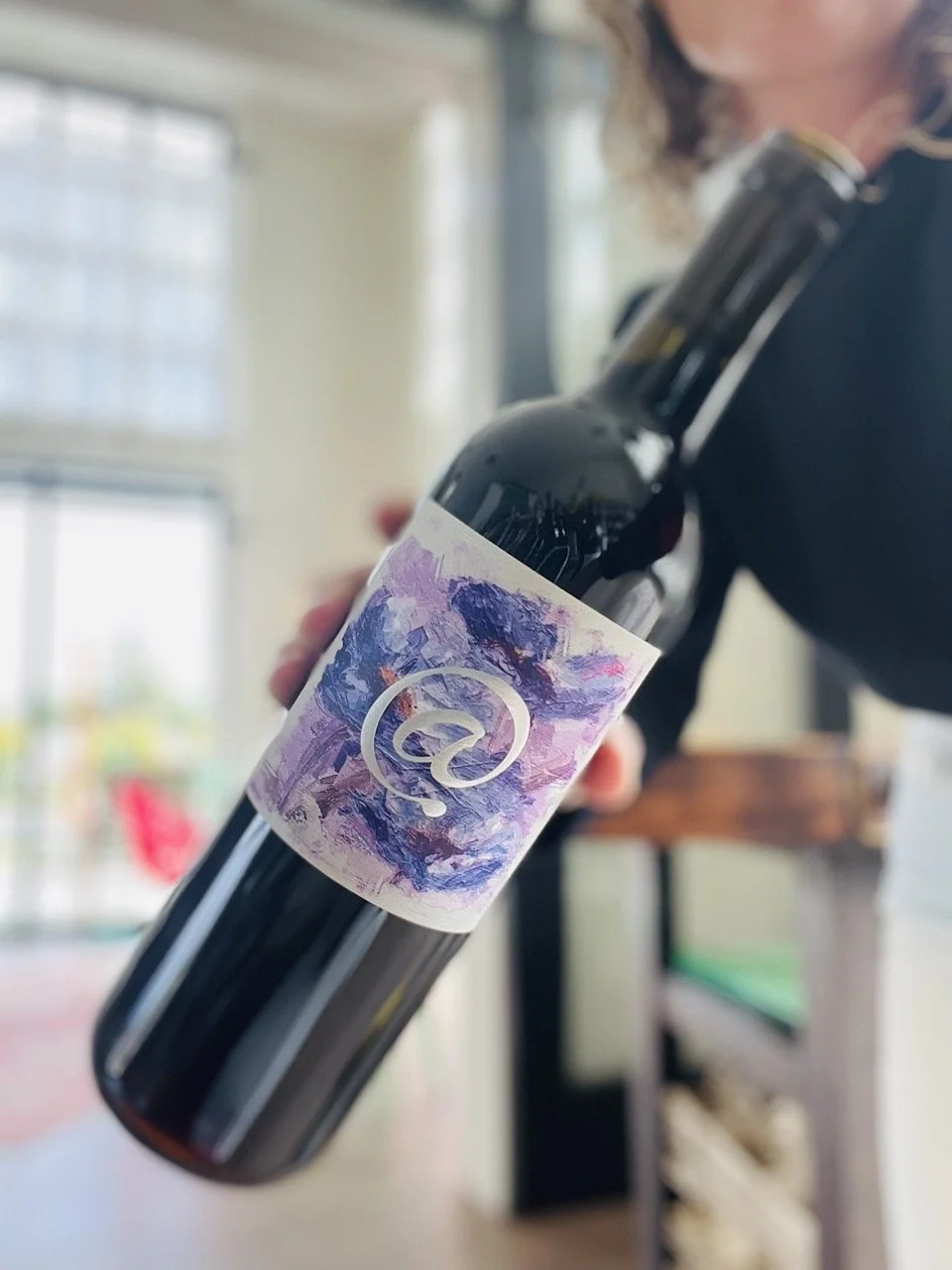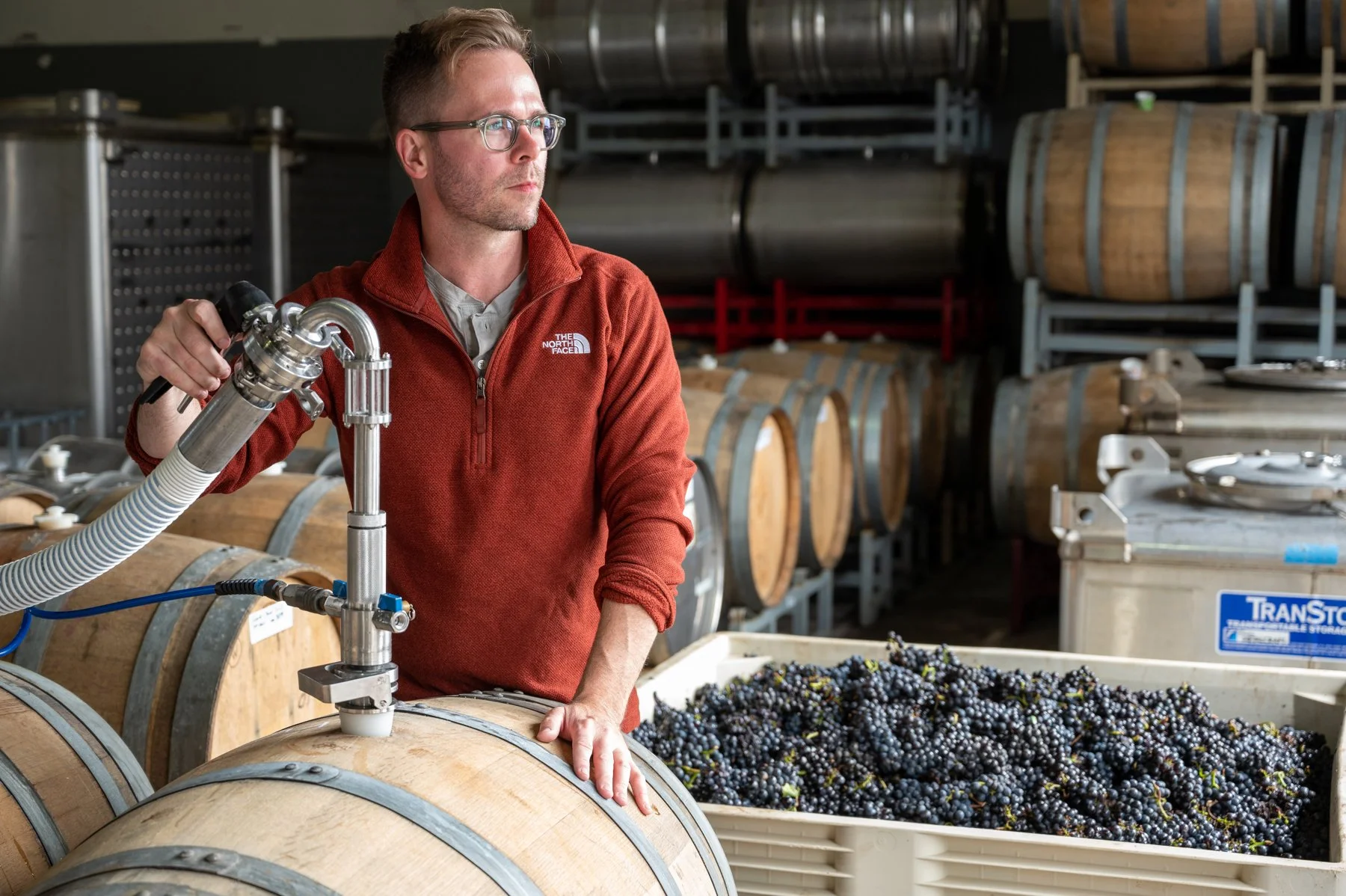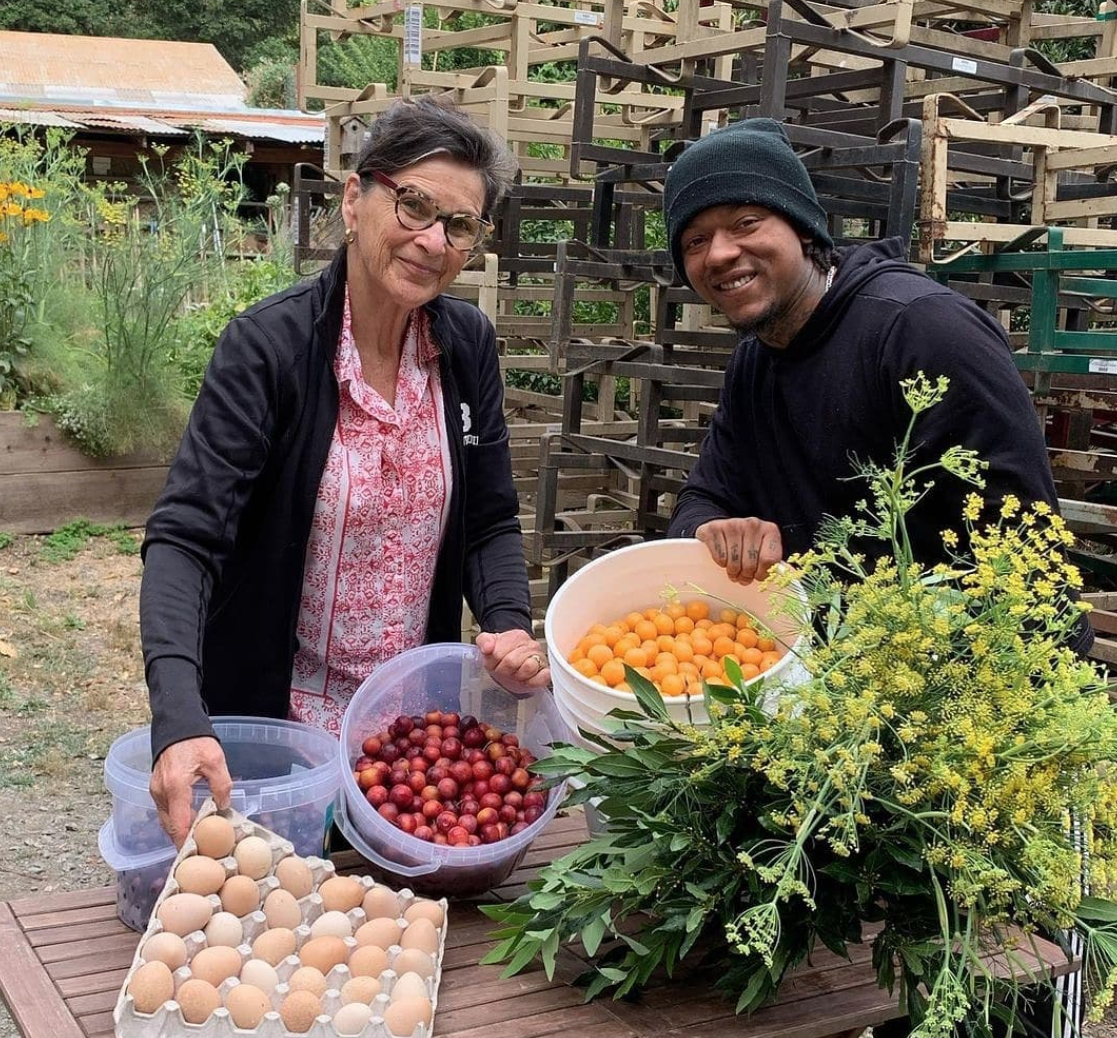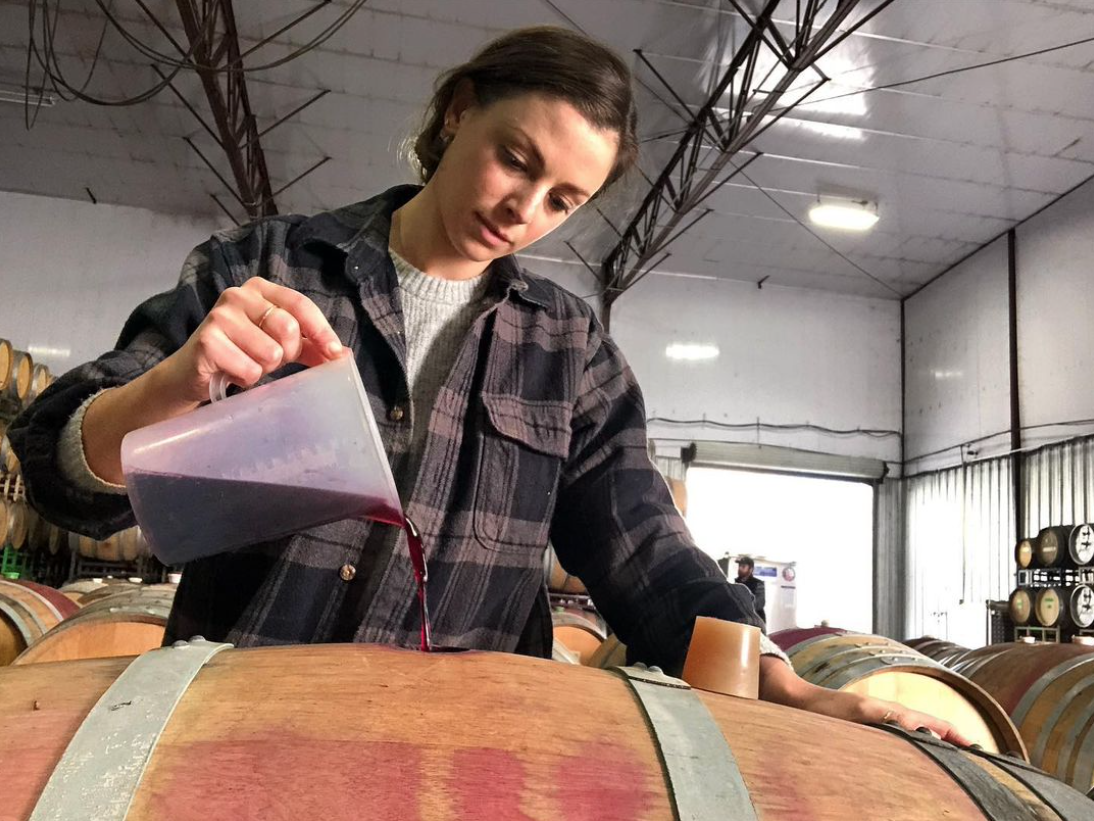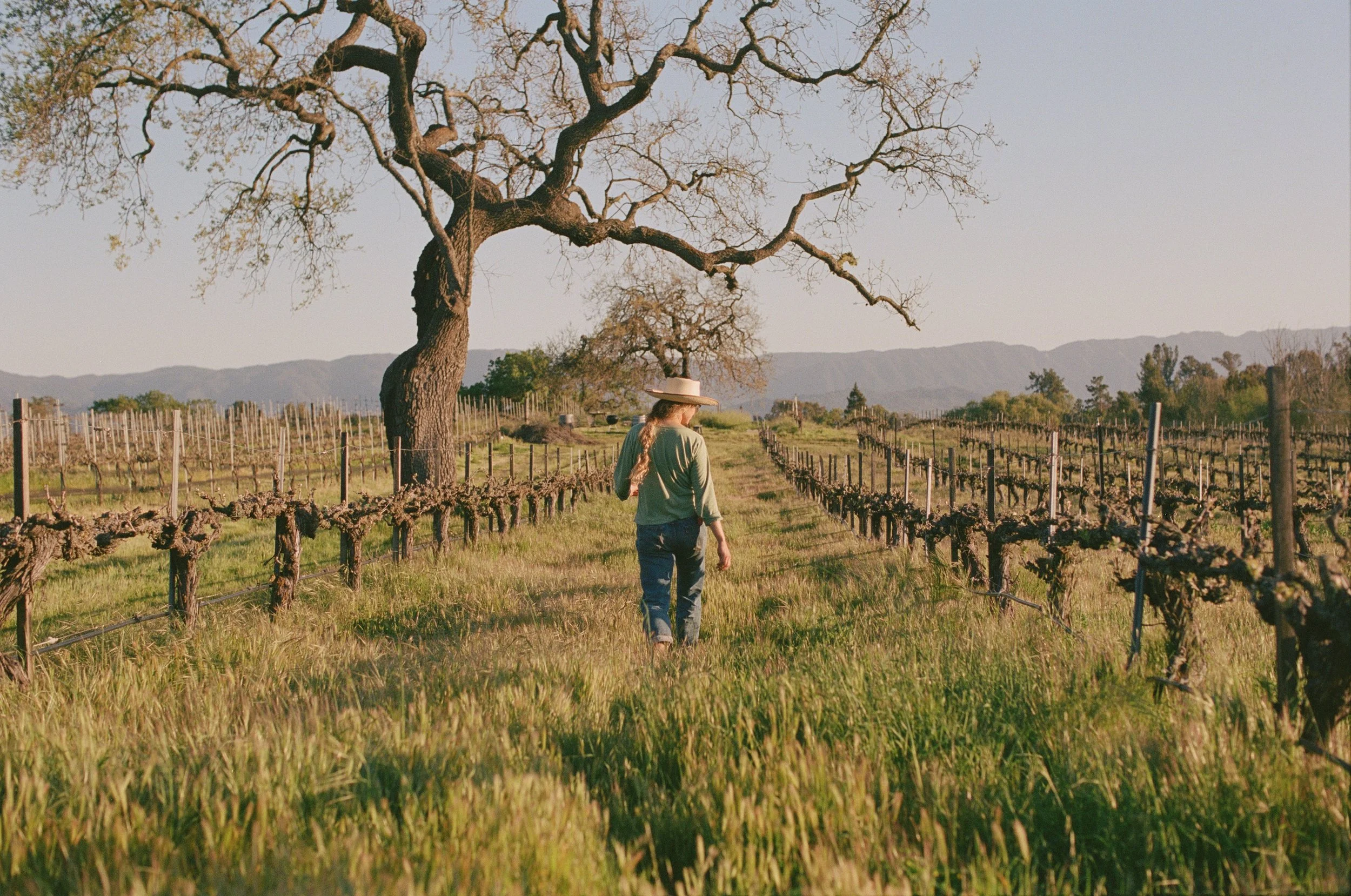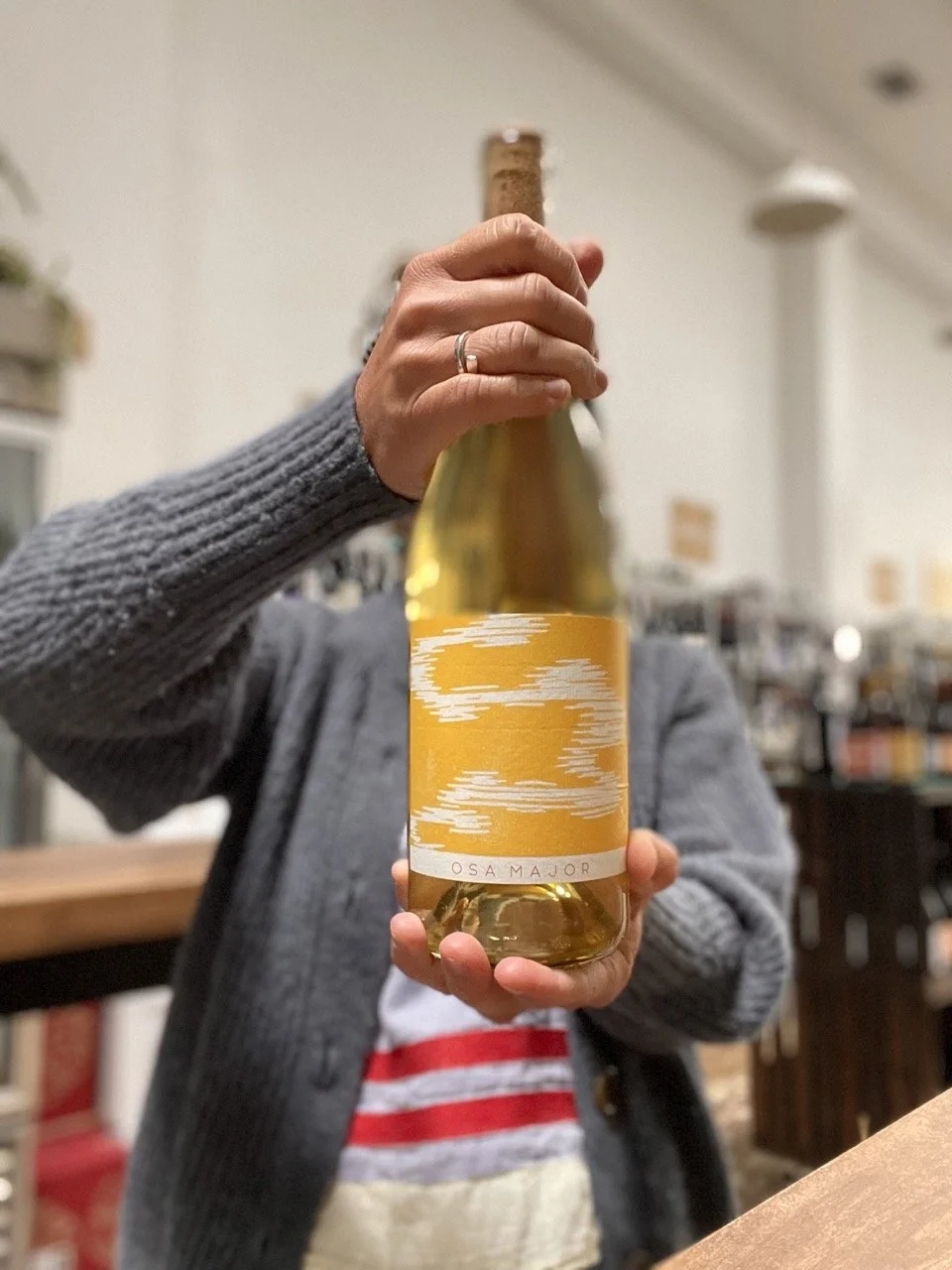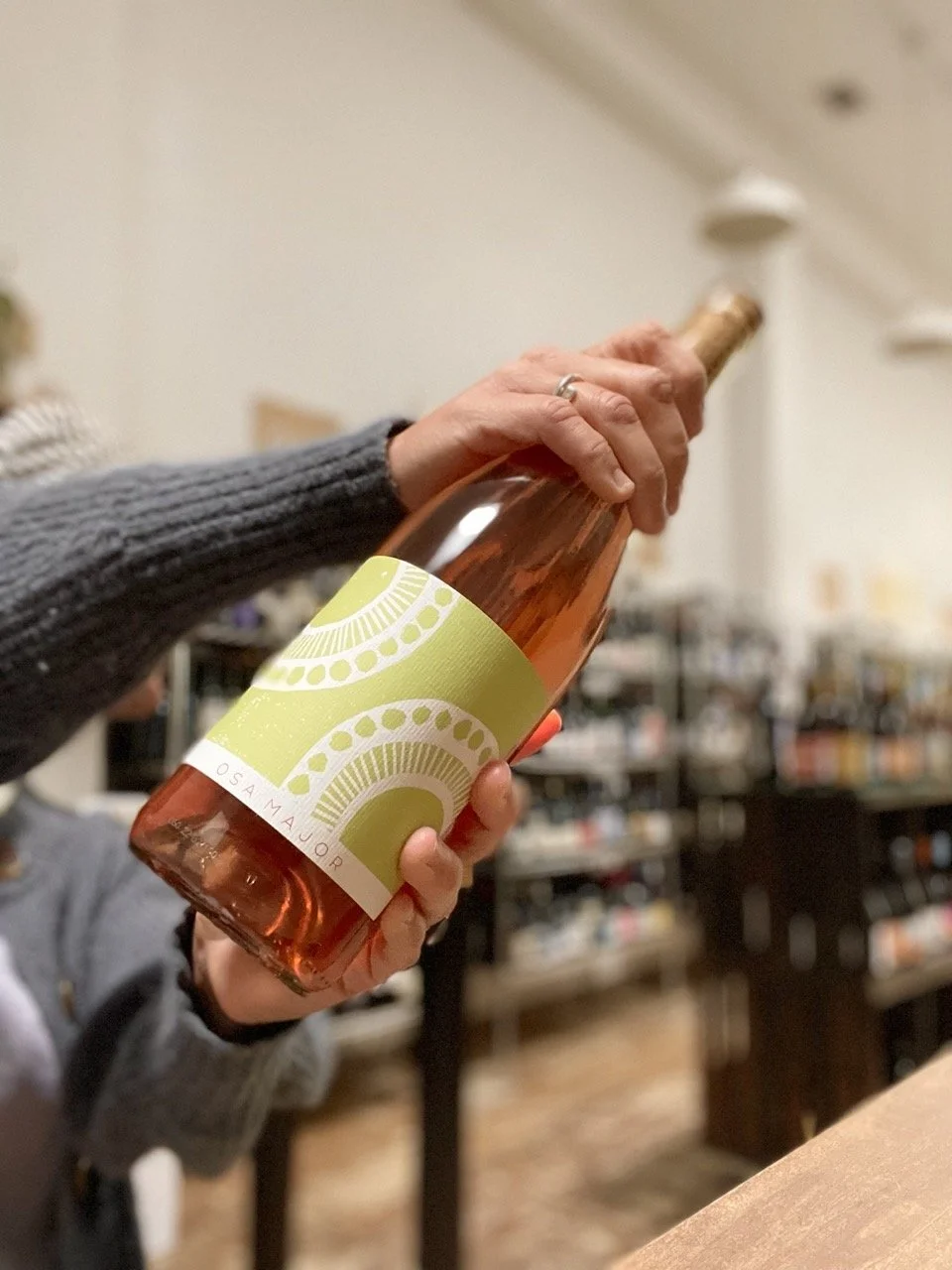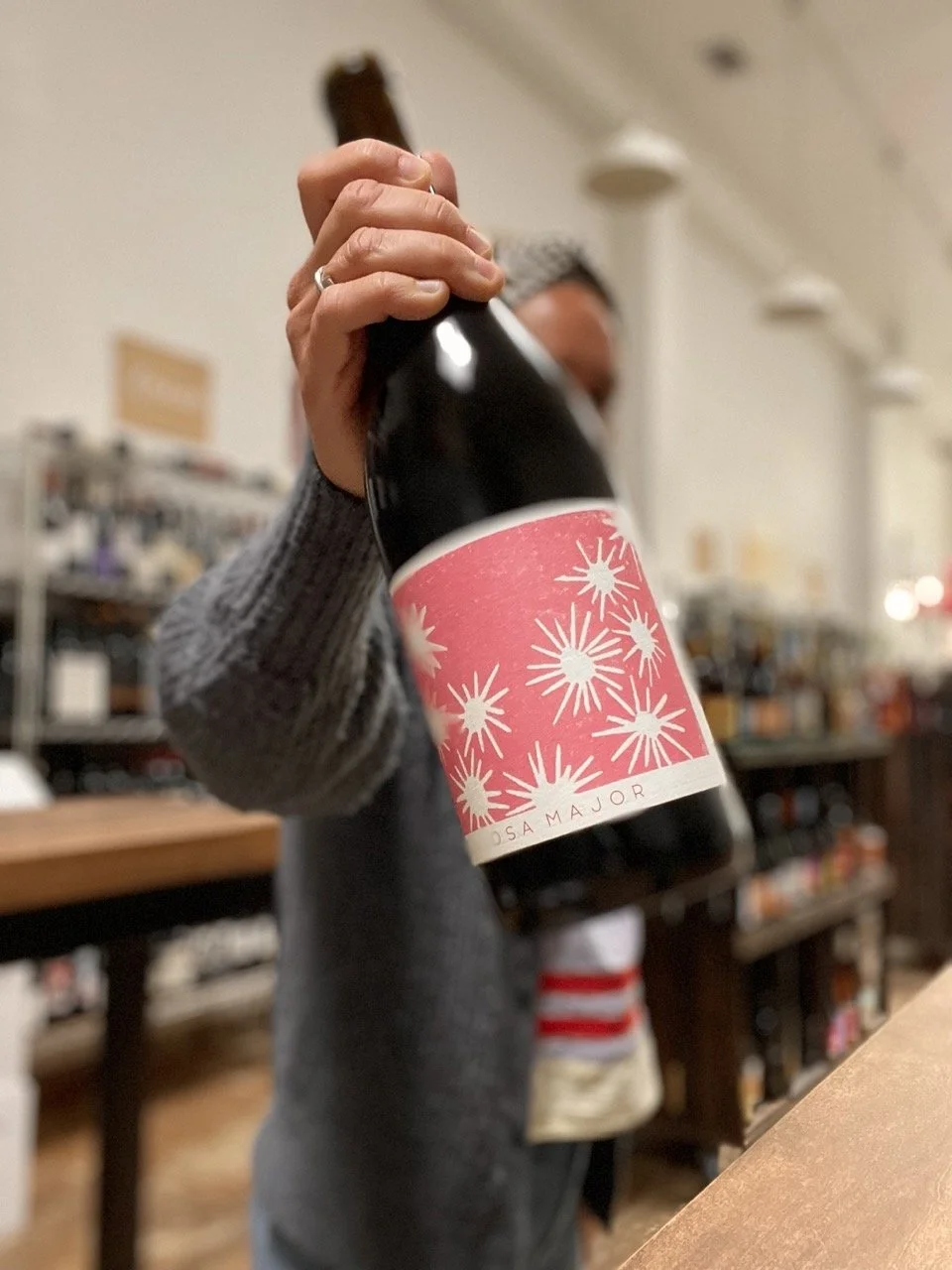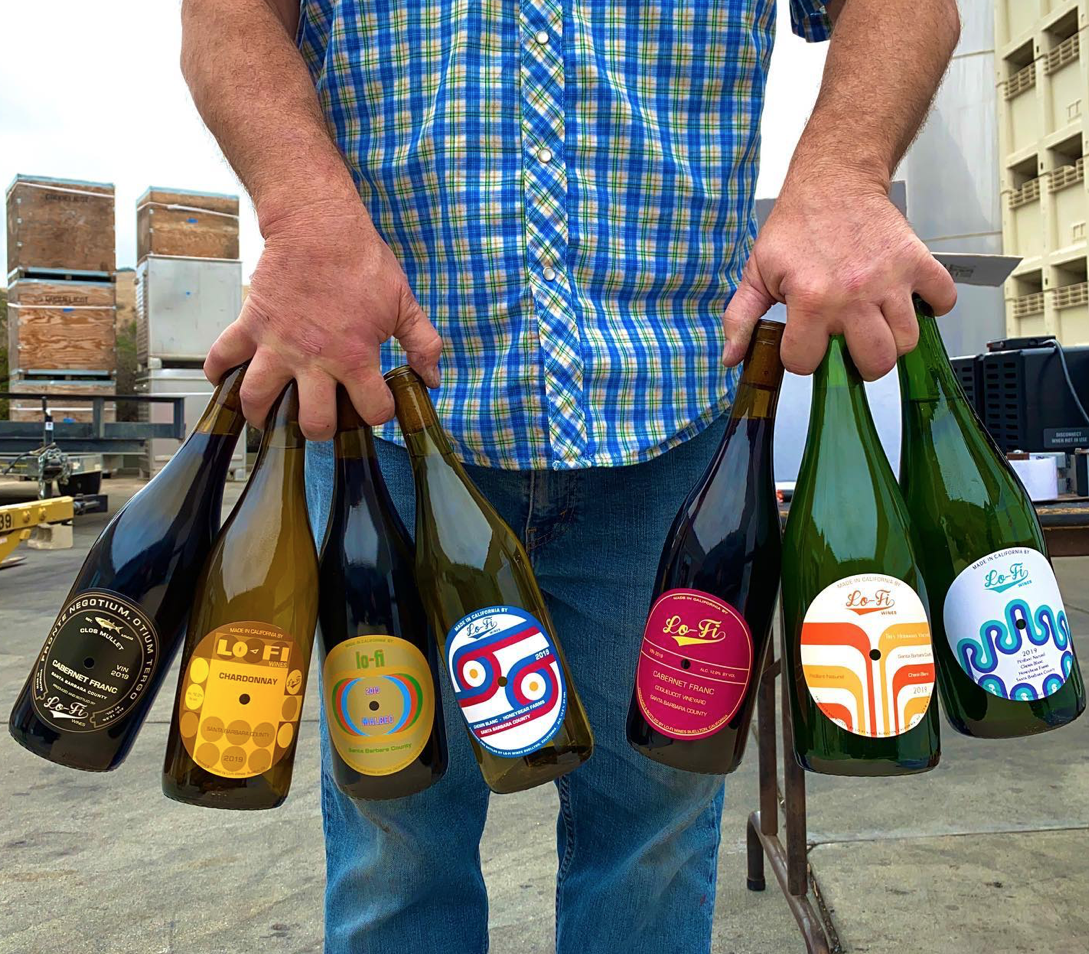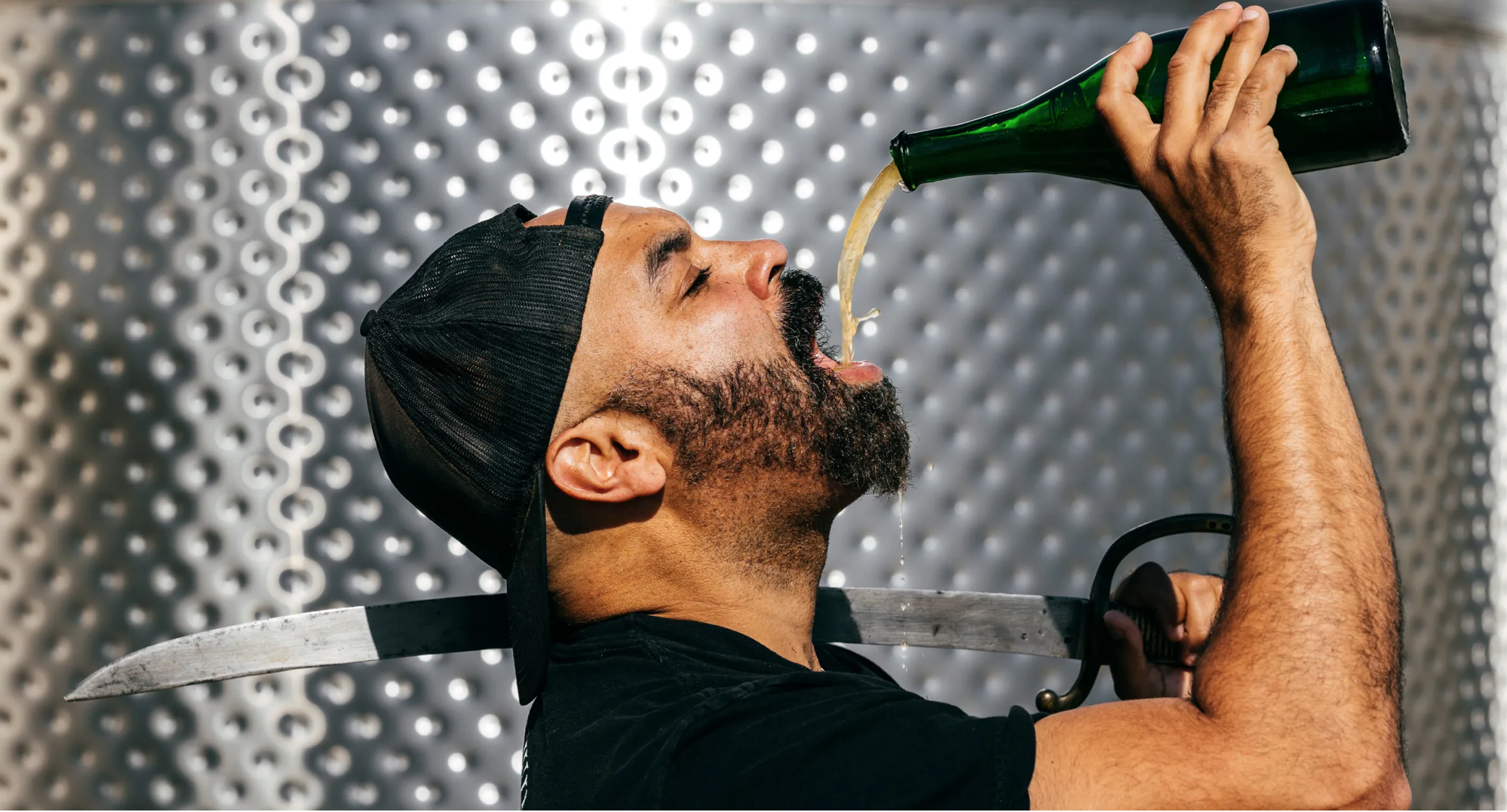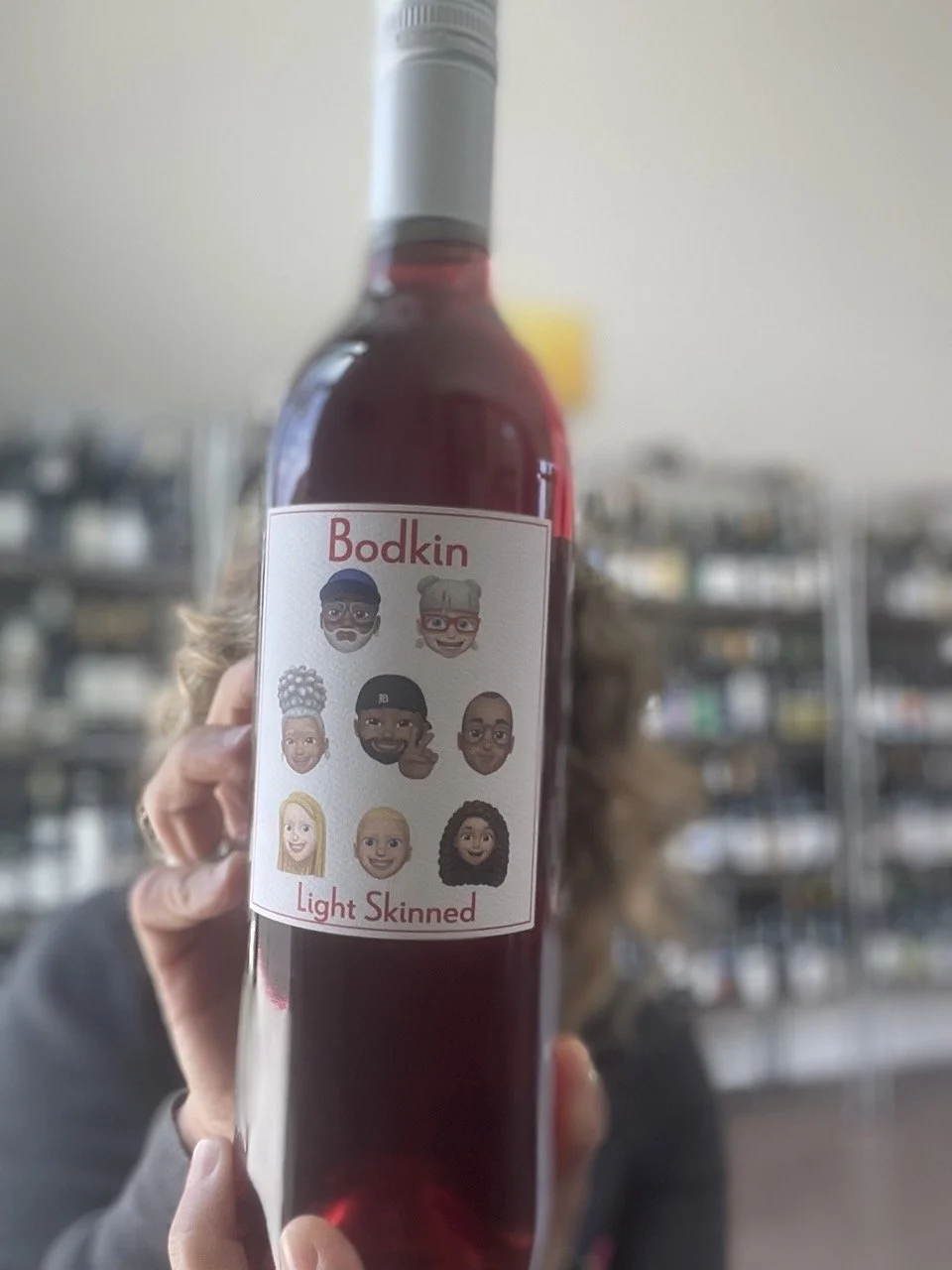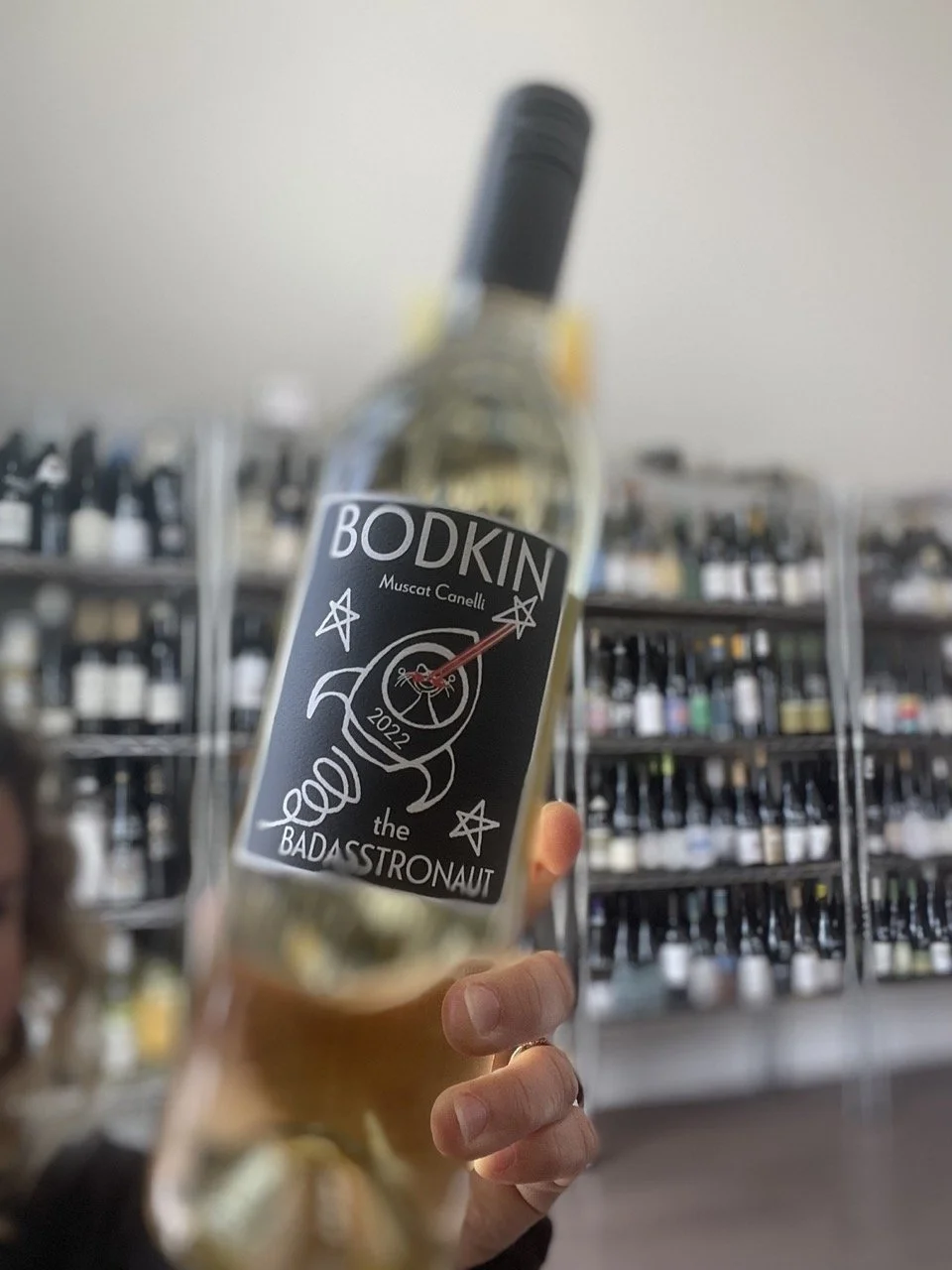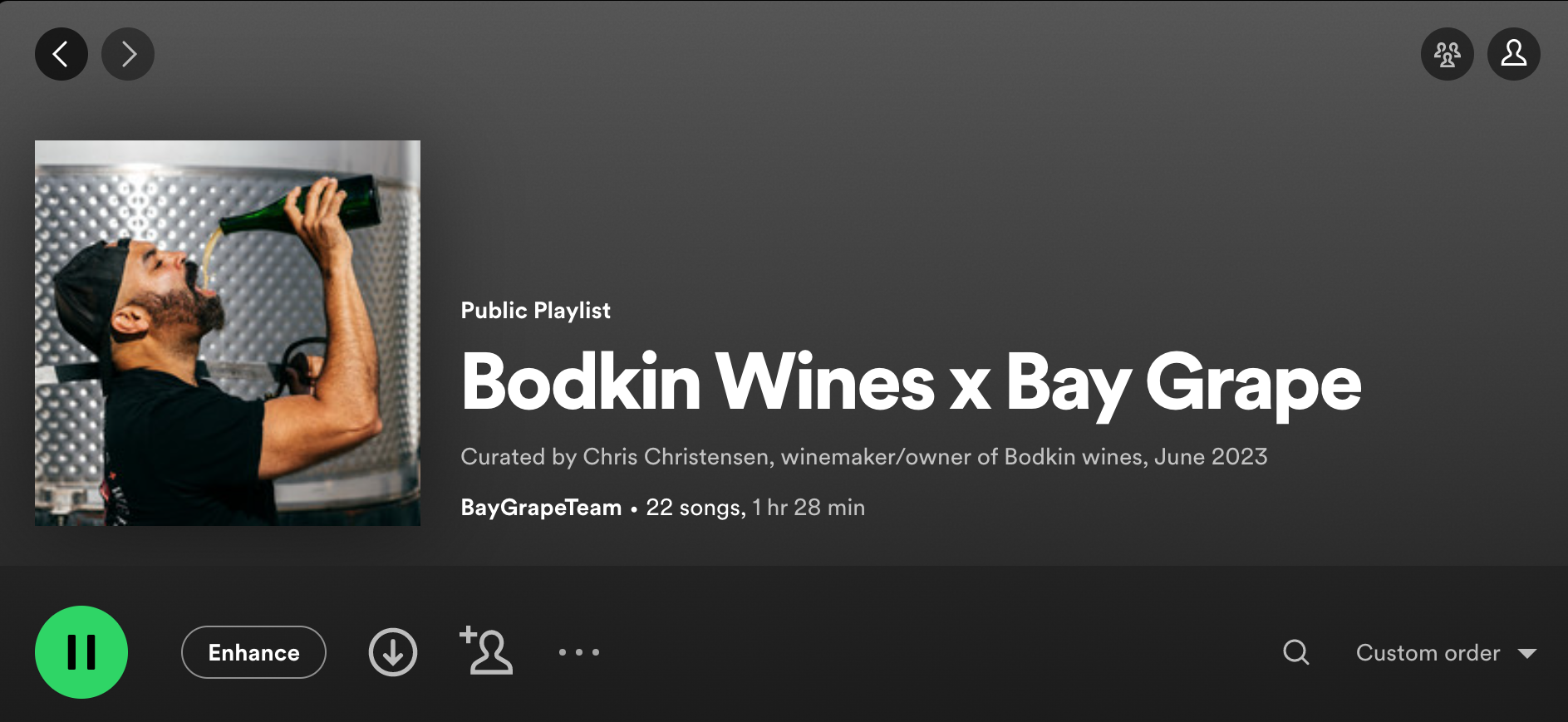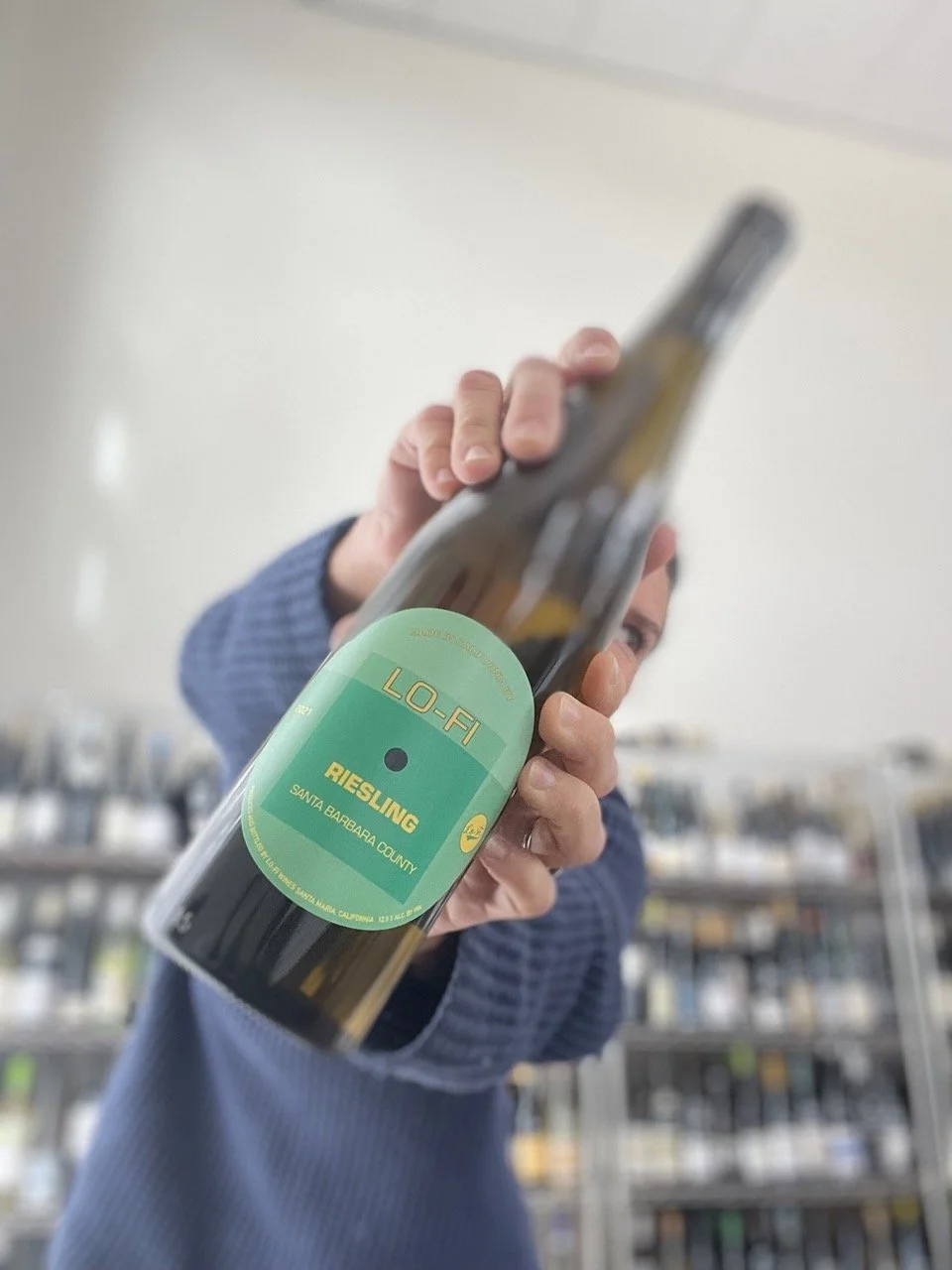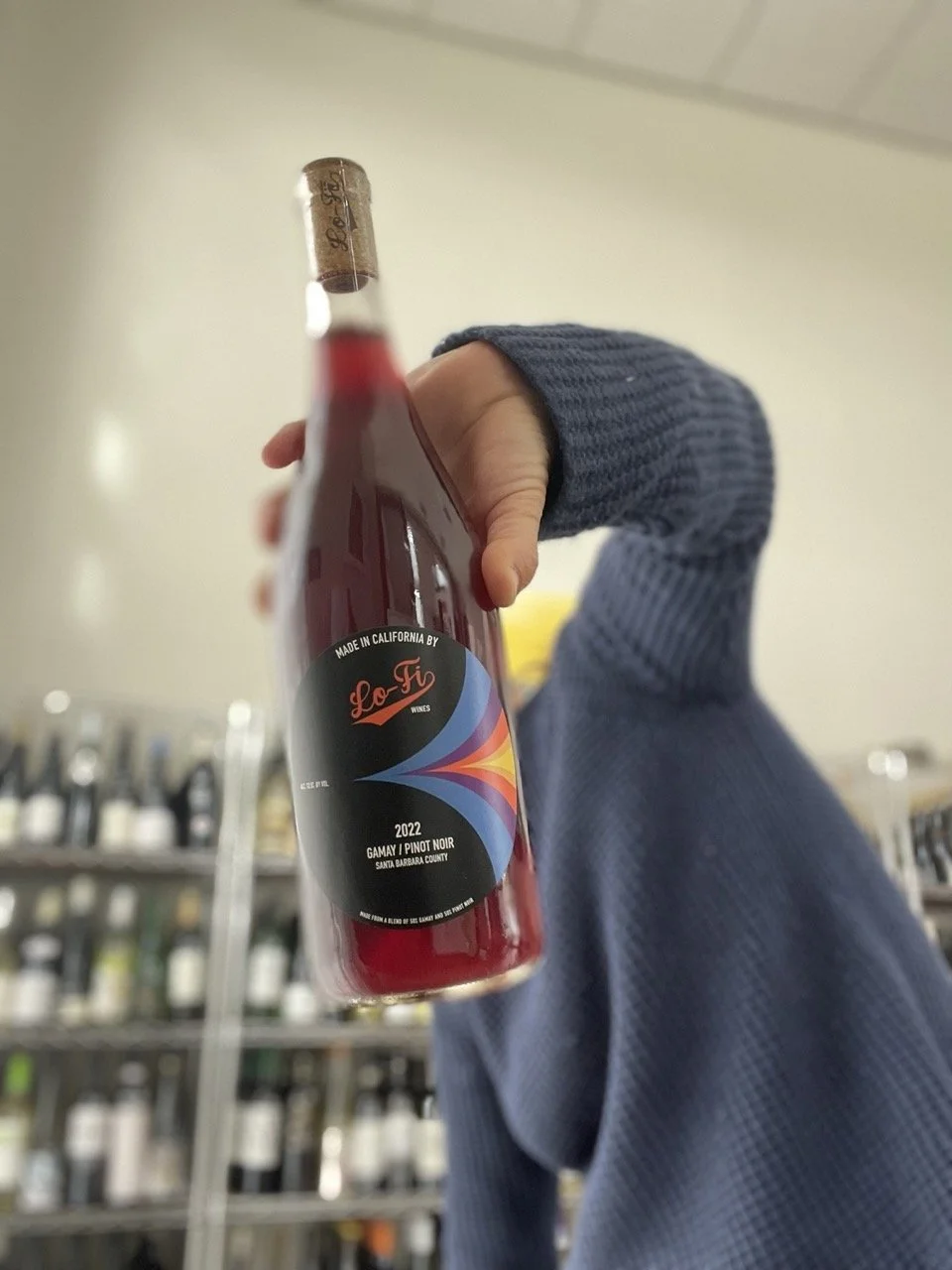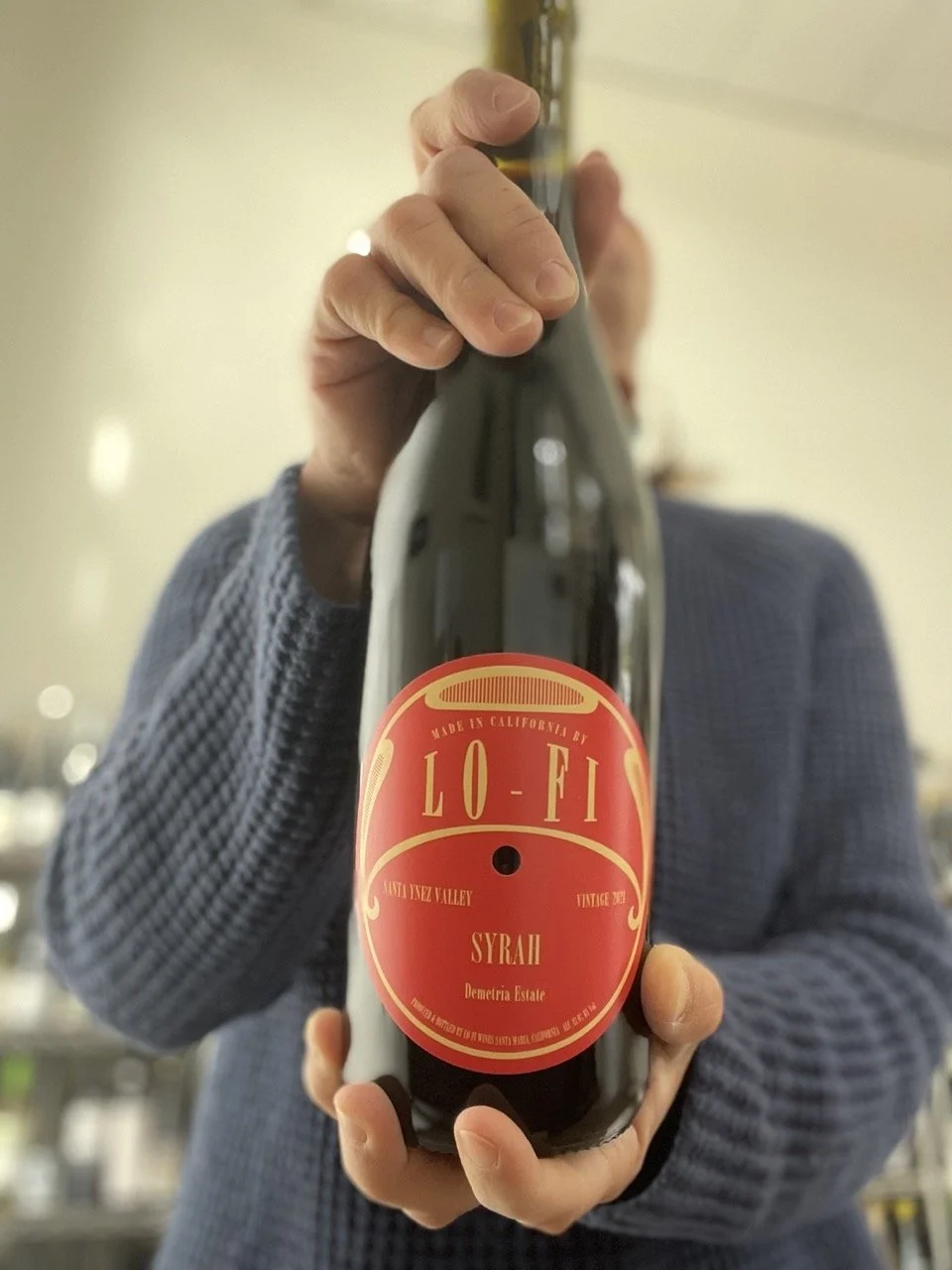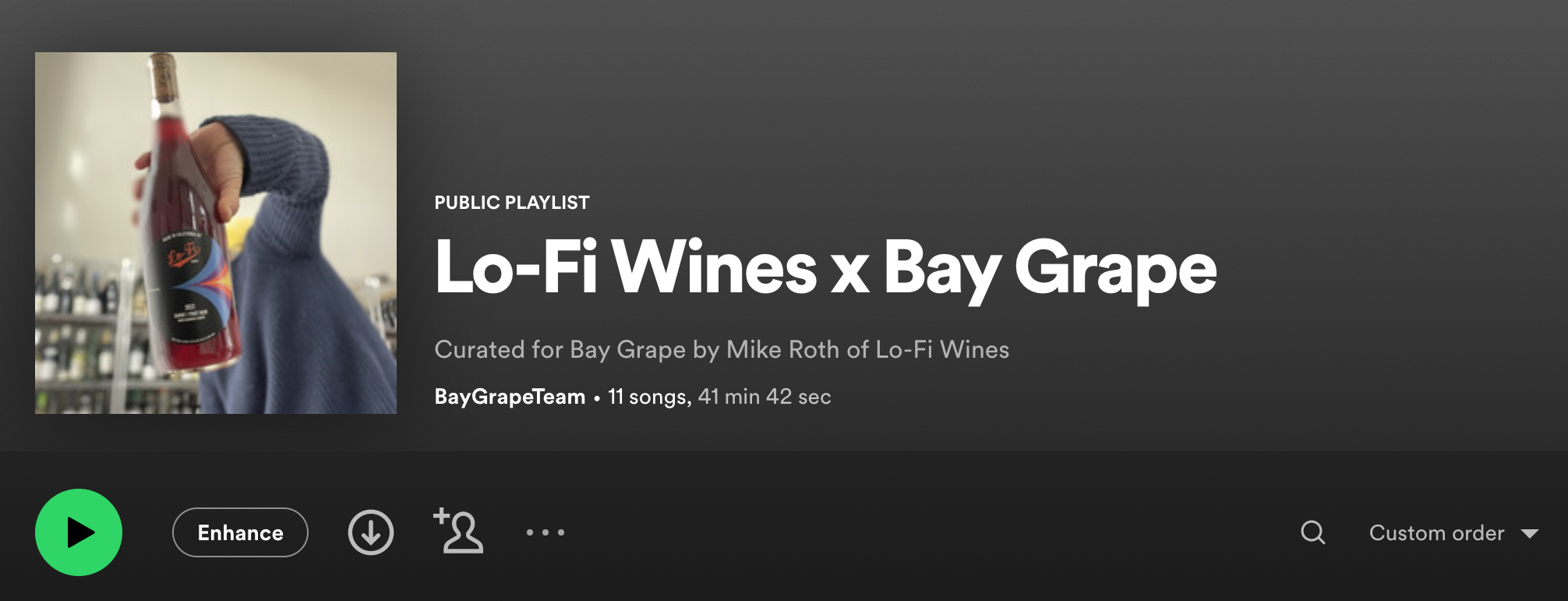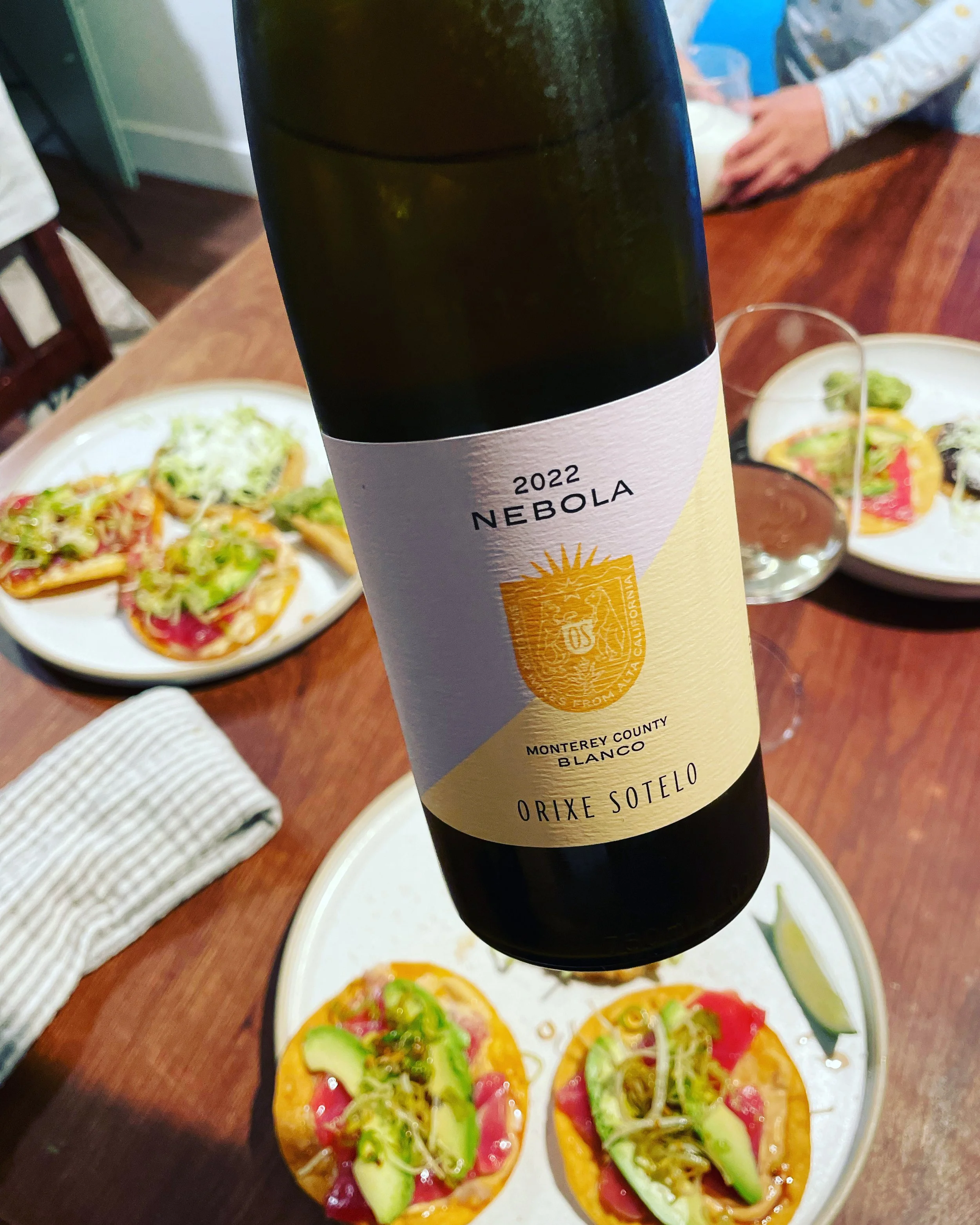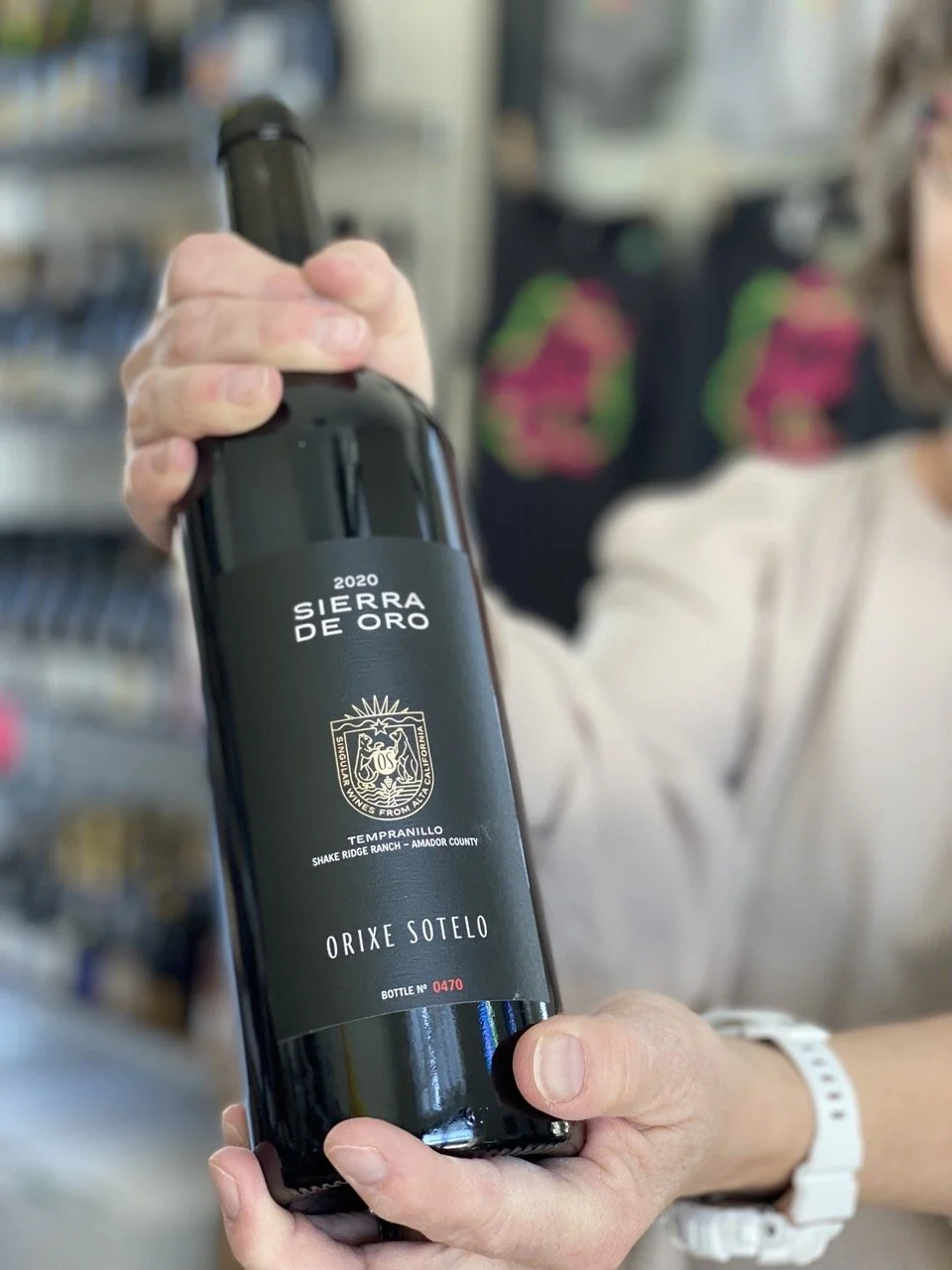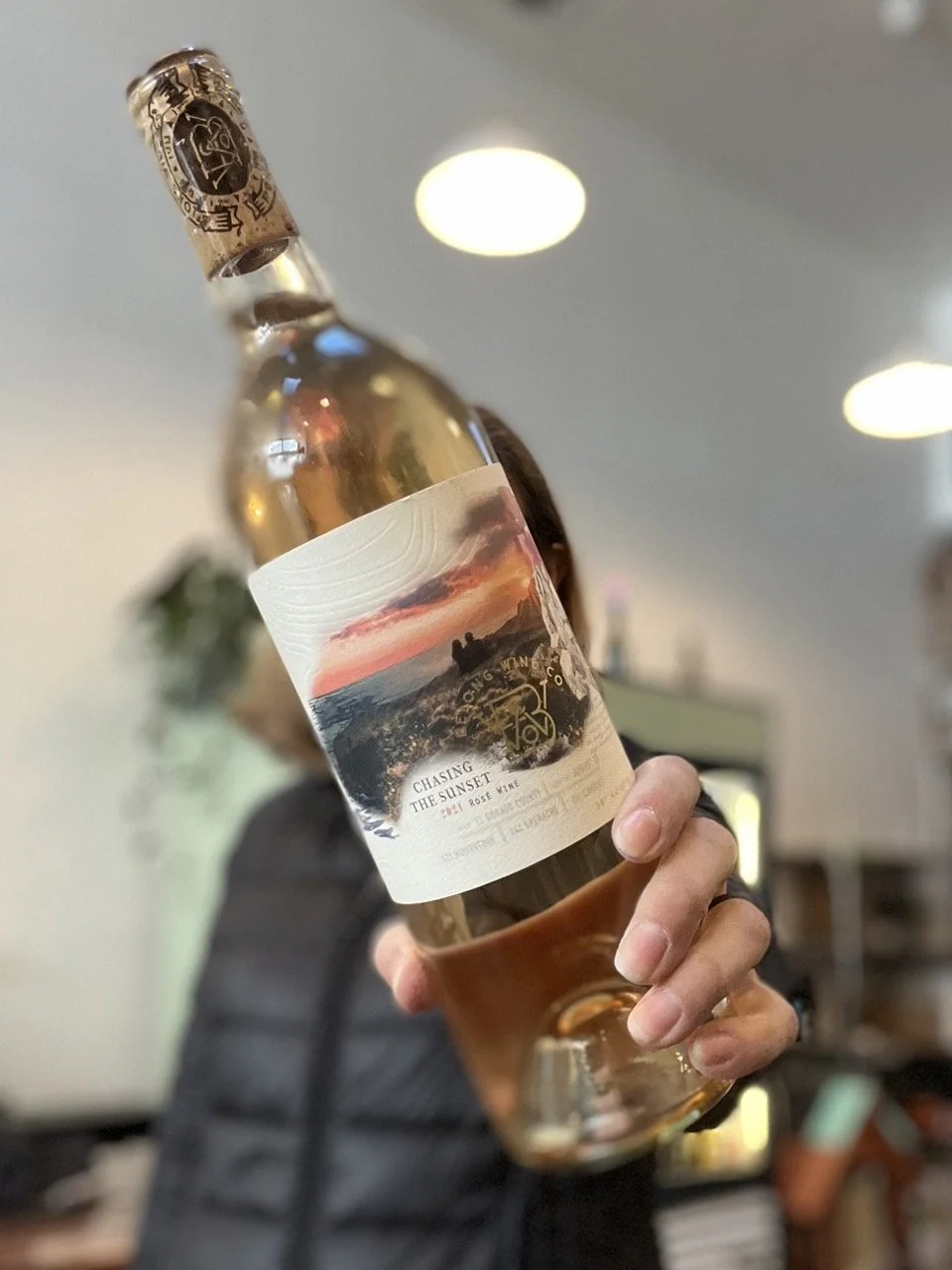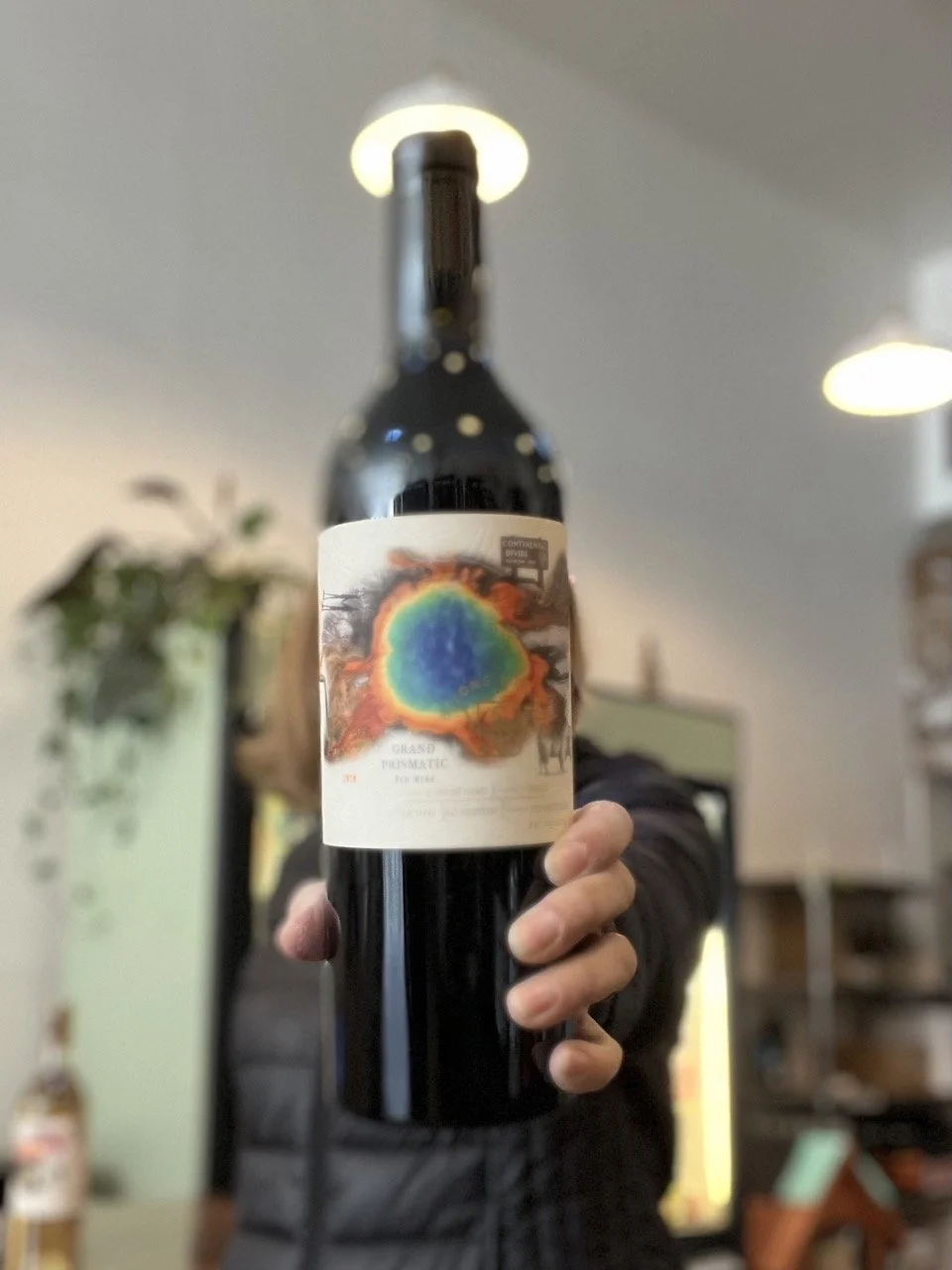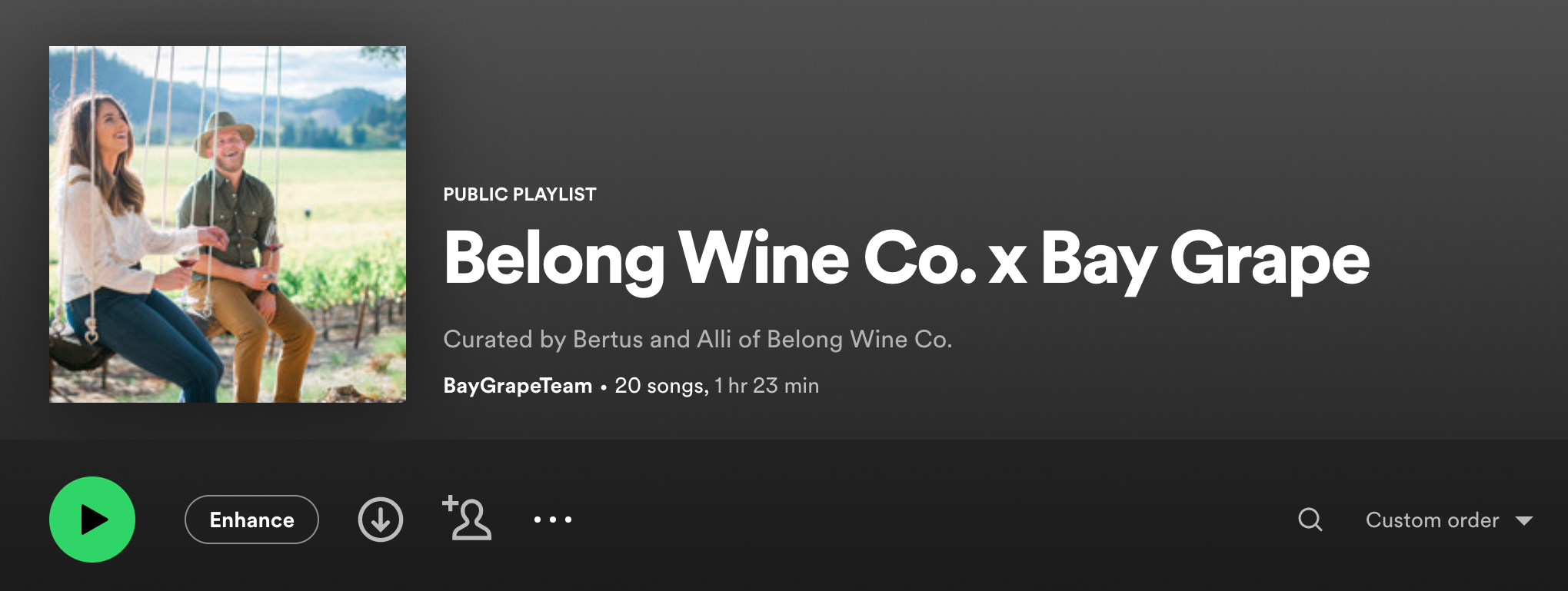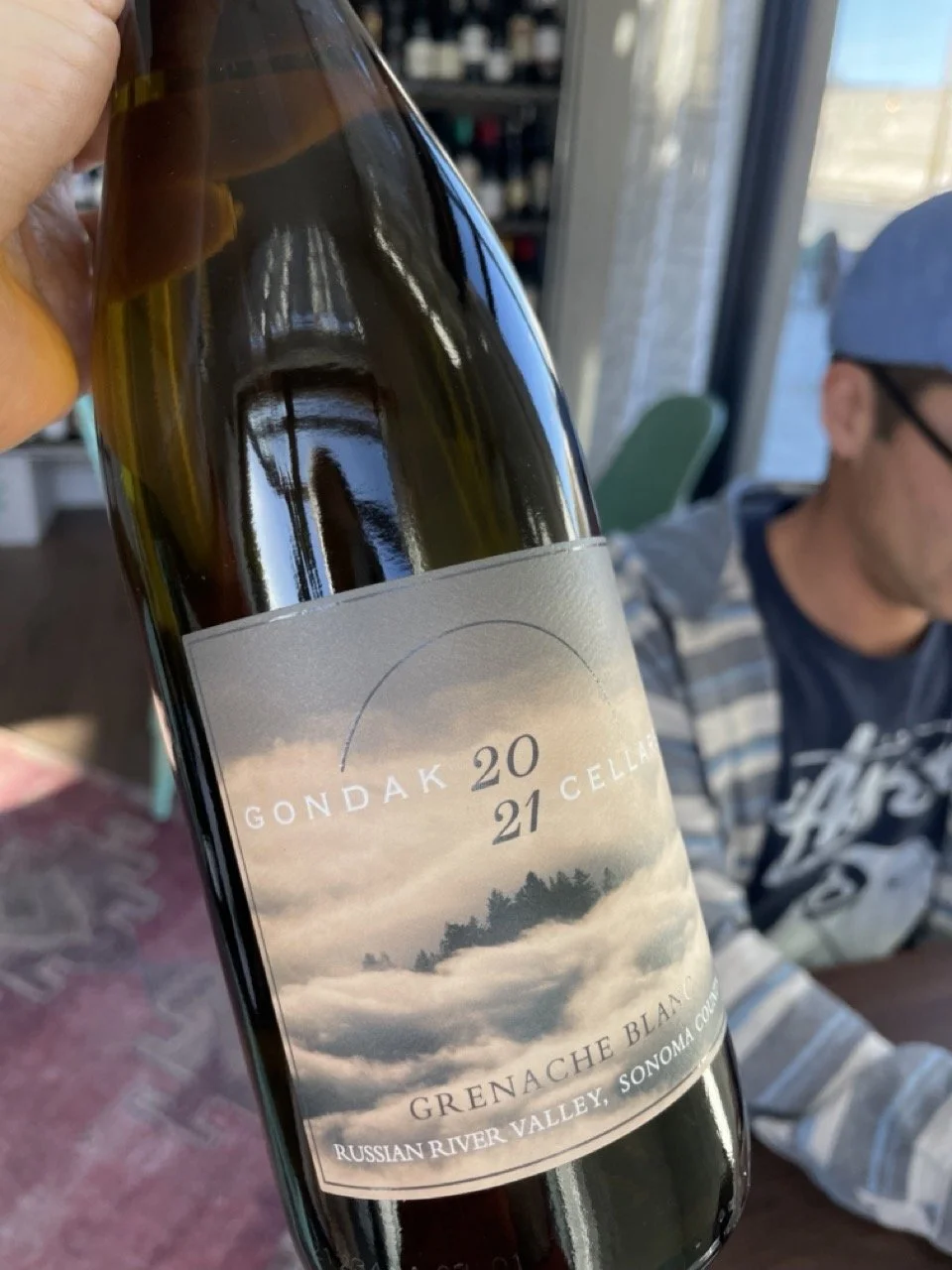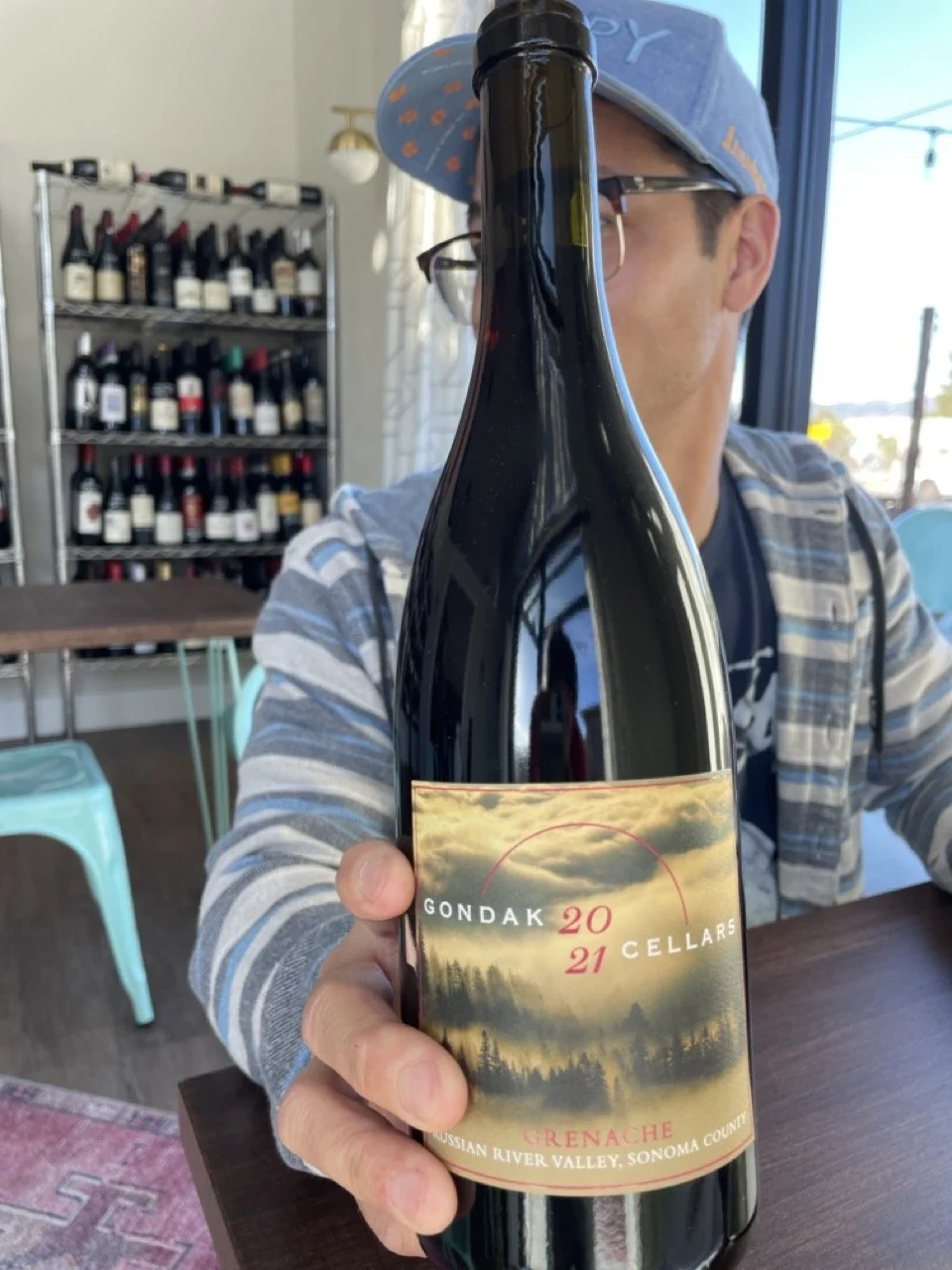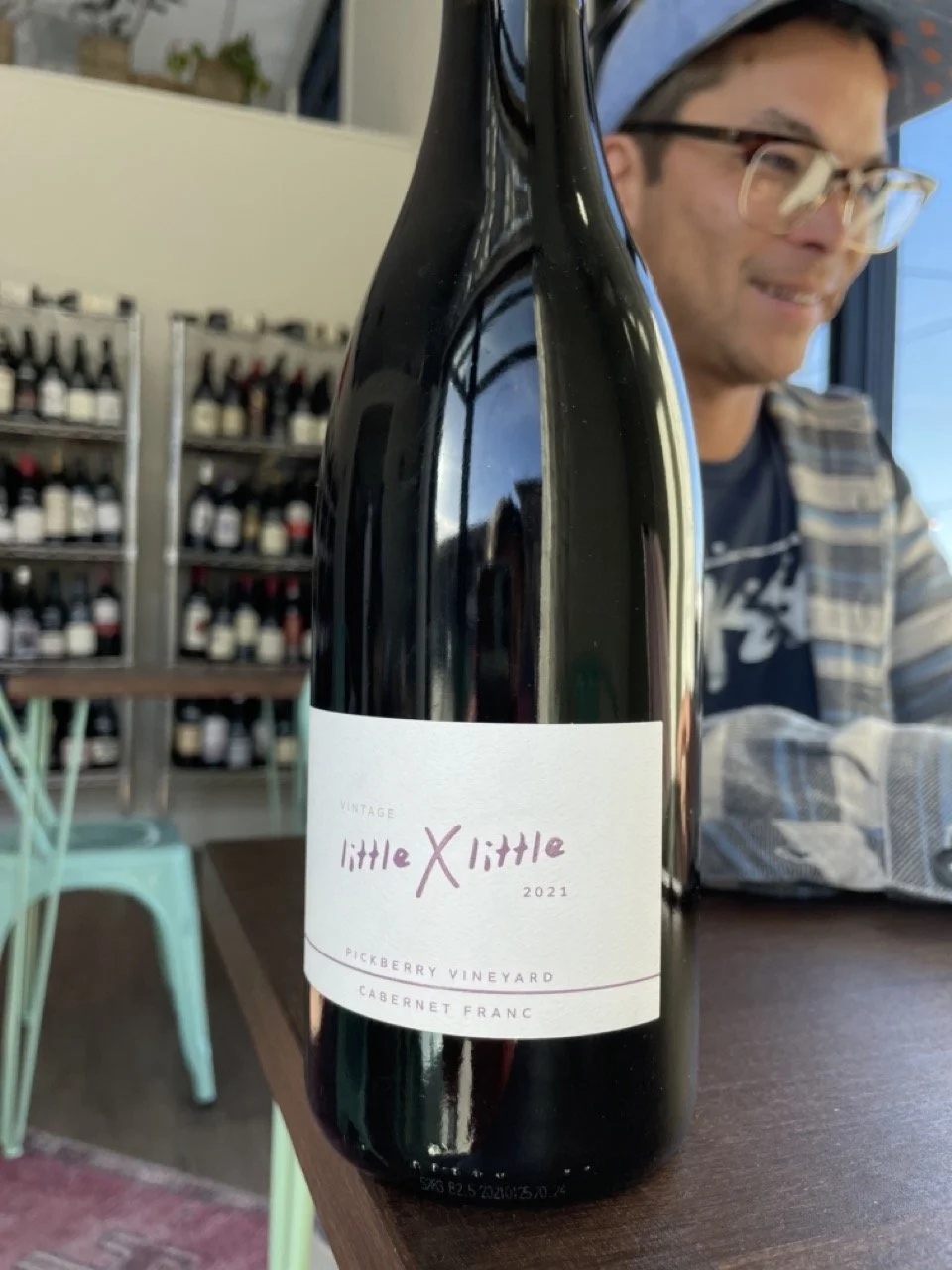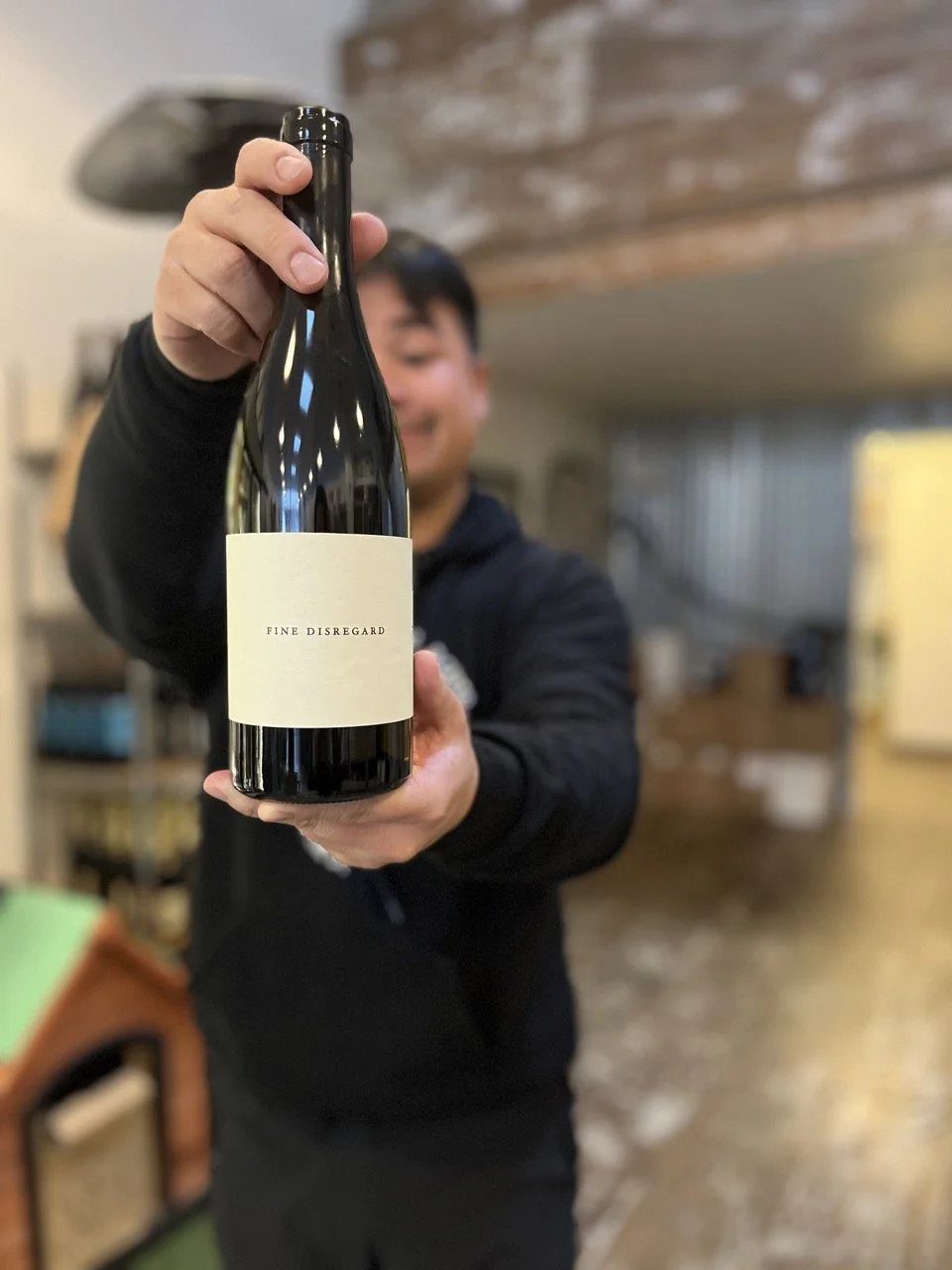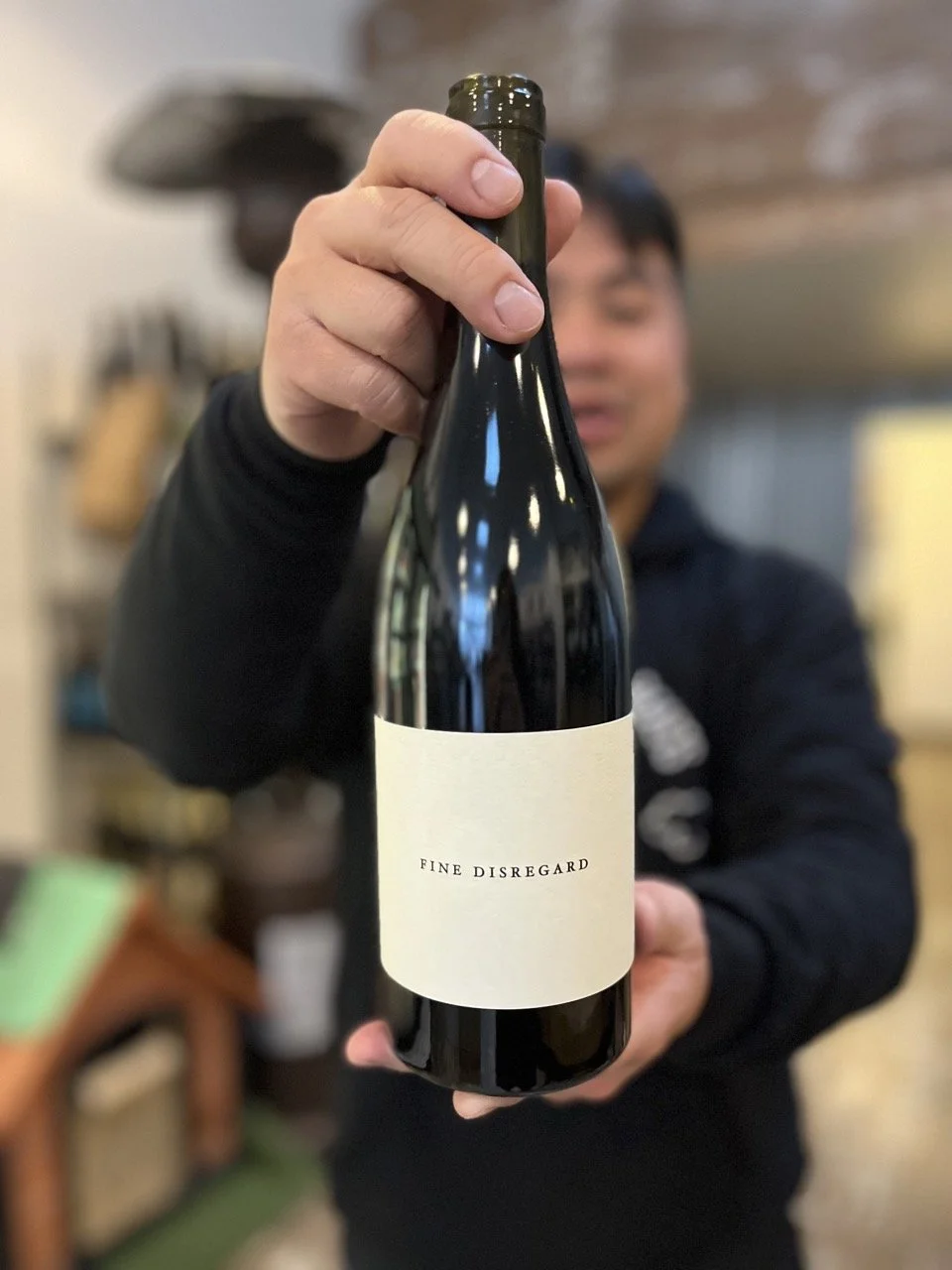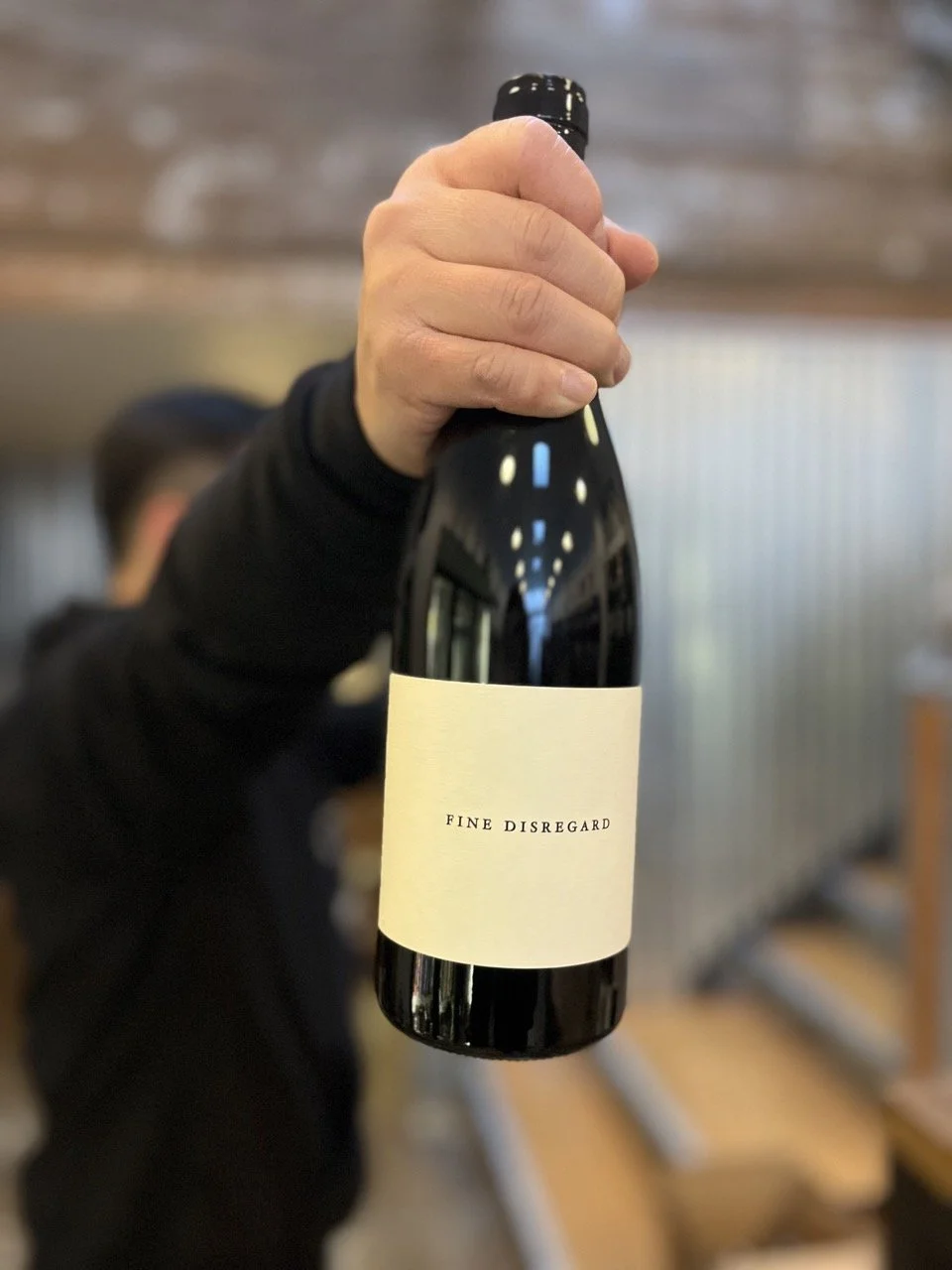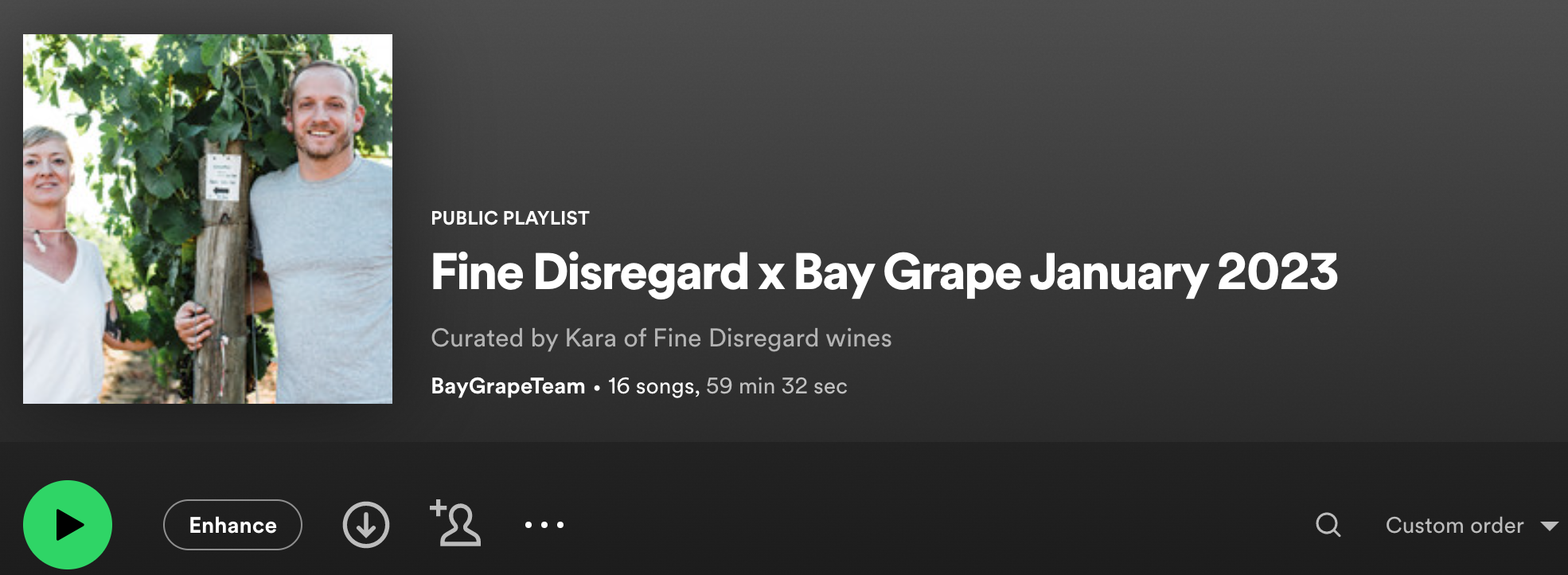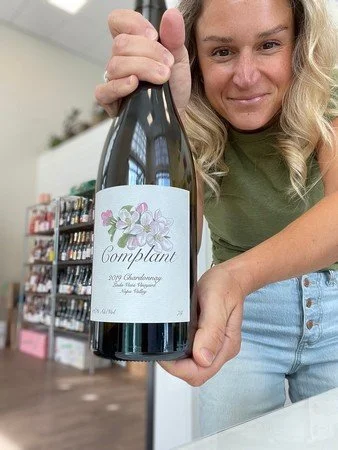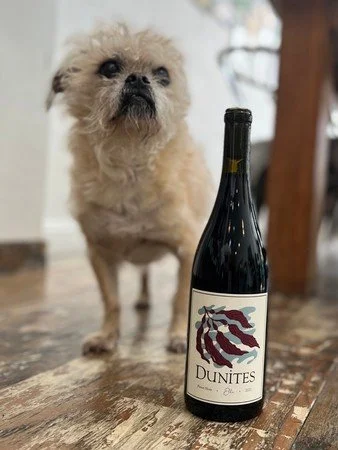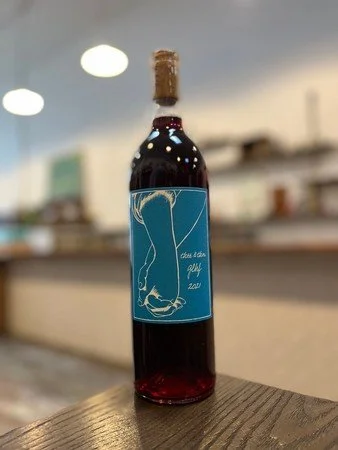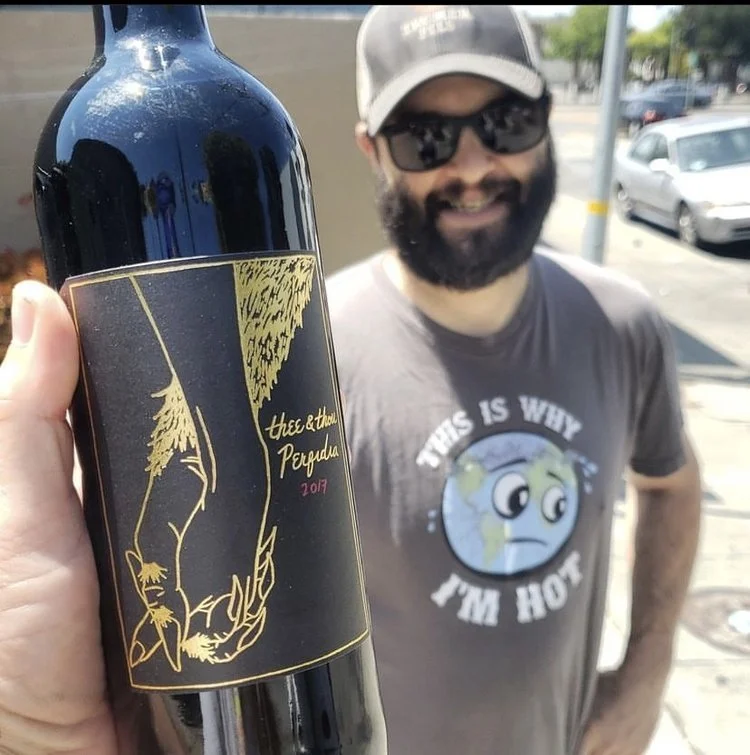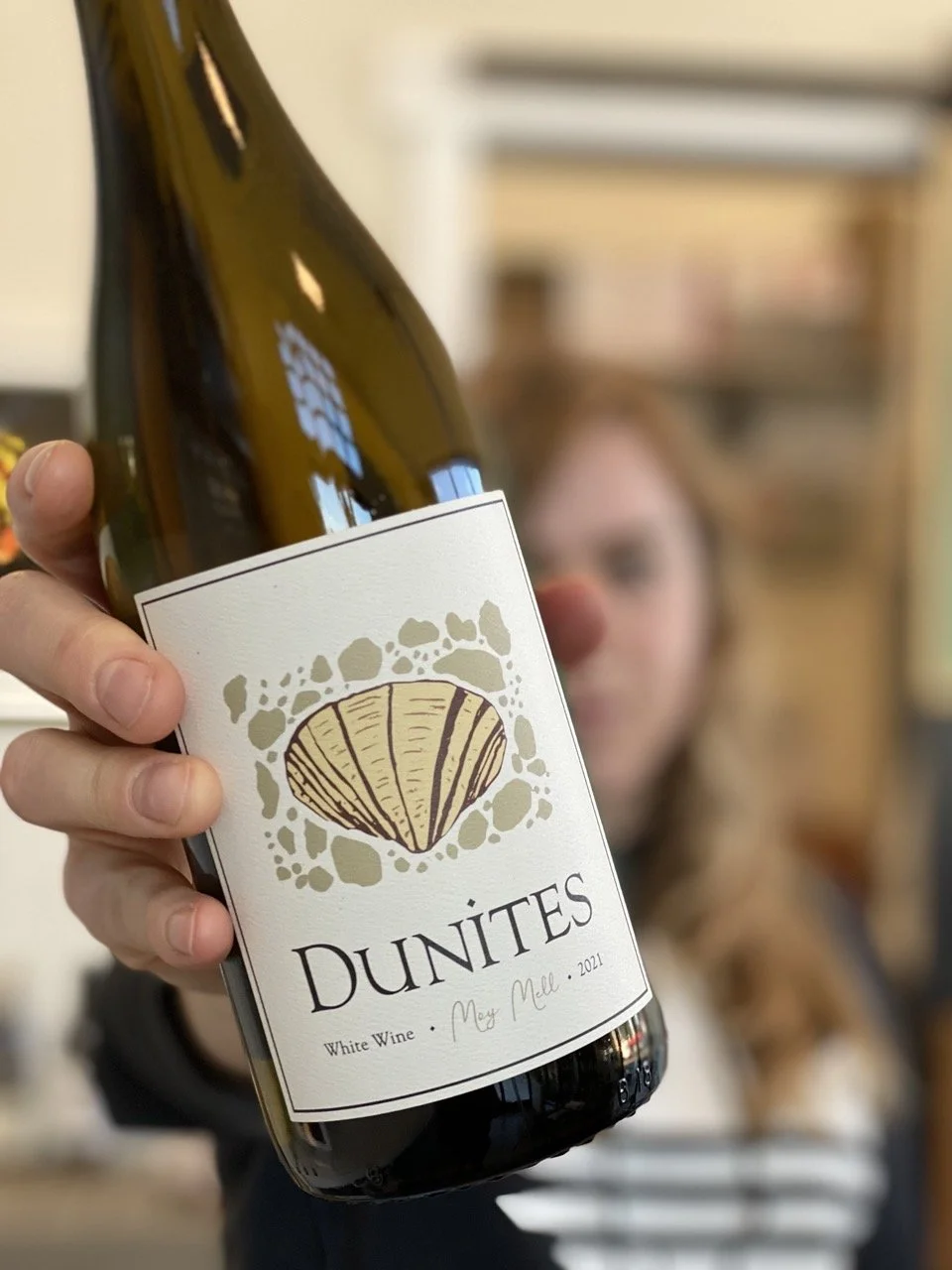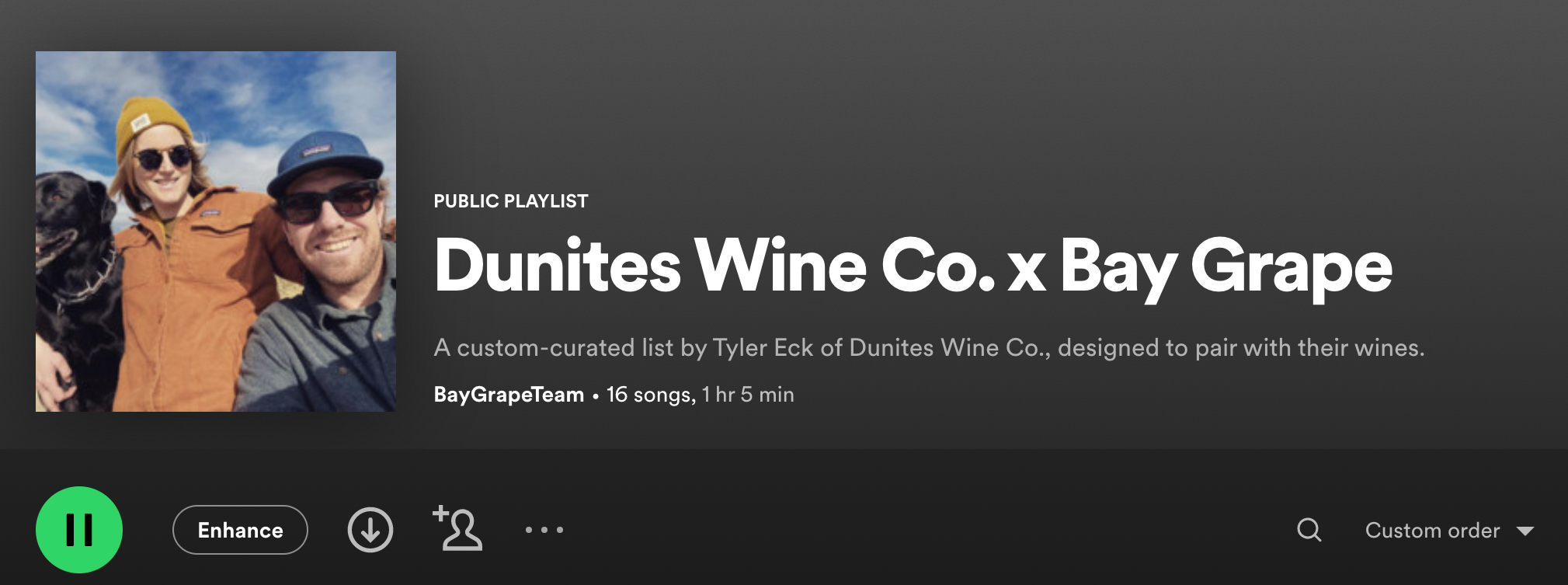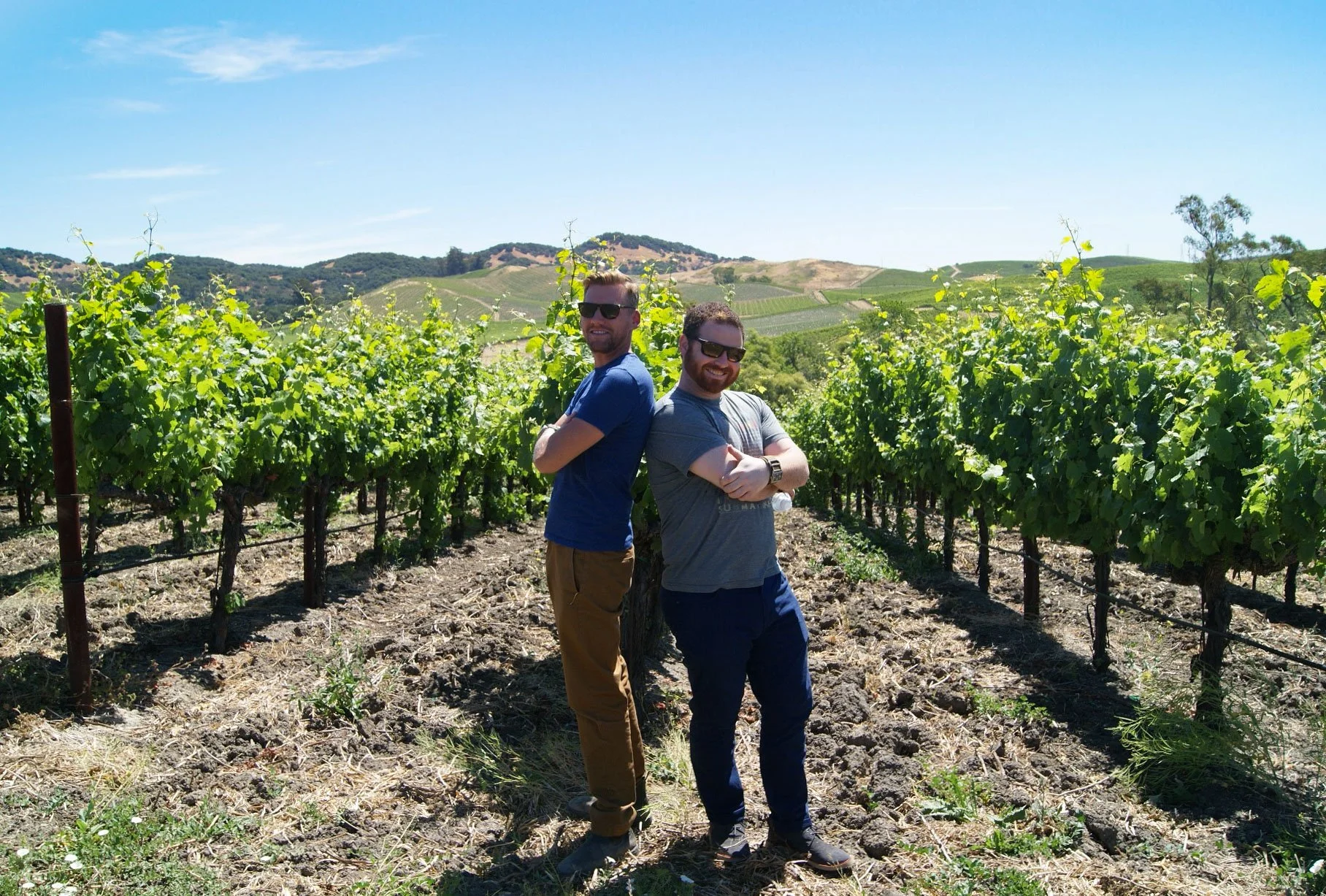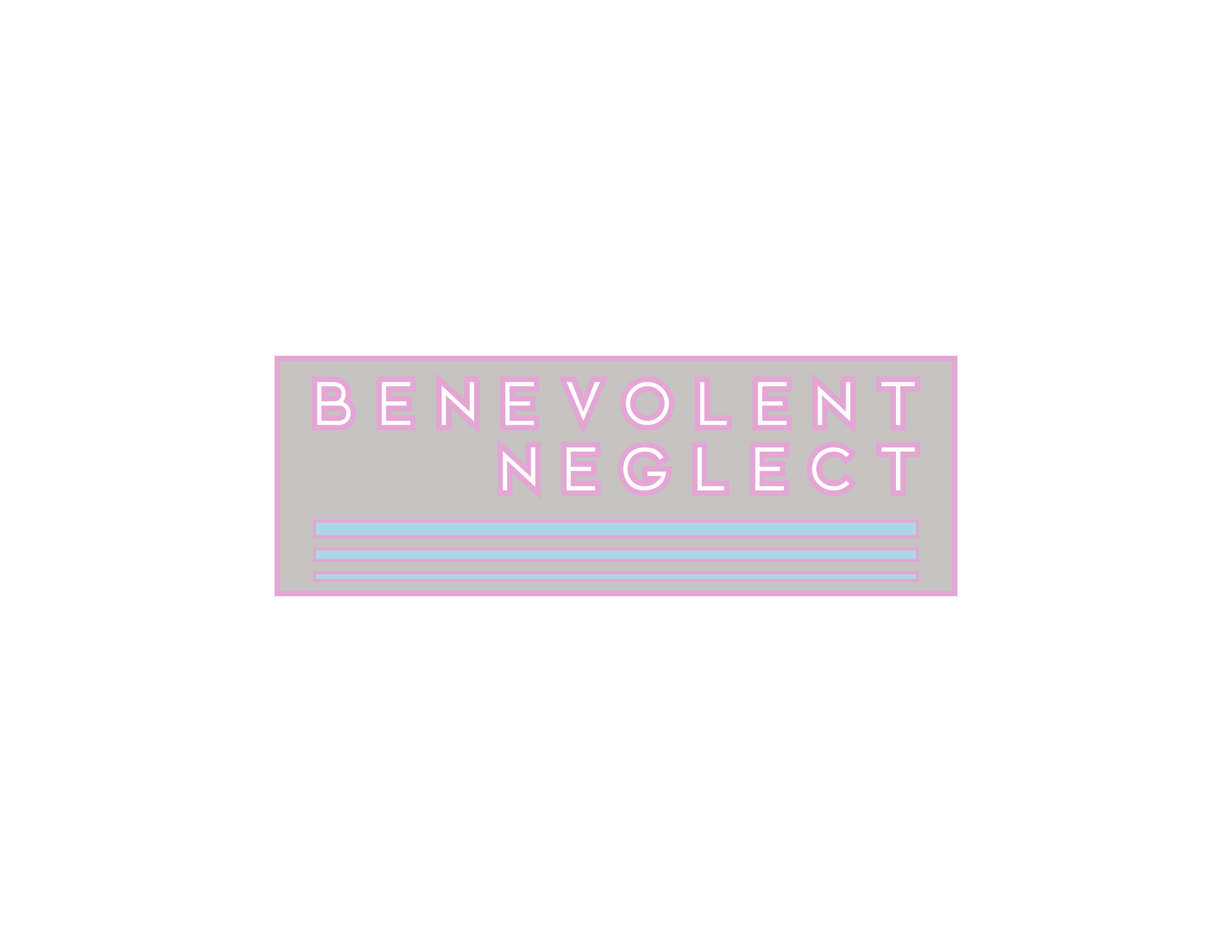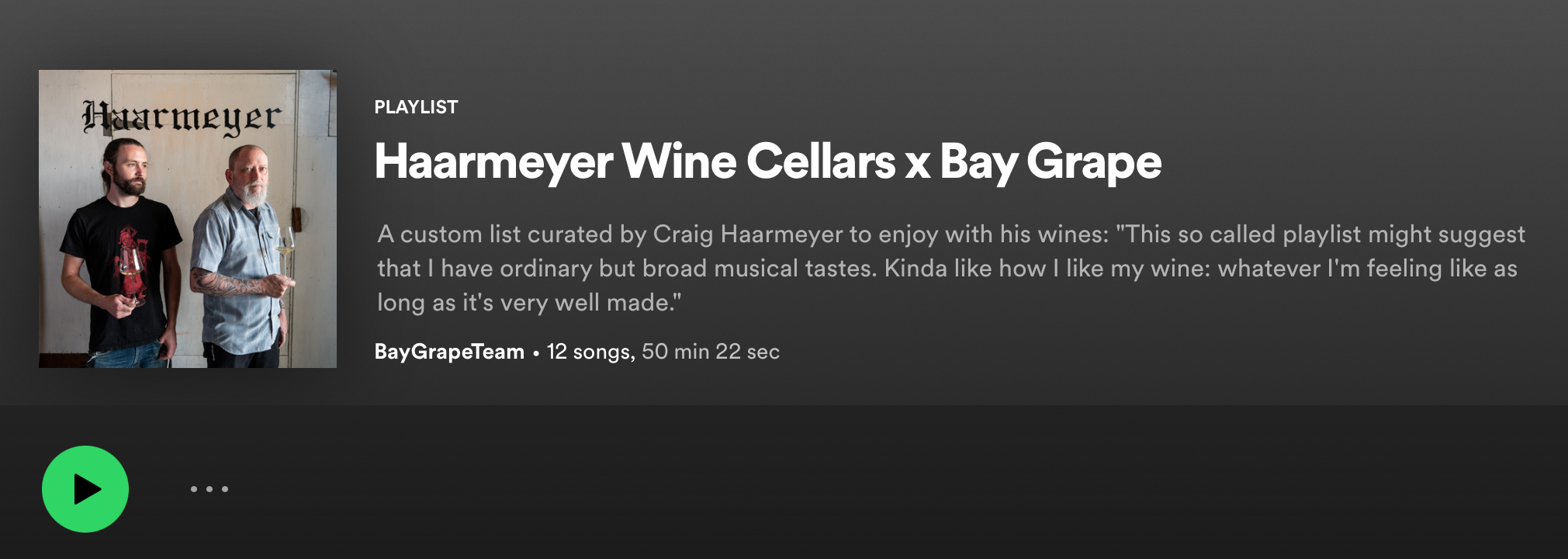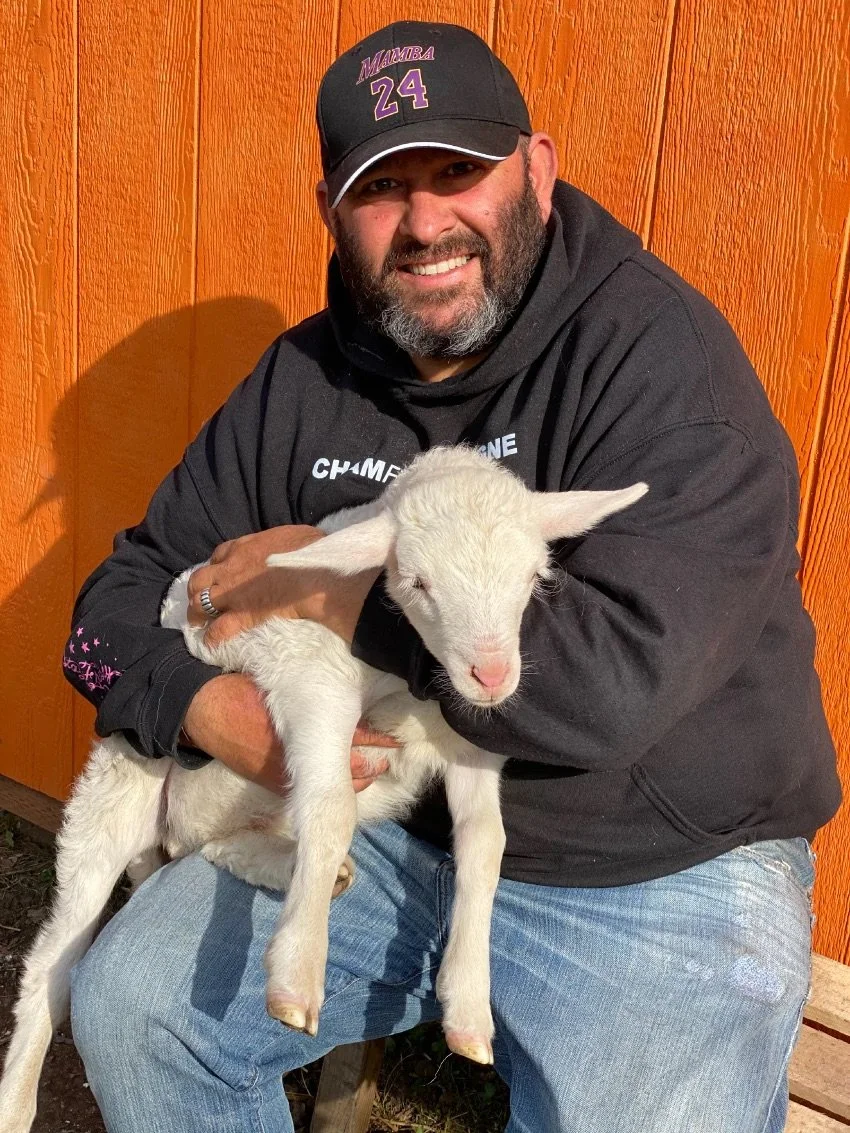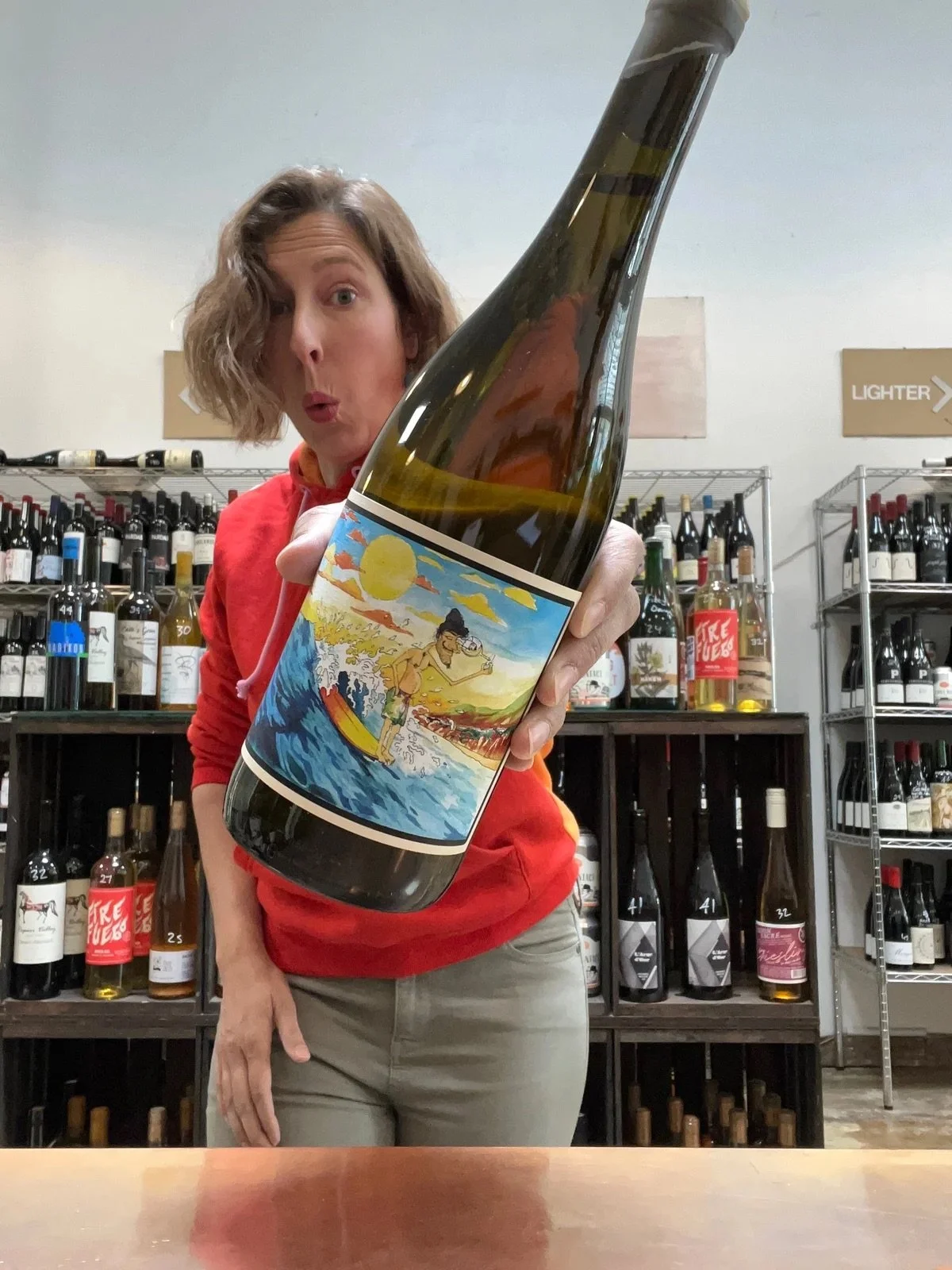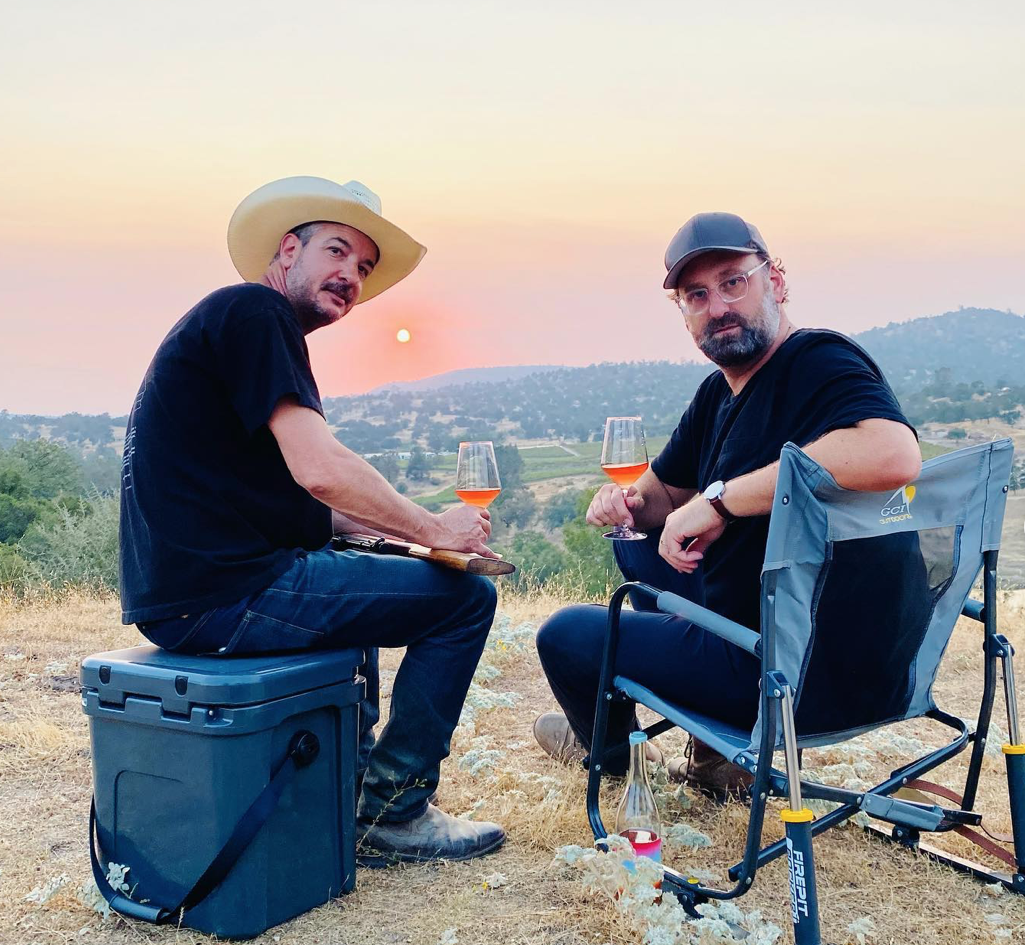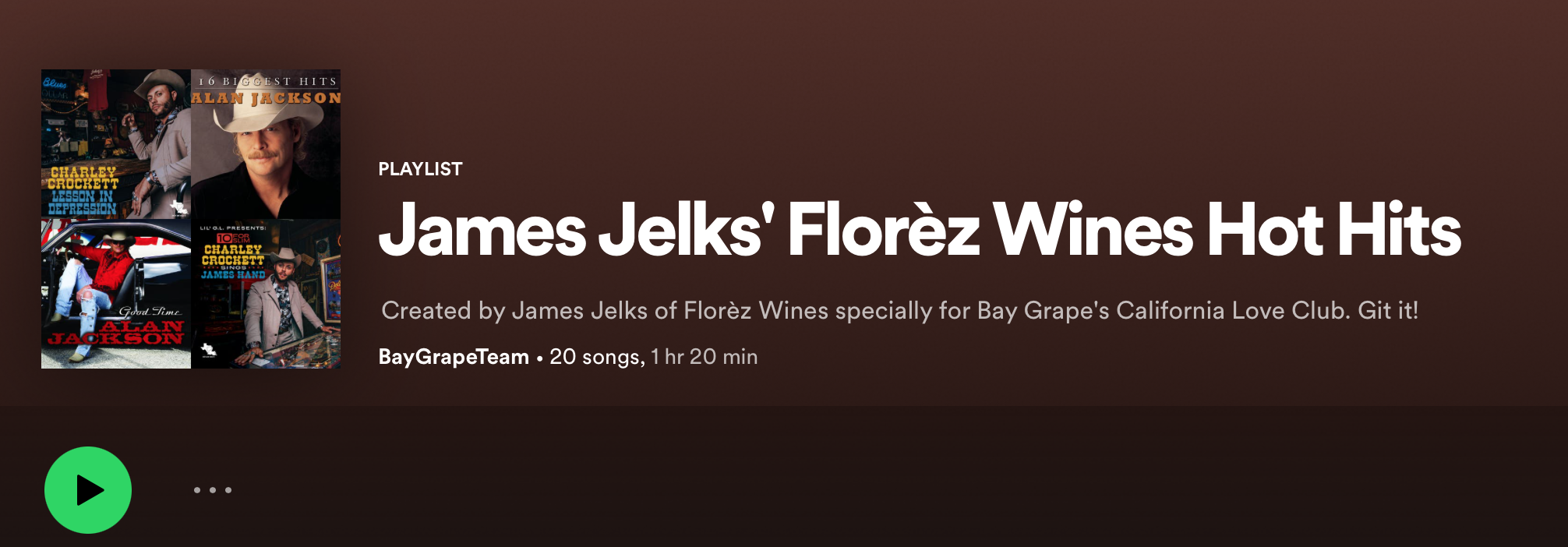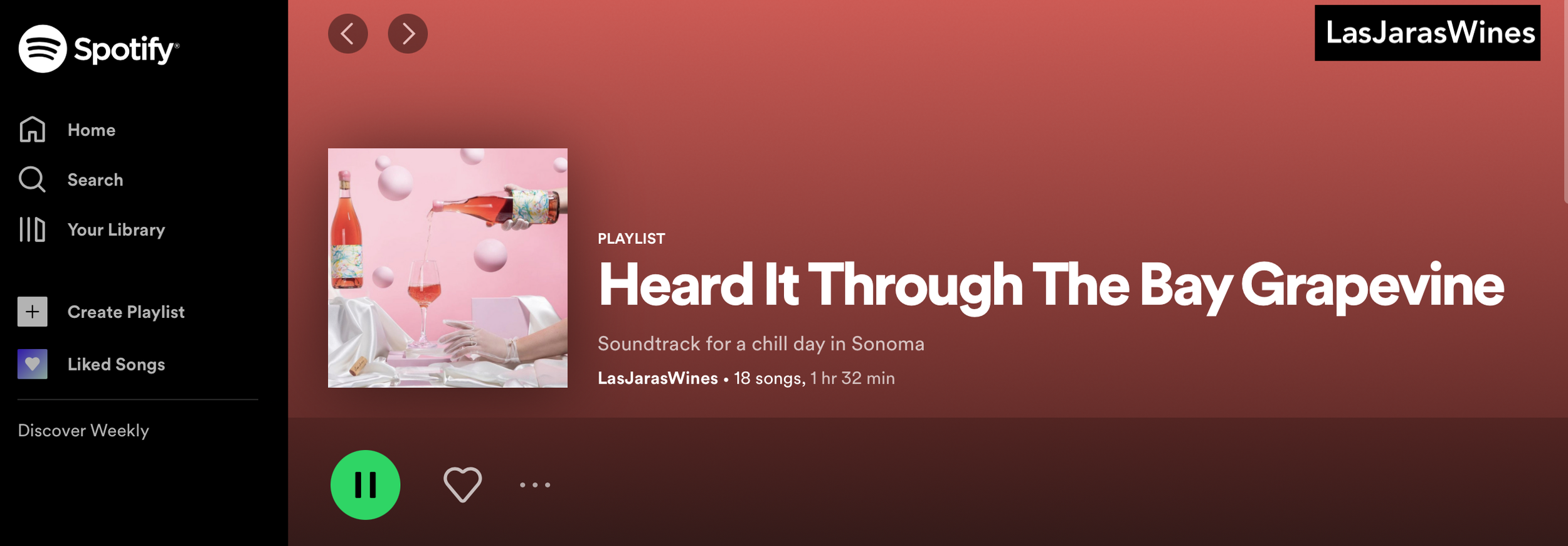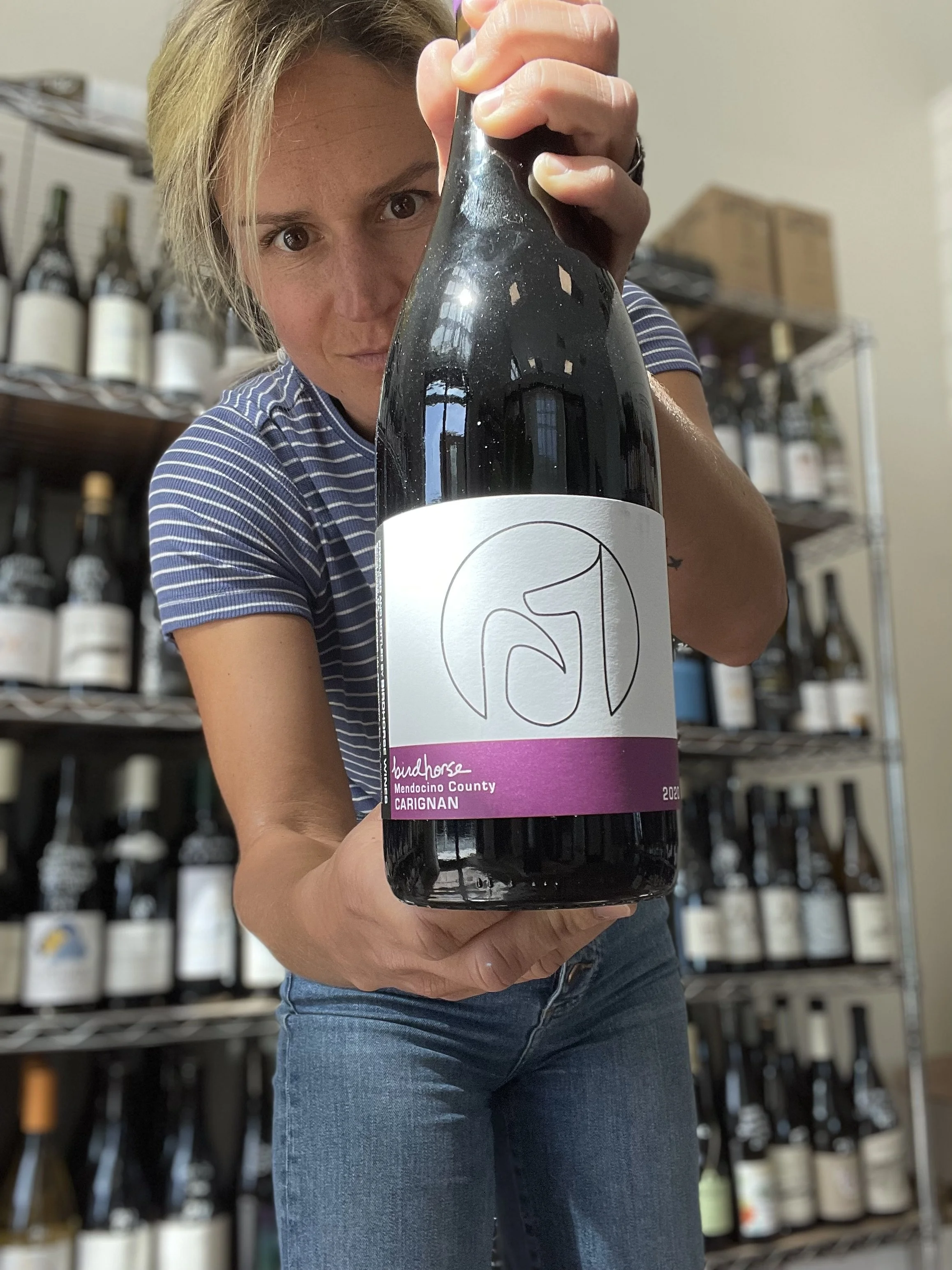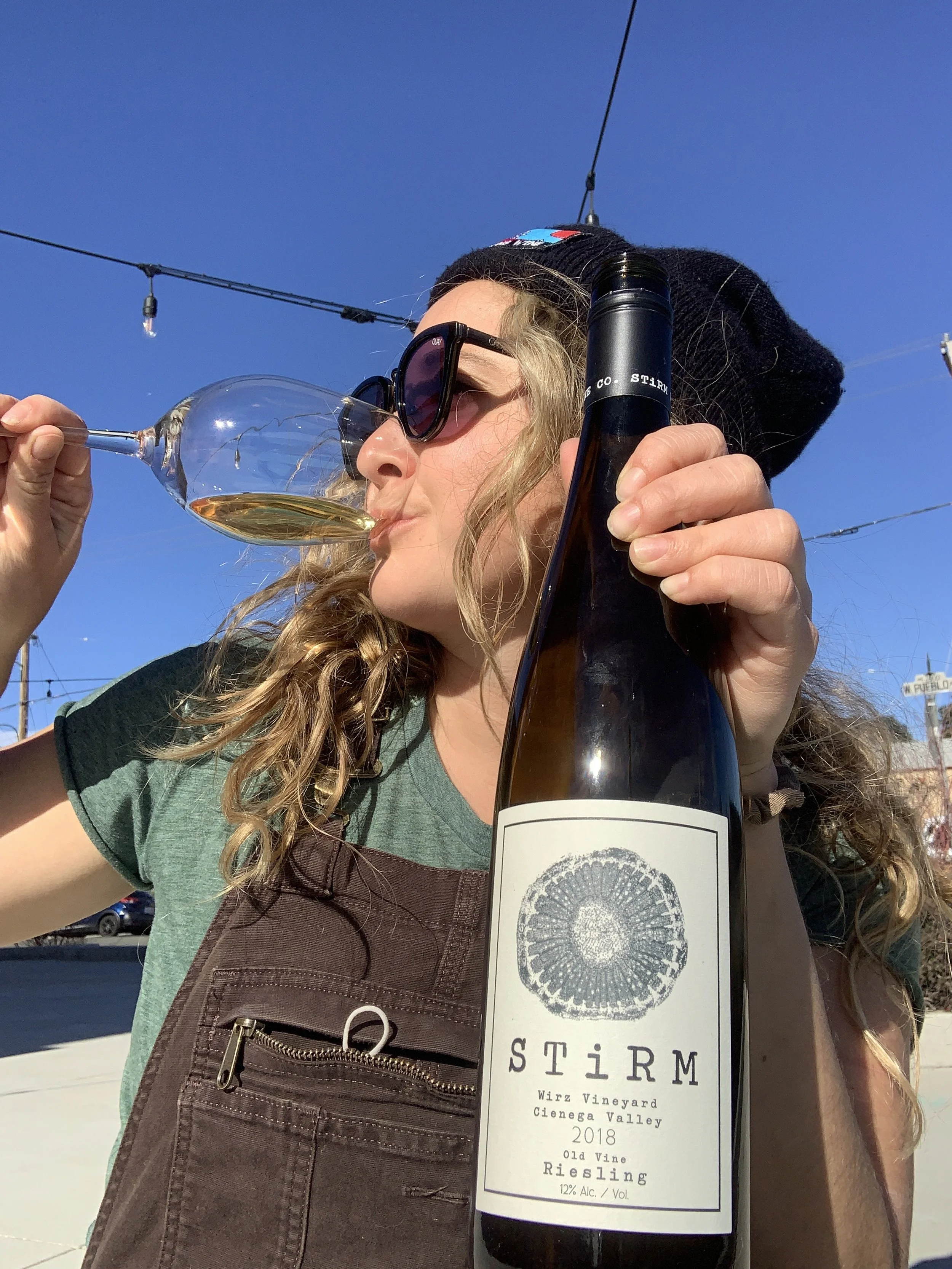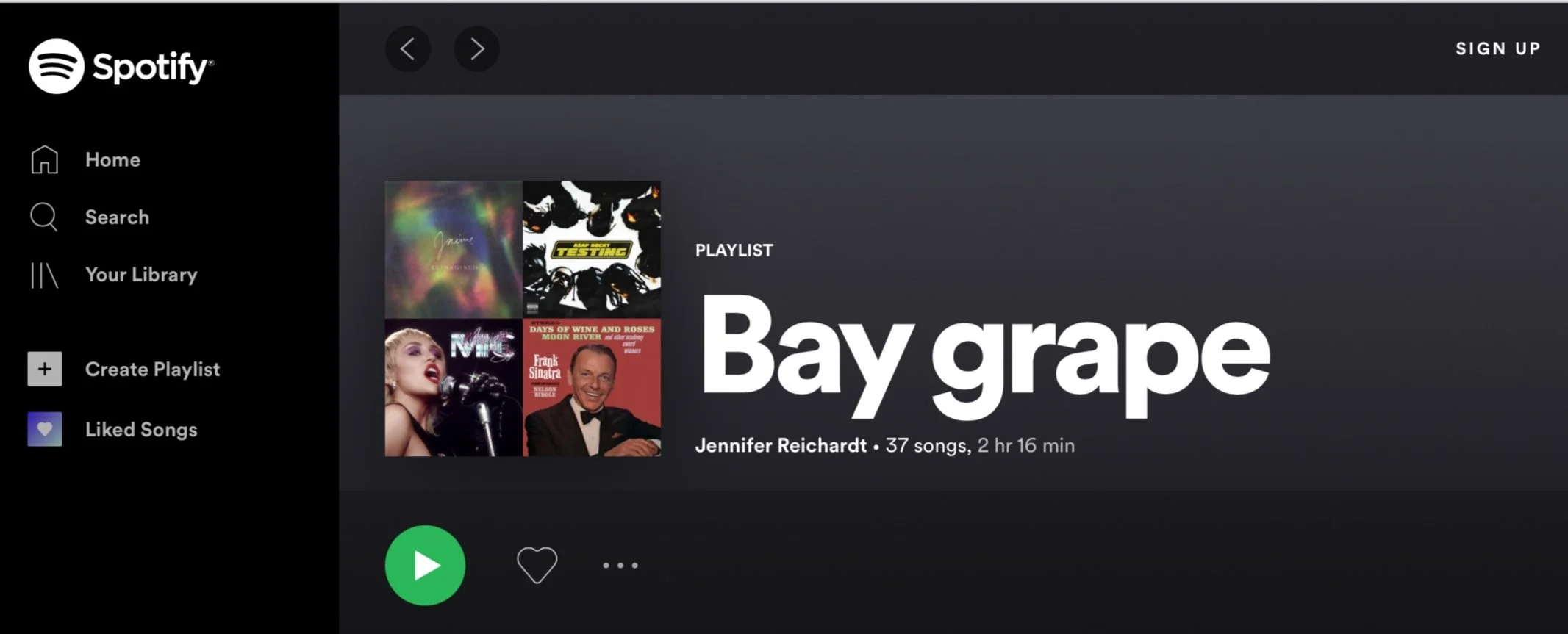California love
cave of wonders
You’re IN! Thank you so much for being a part of our California Love (or Best of CA Love) Wine Club. We’re thrilled to introduce you to some of the most exciting up-and-coming California producers showing off the diversity of styles, varietals and innovation happening in our great Golden State.
Have fun perusing our members-only content!
Want to browse your order history and re-up on some past favorites? Log in to your member account to shop:
Wonderwerk
How did you get into wine, and what was or is your inspiration?
Andrew and I got started with producing our own wines in 2017, under the “Discovino” moniker – we later transformed into Wonderwerk. Andrew studied enology and viticulture at Fresno State and had been working in various wineries like Tyler Wines, Deovlet, etc. in the Santa Barbara/Central Coast area prior to us starting our own thing. It was there that he met Ryan Stirm and when Ryan was already making his own wines in Aromas, CA – we joined in with him at his facility alongside Megan Bell of Margins, James Jelks of Florez, and more. We all started out of the same cellar but have since gone on to do different things. Andrew and I have known each other since High School back home in Virginia. Our inspiration is generally “What if the Pet Shop Boys made wine?”
What's your reason for being, or your mission, or what drives you to keep doing what you uniquely do?
We are really flavor oriented – we think about winemaking in terms of building flavors and less about overtly terroir or technique driven. This is an approach we’ve been cultivating for a few vintages now and it’s working well for us. All of our wines start as a finished concept in our head and then we go out and find the grapes that will help us build them into a reality.
Can you talk about your overall wine style, farming style, general cellar practices? Do you have any short term or long term goals moving forward?
We are very clean in the cellar and very meticulous. We’ve started using a lot of software and instruments to help us track fermentations and lots and how we process different grapes in different ways for precise record keeping that allows us to build on information from vintage to vintage. This is how we construct complex blends to get to the final concepts.
How do you decide on the grapes and vineyards you're working with?
We’ve built up a repertoire of vineyards and growers we work with over the years, it took us a while to really branch out and start working with a variety of sources, mostly in the Clarksburg/Lodi area. It’s been very informative to get out there and explore and meet growers who’ve never even heard of or had natural wine before, despite them having organic or Lodi rules farming practices.
What's your favorite beverage on a Monday? On a Friday?
Monday: concord grape spindrift
Friday: Langhe Nebbiolo
Please share a favorite recipe that pairs particularly well with one of your featured wines. Ideally this recipe is personal and a favorite to you, your family, or your lifestyle. If this recipe comes from a cookbook or online source, please provide attribution!! If it's off your dome, don't get too stressed about exact measurements or processes--give us a general gist, and we can take it from there ;) Also be sure to mention which wine (of the three we're featuring) this pairs with.
For a wine like Marinara We gotta go with anything Marcella Hazan, but this is a Marcella recipe that we always refer back to as a real comfort food: https://cooking.nytimes.com/recipes/1015181-marcella-hazans-bolognese-sauce
Also, her simple homemade tomato sauce recipe is the best!
Imagine you're having Your Best Day Ever, complete with stops at all of your favorite shops, bars and restaurants. Where are we going and what are we doing?! Please include at least two local (to your home or where you make your wine) restaurants, at least one local retail shop, and at least three total additional items (e.g. a favorite soap you use, your favorite pair of shoes you're wearing on this day, a favorite game you're playing or book you're reading, a favorite park or museum you're visiting, a favorite show you're watching, etc.). Brief descriptions with what you're ordering at each place, why you love it, and so on are appreciated to make it more personal!
Favorite day on the east side in LA – where we got our lift off from:
Start the day at Clark Street Diner for the best high quality diner breakfast of hashbrowns, eggs and bacon
Then we’d make our way to Glassell Park to get a haircut at Castro’s Barbershop and maybe grab a coffee at Loquat – Castro’s is hardcore Dodger’s territory so we’d be sporting a blue LA hat prior to getting a haircut for sure.
Eventually we’d sneak off to Mario’s Italian Deli in Glendale for a deli sando and grab some italian sodas while we’re at it
Finding ourselves back in Silverlake we’ll pop into Silverlake Wine to see what’s on offer – this was really where we zero’d in on natural wine back in the day and we still swing by all the time
Since it’s LA – we’re driving pretty much everywhere and while we drive we’re going to have either Vinepair, Business of Drinks or a similar podcast on
Across the street is the classic Red Lion tavern, a great German beer hall that’s a mainstay legend of the Silverlake community
Maybe we’ll go for a stroll around Echo Park lake and at the end of the day make our way to El Prado or Tilda for a glass or two of wine afterwards or even to Ototo to check out the sake list and some Japanese izakaya snacks
“We’ve been raving since our youth and it’s still very core to everything we do – if you visit our cellar you’re just going to hear dance music all day long!”
<iframe style="border-radius:12px" src="https://open.spotify.com/embed/playlist/70cmVz77DunEMZ7Sg0Iudx?utm_source=generator" width="100%" height="352" frameBorder="0" allowfullscreen="" allow="autoplay; clipboard-write; encrypted-media; fullscreen; picture-in-picture" loading="lazy"></iframe>
Beauregard
Interview with winemaker Ryan Beauregard of Beauregard Vineyards
How did you get into wine, and what was or is your inspiration?
I’m a 4th generation grape grower. I started home winemaking in 1998 with my family’s grapes and then eased into production winemaking shortly after that.
What’s your reason for being, or your mission, or what drives you to keep doing what you uniquely do?
The land *is* my family. I was born 20 feet away from the vines that my great grandparents purchased in 1949. I have an unimaginable respect for my family estate.
Can you talk about your overall wine style, farming style, general cellar practices? Do you have any short term or long term goals moving forward?
My wines are Eurocentric. I harvest early. I native ferment. I have been employing what’s now called “minimal impact” winemaking for decades. My wines are lightly oaked. I farm organic and sustainable, but I choose not to be certified because I am already overwhelmed with government agencies: I farm 60 acres and make 5,000 cases, run the company, manage all the employees/events/etc. and do all property maintenance/tree work. I’d love the plaque, just no time. There is a practical and respectful way to farm wine grapes, and my family has been doing that for 80 years. Moving forward, I’ll continue my family’s traditions and continue to make 95 point wines. I’m hoping that I’ll hit a 100 pointer just once in my life :)
How do you decide on the grapes and vineyards you’re working with?
I own the vineyards—rare for a small California winemaker, I know, and I’m so lucky!—and the grapes my family had chosen to plant were from decades of handed-down knowledge. My dad has been instrumental in the Santa Cruz Mountains and is known as the viticultural godfather of the appellation. He has 55 harvests under his belt, which could be a world record. I am very proud of his accomplishments and the knowledge he has bestowed upon me.
Can you give a brief technical description or backstory about each wine we are featuring?
Chardonnay: From Ben Lommond Mountain. Alcohol 13.5%. The Beauregard Vineyards Santa Cruz Mountain Chardonnay is a blend of the historic Regan Vineyard and Bald Mountain Vineyard, farmed by the Bargetto family and Beauregard family respectively. The two families have had a working relationship in the wine industry since post prohibition era. On the nose the wine has notes of lemon peel, orange blossoms, and flinty minerality. On the pallet the wine matches the nose with flavors of green apple, a lush mouth feel, striking acidity, and long finish. This is our first Chardonnay wine under screw-cap and will be enjoyed fresh, but the screw-cap will preserve the freshness for years to come.
Pinot Noir: Alcohol 13.5%. The 2022 Pinot Noir Santa Cruz Mountains has a ruby red core moving to light garnet hues on the rim. The nose is well balanced, fruit forward and highly perfumed with the classic coastal California Pinot Noir aromatics we all adore. The wine is light bodied, soft tannins, and ready to drink now. Flavors of ripe strawberry and red cherry dominate the mid pallet. The finish is long and satisfying with a punchy hit of minerality and acidity to make you want to go back for more.
Meritage: Native yeast ferment. 14.5% alcohol. 33% new French oak. The wine has a highly concentrated garnet red center moving to a light garnet/ slight purplish rim. The aromas are ripe, yet balanced, showing notes of red and black currants, black plum, black cherry, leather, cedar, wet rocks, sandalwood and fresh vanilla bean. The palate is full bodied and multi-layered with a perfect harmony between ripe fruit, oak and earth. This wine is still in its youth and will be best if left to rest for 2-3 years before drinking, although those of you who enjoy ripe and primary fruit will be blown away. I recommend decanting this wine for 1 hour or more and serving it at about 60-65 degrees out of a large Bordeaux stem. This is a wine that will be best with a great meal which needs something like a Rib Eye with some nice marbling.
What’s your favorite beverage on a Monday? On a Friday?
Chardonnay. And Chardonnay.
Imagine you’re having Your Best Day Ever, complete with stops at all of your favorite shops, bars and restaurants. Where are we going and what are we doing?!
Gosh, I rarely leave Bonny Doon. I do like going to my neighborhood dive bar and drinking whisky. I love being at home by my pool with my family and friends drinking great wines, cooking, laughing, and talking about life and how blessed we all are. I love being in my vineyard with my dog and my Mexican brothers drinking whisky and White Claws off the tailgate of my pickup truck. Being in the dust makes me happy. I love digging out monster stumps with my excavator and doing burn piles. Operating a tractor is good medicine for my ADHD brain.
“I love all kinds of modern folk music—peaceful and harmonic, and beautiful and relaxing. I love older country music because I feel like they are all singing songs about me... about respect, love, nature and family.””
A young Ryan Beauregard on the tractor in the family vineyards with his father, Jim
Ryan’s Smoked and Seared New York Steaks
paired with a bottle of Beauregard Pinot Noir
Ingredients
· 2 double-thick NY steaks
· Kosher salt
· Freshly ground black pepper
· Mesquite wood chunks
· 4 cups hydrated applewood chips
· 6 whole carrots, scrubbed
· 1 yellow onion, quartered
· 1 large eggplant, halved
· Olive oil
Process
1. Using, ideally, a Big Green Egg (or a charcoal barbecue), get your grill good and hot using mesquite wood.
2. Dump the hydrated applewood chips onto the coals and “choke” (limit oxygen to reduce heat) the grill to around 200°F.
3. Once the temperature is stabilized, add the steaks to the grill so they can absorb the sweet smoke. Cook, covered, until the steaks reach 95°F.
4. Pull the steaks from the grill, and open up the vents to let the grill come up in temperature—as high as it can go!
5. Once it’s reached nuclear temperature, reverse sear the meat: place the steaks back on the grill for around two minutes per side.
6. Remove the steaks to let them rest while you grill whatever vegetables you have on-hand—ideally, whole scrubbed carrots, a quartered yellow onion, and a halved eggplant, each drizzled with extra virgin olive oil and a bit of salt and pepper.
7. Serve with a bottle of slightly chilled, high-acid red like the Beauregard Pinot Noir! Come visit and let me cook for you!
Folk Machine
click any bottle image below to view the wine’s tech sheet
Interview with kenny likitprakong of folk machine
How did you get into wine, and what was or is your inspiration?
I grew up around wine, but really didn’t get into it until I was about 20 and living in San Francisco and working at a wine marketing company (packing sample boxes mostly). That is when I started tasting wine and hearing about the history and families involved in it, particularly French wine. I made a connection.
What’s your reason for being, or your mission, or what drives you to keep doing what you uniquely do?
I still love wine after all these years. I love the physical work, the process, the people, the land. It is living history that I am happy and proud to participate in. 18 years come with some perspective, right or wrong, good or bad. This thing started with two barrels of Dry Creek Valley Zinfandel, no business plan, no real idea how the wine world works, and kind of just a reckless abandon because consequences weren’t something we were aware of. Fast forward to now and we have 1000 barrels or more, no business plan, only a vague idea how the wine world works, and enough responsibility to provide many a sleepless night. We hope we have learned a few things though.
1. We are fortunate. I drink whenever I want, day or night, under the guise of “work” and it is actually a legit claim.
2. We are fortunate. We love wine, vineyards, community, and the way they all interconnect and we have gotten to spend our lives exploring the connection between the three.
3. We are fortunate. Customers who share our values, sensibility and taste have supported us, what we do, and who we are. This is more than fortunate, this is a blessing.
After nearly two decades, this thing, from an aerial view is actually two things: Winemaking, a craft, maybe an art, definitely an expression, an egocentric place to have an opinion and: wine business, a sometimes shrewd, a sometimes cynical, a sometimes amazing, an always reality check. The two are co-dependent, but not inseparable. Sometimes, we make winemaking decisions and sometimes with responsibility and pseudo-maturity weighing on us inevitably, we make business decisions. We are happy when the two align and the decisions are easy and we are torn, struggling, stressed, and uncertain when they don’t.
So, why? Simply, we don’t know how to do anything else and we don’t want to learn. We have spend our adult lives pursuing one pursuit, one dream, one way of being. Anything else, anything less would be a sacrifice, the worst kind of compromise, and personal failure. The 21st century has given us the luxury to believe that we are entitled, that we deserve to love what we do. We bought into this kind of individual worth, self fulfilling prophecy sort of thinking so full-heartedly that there is absolutely no turning back. The wine world is stuck with Hobo and so are you.
Can you talk about your overall wine style, farming style, general cellar practices? Do you have any short term or long term goals moving forward?
With farming, everything we farm is certified organic, which to some extent dictates what we do and don’t do. We try to pay attention to what is going on in the vineyards and the vintage and do what is necessary to have a successful crop without overdoing it. Sometimes less is more, but other times more is more. In the cellar, pretty hands off, but not dogmatic at all about it. There are certain lines we won’t cross especially when it comes to additives, but we are not against filtration, sulfur, acid, or water if we think it makes a better wine. Wine style tends to be mid- to low-alcohol, mid- to high acid levels, balance (I hope). I don’t want the wines to be overly polished. I like a certain rusticity, but not flaw.
How do you decide on the grapes and vineyards you’re working with?
It doesn’t work out 100% of the time, but: right grape in the right place with the right people. That is the goal. Logistically, we often have an idea for a specific wine with a price that we think makes sense, and we work backwards into this.
Can you give a brief technical description or backstory about each wine we are featuring?
Aligoté - Love the grape and what we taste from Burgundy so planted some at Vecino in Potter Valley, which is a vineyard that we are heavily invested in, have a close relationship with the owner, and generally love. Something in the Burgundy direction was the goal, but then we had to follow the wine, and I think we ended up with something much more California. Concrete egg fermented, but it didn’t go dry, so we moved it to neutral barrels in the Spring so we could put the barrels in the sun. I think we have about 2g RS so slightly not bone dry.
Gamay - Planted this with our Arroyo Seco partners, the Chesebro family, more than a decade ago. Combination of grafting and planting actually over about 5 acres. Three of the four blocks were slow to establish, so we started making rosé to harvest earlier and be easy on the vines, though our original intention was always to make red wine. We ended up liking the rosé so much that we didn’t make any red until 2023. I think we did about 50% whole cluster and some passive carbonic, keeping in the Beaujolais thinking. Aged in 500L puncheons. Acid is kind of high because I don’t like Gamay at all when it is flabby.
Grenache/Syrah - Brosseau is a pretty amazing vineyard. I think these Rhône varieties do particularly well in the warm, dry conditions. Flavors are intense and concentrated. The blend makes sense to kind of prop up the Grenache and tone down the Syrah. To me, the end result is a more balanced, interesting wine than either on their own. Still plush and brooding. I think the Syrah was about 50% whole cluster and the Grenache was like 30%, fermented separately because the harvest was weeks apart, but blended early and aged in 500L puncheons.
What’s your favorite beverage on a Monday? On a Friday?
I really only drink coffee and wine and a little water and the occasional beer.
Imagine you’re having Your Best Day Ever, complete with stops at all of your favorite shops, bars and restaurants. Where are we going and what are we doing?!
I guess is starts with a run in Annadel. I have recently started running with Altra zero-drop shoes, which I like quite a bit, also pretty padded Features socks—love these. Then maybe I will have some lunch/brunch at Spinster Sisters in Santa Rosa and dinner at The Shuckery in Petaluma. If I need a bottle of wine, Avinage is a good stop. They often have a fun tasting going in there too. If I’m not fully worn out at this point, I might sit on my porch for a bit with Tofu, my dog, and watch the neighbors go by. Most importantly, Lynn and the kids will be nearby.
Kenny’s Raclette Party
paired with a bottle of Folk Machine Aligoté
Ingredients
· ½ lb raclette cheese
· 1 lb baby potatoes, scrubbed
· Kosher salt
· 1 jar of your favorite pickles or cornichons
Process
1. Preheat a grill or oven broiler.
2. Put the potatoes in a large pot, cover with water, and salt well.
3. Bring water to a boil, then reduce heat and partially cover, allowing water to simmer, until potatoes are just fork tender (about 10 minutes). Drain water.
4. Arrange potatoes and pickles on a plate or serving tray.
5. Meanwhile, drizzle a small bit of vegetable oil into a cast iron skillet and rub it around to cover the surface.
6. Cut cheese into ¼” slices and arrange on the oiled pan in a single layer. Place pan on the grill or under the broiler and allow cheese to cook until melted and bubbling.
7. Carefully remove skillet from the heat and, using a spatula, slide the cheese over the potatoes. Serve with pickles and a cool glass of Folk Machine Aligoté!
Keep Wines
Interview with the winemakers, Jack Roberts and Johanna Jensen
How did you get into wine, and what was or is your inspiration?
Jack: I grew up in France, and along the way I found a job at a natural wine bar in Paris called the Verre Volé. The experience marked me so much that when an old family Friend named Lee Hudson offered me a vineyard internship in Sonoma in 2009, I jumped at the chance. Soon after, I interned for Matthiasson before becoming their first full time employee, and the rest is history. The real inspiration though was meeting Johanna. The truth is that I met her within a day of arriving in Napa and that really lit a fire. If fermenting grapes was going to help me be around her then that's what I was going to do.
Johanna: I worked my way through college at a restaurant in Seattle called Ponti, where I helped the manager with wine. I got more serious about wine education when she was going to open a wine and cheese shop in Topanga Canyon… the boulder falling on the Canyon Road put a stop to that project, but the seed was planted, and I later moved to Napa during the 2008 economic crisis and started working for Scholium Project. That’s when I met Jack. Keep Wines was just our weekend project to keep the house stocked with home hooch.
What’s your reason for being, or your mission, or what drives you to keep doing what you uniquely do?
We were wine lovers who felt California wine had the potential to be more stylistically European, which is what we liked to drink. We probably pick a full two weeks earlier than most California producers, making a lighter, lower alcohol, brighter and more fruit-forward wine. In '09 we made our first ton of Albariño together and kept making more and more wine until friends and family couldn’t absorb it all, and then we had to get legal and start distributing the wine. We were super fortunate straight out of the gate and got a NY distributor our third year making wine. There was a “new California” movement with Jon Bonné’s book coming out, and we rode the wave.
Can you talk about your overall wine style, farming style, general cellar practices? Do you have any short term or long term goals moving forward?
We have always been interested in the more obscure varieties like Albariño, Counoise, Pinot Meunier, etc., and we pick on the less ripe side. I have sensitivity to So2 and oak tannins, so we make all our wines in neutral oak and low to no sulfur.
How do you decide on the grapes and vineyards you’re working with?
People have referred vineyards to us that are in cooler parts of California—sites that have trouble ripening to the typical-for-California 25 brix of sugar range—or sites that have strange varieties that are harder to sell. Our Sonoma Broadway Farms Vineyard actually let us graft Aligoté onto their existing vines during Covid. We love the estate vineyards that are small and don’t want Roundup sprayed around their house, who will work with us on good pricing if we help farm or consult on organic practices.
Can you give a brief technical description or backstory about each wine we are featuring?
The Keep Aligoté is barrel-fermented, which is unusual for us. This means the fermentation happens at quite a cool temperature by our standards. We really wanted to preserve those green apple flavors that we so enjoy in a good Aligoté, and the low temperature really seemed to work.
Our Pinot Meunier is from a vineyard that peels off three tons of fruit for us that would normally go to a sparkling wine program elsewhere. We make it as a red, but surprisingly, we often get our allocation before some of the sparkling wine houses pick their fruit! We ferment the fruit whole cluster, which really helps soften the wine and give it that note of cedarwood on the nose.
This Merlot was a last minute purchase! We wanted to make a very light, easy-drinking wine, so the idea was to press early to really make the wine soft. Things did not go according to plan, but not necessarily in a bad way. The vineyard, it seems, really wanted to give us a powerful wine, so we were super surprised when after all our delicate treatment of the fruit, we still ended up with such a structured wine. It just meant that we had to bottle age the wine longer than we intended, but it is drinking super well now, so I find myself reaching for a bottle of this wine quite regularly. A real household favorite.
What’s your favorite beverage on a Monday? On a Friday?
A Pilsner lager on a Monday evening. I hate Mondays... but that helps. Friday, you gotta celebrate the weekend! Champagne or a tasty Crémant; perhaps if we’re going out with friends, a French 75?
Imagine you’re having Your Best Day Ever, complete with stops at all of your favorite shops, bars and restaurants. Where are we going and what are we doing?!
Like clockwork, we head to Hudson Greens and Produce at the Oxbow market in Napa to pick up baby gem lettuce, escarole and broccolini (gotta have those at all times). If it’s oyster season, we’ll stop and have a dozen oysters at Hog Island (also at Oxbow) with some steamed clams and a grilled cheese. A fantastic place to go with our young daughter is the Napa Bookmine. They have such a great selection of books and always a few choice vintage LP records. I buy albums I’ve never heard of and always seem to strike it lucky! I’m reading I, Claudius, by Robert Graves for the second time. The 1980s TV series with Derek Jacobi and John Hurt is a must see (free on YouTube)—super budget production, but utterly addictive. Johanna just got Ruth Reichl’s new book, A Paris Novel. We also like to take our dog to Westwood Park in Napa. It’s a fantastic short hike, and the view of Napa is wonderful too.
Click to listen to the Keep Wines x Bay Grape Spotify playlist, curated by Jack Roberts and Johanna Jensen of Keep
“We love eclectic, relatively unknown, singer/song writers”
Johanna’s Little Gem Salad (dressing courtesy of Alice Waters)
paired with a bottle of Keep Aligoté
Ingredients
· 1 shallot, peeled and minced
· 1 clove garlic, peeled and minced
· 2 to 3 tablespoons white wine vinegar
· 1/2 lemon
· 1/2 lime
· 1 or 2 salt-packed anchovies, rinsed, boned, and very finely chopped or mashed
· 1/2 avocado
· 3/4 cup olive oil
· 1/2 cup cream
· 4 tablespoons chopped Italian parsley
· 4 tablespoons chopped tarragon
· 2 tablespoons chopped cilantro
· 1 tablespoon chopped basil
· 1 teaspoon chopped savory
· Salt and Pepper
· Little gem lettuces, leaves separated but left whole
· Watermelon radish, sliced paper thin with a mandolin
Process
1. Macerate the shallot and garlic in 2 to 3 tablespoons of white wine vinegar, a big squeeze of lemon, and a smaller one of lime.
2. Add the anchovy and the flesh of the avocado. Mash together with a fork. Whisking or stirring with a wooden spoon, gradually incorporate the olive oil and cream—as if you were making a thin mayonnaise.
3. Use about 2:1 olive oil to cream; the avocado will smoothly absorb up to 3/4 cup of olive oil and nearly 1/2 cup of cream. Flavor with the herbs.
4. Taste and adjust the seasoning to your taste; the dressing probably will need salt and pepper.
5. Toss lettuces into ample dressing and finish with radish slices; serve with a chilled glass of Keep Aligoté!
Wavy Wines
Interview with Wavy wines winemaker Jude Zasadzki
How did you get into wine, and what was or is your inspiration?
I got into wine from working as a server in restaurants when I moved to San Francisco in 2011. I worked as a stage at Saison in the kitchen, and one night a sommelier came back into the tiny part of the kitchen I was in and was super excited about selling a certain bottle of wine. Their excitement was all I needed to see that this was something I was interested in. I then realized that to make it in such a tough city, if I wanted to make more money I needed more knowledge, so then I went down that pursuit-of-wine-knowledge path until I eventually started making wine in my garage. My inspiration now is to make everyone feel included in their personal wine experience. Fermented grapes and fruits are for everyone!
What's your reason for being, or your mission, or what drives you to keep doing what you uniquely do?
What drives Wavy is the desire to provide folks with the empowerment to feel happy. I adore showing up to a dinner or house party with a bottle and seeing that happiness transfer to everyone else. There's tons of wine out there, as we know, so creating happiness through a choice and feeling stoked is what drives us.
Can you talk about your overall wine style, farming style, general cellar practices? Do you have any short term or long term goals moving forward?
Our style is “wines for hot weather.” We love the wines of the Mediterranean and try to mimic that headspace. We sell a lot of wines in the LA area, whose scene always screams of beach parties, poolside hangs, outdoor dinner parties. So we try to make vin de soif-y wines that still feel like California. That generally means light macerations, not heavily extracted, fruit-forward. We work with farmers from around Northern California that farm using organic and biodynamic practices. General cellar practices vary here, of course, but we typically de-stem everything that’s going to sit on its skins; we’re mostly working with stainless steel vessels; sulfur typically comes into play only at bottling… and only sometimes. We've gotten more into using puncheons as of late, and we've been working with amphora for a few years now as well.
How do you decide on the grapes and vineyards you're working with?
We're interested in varieties that can hold up to heat: Sangiovese, Petit Sirah, Grenache Blanc, etc. Wavy also exists in a price-point category where we need to source from vineyards that offer really beautiful farming but are less expensive per ton. We typically find this in Lodi. Lodi is really incredible. The history, the weather, and honestly the price of grapes per ton.
Can you give a brief technical description or backstory about each wine we are featuring?
NRG: I love the wines of Domaine du Facteur, which really led to the conversation around working with the Chenin Blanc variety to make a pet nat. Our previous NRG21 was with the Palomino grape (alla Alba Viticultures) and Chardonnay. We realized it might have been… over folks’ heads, so we wanted this version to be more approachable. The Chenin sees overnight maceration and then is pressed into cold stainless tanks, and we rack it pretty heavily. We add a touch of Muscat to give the wine a bit of lift and aromatics, so the wine doesn’t read so seriously.
Cloud-Hidden: The 2022 is 100% Vermentino from Lodi. This vintage, we pressed some of the grapes direct then into amphora for extended maceration. We started a solera in 2021 of Greco. This has a little bit of that wine from the solera in it. 2023 is a blend of Greco/Vermentino with solera.
Super Californian: This is what we call our little fake reverse Super Tuscan. By that I mean… we send Merlot and Zinfandel direct to press and make a rosé out of it. Sometimes we use Petit Sirah instead of Merlot. Then we add whole berry Sangiovese to the rosé until the whole thing is fermented to dry. It’s really playful—more than a rosé, less than a red. Such a fun wine.
What's your favorite beverage on a Monday? On a Friday?
Ohhhhhh lets see. Monday is definitely tea with my wife. Something minty and herbal. Friday night I love to just enjoy something red and especially something from Sonoma. Love Dan Marioni, David Rothschild, Jack Sporer or a cider from Bardos!
Imagine you're having Your Best Day Ever, complete with stops at all of your favorite shops, bars and restaurants. Where are we going and what are we doing?!
If we’re in LA, start with a coffee at Canyon Coffee. Casey and Ally are amazing friends of ours and have created such a hub for Echo Park. They're also big fans of Wavy and support us in every way they can. Then we head to Botanica restaurant for a little lunch of insane Mediterranean fare—Pier-Luc curates an amazing wine list there as well.
If we’re in Sonoma, we’re starting off with a coffee at Valley Swim Club—it’s really the only coffee worth drinking. They have a great breakfast burrito too. El Gitano truck is a staple for your lunch burrito. Burritos forever! lol. We’re also staying on theme and having the fish tacos at El Molino for dinner! Those are paired with a freezing cold Bardos Cider. For retail shopping, I love food/kitchen-centric places. LA Homefarm is the best: gorgeous ceramics, great wines, lovely produce, and it’s just down the street from my favorite Brewery, Solarc. We're buying a little bottle of Yuzu Koshu, Chili Crisp, and probably Koatji oat milk (so good). Then we're probably headed to the Verdugo Courts down the street for an hour or so of tennis. Gotta get the heart rate up. At night we're starting at Cafe Triste for a beautiful bottle of something obscure and some really gorgeous American cheeses. What the Psychic crew has created there is magical. Then we're walking down the street to Lasita and having the best Filipino food you can find. Chase is an incredible friend and an insanely hard worker. We love supporting them. Also insane Spanish wine list. Cati Ribot forever! Their half-chicken dish is so tasty, covered in calamansi. <3
Jude’s Paella paired with a bottle of Wavy NRG
Ingredients
2 Tbsp olive oil
1 red onion, finely diced
2 large garlic cloves, crushed or minced
1 cup Spanish Bomba rice
Splash of Wavy NRG
1 chopped tomato
Pinch of saffron threads
1 Tbsp Spanish smoked paprika
3 cups good quality fish or vegetable stock
Sea salt and cracked black pepper
1 roasted red pepper, sliced
1 cod filets, diced
24 littleneck clams
4 large prawns
1 Tbsp parsley, chopped
Juice of 1 lemon
Process
1. In a large sauté pan, heat the oil, then sauté the onion until soft.
2. Add the garlic and rice and cook, stirring, until translucent.
3. Pour in the wine, cook to let it mostly reduce, then add the tomato, saffron and paprika. Mix well.
4. Add the stock and season well with salt and pepper.
5. Lay the red peppers, cod, clams and shrimp over the rice; nuzzle them into the rice and liquid just a bit.
6. Cover the pan with a lid or foil and let cook, undisturbed, over medium heat for 10-20 minutes, until the liquid has been fully absorbed, the rice is al dente, and the seafood is cooked through. You can add a bit more stock or water if the rice is too undercooked, but do not stir the rice as you want it to get a bit crispy, caramelized and stuck to the bottom of the pan. This “socarrat” is the best part!
7. Sprinkle with parsley and a squeeze of fresh lemon juice, then serve with Wavy NRG—ideally in magnum!
Poe, Ultraviolet & Mommenpop
click on any picture below to see the wine’s tech sheet
Interview with Samantha Sheehan, winemaker for Poe, Ultraviolet and Mommenpop
How did you get into wine, and what was or is your inspiration?
Champagne! I absolutely loved Champagne, and I visited the region right after college with my brother. I assumed everyone who made Champagne was born into a big house with huge estates, so when I went I was inspired to see they were just normal people and families. It made me feel like I could find my way into making sparkling wine.
What's your reason for being, or your mission, or what drives you to keep doing what you uniquely do?
I love the culture of the wine industry—everything about it, from farming, to making wine, and sharing it with friends. Food and Beverage (what we often call “F&B”) is a unique industry in that it’s so tangible.
Can you talk about your overall wine style, farming style, general cellar practices? Do you have any short term or long term goals moving forward?
When it comes to food, I try to only eat things that are whole ingredients, without preservatives or artificial ingredients. I steer away from processed foods and sugar, so when it comes to winemaking I work with vineyards that are certified organic. I am very natural with the winemaking, while keeping it clean.
How do you decide on the grapes and vineyards you're working with?
I make things I want to drink!
What's your favorite beverage on a Monday? On a Friday?
A spritz! And… a spritz!
Imagine you're having Your Best Day Ever, complete with stops at all of your favorite shops, bars and restaurants. Where are we going and what are we doing?!
First I would go to the new Moulin Bakery in Napa for a morning cappuccino. I would also grab a Topo Chico with Moulin's housemade fig leaf syrup. They infuse untoasted fig leaves into the simple syrup, and it gives it a cinnamony, green coconut flavor that's really unique. Just a bar spoon of that stirred into sparkling water makes for a delicious house-made soda! I would also get one of their thyme quiches for breakfast. Then I would head to our tasting room, which is conveniently two doors down! After spilling coffee on my new APL sneakers, I would run into the bathroom to try using Flamingo Estate hand soap to clean it off. I would then feel better that I wasn't wearing my favorite lime green shoes from Marsèll as they would definitely have been ruined. Next I would go to the winery for the day to work on a blend for our new bottled spritz. When I finished, I would meet friends at Chispa for a glass of Champagne and ceviche before heading to the Compline wine shop (it used to be Bay Grape Napa, tears!) to grab a bottle of Agrapart Champagne to bring home for our dinner party happening the next night.
Sam’s Weeknight Skillet Lasagna (courtesy of Bon Appétit)
paired with a bottle of Ultraviolet Cabernet Sauvignon
Ingredients
· Kosher salt
· Freshly Ground Pepper
· 12 oz. lasagna noodles
· 20 oz. frozen chopped spinach, thawed
· 2 cups Ricotta (16 ounces)
· 1/2 cup Parmesan cheese (1 1/2 ounces), plus more for serving
· 1tablespoon extra-virgin olive oil
· 1pound ground beef
· Two 24 oz. jar Rao’s Homemade Marinara sauce
· 8ounces low-moisture mozzarella, grated
Process
1. Preheat the oven to 425 with a rack in the top third. In a large pot of boiling salted water, cook the noodles, stirring a few times to prevent sticking, until very al dente, about 6 minutes. Drain.
2. Meanwhile, wrap the thawed spinach in a clean kitchen towel and wring out as much excess liquid as possible. Transfer to a medium bowl and combine with the ricotta, parmesan, 1 teaspoon of salt, and ¼ teaspoon of pepper.
3. Heat oil in a 10-inch high-sided ovenproof skillet over medium-high. Add the beef and season with salt and pepper; break up into small pieces with a wooden spoon and cook, turning a few times, until the meat is browned, about 8 minutes.
4. Drain excess fat from the skillet and scrape the browned beef into a large heatproof bowl. Set aside 1 ½ cups of Rao’s Homemade Marinara sauce and stir the remaining marinara into the bowl with the browned beef.
5. Using the same skillet, (do not return to the heat) spread about 1 cup of the sauce mixture in a thin layer at the bottom of the skillet. Arrange a third of the noodles over the sauce, breaking the noodles up to fit if necessary, and spread half of the remaining sauce mixture over the noodles. Dollop with half of the spinach-ricotta mixture and sprinkle with a third of the mozzarella. Repeat layering one time with another third of the noodles, the remaining half of the sauce mixture, the remaining half of the spinach-ricotta mixture and another third of the mozzarella.
6. Top lasagna with the remaining third of the noodles and spread the reserved marinara sauce over the top. Sprinkle with the remaining third of the mozzarella and bake lasagna until golden and bubbly, about 25 minutes.
7. Let sit 10 minutes before serving. Sprinkle with Parmesan, and serve with a lightly chilled glass of Ultraviolet Cabernet!
Fall 2024
Mantha Wine Co.
It’s hard to keep our story of Samantha Bauer and Mantha Wine Co concise. That’s because the Mantha label is, in a way, so personal. Sam literally first got into wine because she was a neighbor of our Oakland shop. In her own words, “I was working as a geologist and living a block away from Bay Grape. I got hooked after I attended a tasting of Jura wines, where someone had brought rocks and fossils from the vineyard, and it was the first time that the connection between wine and terroir ever clicked. I couldn't believe that the composition of the earth could affect the way a wine tasted so much and, well, the rest is really history.”
Sam came to work for us in Oakland. She was one of our most curious, loyal, brilliant and infectiously joyous employees ever. We sponsored her Court of Master Sommeliers exams; we sent her to Oregon Pinot Camp. There, she met regenerative farming guru Mimi Casteel at Bethel Heights in Oregon. She went to work harvest with Mimi, left our nest for a bit, got connected to Aaron and Cara Mockrish at Frenchtown Farms in the Sierra Foothills, and we roped her back into opening and managing our Napa shop before we "lost her" for good to the siren song of farming vines in North Yuba. Ah, but that’s the thing—we didn’t lose her at all, because in early 2023 she launched her own label, Mantha Wine Co, and now we get to feature it!
Sam’s mission at Mantha Wine Co is to foster the connection between nature/the land and the resulting wines as much as possible. As a geologist, she nerds out hard-core on what makes the rocks in the vineyards she works with so special—and how that gets conveyed in her finished wines (look at her labels, which feature cross-sections of the rocks shown under microscope!). Her farming is very Masanobu Fukuoka-inspired, meaning, as she explains, “it’s wild and as integrated into the existing ecology as much as possible. There are all sorts of critters and friends that live in and around the vineyard, which are welcome because it is their home, too.” Her winemaking is simple: Pick perfect fruit, keep the winery pristinely clean to allow very low sulfur additions, don’t add or take anything away; stay out of the way and let the terroir shine.
This is the inaugural release of the tiny-but-mighty Mantha Wine Co, and for a “rookie,” the wines are shockingly supreme. We’re humbled to get to show them off and lift up Sam after all she’s done for our shops and community.
Birichino
Alex Krause and John Locke absolutely are birichino. We don't just mean that the two of them make up the wine label they've named Birichino; we mean that their spirit is suitably, deliciously birichino, just as their name states. The Italian word translates to "naughty, mischievous, impish," and that playful sense of mischief is imbued in everything from the reference to the old vines they work with ("dating back to the 19th and early 20th centuries, as well as a few from the Late Disco era"), the reference to their wines' overarching style ("Perhaps not exactly like me," explains John, "there's an elegancy and fineness to them"), and their Team page on their website, tongue-in-cheek showcasing solely the two of them for all 12 roles, including Senior Compliance Engineer (Alex), Logistics & Trucking (Alex), Creative Director (John) and Deputy Catering Director (John). Alex and John's wines are FUN, but they're also sophisticated. They thread the needle perfectly between that aforementioned elegance, lift and poise--but they also strut a distinctive playfulness, and they're the kinds of wines that deeply excite us with their unique ability to both draw in newcomers and re-energize tired skeptics. Come one, come all, to get in a little bit of trouble with us this month.
Eden Rift
What’s the oldest continuously producing vineyard in all of California? It’s Eden Rift, and we’re wholly honored to highlight this gorgeous, what’s-old-is-new-again project all month long.
Planted in 1849, the coastal-fog-kissed Eden Rift has witnessed and persevered through 175 years of the ups and downs of California’s wine industry; today it remains not only the first but also one of the most serene, crystalline emblems of Pinot Noir in the state.
The magic of Eden Rift and the excitement around it today are a combination of place, for sure—limestone-marbled granite, sand and loam along the crest of the San Andreas Fault just east of the Monterey Bay—but also people. In 2016, a wine industry veteran, Christian Pillsbury, bought the vineyard and swiftly recruited an absolutely rockstar team of hyper-well-educated wine nerds who also… don’t act like wine nerds (TG!). The entire Eden Rift team is there because they’re straight-up stoked on the way this site literally and figuratively lifts up and infuses energy into the varieties growing on it (Pinot Noir from the original planting but also Zinfandel dating back to 1906, Chardonnay, Pinot Gris and some experimental Rhône varieties).
Now, their work is focused on transitioning this incredible place toward regenerative farming while they take what they call a “committee approach to honoring the site. No room for ego in the winery; we all follow the vineyard’s lead.” These are classic and classy California wines that are almost 200 years overdue for our collective attention. We’re glad to finally give it!
Eden Rift
click on any image below to view the wine’s tech sheet
Interview with Chris Miller, MS, of Eden Rift
How did you get into wine, and what was or is your inspiration?
I got into wine in college while working at Emeril's in New Orleans. The staff went out after work one night, passing around a bottle of Pouilly-Fuissé, and I was hooked. The first time I tasted chalk in wine I just couldn't get enough. I found my purpose in life.
What’s your reason for being, or your mission, or what drives you to keep doing what you uniquely do?
Every year you learn more, and realize just how little you know, or ever will. It's quite humbling to throw yourself so completely into a subject that you love, with the knowledge that you'll never master it.
Can you talk about your overall wine style, farming style, or general cellar practices? Do you have any short term or long term goals moving forward?
I'd say the wines are very classic in nature. We farm everything organically since taking over the property, and you can see how happy the vines are about it. In the cellar, we're very hands-off. The vineyard is the star of the show, and we like it that way. It's a committee approach to honoring the site, no room for ego in the winery; we all follow the vineyard's lead. Our near-term focus is on implementing more and more regenerative practices. Every year, you can see the progress. It's a lot of work and takes time and patience. But the results are so encouraging you want to keep giving more and more back to the land. It's rewarding and exciting, in a serene sort of way.
How do you decide on the grapes and vineyards you’re working with?
Eden Rift was the very first planting of Pinot Noir in California (1850), so that's naturally a big part of what we do. We have some Zinfandel vines that date back to 1906 and we're certainly not ripping those out. One section captures the cold Monterey Bay winds, and that's where we have some incredible Chardonnay. The newest blocks are on a warm little sheltered knoll and we're trying our hand at some cool-climate Rhône varieties.
What’s your favorite beverage on a Monday? On a Friday?
Monday is way too much coffee to get the week started fast, but usually ends with wine. Friday is all about mezcal margaritas and my neighbor's pool.
Imagine you’re having Your Best Day Ever, complete with stops at all of your favorite shops, bars and restaurants. Where are we going and what are we doing?!
I love harvest (well, most days). A perfect day, I'd be in the vineyard first thing in the morning. Get fruit in, start everything going at the winery and then go grab breakfast burritos for everyone from Vertigo Coffee in San Juan Bautista while the press is doing a cycle. My daughter is just getting around to "helping" in the winery, so we let her get plenty tired foot-stomping grapes. For lunch, BLTs from the little garden we have with Baker's Bacon, a great local meat shop. If it's a light processing day, we'll go to the Cheese Shop in Carmel just to hang out, eat and drink and just chat with the crew. For dinner, either La Balena in Carmel or The Inn at Tres Pinos. That's a pretty fabulous day.
Chris’s Roasted Rabbit Loin with Baby Artichokes (courtesy of Spiaggia)
paired with a bottle of Eden Rift Pinot Noir
Ingredients
· 2 lemons
· 12 baby artichokes
· 4 whole rabbit loins
· 2 teaspoons minced fresh rosemary
· Sea salt and freshly ground pepper
· 4 thin slices bacon
· 1 ½ ounces caul fat
· 4 tablespoons extra-virgin olive oil
· 4 ounces fresh arugula, tough stems removed, with 8 leaves reserved for garnish
· Balsamic Reduction, for serving
Process
1. Preheat the oven to 450°F. Bring a large saucepan three-fourths full of water to a boil.
2. Fill a large bowl with cold water. Cut one of the lemons in half and squeeze the juice into the bowl, then add the cut lemon halves. Cut off the stem and top one-fourth of one artichoke. Bend back and snap off the dark green outer leaves at the base until only the pale green and yellow leaves remain. Cut the artichoke in half lengthwise. Using the point of a knife, remove any purple-tipped leaves or fuzzy choke from the center, if necessary. Place the artichoke halves in the lemon water. Repeat with the remaining artichokes.
3. Squeeze the juice of the remaining lemon into the boiling water. Drain the artichokes from the bowl, then add to the boiling water, and blanch for 8 to 10 minutes. Drain and set aside.
4. Season the rabbit loins with the rosemary and salt and pepper to taste. Wrap a bacon piece around each loin. Cut the caul fat into 4 equal squares, then wrap each loin in a square of caul. Arrange the wrapped loins, seam side down, in a roasting pan and roast until just cooked through and browned on the edges, 10 to 12 minutes.
5. Meanwhile, cook the artichokes: In a sauté pan over high heat, heat 2 tablespoons of the olive oil. Add the artichokes and sauté until tender and the edges are browned and crispy, 2 to 3 minutes. Remove from the heat and drain off any excess oil.
6. Move the artichokes to the left side of the pan and add the arugula to the right. Using tongs, toss the arugula just until wilted.
7. Divide the arugula among the centers of 4 plates. Top each with 6 artichoke halves.
8. Unwrap each rabbit loin and discard the caul. Cut each bacon-wrapped loin in half and then cut each half on the diagonal in half again (for a total of 4 pieces per loin). Place the rabbit on top of the artichokes and arugula. Drizzle with the remaining 2 tablespoons olive oil and dot each plate with drops of balsamic reduction. Garnish each with 2 arugula leaves. Serve immediately. Pair with a bottle of Eden Rift Pinot Noir!
Birichino
click on any image below to view the wine’s tech sheet
Interview with John Locke of Birichino
How did you get into wine, and what was or is your inspiration?
Like many future winemakers, I was a student at a small liberal arts college spending six months in school in France. This was in Normandy – not exactly wine country, though an area with a substantial culinary tradition. I lived with a family, the matriarch of which was the greatest non-professional home cook I have ever encountered. Each night a soup came from the vegetable garden out back. We foraged mussels in the nearby English channel. We foraged for mushrooms in the forest. The farmers market became a familiar haunt. We did not drink great (or even good) wine, but I caught the food and wine bug big time. Upon return, that bug went dormant but resurfaced with a vengeance after working like a maniac for five years in a Washington DC firm from 1985 to 1990. During that time I did have the opportunity to go to free tastings at many of the DC wine shops and became an avid enthusiast over time. I also subscribed to the Wine Advocate and eagerly awaited each issue dropping in my actual mailbox as it happened in the old days. I developed a particular fascination with Bonny Doon Vineyard – both the character of the wines and manner in which they were presented to the public. One day I was walking down the hall thinking about the Atlantic Seaboard model of natural gas pipeline cost classification one moment, and the next I walked into my boss’s office and told him I was leaving and moving the California to work in the wine business, a business I admittedly knew nothing about for all intents and purposes. But move out I did, and I showed up at Bonny Doon to beg for a job enough times for them to realize the only way I was going to go away was for them to tell me I could stay.
What’s your reason for being, or your mission, or what drives you to keep doing what you uniquely do?
I do just simply love wine and all the interesting historical, cultural, geological, meteorological, _____________al, etc. elements of its production. I love standing in a vineyard and trying to figure out, over the arc of many years, what the vineyard most wants to do to – or wants us to do – to realize its most elevated expression. But in the end, there are few greater pleasures than creating something whose sole purpose is go give pleasure to other people, and sending it out into the world ... or to your friends and family.
Can you talk about your overall wine style, farming style, or general cellar practices? Do you have any short term or long term goals moving forward?
Many people place us in a school of winemaking… the initial letter of which is "N." We do not put ourselves in that school. I think people too often associate that school with the way in which the wines taste, esteeming what they often call funkiness. We do not want our wines to taste funky, unless if they are funky in a George Clintonian matter. We often say that we want to take the FU out of funky.
We want to find very interesting sites with which to work and make wines that are pristine, crystalline, highly aromatic and reflecting the place of origin as distinctly as possible. We do not—with the very, very rare exception—make rich, heavy wines. We want our wines to defy rather than exert gravity. We want them to be immaculately clean without requiring detrimental measures to arrive there. We do not inoculate our wines, either from primary or malolactic fermentation, and we have had very, very few issues with the fermentation completing without intervention. With the exception of a couple experiments now and then, we add small amounts of sulfur to our wines at the press/destemmer, after malo (or primary if we do not want the wines to go through malo) and finally at bottling. We use very few new barrels. We rack all of our red wines (again, with very rare exceptions) only a single time before bottling, which occurs without filtration.
The same can be said for our white wines, which go through malo. Other whites, such as Chenin Blanc, one main Malvasia Bianca, or Riesing, our Vermentino, are sulfured after primary and sterile filtered at bottling. We love old vineyards. As of vintage 2023, we purchase grapes from roughly 20 different vineyards widely dispersed throughout California, from central Napa Valley to northern Santa Barbara County and many points in between. We have a strong preference for organically farmed vineyards. Many have been farmed that way from the beginning. We have prodded some growers to finally adopt strictly organic methods. Some are a work in progress. Our short and long term goals at the moment are really just to refine our understanding of the character of each vineyard and work out the best way to treat the grapes they’re from.
How do you decide on the grapes and vineyards you’re working with?
It is quite variable. Sometimes a specific vineyard is of interest to us because we admire the wines others have made from them. (Or we made from them in a previous life. Examples here are Jurassic Park, Bechthold, Besson, Yount Mill). Sometimes we are looking for a source of a particular grape and chose a site from many options (Montague in Lodi, Little Big Block in Contra Costa, Gimelli, etc.). Sometimes we are presented with an opportunity out of the blue that wasn’t on our radar (Peter Martin Ray, Enz, Rodnick Farm).
Can you give a brief technical description or backstory about each wine we are featuring? (The tech sheets are also available by clicking on the wine photos above.)
We began Birichino in 2008 to make our still Malvasia Bianca. We now make four different wines from these grapes. Despite what has been chronicled in some authoritative sources, we know that this selection of Malvasia was brought to California from Calabria by the Felice family. They initially emigrated in the 1890s and brought cuttings back with them on a return trip in 1927. I heard directly from the grandson (or was it the great grandson?) of the people who brought it over from the small town of Donnici Superiore near Cosenza. Our Malvasia Pétulant Naturel is the Birichino riff on Pétillant Naturel. Because we do not employ the méthode ancestrale to make it, we thought we should not call it Pétillant Naturel. But because Birichino means "naughty" or "mischievous" in Italian, and because we wanted to call it Pet Nat, we adopted that particular name. This wine simply is a bottling conditioning of our still wine, using some reserved juice from which the original wine was vinified as the fermenting sugar to gain the effervescence. This second, in-bottle fermentation takes the wine on an organoleptic trajectory quite distinct from the still wine.
The Vin Gris derives from a classic Mediterranean-inspired blend but uses a very untraditional method. Over the course of roughly eight weeks we add all the individual components of the wine to one gradually accumulating tank.
The majority of the Saint Georges Pinot Noir comes from four blocks across three ranches off the inland side of the southern end of the Santa Cruz Mountains. We have always felt that this corner of Santa Clara County produced wines of a distinctly alpine character, despite its very modest altitude.
What’s your favorite beverage on a Monday? On a Friday?
Though I don't reach for it as often as I would like, Flanders Red Ale is my absolute favorite style of beer in the world and an iron clad Monday bev. It's hard to turn down a perfumed Blanc de Blanc Champagne on Fridays. If I'm on a desert island and there is little difference between Mondays and Fridays, I would hope to have at least a fridge stocked with Sancerre and Vouvray Demi-Sec. And if I hope to convince someone I am NOT a hopelessly twee Francophile, I would not turn down a glass of Gattinara or Grüner.
Imagine you’re having Your Best Day Ever, complete with stops at all of your favorite shops, bars and restaurants. Where are we going and what are we doing?!
A Best Day Ever starts with an early rise to head over to some friend’s house to watch Liverpool beat Arsenal, a match which starts on a Saturday morning at 8:00 am. Some of us vote for coffee from Santa Cruz's own Verve. Some of us are partisans of Saint Frank in SF. An omelette soufflé is conjured by my friend David Kinch – who is threatening to become an Arsenal fan – at half time.
The subject of Champagne comes up and the “yes” votes carry the day. Mo Salah brings home the wine in extra time. After the match, heated arguments break out over Paris v. London, the best po’boys in NOLA, just how good were The Doors [really, really good btw], SF v. LA, etc.
After an hour or so, six of us are up and taking a walk down to the wharf and a continuation of West Cliff to marvel at how amazing Santa Cruz really is on a sunny day. We might stop at Steamer Lane Supply for fish tacos, or we might continue on to the west side cluster of tasting rooms with the hope that there is a Yakatori Toriman Pop Up. Who knew chicken have knee caps?
I'm running out of gas a little bit and head home for a few chapters of a David Mitchell novel and a nap in the hammock. Batteries recharged, pop in the ear buds to listen to the latest installment of the Cautionary Tales podcast and head out to reconvene with the crew after a quick stop at Leaf & Vine on Pacific Avenue to see what new carnivorous plants and/or philodendrons have come in. A few doors down, I stop into Book Shop Santa Cruz because a stack of 20 books waiting to be read is not enough.
Alright, we are now reassembled. My friend Ryan who headlines the band Are We Hunting gives us a listen to his latest freshly remixed single, which is huge in Portugal. Bocce ensues as does a debate as to whether we cook dinner or head to David's restaurant Mentone in Aptos. They are pouring Dujac Premier Cru Nuits-Saint-Georges by the quartino, which I can't afford. But they do have lots of things I can, and I see the Ghostnote Corvina from Calleri Vineyard in San Benito made by my friend Brad Friedman, which I have not had but really want to try, so we head there for una grande festa.
After finishing off a marvelous dinner, interrupted only occasionally by David rolling his eyes at something just slightly less than perfect enfolding somewhere in the joint, we each take the medicinally cleansing waters of amaro (I chose Santa Maria al Monte), and we head to Moe's Alley in Soquel, which is immediately on the way home and where, much to our surprise, Galactica is playing to a just-less-than-sold-out house. As it is Saturday and we are not required to wake up early for a Liverpool match, records come out at our last stop, and I am amazed that Wire's 1977 record Pink Flag has held up so well. Erin starts singing in Italian, and if a signal was required that the Best Day Ever has come to its logical conclusion, that is it.
“I think these songs just confirm that I am temperamentally drawn to wines with high acid.”
John’s Malvasia Clams
paired with a bottle of Birichino Malvasia Pet Nat
Ingredients
Several shallots, sliced thinly or chopped up, whatever you want
Big glug of olive oil
Knob of butter
A few sprigs of thyme
Small fistful of tarragon
However many garlic cloves as you like, thinly sliced
A nice schlug of Birichino Malvasia Pet Nat
As many clams as fit in your pot, scrubbed and purged of sand
Process
1. Sweat a relatively enormous amount of shallots in a Dutch oven with olive oil, a little butter, thyme and tarragon leaves, ideally removing the leaves scrupulously from the stems.
2. After a couple of minutes, add several thinly sliced garlic cloves and let cook for just a minute or so without letting them brown at all.
3. After that, in goes a nice schlug of Birichino Malvasia Pet Nat – enough to have some broth for everyone – to be brought to a boil.
4. Add heaps of small clams that have been scrubbed and expunged of sand. Let the clams simmer over medium heat until they’re all opened (toss any that refuse to do so).
5. Scoop out the clams into bowls, taste the broth for seasoning, and correct if necessary, which it probably will not be. Pour the broth over the clams and serve with some grilled country bread and the rest of your bottle of Pet Nat (if you didn’t save enough wine, open more).
Mantha Wine Co.
click on any image below to view the wine’s tech sheet
Interview with Samantha Bauer of Mantha Wine Co.
How did you get into wine, and what was or is your inspiration?
I got into wine at BAY GRAPE OF COURSE!! I was working as a geologist and living a block away from Bay Grape in Oakland. I got hooked after I attended a tasting of Jura wines, where someone had brought rocks and fossils from the vineyard, and it was the first time that the connection between wine and terroir ever clicked. I couldn't believe that the composition of the earth could affect the way a wine tasted so much and, well, the rest is really history. I got into production because I wanted to continue working in the wine industry, but desperately missed working outdoors and connecting with nature, which was why I wanted to be a geologist in the first place. Mimi Casteel, who I first briefly heard speak at Oregon Pinot Camp and then shortly after heard her IDTT episode, talked about the importance of regenerative farming and the power it yields to help humans live more harmoniously with our planet (and possibly help save it), which really made everything click: I needed to be farming; there was a real sense of potential purpose there. I arranged to work a harvest with her family at Bethel Heights, and she provided guidance to learn how to farm grape vines: find someone to teach you how to prune a vineyard, and if you can, return to prune that vineyard for at least 3 years in a row so you can really understand what's happening (honestly, some of the best advice I've ever received). Long story short, this lead to being connected to Aaron and Cara Mockrish at Frenchtown Farms, who welcomed me into their home in late 2020 for two months to learn how to prune at Renaissance Vineyard before moving to Napa to help open the new Bay Grape. It was a transformative and beautiful two months, and I absolutely loved being in the vineyard. Over the course of the next two years, I returned often to Oregon House to help in the vineyards with increasing frequency, until, in early 2022 Aaron and Cara informed me that if I wanted to continue coming up to work, I needed to be compensated somehow. I was honestly just happy to be there in the vines and with them, but when they offered to let me make a barrel of Renaissance Semillon, turning an opportunity like that down would've been pretty idiotic, so I happily accepted. After making that single barrel of Semillon in 2022 (of which Bay Grape by far has the biggest allocation!), I decided to move to Oregon House and start Mantha Wine Co for real. In 2023, I worked all year for Frenchtown and, was mostly compensated in fruit and winery space to get this little winery off the ground. I made 13 barrels that year and now have a few plots of Renaissance and another vineyard in Grass Valley that I farm for myself.
What’s your reason for being, or your mission, or what drives you to keep doing what you uniquely do?
My mission at Mantha Wine Co is to foster the connection between nature/the land and the resulting wines as much as possible. The geology and terroir in the North Yuba AVA is incredibly unique, and I am grateful to help tell its story among other likeminded folks. Gideon Beinstock of Clos Saron and Aaron and Cara of Frenchtown Farms have really paved the path for people like me to come and farm vines and make wines naturally, but with meticulous cleanliness and discipline, all of which fosters wines that express terroir to their greatest potential. I would say that I'm definitely still learning about farming and making wine and would absolutely consider myself a rookie, but I feel proud to help contribute to our winemaking community through helping understand the geology of the area on a deeper, more meaningful level (see below, if you dare). I'm driven to become the best farmer I can be so that the winemaking can be easy and I don't have to do a whole lot to make the wine be as reflective of its terroir as possible.
Ok this next part is only if you really want to nerd out… The labels have helped contribute a lot to the goal of understanding North Yuba terroir, and producing them has been an incredibly joyful part of the process. The images on the labels are microscopic images of rocks that I collected from their respective vineyard blocks, cut into super thin slices, and made them into what's called a thin section — or a glass slide that allows you to look at the rock in a petrographic microscope. These microscopes are unbelievably expensive, so most are owned by universities. The faculty at UC Davis has been incredibly accommodating, and I've connected with a number of geology professors who helped me find the exact technology I was looking for to produce the images for the labels. In the process, I organized a field trip with 3 UC Davis geologists and a group of wine growers in North Yuba to teach us about what makes the rocks here so special. They've returned twice now, and we're continuing to collaborate on understanding what's going on here and getting them access to private land they've otherwise had trouble accessing. We've learned a lot and are continuing to learn about why, in my opinion, North Yuba is some of the most exciting and special terroirs in all of California.
Can you talk about your overall wine style, farming style, or general cellar practices? Do you have any short term or long term goals moving forward?
Pretty much all of the farming I've learned is from Frenchtown Farms, who are incredibly thoughtful and brilliant farmers that I'm lucky to have as mentors. It's very Masanobu Fukuoka-inspired, meaning, the farming is wild and as integrated into the existing ecology as much as possible. There are all sorts of critters and friends that live in and around the vineyard, which are welcome because it too is their home. The goal is to farm with nature rather than against it. Farming at Renaissance is quite tricky given how many different people with different philosophies have farmed it over the years (the vines were planted in the 70s, are own-rooted, and dry-farmed). As a result, we have to get pretty creative in the way we prune vines here — it is nothing like the classical or average vineyard you're used to. However, Naggiar, the Grass Valley vineyard, is a bit more "normal" looking, is irrigated, and planted in neat rows with much better yields. The goal at both vineyards is to toe the line between producing yields that are viable for making commercial wine while providing the longest, healthiest life possible for the vines. The aim is to maintain sap flow channels as much as possible to prevent vine disease and prolong the life of the vine. The winemaking is incredibly simple — only pretty much perfect fruit gets picked, and as a result, all of the sorting is done in the vineyard rather than back at the cellar. I'm not dogmatic about sulfur usage, but try to use as little as I feel I can get away with; most cuvees only receive between 20-30ppm at bottling. Other than that, nothing is added to the wines. What I've learned from Gideon (Clos Saron) is that making terroir-expressive wines is just about nailing the timing of picking, pressing, and bottling, within logistical reason. The constant question is how can I best express terroir and the answer is often to just get out of the way (but be super clean).
How do you decide on the grapes and vineyards you’re working with?
I'm lucky to get to work with whatever was offered to me from Renaissance, which is Semillon, Cabernet Sauvignon, and a block that's field blend of Portuguese grape varieties that has stupid low yields but makes incredible wine. At Naggiar, there were a number of grape varieties I was offered, but settled on Sangiovese and Mourvedre simply because I adore those grape varieties and wanted to explore their potential in the northern portion of the Sierra Foothills.
Can you give a brief technical description or backstory about each wine we are featuring? (The tech sheets are also available by clicking on the wine photos above.)
2022 Semillon North Yuba: the heart and soul of Mantha Wine Co. It's always a race against the bear who lives in the neighboring forest where the white grapes are planted at Renaissance. This bear unfortunately has great taste, and loves the Semillon and Roussanne in particular, so it's picked a bit on the early side before he gets it. The fruit gets stomped and left for 24 hours before pressing. Because it's picked a bit early, the wine is barrel-fermented and then spends a year in neutral barrel; I think this helps round out the texture. Then, pretty much anything from Renaissance takes an eternity to be ready to drink, so it spent 8 additional months in bottle before release. I think this wine is tasting great now, but will be even better in a few years time (hang onto it if you can!). There were only 21 cases produced, and the max I'll ever be able to make is 45ish cases.
2023 Liquefaction Sierra Foothills: This is a rose of Sangiovese. I farm one Sangiovese block and picked this wine in two passes - only picking the ripest clusters across the whole block and leaving the remainder to ripen and gain more concentration for the red Sangiovese. I very lightly stomped the fruit while simultaneously pumping out the juice, then gently pressed the remainder. The wine was barrel fermented and then spent 8 months in neutral oak.
2023 Moon Shadow Sierra Foothills: 100% Mourvedre. This block definitely likes to take its time (and so does Mourvedre in general); it was the last pick of the year in mid October, which is late for up here. I gently shoveled about half of the clusters into the fermenter, stomped the remaining half, and scooped the juice on top of the whole clusters. Some might say this is partial carbonic, I'd say more like partial intracellular fermentation. Then it was pressed on Halloween (!!) and spent 8 months in barrel.
What’s your favorite beverage on a Monday? On a Friday?
On a Monday, spicy water (Matt Nagy speak for sparkling water). Maybe a Pacifico if it's a scorcher. On a Friday... well, wine. But I can't tell you exactly what I'm drinking because it depends on my mood!
Imagine you’re having Your Best Day Ever, complete with stops at all of your favorite shops, bars and restaurants. Where are we going and what are we doing?!
The day would start up in Tahoe skiing and then magically teleport back to Napa for the second half of the day (this is imagination so I say teleportation is acceptable). Pre-skiing breakfast is a giant piece of toast with bread baked by my pal Davis (who lives in Truckee) made with freshly milled Raising Oxen flour, a LOT of really good butter, plus lemon curd made by my other pal Dana (who is also Davis's wife). Maybe an egg, too. Then we're skiing all morning and yes it is a powder day. Mountain beers at 10a.
After skiing and my magic teleportation to Napa (it is miraculously 78 degrees there), we're grabbing sandwiches at Contimo (I'm probably getting the roast beef) and maybe some oysters from Hog Island and we're going to eat them at the park with lots of pals in the sunshine and we're drinking Champagne. And maybe some Savagnin ouille, and white Burg I dunno, that we obviously picked up at Bay Grape on the way. We're all in overalls and jumpsuits exclusively. After that, picking up some Yak and Yeti takeout, with an ungodly number of momos (variety pack) and a minimum of 5 orders of saag paneer. We're taking it to a friends house where we'll eat, drink lots of wine, and get in a quick game of bocce before settling into an arduous game of Catan. Karaoke or a dance party to follow.
Sam’s Spicy Ginger Pork Noodles (from NYT Cooking & Melissa Clark)
paired with a bottle of Mantha Liquefaction Rosé
Ingredients
· 3-4 small heads baby bok choy
· 1 ounce ginger
· Kosher salt
· 8 oz rice noodles (aim for the thicker ones, around ¼” wide)
· 2 tbsp peanut or safflower oil
· 1 pound lean ground pork
· ¼ cup plus 1 ½ tbsp soy sauce
· 2 tbsp rice wine vinegar
· ½ cup thinly sliced scallions
· 3 garlic cloves, finely chopped
· 1 fresh Thai or habanero chile, seeded if desired, thinly sliced
· 2 tbsp toasted sesame seeds
· 1 ½ tsp sesame oil, plus more for drizzling
· Cilantro and/or torn basil, for serving
· Black vinegar, for serving
Process
1. Trim bok choy and separate dark green tops from white stems; leave tops whole and thinly slice stems. Peel ginger and finely chop half of it. Slice remaining ginger into thin matchsticks.
2. Bring a large pot of salted water to a boil. Add noodles and cook according to package instructions. Drain and run under cool water; drain again.
3. Heat 1 tablespoon peanut oil in a large skillet over medium-high heat. Add pork and cook, breaking up with a fork, until golden and cooked through, about 10 minutes. Season with salt, 1 ½ tablespoons of soy sauce and ½ tablespoon rice wine vinegar. Use a slotted spoon to transfer meat to a bowl.
4. Add remaining 1 tablespoon oil to skillet. Stir in half the scallions, finely chopped ginger, garlic and chile. Cook until fragrant, about 1 minute. Add bok choy stems and a pinch of salt. Cook until bok choy is almost tender, about 2 minutes. Toss in leaves and return pork to skillet.
5. Toss noodles, remaining ¼ cup soy sauce and 1 ½ tablespoons rice vinegar into the pan. Cook until just warmed through.
6. Transfer to a large bowl and toss with remaining scallions, sesame seeds, sesame oil and herbs. In a small bowl, combine ginger matchsticks with just enough black vinegar to cover. Serve ginger mixture alongside noodles as a garnish.
7. Pour a big glass of cold Liquefaction rosé and chill out!
Summer 2024
Ruth Lewandowski
It’s not the winemaker’s name. In fact, there’s nobody named Ruth in Evan Lewandowski’s family… unless—or until—you realize that because matter is neither created nor destroyed, and without death there cannot be new life, then IN FACT, there’s truly a little bit of Ruth in all of us. Spiritual, sensitive and folkloric, Evan culled his wine label’s name and inspiration from the Old Testament’s book of Ruth, and the story of a young woman who, as he explains, out of “the wreckage of death and tragedy[…] finds life, finds beauty and is able to truly live... not simply in spite of the death, but because the death occurred at all.” Suitably, Evan is wholly dedicated to wines that speak of regeneration in the soils of the vineyards and the natural fermentation that occurs as strains of yeast and bacteria build up, then die off, paving the way for the complex aromas, flavors and textures that make wines like his so enthralling.
Evan started his label a little over a decade ago after getting bitten by the wine bug working at a wine bar in Park City, Utah, (that was owned by the guy who’s now his distributor!), then interning and harvest-chasing through Washington, Australia, New Zealand, Argentina, Italy and Germany. Back in the US, at first, he was the crazy guy who was picking Mendocino fruit and then trucking his fermenting juice in a refrigerated U-Haul back to his home in Utah! Today however, the Ruth Lewandowski wines are fully planted (literally and figuratively) here in northern California. It’s been amazing to see the evolution of these soulful bottles, which are getting more complex, more focused and more exciting every year
Martha Stoumen
We’ve long been admirers of Martha Stoumen: the beautiful woman/mother/business owner/vigneronne herself but also the entire label and lineup of products combined with everything it stands for/embraces/embodies/promotes and the whole team/culture/community that surrounds and supports it all. There’s a reason that Martha Stoumen has become THE [poignant, spot-on, INSPIRING] face of natural wine in California: It’s all about integrity, authenticity and joy. Join us this month as we showcase all of Martha’s “Post Flirtation” wines in all three colors to see why Martha’s wines may very well be the most sought after, game-changing, planet-preserving and inspiring in all of California.
Union Sacré
“These are not wines of privilege and power,” goes the mission statement of Union Sacré. “These are wines made from a lifetime of labor for the un-televised tables that unite the very heart of the world.” Union Sacré is the passion project of friends Xavier Arnaudin and Philip Muzzy who came together from opposite sides of the world (France and Michigan, respectively)—just for funsies at first, now as a full-time gig—to make wines that, to quote them again, are “made to have presence but not take control of the conversation. Basically, they’re good house guests or dining companions. You can bring them anywhere. They’re wines of elegance and have just enough party to make them fun.”
It would be hard for us to swoon any harder over all of that, until of course, we actually drink these… and then we’re wholly head over heels. Um, YUM. If you want to taste all the enamoring excitement that the Central Coast of California has going on wine-wise, start here.
Union Sacré
click on any image to view the tech sheet for the wine
Interview with Xavier Arnaudin of Union Sacré
How did you get into wine, and what was or is your inspiration?
Thanks to my dad—he was visiting his brother in Alsace, France, and I was going to wineries with him!
What’s your reason for being, or your mission, or what drives you to keep doing what you uniquely do?
I want to share and show my passion for wines and make the grape varieties of Alsace more known and understood. Riesling For President!
Can you talk about your overall wine style, farming style, or general cellar practices? Do you have any short term or long term goals moving forward?
My wine style is acidity driven, light in alcohol and flavorful. My winemaking is hands off; we are no- or low-intervention in our wines and respectful of Mother Nature in the field. Long term? Hmm. Tomorrow is far away… I am living in the moment!
How do you decide on the grapes and vineyards you’re working with?
As you can already tell, I am a big fan of the Alsace region, so all my wines are inspired by this beautiful region. I look for these varieties specifically to work with.
What’s your favorite beverage on a Monday? On a Friday?
I am a Riesling addict, so…
Imagine you’re having Your Best Day Ever, complete with stops at all of your favorite shops, bars and restaurants. Where are we going and what are we doing?!
Morning: Start the day with coffee at Scout Coffee Co. with a liege waffle and/or a supergrain muffin; or grab a coffee and breakfast burrito from BlackHorse Espresso and Bakery.
Mid morning and lunch: If I’ve thought ahead, I’d run over to High Street Deli to grab a sandwich to-go with a bottle of our Pinot Gris, then take a leisurely hike up High School Hill or Bishop’s Peak, enjoying the Pinot Gris and sandwich at the top for a quick break enjoying the incredible view above town.
Dinner: After finishing the hike, and maybe a short nap, end with an incredible meal from Beda’s Biergarten or Flour House. From Flour House, get the Cesar, arancini, or frittura di pesce to start, and the agnolotti or gnocchetti are a must! From Beda’s, the schnitzel or the wurst plate are my go-tos.
Xavier’s Quiche Lorraine paired with Union Sacré Sylvaner
adapted from New York Times’ Cooking, with pie dough recipe from Erin Jeanne McDowell
Pie Dough Ingredients
151 g (1 1/4 cup) all purpose flour
pinch of salt
114 g (1/2 cup or 1 stick) cold unsalted butter, cut into 1/2 inch cubes
45 g (3 tbsp) cold water, or more as needed
Pie Dough Process
In a large bowl, whisk together the flour and salt. Add the butter cubes, tossing them through the flour until each piece is well coated. Cut the butter into the flour by pressing the pieces through your palms or your fingers, flattening the cubes into big shards and continuing to toss them through the flour as you work, re-coating the shingled pieces of butter as you mix. Continue cutting the butter into the flour just until the pieces of butter are about the size of walnut halves.
Make a well in the center of the flour mixture. Start with 3 tablespoons ice water. As needed, add more ice water, 1 tablespoon at a time, and continue mixing just until the dough comes together. As it begins to come together, you can knead it a few times to make sure it’s fully incorporated. It’s important not to over-hydrate the dough, which should never be sticky—it should hold together easily in a ball, but still feel almost dry to the touch.
Form the dough into an even disk. Wrap tightly in plastic wrap and chill well, for at least 30 minutes and up to overnight.
Quiche Ingredients
Pastry for a one-crust, 9-inch pie (see pastry recipe above, don’t skimp on the homemade version!)
4 strips bacon
1 onion, thinly sliced
1 cup Gruyère or Swiss cheese, cubed
¼ cup grated Parmesan
4 eggs, lightly beaten
2 cups heavy cream, or 1 cup each milk and cream
¼ teaspoon nutmeg
½ teaspoon salt
¼ teaspoon freshly ground pepper
Tabasco sauce to taste
Quiche Process
Pre-heat the oven to 400 degrees F.
Line a nine-inch pie plate with the pastry. Build a rim with the pastry and flute it. This is essential for the amount of custard indicated in this recipe.
Cover the bottom of the pastry with a round of parchment paper and add enough dried beans or peas to partly fill the shell. Bake 10 minutes.
Reduce the oven heat to 375 degrees F. Remove and discard the beans and parchment paper and set the pastry-lined pie plate aside.
Heat a non-stick skillet to medium-high heat. Cook the bacon until crisp and remove it from skillet. Reduce heat to medium, then pour off all but one tablespoon of the fat remaining in the skillet. Cook the onion in the remaining bacon fat until the onion is transparent, 3-5 minutes.
In a large mixing bowl, combine the eggs, cream, nutmeg, salt, pepper and Tabasco sauce, and whisk to incorporate.
Place the pastry crust (still nested in the pie tin) onto a baking sheet.
Crumble the bacon into the partially cooked pastry shell. Follow by adding the sautéed onion and cheeses.
Strain the cream mixture over the bacon-onion-cheese mixture.
Bake the pie until a knife inserted one inch from the pastry edge comes out clean, about 50 minutes. Remove to a wire rack. Let stand 5 or 10 minutes before serving with a cold glass of Union Sacré Sylvaner!
Martha Stoumen
click on any image to view the tech sheet for the wine
Interview with the winemaker, Martha Stoumen
How did you get into wine, and what was or is your inspiration?
I went to work in the vineyard, olive orchard, and winery of a small farm and learning center in Tuscany after studying traditional agricultural systems and Italian during my undergraduate degree. The majority of my farm work took place in the vineyard rather than the winery, so I entered the world of wine production through the lens of a vintner rather than a typical modern California winemaker who spends very little to no time in the vineyard. During this time I also worked with farm animals, bees, and vegetables, and to this day views growing grapes and making wine as part of a larger system. Besides a love of food, and therefore agriculture, I was drawn to wine for two reasons: I relish a tradition in which the master-apprentice relationship is still very much alive and well, and because wine is a product that sets the pace and rhythm of the winemaker’s life, rather than vice-versa. Grape growing and winemaking aligns a vigneronne’s actions with the seasons; she can neither rush the process nor slow it down. After my initial exposure to grape farming and winemaking in Tuscany, I embarked on a series of apprenticeships, sandwiched around a Master's at UC Davis. Many of these teachers have remained a part of my life since moving toward my own vision of making responsibly farmed, terroir-driven wines in the land that I hold so dear in my heart, California.
What’s your reason for being, or your mission, or what drives you to keep doing what you uniquely do?
My goal behind making wine is to bring pleasure to people, and the first thing that means is to get away from chemical farming—there is nothing more antithetical to pleasure than pollution. So, working with natural and organic processes in the vineyard was a main reason. As far as the natural winemaking bit, I think about the times when I tasted a beautifully grown, perfectly ripe garden tomato, or when the juice from a plum picked off the tree ran down my arm as a kid. You’re not getting that experience from mass-produced grocery store produce, and it’s sad to me that some people may never have those very human experiences. Up until recently wine was going in that direction—to a consistent, formulated product made from fermented grapes and a whole bunch of other ingredients—and the craft of winemaking was going extinct. Myself and a small group of winemakers worldwide are driven to preserve the very human experience of drinking wines that don’t fit within the modern industrial food and beverage model, but instead offer a glimpse of what incredible gifts nature provides us when we put the energy into preserving them. So really, pleasure motivates it all.
Can you talk about your overall wine style, farming style, general cellar practices? Do you have any short term or long term goals moving forward?
We embrace the idea that wine is an agricultural product, and no two wines should taste the same. Our general farming philosophy is to work with nature: we enrich our soils with compost, and allow beneficial insects to outcompete pests. We welcome plant growth below our vines: before they are mowed or cultivated under, plants serve as insect habitat in the spring and organic matter when it decomposes in the fall. We harvest and prune by hand to ensure healthy grapes arrive at the winery, and long-lived vines remain in the fields. Our main goal is to create complex, delicious wines, and, simple as it sounds, the best way to do this is by using complex, delicious grapes. Healthy grapes contain every ingredient necessary to make wine.
We embrace native fermentations and the many flavors a diversity of microbes bring to our wines. In the cellar we strive to create the conditions for the natural process of fermentation to thrive. Rather than trying to tightly control the transition from grapes to wine from within the juice, we prepare with rigorous cellar cleaning. From there we intimately monitor every fermentation. We work with our hands, feet, and our own human energy to bring these wines to life, and are energized by this process.
As for short or long term goals, right now, I’m celebrating our 10th year in business—no easy feat in the world of California agriculture or domestic wine. Short term goals are leaning into the excitement of that milestone!
How do you decide on the grapes and vineyards you're working with?
I have always wanted to make elegant (and stable) wines without winery additions however, so a downstream decision became: what grape varieties can I work with that maintain good acidity and a lower pH in hot climates? Many of those fall into the Mediterranean category quickly guiding me to my upstream decisions early on including:
1. Looking inland in search of warmer areas of California that naturally have less disease pressure however unfashionable at the time.
2. Working with mostly dry farmed, head trained vineyards.
3. Working with older vines because it would likely result in more stable, balanced wine in the cellar when made naturally. I find exceptions to this rule all of the time, but some of my best fruit does come from vines over 70 years old.
There’s something deeper at play here too though since wine is marketed as a product with a sense of place, deep ties to the earth, and born from cultural traditions. This is perhaps one of the strongest cultural traditions we can work to preserve, honoring the generationality of vineyards, and the work of those who came before us. The fact that I get to make wines from vines that were planted and cared for by someone who has since passed away honestly feels like a gift. When I am farming these grapes, i’m learning the whole story of the region—specifically of the multi-generational farming families that immigrated there. I hope that comes across in the wine, too.
Can you give a brief technical description or backstory about each wine we are featuring?
People always ask me what my favorite wines to make (and to drink) are…and I always come back to the Post Flirtation wines. They are serious wines in terms of the way they’re grown—organic grapes, many old vines, some as old as 75 years. And that feels pretty crazy given how accessible they are. But there’s something about the creative process of making and blending PFs because they have such a clear calling when I’m making them, and the calling is that they should be playful and joyful. The quality of the grape growing, the organic farming—you can taste that even if you don’t know much about wine. They’re supposed to be wines that people can drink with or without knowledge of “the wine world.” I really wanted to show what California wine can taste like outside of the most well known regions of Napa and Sonoma. I wanted to showcase and celebrate some of these historic growing regions, multi generation, farming regions that aren’t mentioned in wine books. They’re skipped over a lot in wine classes and wine education, and they are absolutely incredible.
Note: The tech sheets (linked above) have all the information you may ever desire!
What's your favorite beverage on a Monday? On a Friday?
Monday: hot spearmint tea. Friday: a Vermouth (MUZ is what I'm sipping right now) on a rock as the clock turns 5.
Imagine you're having Your Best Day Ever, complete with stops at all of your favorite shops, bars and restaurants. Where are we going and what are we doing?!
I think so much of the Sonoma County experience has to do with the outdoors, the redwoods, and the ocean, so that's mostly what I'll focus on in this Field Guide to Sonoma. West Sonoma County, specifically, has a real "laid back, somewhat hippie" vibe that I know and love well—I did grow up in Sebastopol, after all. With long drives on country roads between towns, it's helpful to have local recommendations to navigate this rusting and winding county. Here's my weekend guide to spending a day at the coast, in the forest, and in town (Santa Rosa, specifically).
COAST: Depending on when you're starting your day, take a trip to Spud Point Crab Co. Get takeout and bring food to the picnic tables at the Bodega Bay Trailhead. There are trails on the bluff to walk and explore. Note: it's cold out there, even on a sunny day so pack accordingly and bring warm coats! Mornings are the calmest and then it gets windier as the day goes on. If you're short on time and need a faster alternative, or if you're just not ready to commit to crab, you can stop by Fishetarian for fish tacos. My absolute favorite hike in Sonoma County is the Red Hill to Pomo Canyon trail hike. You park at the Shell Beach parking lot and walk across Highway 1 to the trailhead. Head uphill and keep left. After about 20 to 25 mins you'll see one of my favorite views if you look north, the Jenner hills and the Russian River. It's a long hike (~5 miles) to do the whole loop, so I'd turn back around after this, unless it's the only thing you want to do that day. Same note as above: it's cold out there, even on a sunny day so layer up! Mornings are the calmest and then it gets windier as the day goes on. End the day by stopping for dinner at Casino in the town of Bodega, which is an old dive bar with good food and is right next to where Alfred Hitchcock filmed The Birds. You can find their daily menu on their facebook page. Note: the Casino is cash only. There is an ATM on site.
FOREST: Let's start the day in Monte Rio with beautiful drive along the Russian River. If you reach Monte Rio before 3pm, stop at Lightwave for a coffee or smoothie. If it's lunch time, I really love the shakshuka there. Lightwave is next to a garden and a skate park, quintessential Sonoma County. Nestled deep in the forest is the quaint town of Occidental. You must stop to check out Altamont General Store, a favorite all day café kind of place with a great grab-and-go bottle shop. A quick 10 minute drive from Occidental is The Grove of Old Trees, a sweet short walk and a way to see old growth redwoods that Northern California is famous for. Even more impressive is Armstrong Woods, which is in Guerneville. Jon and I hike in Armstrong Woods regularly, and August loves it too. By this time, if you're ready for dinner I recommend: Altamont General Store (but they do close at 7!). Wanting to stop in Sebastopol for dinner? I recommend: Piala, The Redwood, Khom Loi, and Ramen Gaijin. For a classic natural wine bar hang, head to The Punchdown in Sebastopol.
TOWN: Sarmentine is my favorite go-to morning spot. If you're looking for other amazing pastries and coffee, check out the newly opened Marla Bakery in Santa Rosa, which took over the space from one of my favorite cafe/shops, Miracle Plum. You can wander around the Railroad Square Historic District (a real hit if you have train-loving littles, as I do). I recommend the Spinster Sisters for dinner, and often suggest The Flamingo as a hotel option to stay the night.
Martha’s Baja Seabass from Chef Angie Lee, paired with Post Flirtation White
Click to listen to Martha’s Pool Toys playlist on Spotify
Ingredients
For the seabass
· 7 oz Mexican seabass
· 1/2 tablespoon chili powder (dehydrated chili tops, blended to powder or store-bought chili powder)
· 1 teaspoon salt
· 1 tablespoon blended oil (mix of 75% canola oil / 25% olive oil)
· 1 tablespoon unsalted butter
· 3 tablespoons Martha Stoumen Nero d’Avola Rosato (or other rosé wine)
For the grilled corn mixture
· 1/4 cup corn kernels, grilled
· 1 tablespoon finely chopped fresno chilis
· About ½ tablespoon blended oil
· ½ tablespoon chopped cilantro
· 1/2 lime
For the crema (makes 1 oz)
· 1 tablespoon Mexican crema (such as Cacique)
· 1 tablespoon mayonnaise
· Squeeze of fresh lime juice
· Pinch of salt
For the chili oil
· 2 tablespoons powdered, dry guajillo, arbol and ancho chiles (approximately 1-2 guajillo, 1-2 arbol and 1 ancho, stem & seeds removed)
· 1/4 cup lemon olive oil (such as Agrumato)
· 1/4 cup red wine vinegar
· 1 tablespoon salt
For the garnish
· 1 slice peeled and cored pineapple
· 1/2 tablespoon chili powder
· 1/2 tablespoon brown sugar
· 1/2 tablespoon salt
· 1/4 of a sweet onion
· 1/2 lime
Process
1. Preheat oven to 375°F.
2. Season pineapple slice with mixture of ½ tbsp chili powder, ½ tbsp brown sugar and ½ tbsp salt. Grill pineapple on all sides. Set aside.
3. Using a griddle or a small pan, char 1/4 sweet onion until it’s blackened on the outside and the center is soft.
4. Using the same pan, place the half lime flesh side down and cook until charred.
5. Make chili oil. Place dried chillies in a spice blender and grind. Mix with oil, vinegar and salt in a squeeze bottle and shake up.
6. Season sea bass with ½ tbsp chili powder and 1 tsp salt.
7. Using an oven safe skillet, heat 1 tbsp blended oil at medium-high heat and sear sea bass on both sides (approx a minute or two per side until there’s a nice golden brown color)
8. Put sea bass in 375°F oven for 6-8 min depending on cut and thickness.
9. While the sea bass is cooking, heat a drizzle of blended oil in a small skillet over medium heat and sauté grilled corn kernels with chopped fresno chilies until heated through. Remove from heat and squeeze in other half of reserved lime (not the charred piece) and stir in chopped cilantro. Season with salt to taste.
10. Take sea bass out of the oven and remove piece of fish from pan. Keep fish warm in foil until ready to serve.
11. Using the same pan used to cook the fish, high heat, deglaze pan with 3 tbsp Martha Stoumen Nero d’Avola Rosato (or other rosé wine). Once liquid has reduced by half, add 1 tbsp butter and cook until melted.
12. On a plate, spread crema, place a slice of charred pineapple, spoon over grilled corn slaw and place sea bass on top. Pour wine sauce on top of fish and garnish with charred onion, charred lime half and a sprinkle of fresh cilantro. Drizzle chili oil on top of sea bass before serving with a cool glass of Post Flirtation White.
Ruth Lewandowski
click on any image to view the tech sheet for the wine
Interview with Evan Lewandowski of Ruth Lewandowski wines
How did you get into wine, and what was or is your inspiration?
I came to wine through the restaurant side of things. I began bussing tables at "L'Avenue," the niftiest little French restaurant in Salt Lake City (since closed, sadly), graduating to server when I turned 21. It was at my very first required wine trainings where my own wine epiphany moment occurred. It felt as though the sommelière was speaking DIRECTLY to me, relating wine to everything I was already passionate about—geology, geography, history, plant biology, etc. She pulled the string, the light bulb flashed on, and life hasn't been the same. I finished out the degree I was pursuing at the University of Utah, but quickly found my first winery internship the next fall and followed it up by going back to school for viticulture in Walla Walla, WA. The rest is history.
What's your reason for being, or your mission, or what drives you to keep doing what you uniquely do?
Ohhhhh boy, this is too big of a question! Haha. I'll endeavor to concisely answer the last section of the question ;)
I would call myself 'insatiably curious' when it comes to the things that I love in life. Obviously, vines and wines take up a huge amount of real estate in my heart, so it goes without saying that I can't get enough. The thing that continues holding my interest—keeps me coming back, keeps me moving forward—is the fact that one will never know it all. The subject matter is too vast, too infinite for one person to reach the end of it. I'm so often surprised, baffled, perplexed and astounded... whether it be in the vineyard, the winery, or even at the bottle shop. I love that fact immensely, as does my ADHD lol.
Can you talk about your overall wine style, farming style, general cellar practices? Do you have any short term or long term goals moving forward?
I'm sure by now, this phrase (or something like it) sounds a bit rote, but… I truly just desire to showcase a vineyard site, or sites, by way of the wine glass. I am so enamored with dirt, parent material, aspect and exposure and weather and everything that makes one place unique and singular. We get to TASTE that. We get to CONSUME that. I only want to represent the vineyard well. And to do that, it must be farmed well. The wine must be made with that intention. And to do these things, one must start with organic/regenerative growing. The cellar practices need only to support what happened in the vineyard. In the winery, we start with a 'zero-zero' philosophy. We hope to add nothing and take nothing away; no fermentation adjuncts, filtration or preservatives. Most of our wines end up being 00, but should some difficulties in fermentation arise, I try my best to not allow my preferences to turn to dogma. Let's just say I would RATHER add the slightest amount of s02 to reign in some poorly timed microbiology than end up with something that resembles salad dressing more than it does wine. Thankfully this happens infrequently, and we're able to pull off mostly delightful, additive-free wine each vintage.
How do you decide on the grapes and vineyards you're working with?
A good example is Fox Hill Vineyard. We've been working extensively with Fox Hill on the Talmage Bench in Mendocino for 15 years now. As an assistant winemaker at a Dry Creek Valley estate that was allowed to have their own little side project in 2009, I sought out the *least* "Zinfandel" variety I could find, and I stumbled upon the kooky, off-the-beaten-path, mucho oscuro grapes at Fox Hill. I picked Arneis and Tocai Friulano that first year and haven't looked back... a bit of a snowball, really, since with each subsequent vintage, as I've gotten to know it better and therefore fall in love with it more, we've harvested more and more from that vineyard. Much of the decision is rooted in that aforementioned curiosity I talked about. Obviously there needs to be an interest in the variety, but moreover the question goes like, "OOOOOH, what would THAT grape taste like off of THAT site made in the way that WE make wine?!" All of our vineyard sites have kind of been guided along that path... focusing on Mendocino almost exclusively.
Can you give a brief technical description or backstory about each wine we are featuring?
2022 Feints: This is the wine that truly put us on the map and has become what we like to refer to as our "calling card." If someone has ever had a Ruth Lewandowski Wine, odds are it was this wine. The very first release back in 2013 was certainly a big ol' experiment—a Hail Mary, if you will—inspired by the most devastating deer damage I have ever seen in a vineyard. Deer found their way into the Arneis block in the spring, and no one could manage to get them all out (or keep them all out... the deer fence was clearly far too dilapidated to hold them back), and within a week most of the tender new shoots had been munched to oblivion. With very little Arneis to go around, I decided at the last minute to “pump up the volume” (so to speak) with Barbera and Dolcetto from the other side of the hill and go full-crazy carbonic co-ferment ... which was altogether unheard of back then. We called it "Feints" as it was a total 'fake out' of a wine at the time. Not truly red, and yet not rosé... it was light and snappy, drinking like a light red from some border town in Europe. I wasn't sure if people would dig it, but wouldn't you know it, it was exactly what everyone didn't know they needed in their lives!
2021 Chilion: One of the inaugural wines we began with back in 2012, this is our more 'cerebral' orange wine. The fruit is the first Cortese to be planted in the US, I believe—suit-cased back from Gavi, Italy, actually, in the early 90s. Cute story goes that Lowell, the gentleman responsible for Fox Hill's fame, would never even bother checking in on the ripeness of the grapes (Cortese is a pretty late ripener) until he noticed bear damage at the very top of the block. "If the animals don't want it, I don't think you'll want it either... don't even worry about checking sugars yet, if you ask me" was the quote from him I'll always remember. That’s why there’s an inebriated bear on the label.
2021 L. Stone: This is named after old man Lowell Stone himself. It’s our homage to the late legend. This was one of his favorite red grape blocks on the property; one that he would always refer to as "the Brunello block." In fact, up until recently, the grape name placard on the end post read "Brunello" instead of what it technically should have been, which is Sangiovese Grosso. Despite being unable to legally call anything NOT from Brunello, "Brunello," I still absolutely just ripped a page out of the Brunello playbook to make this wine. I worked in Brunello in 2010 and really just try to copy exactly what we did with their top parcels. Light on the extraction and HEAVY on the oxidation for ferment. Whole cluster, long élévage in puncheon (two years), and zero additions at any point along the way.
What's your favorite beverage on a Monday? On a Friday?
Any day that ends in 'Y' also invariably ends with a Martini in my hand!
Imagine you're having Your Best Day Ever, complete with stops at all of your favorite shops, bars and restaurants. Where are we going and what are we doing?!
Best day EVER?! Lol, that's easy. That said, this one requires a bit of driving... buckle up!
1) Load the mountain bikes up on the car and get your shit together for a day of biking and eating on the Mendocino Coast!
2) Make a quick stop at Quail & Condor in Healdsburg for the best laminated pastries this side of the Atlantic. OR go for the mind boggling quiche... texture like you've never before experienced. Black Oak Coffee is also served here so your caffeine requirements should be easily met.
3) Drive up past Cloverdale and head to Mendocino town through picturesque Yorkville Highlands and Anderson Valley and point yourself towards Jackson Demonstration State Forest, just north of Caspar, where you'll find the absolute best, most primo system of public trails in all of the north coast. It’s NEVER busy and almost always the perfect temperature. This relatively unknown trail system has it all—from beginner to expert trails—all winding through the redwoods, up and over and down and into the most beautiful nooks and crannies and gullies and gulches. Short loops or epic distances can all be had, depending on what you're looking for. I've bike all over this Earth, and this is world-class shit right here.
4) Finish up your ride hangry and thirsty, and head directamente to Princess Seafood in Noyo Harbor, at the south end of Fort Bragg, for one of the best-kept lil’ secrets on the coast. From your vantage point on the good-sized deck, watch the fishing boats come home while you take down some oysters, fresh crab cakes and blackened rockfish po’ boys. Wash it all down with a surprisingly decent little whiteboard wine list. Broc, Idlewild, RYME, Carboniste… they’ve all been on there at one point or another.
5) Head back to Mendocino town and walk around a bit. There's no shortage of galleries and tchotchke shops, but the real delight (for this guy anyway) is Fog Bottle Shop. Outstanding little bottle shop attached to Fog Eater Cafe (ALSO a must for those that didn't go too far overboard at Princess and are feeling a little snacky still). Devin Alexander (of Dorsal Wines fame) has been curating the selections there and at the cafe, so you know you're getting the coolest, most consistently delicious natural wine to be found on the West Coast. I love that a wine shop even exists in town, but to have something so closely akin to our world—way the hell out there—is absolutely incredible.
6) If you could even think about eating at this point (hey, let's be honest... you might have burned like 2800 calories on the bike. You've gotta EAT!), there's a new-ish spot in Caspar called Good Bones worth being on anyone's short list of places to eat. Built in 1906 originally as Caspar Inn and Roadhouse, it's right across the street from Caspar Headlands State Park. Sunset here is legit. Comforting, local California fare and natural wine in a 120-year-old roadhouse? Yes please.
7) If you skip dinner at Good Bones, The Geyserville Gun Club Bar and Grill is surely your dinner stop on your way back to Healdsburg. Owned and operated by the same husband-wife team that brought you Diavola, just two doors down in downtown Geyserville, this is where I want to spend all of my money. Almost entirely inspired by Asian cultures, GGCBG showcases Chef/Owner Dino's depth and breadth and allows him to express that with flamboyant exuberance. He can't really put ramen or hand rolls on the menu at Diavola (Italian joint), so thank God he opened this place, because everyone needs to try Dino's non-Italian side. And looking behind the bar, one realizes this isn't just a shot-and-a-beer type place (it is absolutely that... haha... just also way more). Sake, shochu, and all manner of Japanese whiskies await, plus bespoke cocktails by a few of Sonoma's friendliest, jerkiest (to those they know well, anyway) bar talent. Hot tip, if you turn the lights off in the fully pink-themed bathroom and say the words "Midori sour" three times into the mirror, I will suddenly appear. Spooky.
“everything that we need to keep us UP, in good spirits, and dancing around with light hearts during the days of heavy lifting. Still slightly inappropriate, naturally.”
Recipe: Evan’s Okonomiyaki Hot Dogs paired with RLW Chilion or tatto
From Evan: If you know me well, you know quite well that okonomiyaki (in all its forms and variations) is my all-time favorite food. I've been to Japan on many occasions, and I will never pass up the opportunity to drink too much sake and gorge myself on some form of okonomiyaki. It's everything, and it has it all: salty-savory-sweet, it's a little bit naughty, but basically has all the food groups, so I like to convince myself it's healthy. lol. I'm mastering my craft, figuring out the differing variations on the okonomiyaki theme, usually unique to the city in which you're enjoying it, but this is adapted from Just One Cookbook and is the best beginner's guide one could ask for on the internet.
During harvest, we host a Friday night BBQ each week, with someone different taking the reins each time. The meal I'm most known for during harvest is a goofy riff: Okonomiyaki Hot Dogs. It starts with a good quality dog (usually from Journeyman Meats), but then I just throw everything off the okonomiyaki topping list all over ‘em.
Ingredients for base batter
1 cup all-purpose flour
1/4 tsp kosher salt
1/4 tsp sugar
1/4 tsp baking powder
5.6oz nagaimo (Japanese long yam) or yamaimo (Japanese mountain yam), peeled and grated (careful, it’s super slippery!)
3/4 cup dashi (Japanese soup stock)
Ingredients to add to batter
4 eggs
1/2 cup tenkasu (Japanese tempura scraps)
1/4 cup pickled red ginger, chopped
650 grams green cabbage (roughly half a large head), minced and very well drained
Ingredients for topping/serving
Neutral oil, for frying okonomiyaki
Hot dogs, cooked and sliced
1/2 pound bacon, sliced and fried until crispy
Okonomiyaki sauce (if you can’t find this at a store, combine 3 Tbsp sugar, ¼ cup oyster sauce, ½ cup ketchup, and 1/3 cup Worcestershire sauce)
Sriracha
Kewpie mayo
Katsuobushi (bonito flakes)
Sliced scallions
Furikake
Process
Make the base batter by mixing flour, salt, sugar, baking powder, grated yam, and dashi. Making the base batter and refrigerating for 1-12 hours ahead of time improves the flavor and fluffiness of the okonomiyaki.
In a large bowl, whisk eggs, then add tempura scraps, chopped red pickled ginger, and finely chopped cabbage. Finally, add the base batter, and mix everything together.
Make sure your hot dogs and bacon are cooked and hot-n-ready.
Heat some oil in frying pans or on an electric griddle. I said pans (plural) so that you can cook two savory pancakes at a time. When the oil is hot, add a big pile of okonomiyaki batter and, using a spatula, spread and shape the batter into a roughly 6-inch disk, not quite 1-inch thick.
Cook, covered, over medium-low heat for about 5 minutes. When the bottom is nicely browned, flip the pancake over, and gently press to fix their shape and hold everything together. Cook, covered, for another 5 minutes. Flip again, and cook, uncovered, for a final 2 minutes before sliding okonomiyaki onto a plate.
Add all your tasty condiments and toppings!
Chilion or Tatto should be the go-to wine for these kinds of things and shows especially well with the traditional okonomiyaki pancake. All about the play on savory spice and fruit and a dead ringer for all things umami. There's also acidity to balance the fat, and tannin to tie it all together, texturally.
Spring 2024
Carboniste
"Champagne is from France. Carboniste is California," goes the tagline from Dan and Jaqueline Person, the wholly genuine, kind, intentional humans behind Carboniste. They back up their personal character with absolutely stellar quality sparkling wines that sing out with both the sunny warmth and freshness that make California such a gorgeous place. Having a label exclusively dedicated to sparkling wine inherently means they are also fun, playful, prone to both planned and impromptu celebrations, and they've done an incredible job infusing that joie de vivre into their brand. We are HERE for it and hope you'll come pop a bottle or three with us and them this month.
Maison Noir
In honor of Black History Month, we chose to showcase a rotating selection of Black-made wines for our February "California Love" feature. In-store, we highlighted Justin Trabue and her brand new and fabulous Ward Four wines (scroll down for more!). But she doesn't make enough of them for us to include them in our Best of CA Love club! So we transitioned to Maison Noir’s OPP. And while winemaker Andre Hueston Mack's OPP wines are, well... technically from Oregon, we love him and them enough to hope you'll forgive us for this West Coast placement. We were first introduced to Mack during our NYC sommelier days (he was at Thomas Keller's Per Se and prior to that at TFL in Yountville), and we've always had mad respect for the way he juxtaposes punk and hip-hop lifestyle/street culture with his decidedly Burgundy-inspired wines. His OPP Pinot is earthy, spicy and floral, like the wild-foraged spring herbs you're going to throw into the dish you enjoy this with.
Monte Rio Cellars
We suppose you could say that Patrick Cappiello was one of our original heroes of the wine world: half über-wine-nerd, half rock-n-roll renegade, deftly serving the most high-prestige bottles to New York’s wealthiest collectors—but doing so in his signature Metallica t-shirts and faded black denim. Underneath his rebel-yell facade, though, you’ll soon discover Patrick to be devastatingly, charmingly curious, sensitive, genuine, loyal, determined and, yes, neurotic... all of which combine to now make him an extraordinary winemaker, deeply thoughtful about both style and substance in his Monte Rio Cellars label. Now just five years young, Monte Rio is emerging as one of the most exciting projects in our great Golden State, combining Patrick’s decidedly “old-world” palate preferences (brighter acidity, lower alcohol, nuance over power) with definitively “new world” produce (juicy, sun-soaked, unapologetic fruit--the majority from historic California vineyards) in a way that feels as wholly authentic, unapologetic and disarming as his former sommelier persona.
Carboniste
click on any image to view the tech sheet for the wine
Interview with Dan Person of Carboniste
How did you get into wine, and what was or is your inspiration?
After meeting at UC Davis, Jacqueline and I worked around the world, then around California. These experiences informed our perspectives on winemaking. I worked for Schramsberg Vineyards for three years, making traditional sparkling wines from California grapes. Based on that experience, I decided there was a need for a new interpretation of California sparkling wine. Jacqueline was concurrently making still wines from a variety of terroirs across the Golden State, terroirs that have inspired the vineyard selections for Carboniste.
What's your reason for being, or your mission, or what drives you to keep doing what you uniquely do?
In my mind, you don’t try to make Bordeaux in Burgundy, that would be silly.… So why are we, in California, trying to make Champagne? The climate is very different, the soil is different, fundamentally we have a different terroir… So I launched this company as an experiment to figure out what we could be doing in California that’s not simply an emulation of Champagne. Imagine you take a piece of fruit from the outside of a tree, sitting in the sun and it's really ripe and warm, it has a very strong fruit expression. If you get fruit from the shady part of the tree, it's still hard and not ripe. Fundamentally what happens in California is that we have all the sunshine, all the sweetness, and you can taste it… In a blind tasting, you would never be confused once you learn the difference.
Can you talk about your overall wine style, farming style, general cellar practices? Do you have any short term or long term goals moving forward?
Generally, we like to let the grapes tell their story by creating clean, precise wines. Our goal is to keep bringing Carboniste to the people and revolutionizing what sparkling wine can be.
How do you decide on the grapes and vineyards you're working with?
We love working with Albariño and feel like this grape has the bright expressive nature we love to develop in wine.
What's your favorite beverage on a Monday? On a Friday?
Bubbles!!!! Also we love herbal tea.
Imagine you're having Your Best Day Ever, complete with stops at all of your favorite shops, bars and restaurants. Where are we going and what are we doing?!
Oddly enough, as a business owner, my best days involve very little public interaction and little consumption of “products.” I’d rather work on a project that I’ve been ignoring or sip a piña colada on the beach. Getting uninterrupted time to work on an Autocad model or have an adult conversation with my wife is usually the most satisfying to-do...
Recently, we spent a day (ok, half a day after getting out of bed late) headed over to Sushi Shige in Sonoma (best sushi around Napa/Sonoma), followed by walking around downtown Sonoma and Napa, checking in on other businesses, rapping out how things are going, discussing business plans with my partner.
I’d probably end up reading whichever novel I’m working through on my Kindle, perhaps something like Burning Chrome from William Gibson or Cryptonomicon by Neal Stephenson.
“I feel like our musical choices are very mood-dependent and whimsical. Life shouldn’t be too serious.”
Dan’s Lobster Soufflé (aka Julia Child’s) paired with a Carboniste Pinot Noir Rosé
Ingredients
2 Tbsp. finely grated Parmesan or other hard cheese
2 1/2 Tbsp. butter
3 Tbsp. flour
1 cup hot milk
1/2 tsp. paprika
fresh grating of nutmeg
1/2 tsp. salt
3 grinds of white pepper
4 egg yolks
5 egg whites
Pinch of cream of tartar
1/2 cup grated Gruyere cheese
Lobster tail
1/2 cup white wine
Process
1. Butter a 7 1/2″ -8″ round souffle dish. Roll the grated Parmesan around the sides and bottom of the dish. Have ready an aluminum collar that is 3″ above the dish and a straight pin to secure.
2. Preheat the oven to 400F and set the rack to the lower third level.
3. Pour white wine into a small saucepan and bring to boiling. Place lobster tail in and poach for approximately 8 min. Let cool and remove meat and chop finely.
4. Melt the butter in a medium-sized saucepan and add the flour. Cook stirring constantly for 2 minutes. Do not brown.
5. Remove from the heat and cool slightly. Pour in all the hot milk at once and whisk vigorously to blend. Return the saucepan to the heat and with a wooden spoon stir and let boil slowly for 3 min. The sauce will turn very thick. Remove from heat and whisk in the paprika, nutmeg, salt, and pepper. One by one whisk in the egg yolks. Add cooked lobster.
6. In a separate bowl beat the egg whites to stiff shiny peaks. Scoop a quarter of the egg whites and stir into the egg yolk mixture. Turn the rest of the egg whites on top and gently fold in with a wooden spoon alternately adding sprinkles of the grated Gruyere cheese. Spoon mixture into the prepared dish and place the aluminum collar on and secure with the pin.
7. Place in the oven. Reduce heat to 375F bake for 30-35 minutes or until the souffle has puffed 2-3 inches and the top is nicely browned. You can slide a cake tester into the outer edge to make sure it is done.
8. Remove from the oven and carefully remove the collar. Bring to the table immediately and plunge two spoons into the center and pull the souffle apart. Serve onto individual plates.
9. Serve with simple dressed green salad… and Carboniste rosé!
Black History Month
w/ Black-Made Wines
Featuring P. Harrell, Three by Wade, Ward Four Wines
Interview with winemaker Justin Trabue of Ward Four Wines
How did you get into wine, and what was or is your inspiration?
My parents inspired my love of wine from a young age, some may even say before I was born! My parents visited Paso Robles in 1994, went to JUSTIN vineyard, and I was born a few months later :) A true testament to our family’s love for wine. I always grew up with wine on the table! My family inspires everything that I do. I make wines that they would drink!
What's your reason for being, or your mission, or what drives you to keep doing what you uniquely do?
Wines of joy, no fuss.
I thought up Ward Four Wines back in 2013 when I started my freshman year at Cal Poly SLO studying wine and viticulture. I had just moved across the country from Washington DC, and I had only been to California twice before. I took a leap of faith in 2013 moving for wine; coming from a city mind-sight and ingraining myself into the quiet peace of California wine country was the best decision I ever made. Each offering pays tribute to my family dynamics, showing how wine evokes emotions and how moments in time can be captured in one of life's simplest pleasures: a bottle of wine.
Can you talk about your overall wine style, farming style, general cellar practices? Do you have any short term or long term goals moving forward?
Ward Four Wines specializes in minimal intervention winemaking practices, and my fermentations start natively—either spontaneously in the cellar or through a pied de cuve, where a miniature fermentation will kick off about two weeks before the larger fermentation. They are a great way to check out what's happening with the grapes and learn what to expect before everything comes in to the winery. My red wines go through a slow, cool fermentation after a three- to four-day cold soak, punching down or foot stomping my grapes twice a day for gentle extraction. Everything is aged in neutral barrel in addition to a few new French oak barrels.
Ward Four is a 100% grant-funded winery, so as people continue to support and purchase these wines, I have the opportunity to continue to grow!
I hope to find more accessibility to partnering with shows (theatre, musical, art galleries) because I would love to show my support and appreciation of the arts!!
How do you decide on the grapes and vineyards you're working with?
I am sourcing from vineyards that honor ethical labor guidelines while using sustainable farming methods. Without the stewards of our land, we would not have our beautiful bounty season after season. The vineyards I source from follow fair labor practices: vineyard steward’s wages, health care, proper PPE—especially during inclement weather; they are family-owned, and the grapes are handpicked.
What's your favorite beverage on a Monday? On a Friday?
On Monday, gin and tonic; on Fridays, a bottle to share with friends!
Imagine you're having Your Best Day Ever, complete with stops at all of your favorite shops, bars and restaurants. Where are we going and what are we doing?!
Let’s go to San Luis Obispo, California, where I lived for eight years after leaving DC. I’m in Crocs, shorts, a loose tee and a sweater for when it gets cold. SLO embodies my mantra of “all joy no fuss!” We’ll hike Bishop Peak for sunrise cloud-watching, then have a morning breakfast sandwich at Lincoln Deli. Walk around DT (downtown) and go to Blackwater, an awesome plant and knick-knack store. Lunch pick-up from Ziggy’s vegan fast food: Crunchwrap Supremes, Korean Cauliflower Salad, and Ratchet Fries. Eyebrow threading at Sushis Eyebrow down Broad St, and then a quick loop to Pismo Beach and back in time for a double feature showing at the Sunset Drive-In movie theater. Finally, cocktails and three orders of Brussels sprouts at Sidecar in DT SLO, and I’m done for the day!
Justin’s Dad’s Smoked Ribs paired with
Ward Four Petite Sirah
Ingredients
1 rack of baby back ribs
6 cloves garlic, peeled
1 onion, peeled and cut in half
1 tbsp black peppercorns
1 tbsp Kosher salt
1 bay leaf
1 cup apple cider vinegar
2 tbsp yellow mustard
2 tbsp dry rib rub (any that you like, or a combination of spices you like)
1 stick of butter, melted
1 cup apple cider
BBQ sauce
Process
The day before smoking the ribs, par boil them for an hour. Add garlic, onion, pepper, kosher salt, a bay leaf and 1 cup of apple cider vinegar to the water.
After an hour, take the ribs out and slather them in a light coating of yellow mustard. Next, coat both sides of the ribs with the rub. Wrap them up in foil and refrigerate overnight.
Next day, set the smoker temperature between 225 and 240°F. Pull the ribs out of fridge at least an hour before placing them in the smoker. Smoke the ribs uncovered for two hours.
Next, wrap the ribs in foil, turn upside down, add apple cider and butter, and smoke for 90 min.
Finally, unwrap ribs, turn right side up, add BBQ sauce* and smoke for one more hour. Take off smoker and eat. Pair with Ward Four PS!
*I usually use 50% Mumbo sauce and 50% bbq sauce. Mumbo (aka Mambo) sauce is a DC specialty, and I recommend supporting DC businesses and purchasing from them! It gives the ribs a little sweetness.
Monte Rio Cellars
click any image below to view the wine’s tech sheet
Interview with Patrick Cappiello of Monte Rio Cellars
How did you get into wine, and what was or is your inspiration?
I was sick of waiting tables.
What's your reason for being, or your mission, or what drives you to keep doing what you uniquely do?
Simple: I want to make wine approachable and affordable.
Can you talk about your overall wine style, farming style, general cellar practices?
We work with organic and biodynamic farming. All the wines are fermented naturally, and we use low intervention practices in the cellar. The goal is to make wines that taste like the grape named on the label—varietally correct and true. We definitely lean toward the Old World style.
How do you decide on the grapes and vineyards you're working with?
It’s been a process of seeing what people are excited about and what is growing best in the vineyards we are working with. I never want it to be about what I think works. After all, I’m not making wine for me, I’m making it for the people.
What's your favorite beverage on a Monday? On a Friday?
Modelo. Miller High Life.
Imagine you're having Your Best Day Ever, complete with stops at all of your favorite shops, bars and restaurants. Where are we going and what are we doing?!
Coffee and avocado toast at Café Aquatica to start the day. If it’s a weekend, I’ll bring my copy of The New York Times (I still get it delivered—hard to give it up after 20 years living in NYC). Usually drive down highway 1 enjoying the coast, then head in to Sebastopol for a stop in the winery. If I’m doing grocery shopping, I will probably stop at Andy’s for produce, Willowside Meats for bacon and steaks, and definitely a stop at Joe Mato’s Dairy for cheese (my absolute favorite). Lunch at Handline is a staple for me. Love the trout salad and pollo correcto. They have an awesome local wine and beer selection! If I want to venture out to Santa Rosa I may stop at Santa Rosa Seafood for some spectacularly fresh fish. Usually a dive bar stop for a beer as well, 440 Club or The Zoo are top choices. After all that shopping I will probably be too tired to cook, so dinner with friends at Casino in Bodega would be my first choice. This super old, beautiful bar looks deceivingly like a dive bar (which it kinda is) but nightly great local chefs pop up and create inspired menus that are always crowd pleasing (Hunter Supper Club is my current favorite). For drinks here you can’t go wrong with canned beer, two ingredient cocktails and local wine by the glass. But they are also friendly with BYO at $15 a bottle. You’d be surprised how much great wine gets opened there nightly :)
Patrick’s Grandma’s Meatballs Recipe
paired with a bottle of Monte Rio Cellars Sangiovese
Ingredients
1/2 lb ground veal
1/2 lb ground pork
1 lb ground beef
2 tablespoons chopped fresh flat-leaf parsley
1 cup fresh white bread crumbs (4 slices, crusts removed)
1/4 cup seasoned dry bread crumbs
1/2 cup freshly grated Parmesan cheese
1 extra-large egg, beaten
2 teaspoons kosher salt
1/2 teaspoon freshly ground black pepper
Vegetable oil
Olive oil
Process
1. Combine all ingredients in a large bowl with ¾ cup warm water. Mix very lightly with a fork until just combined.
2. Using your hands, lightly form the mixture into 2-inch meatballs. You will have 14-16 meatballs.
3. Heat a combination of vegetable oil and olive oil, swirled to coat the bottom of a large sauté pan, over medium heat.
4. Sear until golden brown on all sides. Finish in hot red sauce for 30 minutes (Rao’s is a great jarred sauce if you don’t have time to make your own).
5. Serve with Monte Rio Cellars Sangiovese!
Winter 2023-24
Tessier
Kristie Tacey of Tessier winery is a phenom: a published research scientist in microbiology who worked on the Human Genome Project before answering the siren song of wine. Which, if you think about it, makes absolute sense, since there's definitely plenty of microbiology happening in winemaking. As Kristie explains, what's driven all she's done is her fascination with the cycle of life, and her wines are a tribute to the annual lifecycle of each vineyard she works with. As a true researcher, she prefers to observe and appreciate the nuances each vintage of wine takes on, rather than manipulate or coerce her wines into being something they're not naturally. Bonus points: Kristie is part of a team that does a wine, community, and music spot on KXSF on Sundays, 5-7pm, and her wines all come with their own song pairings. Play on!
Üseless Ümlaüt
Punk-rocker turned sommelier turned side-hustle winemaker, Aaron Smith is now en route to a full-fledged winemaking career that proves the equation of dedicated hard work plus deep-rooted passion equals compelling product. Or, as he says himself, “Do it yourself, for yourself. Beg, borrow and steal to get it done. Make something out of nothing. Create what comes naturally, not what is popular.” Most interestingly to us, Aaron’s formal business pursuits in launching his brand haven’t gotten in the way of his playfulness, scrappiness, or willingness to deviate. His Üseless Ümlaüt and Moon Unit wines boast a wild west adventurism that’s at once thrilling and just-enough avant garde while also feeling familiar, nostalgic and reliable. We’re honored to get to showcase some of his maiden wines!
Adroît
Gosh darn if we don’t love love LOVE Chris Miller MS, you terribly kindhearted, salt-of-the-Earth human you. Yes, the “MS” is for Master Sommelier, a title he obtained in 2012, right around the time he also earned other casual credits like “Best Young Sommelier in the World” and “Best New Sommelier in America” titles… but in spite of that shiny rising star restaurant career, the vineyards were calling; the cellars beckoned. The heart wants what it wants!
So Chris traded his tailored suits and tastevin (okay, actually we don’t think he really wore one) for boots and barrels, launching in 2014 labels Seabold (Burgundy-inspired, California-grown), Bold (vineyards he’s scouting and experimenting with), and Adroît—his passion project, and the one we’re thrilled to support this month as it explores underdog vineyards and varieties that we think are a crucial and intriguing part of the sustainable future of California wine.
Tessier
Interview with Kristie Tacey of Tessier Wine
How did you get into wine, and what was or is your inspiration?
I moved to California (I grew up in Michigan) in my early 20s, and I went wine tasting in Sonoma and fell in love! So much cool, natural science: soil, weather, botany and chemistry. My background is in science, and the first 10 years of my career were spent as a research scientist. I needed a change in my early 30s, so I left my science career for a small, urban winery in Oakland, and it all unfolded from there. My favorite part is how wine brings people together and makes them happy!
What's your reason for being, or your mission, or what drives you to keep doing what you uniquely do?
I love being my own boss and running my own business! Plus, getting to make a product that sources organically farmed grapes from passionate growers in unique terroirs is the icing on the cake. Folks get to enjoy the fruits of my labor. I'm so grateful to do what I love!
Can you talk about your overall wine style, farming style, general cellar practices? Do you have any short term or long term goals moving forward?
We source from organically (sometimes certified) and sustainably farmed grapes—ALWAYS! In the cellar we use science to guide us, and we practice minimal intervention to deliver the best wines; our wines have minimal sulfur adds and are unfined and unfiltered.
How do you decide on the grapes and vineyards you're working with?
I'm usually inspired by a grape from a trip or tasting. Then I do a lot of research—tasting and reading—and I think about all the growers I know, see if they are working with that grape, or reach out to find someone who is, and if they meet our organic/sustainable requirement, we go for it! I'm usually inspired by French wines, as I am a French Wine Scholar, so I use that as my guide.
Can you give a brief technical description or backstory about each wine we are featuring?
Pet-Nat, Rosé of Pinot Noir, Santa Cruz Mountains, Christie Vineyard - (Cool name, right?!) This is my second vintage of Pet Nat from this vineyard. In 2022 we made 28 cases, and this year we made 75 cases. It is almost gone so get it now!!!
Soul Love - This is a chilled red blend and tribute to David Bowie! This is the 4th edition and it is harnessing Hawaiian Punch vibes and is the ultimate picnic wine.
Merlot, Santa Cruz Mountains, Green Earth Zayante Vineyard - It’s time for a comeback! I got my start in 2009 making only Pinot Noir. I made this Merlot just the same way I make Pinot Noir. The only difference is that this site is from 1000 ft in the Santa Cruz Mountains, whereas the Pinot Noir is from Corralitos near the Monterey Bay.
What's your favorite beverage on a Monday? On a Friday?
La Croix (guava or apricot) on Monday, and Champagne on Friday!
Imagine you're having Your Best Day Ever, complete with stops at all of your favorite shops, bars and restaurants. Where are we going and what are we doing?!
My “Best Day Evaaa” goes something like this: wake up leisurely (no alarm), have coffee/tea in bed, go the Kensington Farmer’s Market, grab pastries from La Noisette for breakfast and go down the street to Semifreddi's for a picnic sandwich (Turkey Focaccia) to go. Gather a blanket, book, water and head out for a hike to the East Bay Regional Botanical Garden in Tilden park. We love to throw down a blanket under the redwood trees, where I read and relax (I just finished East of Eden--so good!). Walk home, shower and get ready to see a band at the Fox Theater in downtown Oakland, as I love to see live music. For a final night cap, I would hit up Bar Shiru for a classic cocktail—my go to is a Sazerac with Cognac. This spot puts music first, as it is a hi-fi listening bar.
Kristie’s Perfect Picnic Setup “Recipe”
paired with a bottle of Soul Love
Put a bottle of Soul Love in the fridge to chill before you go to bed.
In the morning, prep for a hike and picnic. In a backpack, stash a blanket, wine key, some glasses (we use recycled jelly jars with lids to prevent a mess post picnic), and speaker to pair with your phone to play your fav playlist (try my picnic playlist, to the right, on Spotify!).
Next for food, grab what you have at home: cheese, crackers, charcuterie, nuts, fruits, or in a pinch just grab a sandwich on the go. Keep it simple!
As you are ready to head out, grab the cold Soul Love. Keep it cool in a frozen Bay Grape chill sleeve ;)
Find a favorite park to explore. We live close to Tilden Park in Berkeley, so that is our preferred spot. Hike for a bit or until you find the perfect spot to spread out. Your first sip of the cold Soul Love is refreshing, and as your picnic progresses, the wine will warm up and change. Take the time to take it all in and CHILL.
Üseless Ümlaüt
Interview with winemaker Aaron Smith of Üseless Ümlaüt
How did you get into wine, and what was or is your inspiration?
I found wine like many do… through work! I have been in restaurants in one way or another since I was 15 years old. I found my way into a fancy restaurant called Willow in Ithaca, NY, where wine tasting our features was a pre-shift ritual. I had no idea what I was tasting. I wondered out loud “Does it taste like raspberry because they add raspberry to the grapes?” Yes, I was that guy. So my friend and co-worker, Chris “Noodle” Pawlawski gave me his copy of Kevin Zraly’s Windows on the World wine book. It changed my life. Years later, I made my way to Florida and to Marcello Fiorentino’s La Sirena restaurant, a legendary wine Mecca in South Florida. There I was lucky to learn and taste the great wines of the world and made it my mission to become his Sommelier. I spent 13 years there becoming obsessed with Italian wines. When I came to California, I had the opportunity to make a little wine on the side. After work every night, I’d do my punch downs, rack my wine, and pray it all came out drinkable! Thankfully it did—much thanks to all the people who coached me through the process.
What's your reason for being, or your mission, or what drives you to keep doing what you uniquely do?
My mission with winemaking is to make honest, solid, interesting, real wines. Free from manipulation or additives. As close to just grapes as I can get. Traveling in Italy on buying trips, I got to meet so many great winemakers, and I was impressed by how they worked so minimally. So small. Everything by hand. Making my own wines, I want to apply that philosophy to the work I do. Do less. Let the wine tell its own story. Let it be fun. Be different. It’s just wine, right? I really dislike the mass-produced ‘branding’ of wines. It just seems so fake. I just want to provide people with something good in the glass… a little old-fashioned, but maybe with a little rock-and-roll to it. I was a punk rocker back in the day, before wine. Everything was DIY. We made our own records and booked our own tours, made our own shirts and posters. I really loved those times, and with wine, I really want to put some of that spirit into it. Anyone can make wine, you know? Why not me?
Can you talk about your overall wine style, farming style, general cellar practices? Do you have any short term or long term goals moving forward?
My winemaking style is to keep it simple. Let nature take its course. Being small, I don’t get as much choice on fruit as I’d like, but I always look for family- owned and -farmed vineyards, at a minimum sustainable but preferably fully organic. I am not a hard-liner there, because I understand farming is a business. But farmers who love their land don’t wish to destroy it with chemicals. However, sometimes you need to give a crop. And I wonder sometimes if using an organic like copper sulfate, which is a nuclear bomb versus a targeted synthetic to solve one specific problem is better. This is what keeps me up at night. Ideally, in the future I can move to using biodynamic grapes and procedures in the cellar. I really love the weirdness of it all, and I do feel like the results are undeniable in terms of wine quality and vineyard health.
How do you decide on the grapes and vineyards you're working with?
My first few years I’ve been ‘piggybacking’ grapes with friends. I only use about 1 ton per lot, so it's hard to be picky, but as I’ve gone along, more and more grapes have become available to me, so hopefully I can grow a little and continue building relationships with the growers who’ve helped me out. Hand-picked only, lol.
Can you give a brief technical description or backstory about each wine we are featuring?
Rosé of Sangiovese 2022: This wine is from the Pauli family vineyards up in Mendocino. I use the exact same grapes for my red Sangiovese, only these are picked earlier, by about 3 weeks, to keep acid high and sugar a little lower. I go direct to press and have barely any maceration time. The wine then goes to stainless steel tanks. I leave it completely unfiltered and unfined, with 2 rackings. In 2021, I put the rosé into an old French oak barrel, and while the wine was interesting, I didn’t love how it seemed robbed of acid. I want my wines to melt your face with acid. So for 2022, the wine saw only stainless. It’s crisp and has a bit of a spring strawberry freshness to it. Rosé is, like, not supposed to be serious, I guess? But I really love it and feel like it has so much potential to be interesting.
Chardonnay 2019: This was my first (and last!) wine from a mystery vineyard in Petaluma Gap. It was pressed directly and fermented using ambient yeast inside the titular Moon Unit—which is a small stainless tank that truly resembles a small space capsule, perhaps from the Mercury or Apollo era… little legs and all! The wine was racked off lees only once before bottling, which we did by hand late one night while listening to David Bowie on our phone speaker. It was the first wine I made, and I am very proud of how it has held up and developed in the bottle, becoming a bit nuttier and rich with time. I was really trying to get a more Chablis style—pure hubris for a rookie winemaker in California, I know.
Super Kalifornija Red: This blend is a wine I’ve wanted to make since before I knew I was going to make wine. It’s 60/40 Cabernet Franc and Sangiovese, blended before malo, and aged in a single 3-year-old oak barrel. I wanted to do a Super Tuscan, but California style. I rarely see Cab Franc in Italy, and I love it, me being from the Finger Lakes originally. So here it is! It kinda smooshes the line between Natty and Normal, which is kinda where California is, as a whole, in my view. The label, drawn by my friend Danny King, represents the aspirational California, where you can have it all, make it big, and drive off a cliff with a beautiful moon lighting your way. Referencing The Dead Kennedys, Youth Brigade and Don Henley, the spirit of everything I want out of life is in that bottle.
A note on Danny King, who did all my artwork. We’ve been pals a long time. Years ago in our hometown of Ithaca, NY, he drew all the logos and art for my punk rock band Drunken War (yes, I know). We both ended up in the Bay Area, and when I approached him about doing a label for me, his reply was “I’ve been waiting my whole life for someone to ask me to do that.” It’s been a great partnership, and he’s a tremendous artist and human being.
What's your favorite beverage on a Monday? On a Friday?
Fortunately Monday and Friday are often days off for me! On a casual night, I like to bargain hunt, looking for weird grapes I can’t pronounce or haven’t seen before—but, like, in the $15 and under category. I find that off-the-beaten-path sometimes gets a great value. Wines from Macedonia, Hungary, or far reaching nodes of Italy and Spain often pay off, big time. For something special, I like to support my friends. Drinking the wines of people that have shared knowledge and time with me over the years is like having them over for dinner, even if we are far apart. I’m in love with Il Torchio, Fontodi, La Massa and Emidio Pepe from Italy. I geek out with Jolie-Laide, Gamling and McDuck and Benevolent Neglect in California (among others). And when I really feel homesick for my beloved Finger Lakes, I drink Six Mile Creek Cabernet Franc or Keuka Lake Vineyard Dry Riesling. The best wine is the one in your glass. BUT, if someone else is paying, get a really old Barolo.
Imagine you're having Your Best Day Ever, complete with stops at all of your favorite shops, bars and restaurants. Where are we going and what are we doing?!
Well, RIP to Campo Fina, they had the best garlic anchovy pizza in town. That said, I get a dictator pizza from DiAvola in Geyserville. It fills me up and we can head next door to get a cocktail at Gun Club Bar; I recommend the Blunderbuss. Scoot down the Dry Creek Valley to pick up some wine at Reeve, and head out to Little Sonoma for the best dinner of your life at Valley Bar and Bottle; get the XO Eggs... I don't really buy a lot of little things so I don't have a favorite shop, but I do love books, and Copperfields is fantastic. I support them when I need a gift or card.
“I could listen to these a zillion times”
Aaron Smith’s Chicken Cacciatore,
paired with Super Kalifornija Red Blend
Ingredients
4-8 bone-in chicken thighs or leg quarters
Salt and pepper
All-purpose flour
Olive oil
1 large white onion, chopped
1 cloves of garlic, minced
1 pound sliced mushrooms
A splash of white wine you have lying around
2 28-ounce cans of Italian plum tomatoes (it has to be Italian, because they contain no citric acid, which prevents the tomato from breaking down!)
PROCESS
Dust the chicken on all sides with flour, salt and pepper.
Heat olive oil in a deep skillet or Dutch oven, then sear the chicken on all sides until deeply golden brown, then remove.
Sautée onion, garlic and mushrooms until soft, then douse with white wine to deglaze.
Cook off the wine a few minutes, then add tomatoes. You can crush them with your hands before adding for better results. Taste and add salt and pepper to taste.
Bake in a 350 degree oven for 1-2 hours and serve with rice or pasta and the Super Kalifornija. Comfort food, so simple.
Adroît
click on the photos below to view each wine’s tech sheet
Interview with Chris Miller of Adroît
How did you get into wine, and what was or is your inspiration?
I got into wine working at Emeril's in college. Wine education was an important part of the culture there. My "ah-ha" moment came when I picked out chalk in my first glass of white Burg, and that was it—I was hooked.
What's your reason for being, your mission, or what drives you to keep doing what you uniquely do?
I am driven to explore the regions and grapes that I believe will play a major role in redefining California's next era of wine.
Learning about the winegrowing, history, and culture of a grape's origin, and its transposition through a California lens is fascinating to me. The ability to contribute to that discovery process, constantly learning, is deeply rewarding.
Can you talk about your overall wine style, farming style, and general cellar practices? Do you have any short-term or long-term goals moving forward?
The one unifying element in my approach is thoughtfulness. That's the guiding principle. Otherwise, I'm not dogmatic. I’m very hands-off, which (ironically) demands more attention and more consideration. Each vineyard and wine is approached differently depending on what it needs, where I think it wants to go, and what it wants to be.
In the vineyard, sustainability is the main focus, including ecological balance and the ability to maintain quality over the life cycle of a vineyard. All fruit sources are either already organic or transitioning to it, but if the vineyard can't support that approach on a sustainable level, what's the point? Sustainable and organic are two different concepts: both admirable and sometimes at odds with one another.
In the bottle, the wines tend to be on the lower-alcohol, brighter side of the spectrum. That has more to do with the marginal climate vineyards with which I work. New oak isn't a big part of what I do, but it can play a part in some wines when appropriate. It depends on what the wine wants to be.
I choose well-cared-for vineyards, keep the cellar extremely clean, and then keep a watchful eye on everything. The wines mostly take care of themselves.
How do you decide on the grapes and vineyards you work with?
The North Central Coast of California is by far the most under-appreciated wine-growing region in California, starting with the climate. I choose marginal to moderate depending on the grape variety. The Monterey Bay area is cold and grapes require longer hang times for physiological development while keeping sugars and acid in a good place. It's coastal but with low humidity and rainfall (exerting less disease pressure in the vineyards) which lends itself to effective sustainability and organic practices with lower input.
For specific vineyards, it's very relationship-based. How much do I trust the farmer to do the right things? Are they attentive? What's going into the soil? Will they work with me on canopy management? Will they pick when I ask?
I often pick the same vineyard block in multiple passes to realize a broader flavor and structure spectrum. Sometimes the north-facing fruit and south-facing fruit are wildly different, and I want to capture and highlight those differences. That can be a non-starter for a lot of farmers because it's a pain, but it's integral to what I’m looking for in adroît wines.
Regarding grapes, I have to believe in the potential of the site with that grape. This is often theoretical, but sometimes I see someone else who has done good work with a site and I think I've got something to add to that conversation.
Can you give a brief technical description and backstory about each wine we are featuring?
adroît Falanghina 2022 / Calleri Vineyard, San Benito County
This was my first orange wine and one of the first adroît wines in 2018. The process of figuring this particular wine out has informed much of my approach in the cellar. This wine taught me to listen. It's a late ripener, coming in late October with loads of acid and low alcohol. I first did a small batch of skin contact with the intent of filling out the wine’s body, and the results were exciting. The fermentation smells are absolutely intoxicating, getting into fall spices, clove, stone fruits, and chamomile.
adroît Gamay 2020 / Siletto Vineyard, San Benito County
This is the last year for this wine, as the vines were ripped out. They were beautiful and planted on a steep granite and limestone hill, but their yields were insanely low. This Gamay will be missed, but it was simply not sustainable for the vineyard. The wine is dry and densely extracted without the heaviness that often comes along with high concentration.
adroît Nero d'Avola 2021 / Shegril Vineyard, Mokelumne River
This wine was made on a hunch because the Mokelumne River has such strong similarities to Sicily’s climate. I love the dense, chewy, gamey, baked, mineral-driven style that shows up in some Sicilian Nero d'Avolas, and I think the same elements come through this wine too.
What’s your favorite beverage on a Monday? On a Friday?
Our Monday tradition is that my wife and I sit and drink a couple of beers while watching our daughter demolish French fries and an ice cream cone. It's one of my very favorite things in the universe.
Fridays depend on how the week went. It's either wine or gin martinis with bleu cheese olives—sometimes that's just what you need to set things right again.
Imagine having Your Best Day Ever, complete with stops at all your favorite shops, bars, and restaurants. Where are we going and what are we doing?!
The perfect day starts at home with pour-over coffee from Naysayer Coffee Roasters or Ritual Coffee Roasters.
I make breakfast (eggs from our neighbor's chickens + bacon from Baker's Bacon, English muffins from Model Bakery slathered in goat butter) for the fam.
We drive out to Dillon Beach or Doran, drink a bottle of bubbles while building sand castles, and maybe take a nap together in our little beach tent.
Then we grab some oysters from Bodega Bay Oyster Co. for lunch.
We check in at the same Airbnb we've been staying at for years. It’s a cute little spot with a cozy backyard, a fireplace, and no TV. We either cook an early dinner there or head somewhere like Terrapin Creek.
Back at the Airbnb, we read a few nighttime books together in bed and put Millie down for the night.
Zoe and I stay up just talking and drinking. Zoe picks the wine so that I don't have to think about it, I give her a foot massage, and then we go to bed early.
This interview has been edited for clarity and conciseness.
Chris in the cellar.
CHRis’s NEW ORLEANS-STYLE DeBRIS paired with Adroit Nero d'Avola Mokelumne River 2021
I grew up in New Orleans and some of the food I grew up with are some of my favorite dishes to this day. One that I love with our Nero d'Avola is 'Debris'.
Traditionally 'Debris' is a roast beef po-boy topped with little burnt bits and pan scrapings mixed with the rendered beef fat and juices that somewhat resembles a ragout. I've made some adaptations over the years. You can also serve this pot roast-style, doesn't have to be a sandwich. But then you wouldn't have all the beef fat dripping down your forearms as you eat, and what fun is that?
Roast Beef Po-Boy with Oxtail Debris
Roast Beef:
- Sous vide a chuck roast for 24-36 hours, depending on your textural preference. I like ~133°F, which will end of medium rare-to-medium when all is said and done. Lots of great recipes out there, be sure to include bay leaves and garlic powder. Take out of the sous vide and save the juices for the debris 'sauce'. Pat the chuck roast dry, rub with a light coating of oil, and then broil it for 5-10 minutes on each side to get some crust to form. Set aside and let it rest for 15+ minutes before slicing thin.
Oxtail:
- This departs from tradition. Sous vide oxtail (salt, pepper, garlic and onion powder, couple bay leaves, nothing fancy) for 48+ hours at ~165°F. You need about half the weight of oxtails to chuck roast (e.g. 3-lb roast = 1.5 lbs oxtails). Do not pre-sear.
- Remove oxtails from sous vide. Keep all juices in cup on side for use in sauce.
Sauce:
- Prepare a dark roux (butter, flour, 15 minutes). Lots of good recipes out there. This can be prepared well in advance of everything else. You should prepare 2+oz for each pound of roast.
- For every pound of chuck roast, you will need 8 oz of beef stock and 4 oz of red wine. Simmer those together on medium-low heat with plenty of herbs (rosemary and thyme), cooking down for 30+ minutes. Add in juices from roast and oxtails and simmer another 15 minutes. Near the end, add in roux to thicken to desired (very thick) consistency.
Debris:
- Pat oxtails dry, and then pull all meat/fat off the bones.
- Chop up meat and fat with chef's knife.
- Heat pan with a small amount of canola in it, just coasting, at medium to medium-high heat.
- Sear chopped up oxtails until you get some 'crunchy bits'.
- Add the seared oxtail bits into Sauce, scraping the pan as well as you can. You want it all.
Cut open French bread/baguette on one side. Layer in roast beef and top with debris. Some also dress the sandwich (shredded lettuce, mayo, tomatoes) but it's not strictly needed,
NOLA-style French Bread:
- Can be difficult to find, but is preferred if you can find it. Traditionally it's an ethereally light, doughy cotton-candy texture on the inside with a thin crust that almost has a Saltine-cracker element to it. Otherwise a baguette will work nicely. You want something that will sop up juices.
Fall 2023
Tres Sabores
Julie Johnson is Napa royalty—to us at the very least, and if she’s not to anyone else, they should check themselves and recognize this proper matriarch of the Valley. Julie’s been at the forefront of social responsibility, cutting-edge-sustainable farming, cultivating a fully comprehensive ecosystem on her gorgeous Rutherford property, and making thoughtful/delicious/compelling/authentic wines for decades. Furthermore, tres sabores is named for what Julie calls the “three tastes” in every wine: the taste of the vine or grape, the taste of the terroir or place its grown, and the “flavor” or influence of the good company around you while you enjoy it. Perhaps MOST importantly, the Tres Sabores website appropriately headlines “Meet the Dogs!” under their About Us section. Swoon.
Onward Wines
If you want to meet a real life superhero, pay a visit to Faith Armstrong—our literal neighbor just up the street in Napa, who is not only a disarmingly authentic one-woman winemaking show but also the mother of four (4!) children. Whatever she puts in her coffee or wine, we want some. Faith grew up off the grid in northern British Columbia; the little boat drawing cross-section on her labels portrays “the Onward,” which she rode to school as a child, and before getting into wine, she owned a Yamaha outboard dealership on Vancouver Island. After circuitously moving to SF and working in PR, Faith got a taste of shoveling out fermentors with a wine client, and she never looked back. A winemaking degree, several big label jobs and a couple kids later, she launched her wine brand to “balance” her life by “allowing me to work before the kids woke up and after they went to sleep.” Whew. The way Faith navigates her life, jumping in wholly and ready to relish every bit no matter how challenging, is a huge inspiration, and we’re honored to feature her less-is-more bottlings that honor the history and authenticity of each vineyard site. Onward, indeed!
Osa Major
We stumbled upon Emily Fernwood's Osa Major wines in the hot middle of the pandemic. We remember her wines were like this bright, shiny jolt in the middle of a dark, dissociative fugue; they were delicious, confident, fresh, and they had the effect of making us "come to" and recollect why we were still trying to do what we were trying to do. Emily is a Bay Area native who spent her years after college traveling and working harvest gigs from California and Oregon to Australia and New Zealand before ultimately returning home in 2020 to explore the geology and history of her home state. Her wines thread that halcyon California needle, making you feel the warm sunshine on your face and the crunch of baked wild herbs beneath your boots while also perceiving the fresh wave of the Pacific you can't quite see but know is just over that ridge in the distance.
âmevive Wine
click on the photos below to view each wine’s tech sheet
Interview with Alice Anderson of âmevive Wine
How did you get into wine, and what was or is your inspiration?
I began my wine journey with a Bachelor of Science in Enology and Viticulture from Cal Poly in SLO. After graduating and with a few California harvests under my belt, I headed to Central Otago, New Zealand for seven months. I worked at Amisfield in the cellar and at Rippon Vineyard in the biodynamic vineyards with the Mills family. This is where I truly began to understand the relationship between a steward and his or her land.
In August of 2015, I headed to the Northern Rhône in France where I worked as an intern at Chez Pierre Gaillard. Post-harvest, I was hired as the full-time Caviste and stayed there until June 2017. France is where I fell in love with wine and its culture. Those two years were the foundation for âmevive. France is where I discovered a desire to farm the land I make into wine.
In 2017 I ended up moving to Santa Barbara County for a job at Tyler Winery and have since made my home here. :)
I am inspired by making warmer-climate varieties feel fresh! I am inspired to farm for the future, farm legitimately sustainably, and take less from the land than we give. I am inspired to walk the rows of grapes I tend to each day in order to build a true relationship with the land and have a deeper understanding of the growing season. I am inspired to work with animals alongside my vines; they give an energy that nothing else can. I am inspired to protect and encourage the native ecology that wants to thrive in my vineyard system so that our old vines can be a part of something even bigger.
What's your reason for being, your mission, or what drives you to keep doing what you uniquely do?
I love farming! I would certainly consider myself a cautious optimist, which usually makes farming a little more positive. I love all of the questions that can be asked in growing vines and making wine—I always have another question to ask. I have high standards for myself and my wines. I always want them to be a little better in some way. I think that helps me challenge my limits, try new things, have humility, and always continue to try to create the next best expression.
Specifically, I am passionate about growing warmer-climate grapes because they have the ability to be farmed so much more sustainably.
Can you talk about your overall wine style, farming style, and general cellar practices? Do you have any short-term or long-term goals moving forward?
The Vineyard:
Our lease at Ibarra Young has become the heart of âmevive. It is a 52-year-old vineyard and is considered the oldest vineyard still in production in Santa Barbara County. We farm it with our four hands and a lot of thought and compassion for the land as well as for all of the people who came before us. The vineyard has been farmed organically since 1993, and since we have taken over the lease and the farming of the property, we have transitioned everything to no-till, and integrated animals into our regenerative organic system. We graze ducks, chickens, and sheep; we make all of our own composts and compost teas; and ultimately we try to create a fully closed system. To sum it up: the vineyard is farmed beyond organically surrounded by the native ecology that wants to be there.
The Winery:
Nothing fancy happens in the winery, all the wines are aged in neutral French oak barrels. Always native yeast and native bacteria. The wines are always unfined and unfiltered with a little kiss of sulfur dioxide. I like whole-cluster! I use a good amount of whole-cluster in the reds and a varying degree of skin contact in the whites.
How do you decide on the grapes and vineyards you work with?
The varieties I choose tend to be warmer-climate varieties, usually originating from the Rhône or Spain. All of the vineyards I source from are certified organic at minimum, but more often than not, Demeter-certified biodynamic. That is very important to me. :)
What’s your favorite beverage on a Monday? On a Friday?
My Monday favorite is maybe a cider or a crisp white! On Friday you definitely need two beverages—maybe start with a glass of bubbles, and morph into a stemmy red. :) YUM!
Imagine having Your Best Day Ever, complete with stops at all your favorite shops, bars, and restaurants. Where are we going and what are we doing?!
I live my favorite day daily! I wake up and have some pup snuggles. :)
Then, I have some coffee and go outside! If I'm not working in the vineyards, we're fishing at the beach, surfing, or riding mountain bikes!
I refuel with a post-hot-day bevvy at the Other Room in Los Olivos and, of course, dinner at Bell’s in Los Alamos.
Finally, I go to sleep early and wake up before the sun to do it all over again!
Interview has been edited for clarity and conciseness.
Alice in the vineyard. Photo by Summer Staeb.
ALICE’s TURKEY SANDWICH paired with Amevive Ravie Santa Barbara County 2022
I think Ravie craves a good turkey sando! Some smooth bread, a strong hard cheese like aged Swiss or Comte, and turkey! Mayo of course, and some crunchy veg!!
Bay Grape’s local recs for the turkey sando of your dreams:
Turkey
Guerra Quality Meats - San Francisco
Ver Brugge - Oakland
Bread
Manresa Bread - South Bay, multiple locations
Avast Bakeshop - San Francisco, Outer Sunset Farmer’s Market
As Kneaded Bakery - San Leandro and multiple Bay Area retailers
Cheese
Point Reyes Farmstead Cheese Co - Point Reyes Station and multiple Bay Area retailers (including Bay Grape!)
Nicasio Valley Cheese Company - Nicasio
Cowgirl Creamery - Petaluma, San Francisco, and multiple retailers
Mayo - We’ll leave this up to you… ;)
Veg
Full Belly Farm - Guinda, pick up your CSA at Bay Grape Oakland on Thursdays!
Berkeley Bowl - Berkeley
Don’t forget S+P!
ONWARD WINES
click on the photos below to view each wine’s tech sheet
Interview with Faith Armstrong of ONWARD Wines
How did you get into wine, and what was or is your inspiration?
I moved to California for a job at a winery in the Sierra Foothills when I was 21. It was as a buyer/merchandiser for their gift shop. I soon became the tasting room manager and started going to wine events and learning as much as I could about wine. I found wine fascinating, but I was still just dabbling at that point. I moved back to Canada and ran my own business for several years, and no, not in wine. I owned a Yamaha outboard dealership on Vancouver Island, and while I was doing well, I just couldn't shake the wine bug. I ended up moving back to California in 2000, and through a job in PR, I finally found my way into my first fermentor. I lived in SF and worked for Charles Communications. We were doing PR for Williams Selyem Winery and they invited us up to do "a day in the cellar" to learn more about the winery. After shoveling my first fermentor there was no looking back. I started the long road of going back to school to get my wine degree. I work as a cellar rat at Simi Winery while going to Santa Rosa Junior College and then got myself a spot at UC Davis where I completed my degree in 2006.
What's your reason for being, or your mission, or what drives you to keep doing what you uniquely do?
There are so many things I love about wine, but there are also things that I don't love about the wine business, or big business in general. I decided to become self-employed for several reasons, and these still hold true today. I wanted to be more self-expressive with the wines I was making than I was able to be at my day job in Napa Valley. There are all kinds of wines and all kinds of wine drinkers, no rights or wrongs, just differences. I get excited about the road less traveled, this is true in all areas of my life. I wanted to make wines that were spirited and fun and also affordable and had a conscience. I was raised off the grid in northern British Columbia Canada and I have a strong dose of environmental awareness running through my veins. In addition to my drive to make wines that satisfied these parts of my core, I was also trying to balance the demands of my career with that of my growing family. Starting Onward gave me some control over my schedule. Now to be clear, in no way did it mean I worked less, in fact, it was the opposite. It did, however, allow me to work before the kids woke up and after they went to sleep. This was the key. So to sum this up: it is my passion to make wine that beats to its own drum, my love for our planet, my desire to stay out of the corporate wine world, and my commitment to being a mom that is why I do what I do.
Can you talk about your overall wine style, farming style, general cellar practices? Do you have any short term or long term goals moving forward?
I would say I am the opposite of heavy-handed. I like to make wines that have a sense of place, so to this end, I tend to make more naturally-driven, low-intervention, low-alcohol-style of wines that have a less is more philosophy. I only use native yeast and while I am against spoilage, I am also against a lot of additives. I believe that the cellar needs to be squeaky clean and fruit needs to come in healthy and uninfected, again, less is more. I also believe we need to be continuously ready to pivot and adjust to deal with the ever-changing challenges of the weather and vintage variation. Wines are not all the same and neither are vintages, they don't all need the same things and or want to all be made into the same wine year after year. My goal remains to try to find balance: in my wines and in my life.
How do you decide on the grapes and vineyards you work with?
Onward started out as a Pinot Noir brand and clearly, she has evolved over time. My initial focus on Pinot was to work with a variety that showcases terroir so well, and it is still one of my favorite grapes to work with. But over time things happened. I mean seriously, what are you supposed to do when old vine Carignane and Zinfandel cross your path and not to mention Malvasia Bianca! I get excited and I make stuff, honestly, the hardest part is saying no to new stuff I find... I am not very good at it which is why Onward has a pretty diverse portfolio, but sometimes I just have to look away; man is it hard!
What’s your favorite beverage on a Monday? On a Friday?
I am a pretty simple human: coffee in the morning and wines at night... But I do love a good G&T on Friday after a long week every now and then.
Imagine you're having Your Best Day Ever, complete with stops at all of your favorite shops, bars and restaurants. Where are we going and what are we doing?!
If I am having a "best day ever,” it would mean I am hanging out with my kids… So, that would look something like this:
It’s the weekend, and it’s not harvest. We make a plan to get out early and head to the beach. We are up and trying to pull it together, and once the car is packed it’s not so early anymore, so we head to breakfast at Petit Soleil, Southside, or Boon Fly Cafe before continuing on. We have friends joining in the fun and meeting us there. In tow is a cooler full of… well, honestly probably Onward Wines, but also a few bottles of Mad Fritz beer and of course kids’ drinks and WATER!
After breakfast, we head to the coast. Bodega Dunes is a favorite for day trips, but I don’t know if it’s because I grew up in the woods or because I used to go on big boating trips a lot… Either way, provisions are important to me. So the next stop is Petaluma Market. I love this place. I used to live in Petaluma—have been a fan ever since—and it’s right on the way: so, so convenient. There is something for everyone: hot food at the deli (the kids usually get ribs and mac-and-cheese), sandwiches made-to-order, a few nice cheeses, olives plus crusty bread for me, and some in-season fruit. Maybe we throw in some cookies or browny bites just to be safe. Oh, and ICE for the cooler! Then, we are off again.
Now, you get the payoff: beach, sun, sand, wine, food, more sun. Inevitably comes the time to make one of those fork-in-the-road decisions: do we stay and eat dinner at the coast or do we pull ourselves away in time to make it back for a tasty dinner at home? This one is good either way so I will play out both endings.
Option one: we stay; we go to Fishetarian in Bodega Bay and eat oysters on the half shell, clam chowder, fish ‘n’ chips, fish tacos, and more.
Option two: we cruise back to Napa, pull into Browns Valley Meat (the best butcher in Napa in my opinion), and grab some rib eye and butter chicken. We also pick up some Bouchon Bakery or Model Bakery bread, some fresh burrata and other amazing cheeses. Then we roll home and pick fresh veggies from the garden to round out dinner: tomatoes, basil, squash, shishito peppers, artichokes, etc. depending on the season. After dinner some cheese and local honey from Napa Valley Bee Co., and if we are lucky, maybe some homemade ice cream too.
After dinner, maybe we watch a movie on the projector in the courtyard, or maybe we drink some more wine while spinning some fun records.
Interview has been edited for clarity and conciseness.
Faith in the vineyard. Photo by Megan Reeves Photography.
I make a version of Carbonara that is quick, easy, and both budget- and kid-friendly, AND also pairs with wine. While this is something I believe to be true about all food, this is definitely a dish I have been making for so long that it is somewhat of a signature dish around our house.
I am going to be loose here because there are lots of possible deviations and this is a rough guide. Let’s start with what matters:
Good bacon, 1 pound: I don’t use pancetta. Bacon has more flavor and more fat…but what matters is that it is good bacon. Good as in thick, juicy, and ideally locally raised and cured, like something from the Fatted Calf in Napa, your farmers market, or local butcher.
Good pasta, 1 pound: Homemade is amazing, but let’s get real: I make this on school nights for the kids, so I usually buy pasta from the store. So, what is key? I mean, if you can get pasta made from quality flour that is ideal, but it really comes down to a shape that can hold onto the bacon such as Campanelle, Cannaroni (a.k.a Zitoni), Cavatappi, or Orecchiette.
Good parmesan cheese, 8+ ounces: This is important, grate it fresh, ideally on a Microplane grater so that it is so fine it just melts when added to the pasta.
Farm-fresh eggs, 4-5 large: I have chickens so that means coop-fresh in our case, but any good eggs will do, the fresher the better!
SAVE SOME PASTA WATER.
Something green (optional): Fresh English peas are an easy favorite in my household, and asparagus works well. I started adding something green when my kids were little, just to make sure they were eating vegetables.
You will also need: a yellow onion, salt, and pepper.
Cooking Instructions:
Sauté the bacon until just right (between just crispy and still chewy), and remove it from the pan.
Add diced onions to the pan and sauté them in the rendered bacon fat until golden brown.
Meanwhile, get the salted pasta water on the stove to boil. After it is boiling but before the pasta goes in, blanch your something green if you’re including it. Add it to the boiling water to cook briefly, then pull it out and drop it in ice-cold water.
Mix the eggs and add a bunch of freshly grated parmesan cheese, salt, and pepper to the eggs and once again mix well.
Add your pasta to the boiling water.
Add the bacon and something green back to the pan with onions to stay warm
Once the pasta is cooked (al dente), scoop out a cup+ of pasta water and set aside. Drain the pasta and put it back in its pot.
Start mixing the drained pasta in a circular direction and once the pasta is moving around the pot, start pouring in the egg mixture in a slow steady stream. Add pasta water as needed to make a smooth, creamy sauce.
Add the mixture of bacon, onions, and something green to the pasta and keep stirring. Add more parmesan cheese, salt, and freshly ground black pepper to taste.
Serve immediately (while the pasta is still warm), and add more fresh grated parmesan cheese and black pepper on top of the plated pasta. Suggested sides include a big, fresh salad and crusty bread or garlic bread. Both the Onward Hawkeye Ranch Rose of Pinot Noir Redwood Valley 2021 and the Onward Nouveau Whole Cluster Zinfandel Mendocino 2022 pair wonderfully with this dinner!
Recipe has been edited for clarity and conciseness.
FAITH’s WEEKNIGHT PASTA CARBONARA paired with Onward Hawkeye Ranch Rose of Pinot Noir Redwood Valley 2021 OR Onward Nouveau Whole Cluster Zinfandel Mendocino 2022
Osa Major
click on the photos below to view each wine’s tech sheet
Interview with Emily Fernwood of Osa Major Wines
How did you get into wine, and what was or is your inspiration?
I got into wine right out of college as a harvest intern. Originally, working harvest was a way for me to work while traveling the world, but along the way, I really fell in love with it. I didn’t study wine, so I learned everything by doing.
Seven harvests later, I felt confident enough to begin Osa Major. Having worked in so many different regions around the world, I wanted to celebrate what makes my home state unique by choosing interesting vineyard sites and varieties that might not be common now, but have a long history in the state.
What's your reason for being, or your mission, or what drives you to keep doing what you uniquely do?
There’s something really satisfying about the year-and-a-half-long process shepherding the wines from grape to bottle, and while there is a lot of science and thought and musing during that time, it’s also a very physical and tactile practice. Every year requires a slightly different approach, and it’s always exciting to see how things will shake out.
Can you talk about your overall wine style, farming style, general cellar practices? Do you have any short term or long term goals moving forward?
While I take my work seriously, at the end of the day, wine should be fun. I’d say my style is playful but firmly rooted in tradition. I don’t change the properties of the grape through additives, but I do control the environment it is in to nudge each cuvee in the direction I want it to go, like the temperature or amount of oxygen it receives. I tend to treat them gently and allow them to tell me what they need, rather than following a predetermined protocol.
Truly, the best thing is that I get to make wine that I want to be drinking, and that’s what I do. Many of the wines I make are nods to wines I fell in love with while traveling.
How do you decide on the grapes and vineyards you work with?
I currently partner with vineyards all over the state who share my concern for sustainability and quality fruit. Every one of them knows intimately the strengths and challenges of their sites and I am lucky to lean on their expertise. All of them are small family businesses like mine.
I love varieties that have history in California, like semillon, mission, and carignan. I look for vineyards that are in unique locations. And, as our climate is changing and our state is warming, I look for vineyards that are dry farming, planting heat-tolerant varieties, and finding creative ways to deal with drier years.
What’s your favorite beverage on a Monday? On a Friday?
Monday is all about coffee. I took a break from wine and worked as a coffee buyer/importer for several years! On Friday, it has to be wine, or a Negroni, or the occasional martini.
Imagine you're having Your Best Day Ever, complete with stops at all of your favorite shops, bars and restaurants. Where are we going and what are we doing?!
Every morning, I wake up and make a pour-over coffee with my 6-cup Melitta dripper. No, it’s not cool, it doesn’t look good on the counter, but it makes really good coffee and we need it because we have a busy day!
First, we pick up some essentials from Berkeley Bowl, the only grocery store I can honestly say I love and cannot imagine living further than 15 minutes from. They have more fruit to pick from than you can imagine one store should have. They have a huge bulk section and a very good deli. They are the best, I’m telling you, sometimes I like to just walk around and look at stuff.
Next, we head to Larkspur, (over my favorite bridge in the bay, is that weird?!) and walk down Madrone Avenue. It’s the street I grew up on as a kid, and instead of cutting the redwood trees down, they paved the road around them. It’s pure magic. At the end of the road is a trailhead at the foot of Mt.Tam, one of my favorite hiking spots. You can go all the way up, which I sometimes do, but it’s a whole day of its own.
After a hike, the next stop is Emporio Rulli in Larkspur, with the most amazing traditional Italian confections and gelato. It’s super old school, all wood panels and brass, and feels like you’ve gone back in time. Have an espresso for here and grab an assortment of cookies to go.
Lunch is at Comforts Bistro in San Anselmo. They’ve been making the same Chinese Chicken Salad for at least 20 years, which is how long I’ve been craving it. Their other stuff looks good too but I wouldn’t know because I’ve never ordered it.
From here, we’re off to Tamales Bay, where you can stop and buy a bag of fresh oysters from the source. Bring them to the beach or a nearby picnic table and pair them with Osa Major Semillon or Chenin Blanc. It’s work cracking them open but it’s fun.
Dinner is at the Casino Bar and Grill in Bodega. It’s a dive bar with delicious food, the menu is highly seasonal and different every night, and it’s just a fun vibe. There is pool and a jukebox and sometimes live music.
I usually have a cup of tea before bed. Right now I’m really into Celestial Seasonings Bengal Spice. It just hits.
I also like to cook at home and here are some fancy-ish items that I’m obsessed with:
Beurre D’Isigny butter from France - enough said
Maria Grammatico Pasticceria tomato paste - made from sun-dried tomatoes in Sicily. Never thought I’d be shilling $35 tomato paste but here we are. You’ll never be the same.
Annie’s Mac n Cheese - my husband makes this for us and adds extra cheese and butter and I often eat it standing or sitting on the couch after a long day of harvest. Ultimate easy comfort food.
Interview has been edited for clarity and conciseness.
A self portrait of Emily in the cellar.
Emily’s DECEIVINGLY EASY Cured Salmon Gravlax paired with Osa Major Gold in the Hills Semillon or Tempranillo Rosado
Ingredients:
1 piece of salmon, the thicker the better
1 part sugar to one part fine sea salt (not iodized)
1 bunch fresh dill, finely chopped
1 tablespoon of gin
Black pepper
To serve: lemon wedges, capers, crème fraiche or cream cheese, thinly sliced cucumber, shaved red onion, bagels or rye crackers
Process:
Pat the salmon dry and rub it with gin, and crack some fresh black pepper on it. Coat liberally with chopped dill. (It will stick!)
Lay one or two pieces of plastic wrap on a counter and pour out half of the sugar-salt mixture onto it, forming a thick layer in the middle of the plastic. Lay the salmon on the salt bed and cover it completely with the rest of the mixture. Wrap the entire mound up tightly with the plastic. You should not see any fish peeking through the salt after wrapping it.
Refrigerate the wrapped salmon on a plate or baking sheet. Put a weight of some kind of top. (I use a cast iron pan.) Cure for 24-36 hours depending on the thickness of the fish.
When fully cured, remove and discard the plastic wrap and salt mixture and rinse (yes rinse!) under cold water. It will be the consistency of smoked salmon. If you aren’t eating it right away, wrap it back up in plastic but do not over-cure!
To serve, slice the salmon thinly and arrange it with the suggested items above artfully.
Recipe has been edited for clarity and conciseness.
Summer 2023
Jackie and Gustavo Sotelo of Orixe Sotelo
Orixe Sotelo
How about a fresh perspective on wine from California? How about a label focused on expanding the draw toward wine within the Latino community, and a label focused entirely on Iberian varieties growing in California? How about YES PLEASE AND THANK YOU ALREADY. It’s about time! Gustavo Sotelo and his wife Jackie (Napa locals beloved by every single human or canine they meet) have brought all of this to us with style, substance, inclusion and joy in their new label that pays homage to their Spanish roots while embracing the future of American wine. We’re so very excited to jump in.
Lo-Fi Wines lineup
Lo-Fi Wines
Ah, the “natural wine” debate. “Natural:” Sure; whatever that means. It’s become heated lately, with ardent advocates on one side arguing that “less intervention is always better” and dissenters on the other insisting that flaws are… flaws. Winemakers Mike Roth and Craig Winchester aren’t interested in debating, and they won’t choose sides. Instead, they’ll pull an old party trick: Put a great, old album on the turntable and kick back while the feisty banter succumbs to the gorgeous melody, oddly enhanced by the inevitable clicks, pops, and hisses that come from the well-worn grooves of a favorite record.
As Mike and Craig sum up their label, “Wine is like life and music. Both are filled with resonance, distortion, simplicity, modesty, intimacy and ingenious integrity of the natural processes.” Fittingly, Lo-Fi wines are like our favorite record (BTW peep those clever labels), not overly complicated or manipulated, stripped of pretense and ready to boost our mood, versatile and accessible and easy to enjoy on almost any occasion.
Chris Christensen of Bodkin Wines, photographed by Emma K. Morris
Bodkin Wines
We definitely tout some “proud Mama Bear” vibes and “I remember when you were this big” sentiments when it comes to winemaker Chris Christensen’s Bodkin wines. After all, his second-ever release, his 2013 Sparkling Sauvignon Blanc, was on our Oakland shop’s opening list, all the way way way back in summer 2014. At the time, that’s all Chris made: sparkling Sauvignon Blanc. Which also wasn’t really a thing then—his was the first sparkling SB in America, and it was unapologetically, unabashedly delicious: juicy peach and grapefruit with a little basil-blossom… and bubbly! WELL: Call me for brunch.
It has been amazing over the last decade to watch Chris grow his Bodkin label into the veritable phenom it is today, showcasing his signature high acid, low alcohol style across a lineup that—like that OG Sparkling Savvy B—bounces with playfulness and pleasure. Similar to the annual “Song of Summer” you can’t get enough of, these are our “Wines of Summer,” and we’re so excited to dive in and enjoy these on repeat.
Bodkin Wines
click on any photo to view the wine’s tech sheet…
Interview with Chris Christensen of Bodkin Wines
How did you get into wine, and what was or is your inspiration?
After graduating college with a degree in Data Science, I didn't want to spend my early 20s working in an office. I figured working at a winery would a be cool way to spend the first few years of my working life before getting a “real” job... Hahaha, this will be my 21st harvest this year.
What's your reason for being, or your mission, or what drives you to keep doing what you uniquely do?
The cool thing about winemaking is that you'll never fully master it. There are new opportunities and challenges every year. Even with the best laid plans, nothing goes exactly how you plan it since we’re working in the world of agriculture. It's an often exhilarating and sometimes frustrating journey of knowledge and constant learning—which is pretty awesome.
Can you talk about your overall wine style, farming style, general cellar practices? Do you have any short term or long term goals moving forward?
Simply put, I “let the Chemistry do the heavy lifting.” Broadly speaking, there is a narrow bandwidth of chemistry (acids, pH, sugars, micro-nutrients) where remarkable wines live. It’s all about setting the yeasts in the most amiable environment at the beginning of fermentation and then leaving them to their work.
How do you decide on the grapes and vineyards you work with?
I like to make the wines I like to drink—because if no one buys them, I have a lot of drinking to do... When making a wine for the first time, I start with the idealized version of the wine I'm trying to make. Working backwards from the stylistic goal of the finished wine, I deconstruct the wine all the way back to arrive at the desired attributes for vineyard, with a rough idea of the flavor profile of the grape at harvest that will set the tone for the subsequent fermentation and aging process.
What’s your favorite beverage on a Monday? On a Friday?
I have AM and PM beverages more than Monday v. Friday ones: My daily AM drink is a cold-press green juice (cucumber, celery, spinach, orange, apple, lemon, ginger) with a side of chia seeds (ahem, I'm at that age where I have to concern myself with my fiber intake). In the afternoons, I'm a big fan of beer... but not IPAs or even craft beer… my go to is Michelob Ultra Gold... I know, I know, but I like it when my beer tastes like water.
Imagine you're having Your Best Day Ever, complete with stops at all of your favorite shops, bars and restaurants. Where are we going and what are we doing?!
We’ll start at Willow Wood Cafe in Graton. Their Venetian Eggs Benedict is a breakfast stalwart, and their polenta dishes are awesome choices at lunch. Another favorite place of mine is Sazón out in Santa Rosa. It's a Peruvian restaurant and deli, and they are serving up the best ceviche in the county, hands-down. They also have a selection of Peruvian beers that are light and refreshing. As far as retail shops go, I have to shout-out the Bottle Barn in Santa Rosa, as they have an epic selection of beer, wine and spirits not only from major brands but also unique, rare and local provisions. I buy all my spirits there. For those who are avid anglers like myself, I'd highly recommend stopping by Outdoor Pro Shop in Cotati, and if you're looking to actually go fishing, Riverfront Park off Eastside Road in Windsor is a great place to go do that. If you're super serious about doing some bass fishing I'd suggest going up to Clear Lake (The oldest natural lake on the West Coast at 480,000 years young!). It's home to some of the best bass fishing in the nation. Not only is the fishing good, but the views are amazing, and the area earned the nickname of “The Switzerland of America” due to its amazing views of towering mountains, rolling hills and hillside vineyards. I'd recommend getting a guide for the day, and the best man I know for that job is Brendan Sapp of Fish On! guide services. Not only is he an amazing fishing guide, he's also a server at Bouchon in Yountville, if you're up for a high-end meal.
“My taste in music is every bit as diverse and eclectic as I am.”
Chris’s potato chips with whipped crÈme fraîche and truffle salt
paired with Bodkin Sparkling Sauvignon Blanc
Ingredients
Crème fraîche
Truffle salt
Extra virgin olive oil
Potato chips
Process
Whip crème fraîche to soft peaks by hand or with stand/hand mixer (1-2 minutes; the crème fraîche should hold shape just slightly off of the whisk when pulled out of the bowl).
To taste: Fold in truffle salt gently, so as to avoid knocking out the air from the crème fraîche.
Top with a drizzle/swirl of olive oil.
Dunk your favorite potato chips (Cape Cod Waffle Cut chips are chef's kiss…)
Lo-Fi Wines
click on any photo to view the wine’s tech sheet…
Interview with Mike of Lo-fi
How did you get into wine, and what was or is your inspiration?
I originally wanted to be a chef. After college I worked in a restaurant that also owned a wine shop. I got the chance to taste a lot of great wines working there.
What's your reason for being, or your mission, or what drives you to keep doing what you uniquely do?
Making wines without using standard winemaking tricks is more difficult. Domestic artisanal wines should be available at all price ranges.
Can you talk about your overall wine style, farming style, general cellar practices? Do you have any short term or long term goals moving forward?
I farm my vineyard organically. We make our wines without any additions except for a small amount of sulfur at bottling. Our longterm goal is to turn more people on to low intervention "natural" wine that doesn't offend people who don't usually drink those wines.
How do you decide on the grapes and vineyards you're working with?
If we like a wine made from one grape we will look for that grape and try our hand at making it.
Can you give a brief technical description or backstory about each wine we are featuring?
See tech sheets by clicking on the photos above! All wines are fermented with native yeast. Sulfur is added just prior to bottling. We top barrels twice a month. No additions are made or adjustments to the juice or must.
What's your favorite beverage on a Monday? On a Friday?
Mondays are wine or beer. Fridays are… wine or a cocktail.
Imagine you're having Your Best Day Ever, complete with stops at all of your favorite shops, bars and restaurants. Where are we going and what are we doing?!
We’re mostly going to chill. Wake up early and make coffee and pancakes. Watch Liverpool win a match. Work in the vineyard until dinner then go to Bell's with my wife for dinner.
Mike’s Croque Madame
paired with Lo-Fi Gamay/Pinot
Ingredients
5 tablespoons butter
1tablespoon flour
⅔ cup milk
Sea salt
Freshly grated nutmeg
4 ⅓-inch-thick slices country bread
4 thin slices French ham
2 thin slices Gruyere cheese
2 eggs
PROCESS
Preheat a two-sided electric griddle on medium-high to high for about 20 minutes, or preheat the oven to 300 degrees and preheat a cast-iron skillet on top of the stove for about 5 minutes. Prepare a bechamel sauce: in a small saucepan over medium heat, melt 1 tablespoon butter. When bubbles have subsided, add flour and whisk vigorously for 1 minute. Slowly whisk in milk until smooth. Bring to a boil, and cook until thick. Remove from heat, and season to taste with salt and nutmeg.
Spread two slices of bread generously with sauce. Lay two slices of ham on top of each, and top each with a slice of cheese; ham and cheese should slightly overlap edges of bread. Top each with a slice of bread.
In a small saucepan, melt remaining 4 tablespoons butter. Brush the sandwiches on both sides with butter, making sure that the edges are well covered. If you're using a griddle, place cheese side down, close the griddle and cook until the bread is toasted dark and cheese is leaking out and bubbling. If you're using a skillet, place sandwiches cheese side down and cook on stove top until well browned, then turn and brown again. Transfer skillet to oven, and bake until heated through and cheese is bubbling. Meanwhile, fry the eggs in a skillet with little butter. Slide one fried egg onto each sandwich.
Serve hot, with a cool glass of Lo-Fi Gamay/Pinot!
Orixe Sotelo
click on any photo to view the wine’s tech sheet…
Interview with Gustavo of Orixe Sotelo
How did you get into wine, and what was or is your inspiration?
Wine is a second career for me. After working in the NYC publishing industry for four years, I was still searching for a true life passion. I started taking wine classes at the Instituto Cervantes in NYC—it was all Spanish wine taught by a professor whose full-time job was as a philosophy academic at NYU. The professor, Helio San Miguel, taught me the intricacies of Spanish wine and the connection that winegrowing has with that country’s history. After two years of taking many classes with Helio, I had found my calling and decided to transition my career into wine. It took seven years from that point until I landed a full-time winemaking position at Scribe winery in Sonoma.
What's your reason for being, or your mission, or what drives you to keep doing what you uniquely do?
Our mission is expanding the draw toward wine within the Latino community and adding a new voice and conversation to what California wine can be. So much about the climate and topography in California is similar to Spain, and we think Spanish varieties have a unique opportunity to make some very distinct and delicious wines here.
Can you talk about your overall wine style, farming style, general cellar practices? Do you have any short term or long term goals moving forward?
Much of our winemaking style and inspiration comes from the Iberian peninsula. I worked a harvest in 2014 in Ribera del Duero and traveled throughout much of Spain, meeting all kinds of young/up-and-coming producers. We take what we learn from Spain and apply those techniques and that thought process to our approach for making wine here. Most of our vineyards are farmed organically, or at a minimum must not use herbicides and have the intention of moving toward organic farming long-term. We're also working with a nursery in Spain to import more Spanish grape varieties that don't exist here yet, such as Viura, Parellada, Hondarrabi Zuri, Caino Tinto, Dona Blanca, and Prieto Picudo to name a few. We'd love to be able to share these varieties with any producer interesting in trying out something new in California!
How do you decide on the grapes and vineyards you're working with?
We work exclusively with Iberian grape varieties grown in California. Then we seek out vineyards that we feel are located in unique locations that we think are ideal conditions for these grape varieties—be it elevation, soil type, climate, or a mix of these conditions. We've been fortunate to find some very cool sites already thanks to friends and other winemakers who passed on information about our growers.
Can you give a brief technical description or backstory about each wine we are featuring?
Our tech sheets (click the photos above to view them!) are very detailed and provided lots of cool information about each of our wines! The 2022 Nebola is our attempt at a California Txakoli-style white wine. The 2022 Raspón is a brand new wine for us: 50% whole cluster Tempranillo with a very light hand on the extraction—the perfect summer red wine. And our 2020 Sierra de Oro is a beautiful rendition of Shake Ridge Ranch through the lens of Tempranillo; it’s an elegantly structured red wine that is reminiscent of some of the great Reservas of Rioja and Ribera del Duero.
What's your favorite beverage on a Monday? On a Friday?
On Mondays we're all about tea; turmeric/ginger is our go-to right now. And on Friday we can't resist serving some mezcal and making Palomas, pineapple Margaritas, or ranch water (Topo Chico + mezcal).
Imagine you're having Your Best Day Ever, complete with stops at all of your favorite shops, bars and restaurants. Where are we going and what are we doing?!
Our best day entails enjoying the outdoors that Northern California has to offer and all of the amazing food and beverages that we can find here. We start off our day at Valley Bar & Bottle in Sonoma, enjoying a delicious kimchi grilled cheese sandwich with a cup of coffee for Jackie and a cup of tea for Gustavo. Valley was founded by a group of friends who all worked at Scribe winery with Gustavo; we love what they've brought to the town of Sonoma. We then drive out to Petaluma where we do a quick stop at Brewsters for a cold beer and a warm pretzel. Brewsters is a big outdoor beer garden in a beautiful location with a great variety of beers and wine on tap. And finally we make our way out to the coast to Tomales Bay to enjoy the afternoon by the water at The Marshall Store where we order an ice cold bottle of Unti Vermentino and a round of oysters; over the years The Marshall Store has become my and Jackie’s favorite date spot. For this dreamy day out by Tomales Bay we've brought our Backgammon board as we like to play board games and keep things competitive. The day ends back in Napa with our fur-children, Nico (our brown lab-pit dog) and Esme (our black cat). If we are still hungry for dinner we will stop by our new favorite taco spot, Mothers Tacos, for a round of pastor and hibiscus flower tacos, and take these back to Bay Grape Napa, which is our hometown neighborhood hang.
“This playlist speaks to my latin heritage and love for dancing & good vibey tunes.”
Gustavo’s Tuna Tostadas paired with orixe Sotelo Nebola
(via Gabriela Cámara’s stellar Contramar restaurant in CDMX)
INGREDIENTS
1 egg
2 seedless chipotle chiles in adobo sauce
Juice of 1 lemon
sea salt
3/4 cup grape seed oil
Juice of 1 orange
Juice of 1 lime
1/4 cup soy or tamari sauce
1 lb sushi-grade tuna, sliced into very thin bite-size strips
1 leek (white and light green parts only), well washed and cut into very thin slices
Neutral oil for frying
12 tostadas
1 avocado, thinly sliced into half-moons
PROCESS
First make the chipotle mayo: In a blender, combine egg, chiles in adobo, lemon juice, and a pinch of sea salt. With the motor running, add grape seed oil slowly until the sauce emulsifies.
Next, marinade the tuna: Mix together the orange, lime juice and soy/tamari. The juice should be a little sweet, a little salty, and a little acidic; add more of any item to taste. Once the marinade tastes just right, add the marinade to the tuna.
Make your fried leeks: Ensure leek slices are very dry, then heat 2 cups of neutral oil to 350°F frying temperature. Fry the leeks in batches until they are ever-so-slightly brown. Transfer leeks to a clean towel to drain.
Build your tostada: Take a tostada, spread a thin layer of your chipotle mayonnaise, top with the tuna, then the leeks, and finally some thinly sliced avocado on top, maybe a squeeze of lemon or lime. Buen provecho! Pair with Orixe Sotelo Nebola.
Spring 2023
Gondak Cellars Grenache at camp, with all the fixins
Gondak Cellars
To get in the mood for Gondak Cellars wines, you should first turn off this device. Get out--as far out as you can, away from all the buzzes and glows. Be sure you have your camp stove, a sleeping bag, and a mental list of all those influences, teachers, and experiences that have compiled to make you who you are. When the stars come out, the mental noise has subsided, and your campsite carnitas are ready, now is the time for Will Gondak's wine.
Will started his own label after harvests in Napa, New Zealand, Australia, Santa Cruz, Bordeaux and South Africa (nbd), with a goal of making aromatic, "not tiresome to drink" wines under a label that works within the niches to showcase unique California vineyards and varieties. His self-proclaimed big picture goal is to have a label that "supports the type of lifestyle I'm trying to create." Which involves ample time playing music, surfing, and camping, and which circles us back to how he would prefer both you and he enjoy his wines, "out somewhere where we can feel disconnected from the busy lives we lead." Will is a huge inspiration to us, and drinking his wines this month keeps us grounded and full of gratitude.
Kara and Mike of Fine Disregard
Fine Disregard
Take a semi-pro rugby player and set him down in St. Emilion (Bordeaux), France. Take a small-town Pennsylvania plant nerd and push her out west to wine country. Let fate take its course, introduce them to one another, and see where things go… Et voilà, Fine Disregard! Today, this [terribly charming] couple’s casual day jobs (Mike as assistant winemaker for Turley and Kara as Director of Viticulture for Foley Family Farms) are a perfect springboard for their personal wine project, focused on one simple aspiration: making “Wine of California.” Their access to character-laden, gorgeously farmed vineyards and their lo-fi cellar practices provide us with finished wines that, true to form, smell and taste of this special, warm, wild west place we love to call home, and help us celebrate everyday bounty and blessings in a quintessentially California-casual way.
Alli and Bertus of Belong Wine Co.
Belong Wine Co.
Naming your brand "Belong" kind of says it all right there, doesn't it? Bertus (from Cape Town, South Africa) and Alli (from the Bay's sugar-town Crockett) grew up on opposite sides of the globe but came together in Napa with a shared label designed to make everyone from everywhere in between feel a sense of belonging, of love, of adventure and exploration. If you want to get a sense of the incredible, inclusive, adventurous, sustainability-forward energy coursing through the Napa Valley wine scene, you must try these wines, and ideally you must meet this couple. Please come join us all month long...
Interview with Bertus & Alli of Belong Wine Co.
How did you get into wine, and what was or is your inspiration?
Bertus: Growing up in Cape Town my parents used to take us along when they went wine tasting, so I had a lot of memories of running around vineyards and wineries as a young boy. For high school I went to a boarding school in Stellenbosch, the heart of the South African wine industry, and I was fortunate to be able to take a wine appreciation course in 8th grade. In 9th grade I did a winemaking short course, and I was hooked. I chased the dream from there and went on to earn my degree in viticulture and enology from the University of Stellenbosch. I came out to Napa to do harvest in 2010 at Hess Collection, the sister winery to the property where I worked in South Africa, and I fell in love with Napa. It was a really exciting time with a lot of young people moving into the Valley. I came back a year later to do another harvest internship, and this time I was in the right place at the right time and met the owners of James Cole Winery. We hit it off, so they offered me a position as assistant winemaker. I moved out here in 2012 and have worked with them ever since.
Alli: My sister started working at a winery in Napa when I was in college, so I would come visit her on breaks. After graduation, two of her friends were opening a wine bar in Downtown Napa, so we moved in together, and I started working there full time. The wine buyer there carried a lot of smaller brands like Matthiasson and Scholium Project, and we would do lots of team tastings, so I got to see a more down-to-earth side of the industry that really resonated with me. Then meeting Bertus and spending harvest Sundays being his unofficial assistant (since that was our only day off together) I fell in love with the whole process.
What's your reason for being, or your mission, or what drives you to keep doing what you uniquely do?
Leaving it better than we found it (we’re members of 1% for the planet and Climate Neutral Certified). Creating community and a sense of belonging and exploration. Living a life of passion. Shining a light on areas with untapped potential. Life is short, we love what we do, and we are grateful to be able to make wine and share our passion project with people. Plus, we get to have a lot of fun and share a lot of laughs together through the beautiful ups and downs of small business ownership!
Can you talk about your overall wine style, farming style, general cellar practices? Do you have any short term or long term goals moving forward?
Showcasing the beautiful vineyards we work with via a lens of minimal intervention. We don’t acidulate, so we pick based on taste, looking at the pH and acidity in the grapes as a reference. Native yeast, native ML, gross lees aging in barrel as long as the lees are clean, no bâtonnage, all rackings done by bulldog/inert gas, bottling unfined and unfiltered. Long term goal: Own a small vineyard we could farm regeneratively.
How do you decide on the grapes and vineyards you're working with?
Mourvèdre was what we launched with in 2017. (We had a bottle of Domaine Tempier on our first date, then honeymooned in Cassis, Provence, so this grape is a big inspiration!) We visited the property and love the aging potential of the grape. We’ve been working with one father-son grower in El Dorado (Ron & Chuck Mansfield). Ron is one of the OG champions of Rhône varieties in El Dorado County; he has been working there since the 70s. Chuck has a winemaking background, so he really understands what we are trying to do and which vineyards would make the most sense for us. They manage the most amazing vineyards in the area, and we are fortunate to have them as our grower partner. We think El Dorado County is amazingly suited to Rhône varieties. Most people don’t realize how Alpine the region really is. They have some of the highest elevation vineyards in California. We love the soils and their impact on the wines, which are primarily volcanic and granitic.
What’s your favorite beverage on a Monday? On a Friday?
We’re usually drinking together (sharing a single actual glass because we hate dishes and have an almost-2-year-old we’re chasing after), and on Monday 90% of the time we’re drinking lighter/brighter reds (often international). Friday, it’s a Margarita or Rye Manhattan.
Fun fact: Our daughter Margo (aka GoGo) took her first steps on the Bay Grape Napa Patio.
Imagine you're having Your Best Day Ever, complete with stops at all of your favorite shops, bars and restaurants. Where are we going and what are we doing?!
Somehow a miracle has occurred, and we got the chance to sleep in until 7:30am. We walk down to Contimo and get one ham + jam biscuit and one pimento biscuit to share. Then we head to Moore Creek to hike Sam the Eagle / Old Man's Beard trail. We grab sandwiches on our way home from Guigini's in St. Helena with a bag of cheddar Sunchips and a couple of beers. We sneak in an afternoon nap and a game of Backgammon in our backyard. Then we walk down to Cadet for a pre-dinner glass of Champagne followed by dinner at La Taberna, where we order as much of the menu as we have space for and a bottle of Ameztoi (the menu changes all the time but favorites include the Crispy Pork Belly, Piquillo Pepper, Jamon Iberico, Pork Bocadillo, Tetilla Honey Empanda and anything seasonal especially the seafood options). Finally we head home and listen to some of our favorite records with a whiskey nightcap.
“Roadtrip music full of favorites old / new, meant to be enjoyed on the way to an awesome adventure! ”
Bertus’s African Chicken Curry
paired with Belong sunshower red
Ingredients:
Olive oil
3 lbs chicken breast or thighs (we use boneless/skinless, but up to you!)
Can also sub lentils for this recipe if you’re vegetarian
3 onions, diced
A few cloves of garlic (more is better), diced
Salt and black pepper to taste
1 quart chicken or vegetable stock
15oz Bellwether Farms crème fraîche
Juice of 2 lemons
Process:
1. Season chicken with salt and pepper, then set aside.
2. In a Dutch oven or large, heavy, lidded pot, heat a glug of cooking oil to medium heat.
3. Add the onions and garlic to the pot, season with salt and pepper, and cook until translucent and soft.
4. Add 1.5oz African Curry to mix, and stir to combine.
5. Add chicken stock and increase heat to high, bringing it to a rolling boil.
6. Stirring constantly to prevent it from burning on the bottom, boil to concentrate the liquid to a gravy-like consistency.
7. Reduce the heat back to medium low, then add the chicken (or dry lentils), stir to combine, and cover. Cook, stirring occasionally, for 45-60 minutes or until chicken is tender.
8. Turn the heat to a low simmer and add most of the crème fraîche and juice of one lemon.
9. Now comes the fun part, dialing in the flavors/spice/salt/acid! Add more African Curry, salt, crème fraîche and lemon juice bit by bit until the desired flavor and spice level is achieved.
10. Make some basmati rice—with a healthy amount of butter in it!— and/or fry up some naan! Pair with a cool glass of Belong red.
Gondak Cellars
Click any of the photos below to view tech sheets for each wine.
Interview with Will Gondak,
Gondak Cellars
How did you get into wine, and what was or is your inspiration?
I think it started back in high school when I used to work on a ranch on Mt. Veeder in the summers. I was building chicken coops, helping with irrigation in the gardens, stacking firewood, etc. I had zero involvement with the vineyard on the property but got to cruise around the vineyards on a ranch ATV. That’s when I started to become aware of the depth of the wine industry and all the high intensity farming involved. I’ve always loved food. I’m the kind of person that thinks about breakfast while eating dinner. Maybe you can relate? Anyways, I was lucky enough to study agricultural business and wine and viticulture down at Cal Poly, San Luis Obispo. At the time I was in college, I didn't really know whether or not I wanted to be in wine production. I worked in a tasting room for a few years while in SLO and thought that I might try to go into wine marketing. I was honestly so wrapped up in surfing and my band that it's amazing I graduated. After college I started my tour of harvests internships: Napa, NZ, Australia, Santa Cruz, BDX, and South Africa. After the first harvest, I was set on following a path to winemaking. My goal has always been to become independent. I'm currently very inspired by some of the people making wine out at the same compound as the winery that I run. Evan and Sam of Ruth Lewandowski and Idlewild make wines out at the back of the property, and their independence is what currently inspires me. My goal is to turn my side hustle into a primary income. I enjoy making other people’s wines as well, but there is something so rewarding about receiving good feedback on something that you crafted on your own.
What’s your reason for being, or your mission, or what drives you to keep doing what you uniquely do?
My reason for being? Going deep here with this one! My goal is ultimately to create a unique and approachable product that can support a lifestyle that I am trying to create. I love the creative side of winemaking, and the goal of being able to do that full-time for myself and not work for anyone else is what drives me.
Can you talk about your overall wine style, farming style, general cellar practices? Do you have any short term or long term goals moving forward?
Light and refreshing. I aim to make wines that are very aromatic and not tiresome to drink. I make my wines with a minimal intervention approach, though I am not dogmatic. If something were to go sideways, I would intervene. I'm not really into kombucha-like wines. So far, my approach hasn't been an issue.
How do you decide on the grapes and vineyards you're working with?
I try to make wines that a vineyard will willingly produce. I don't like trying to shove a square peg through a round hole. I have been choosing vineyards based on their ability to produce the style of wine that I’m aiming for. I have also been, for the most part, avoiding making wines of varietals that are ultra popular. Not that I don't enjoy Pinot Noir and other mass favorites… I do. It’s just that there are so many companies with massive marketing budgets successfully making and selling those varietals, so I am attempting to work within the niches.
What's your favorite beverage on a Monday? On a Friday?
Modelo Especial = Mondays. Gin with soda and lime = Fridays (it's the Gatorade of cocktails). Of course wine as well.
Imagine you're having Your Best Day Ever, complete with stops at all of your favorite shops, bars and restaurants. Where are we going and what are we doing?!
I can think of so many ways to answer this question. In all honesty, my best days ever are typically ones that don't involve any shopping, retail, etc. Out somewhere where I can feel disconnected from the busy lives that we lead... But here's my approach to an epic day at home in Santa Rosa. We’re first heading into Annadel State Park and then out to the coast. First stop, right down the street from my house, is Trail House for a six-pack of Montucky Cold Snacks. They're just so damn refreshing. After the beer is acquired and the friends have arrived, we set out on an epic morning mountain bike ride. After riding some trails in the upper section of the park, we cruise down to Lake Ilsanjo for a swim and some beers. From there we head back to the house, where my girlfriend and I pack up a killer charcuterie selection that we've got ready to go: cured meats from Journeyman Meats, a few cheeses and stuffed olives from Oliver’s Market, and a bottle of Gondak Cellars Arneis. Pack up the dogs and head to the coast. The next few hours are spent at our favorite spot along the Sonoma Coast, playing with the dogs, snacking, and drinking some wine. After this, we would typically hit the easy button and grab some quesabirria tacos on the way home at the Mitote Food Park but today we've got something special… My buddy and business partner John Mulroy has a massive brisket from Willowside Meats, and he’s been slow cooking it all day. The choice is easy enough, so we skip the tacos and head straight to John's property in Bennett Valley to hang for the rest of the day.
“I can’t quite say what this says about me except for that I don’t listen to the radio...”
Will’s Campfire Carnitas
paired with Gondak Cellars Grenache Noir
Ingredients
1lb pork shoulder, chopped into bite-size pieces
Kosher salt
Cracked black pepper
Any other spices you fancy (think cumin, chili, cinnamon, garlic powder, etc.)
Poblano peppers, roughly chopped
1 onion, roughly chopped
2 ears of corn, kernels shaved off the cob
Other veggies you love or have lying around, roughly chopped
Tortillas
Process
Pork shoulder gets doused in salt, pepper and your choice of spices, then goes into a cast iron on medium-high heat.
Let it do its thing for a while, moving ‘er around every now and then, until nice-n-crispy.
Take pork out of the pan, then toss in chopped vegetables and cook in the pork fat. Add some more salt, pepper, or spices to taste.
After all the veggies are softened up, toss the carnitas back in.
Heat up some tortillas over the fire, and then we’re golden, good to go! Personally, I stack the mix of caritas and veggies in the tortilla, sprinkle a little cheese on top, add a little habanero hot sauce, and go to town. All killer, no filler. Pair with Grenache!
Fine Disregard
Click any of the photos below to view tech sheets for each wine.
Interview with Kara and Mike of
Fine Disregard
How did you get into wine, and what was or is your inspiration?
MIKE: An ex-girlfriend is from Burgundy and introduced me to something more serious than, say, Fetzer. Rugby is how I got into the industry itself. My former coach set me up with my first harvest at his friend’s Chateau in St. Emilion. Then, a former teammate got me my next harvest job, this time in the Hunter Valley where an old friend of his was a winemaker.
KARA: I really got into wine, specifically, when I met Mike. I was farming grapes and drinking wine, but I was pretty new to California and didn’t really understand what wine could be. Mike is so passionate and knowledgeable about wine, and that was infectious. It made my actual job as a viticulturist that much more fulfilling.
What’s your reason for being, or your mission, or what drives you to keep doing what you uniquely do?
KARA: I have always been passionate about growing plants. I am very proud of what I have accomplished in this industry, and I’m proud of the industry for starting to become more diverse. Also, being able to help grow something that becomes so much bigger than what it starts out as and goes so far out into the world as wine is pretty cool. As far as fine Disregard goes… wow, I get to see so many amazing vineyards, and I am so fascinated with how every season is so different, and I’m always learning something new. Being a part of this community and walking into a new place, a new vineyard, meeting a new grower or seeing a familiar one again is pretty special.
MIKE: The TLDR answer is that what we have inspirations and influences from all over, but the goal from day one has been to make California wine. We’re not trying to imitate anywhere else (and that’s why our labels have always said “Wine of California”).
Can you talk about your overall wine style, farming style, general cellar practices? Do you have any short term or long term goals moving forward?
MIKE: Our winemaking style is lo-fi, minimal intervention—i.e. spontaneous fermentation, used or neutral oak, etc. We’re not ideologues, though. If something is going pear shaped, we’ll deal with it. The goal is always trying to make the best wines we can. We just have a particular lens for how we see that.
How do you decide on the grapes and vineyards you’re working with?
KARA: It starts with visiting the vineyard with the grower. There’s so much that you can understand about the vineyard from the people who farm it. We look to work with good people, growing healthy vineyards, in interesting places who understand what we are trying to do: Be good people and make great wine:) The majority of our grapes are organically grown, and they are all sustainable CSWA and Lodi Rules.
What’s your favorite beverage on a Monday? On a Friday?
KARA: Monday, it’s coffee. Friday, a gin martini with a twist… then wine.
Imagine you’re having Your Best Day Ever, complete with stops at all of your favorite shops, bars and restaurants. Where are we going and what are we doing?!
MIKE: Head to the gym first thing in the morning, mostly to justify my lifestyle and the day’s ensuing shenanigans. Come home and make fresh ground coffee, either pour over (Chemex) or a French Press. Big fans of Stumptown and a local(ish) roaster in Ukiah, Black Oak, who have a really nice low-key monthly subscription. If it’s a weekend in the Spring, I’m watching Six Nations Rugby while enjoying my coffee. If not, I’m probably reading NY Times or Washington Post (I lived in DC for 14 years).
Walk downtown, and there’s a good chance we’re stopping by the Oxbow Market to find inspiration for dinner (Milestone, Fatted Calf, and Hudson are pretty great vendors in that regard). Next, brunch at the bar at Angéle, one of our favorite spots in Napa—the food, drinks and overall ambience are fantastic. Kara and I are splitting the burger, which is easily one of the best in Napa: medium rare with Cheddar and the requisite bottle of Cab Franc. Probably wander downtown for a bit, especially if the weather is great, window shopping at Kalifornia Jean Bar and Outland.
Meet some friends at Bay Grape and drink some Champers on the patio. If it’s Champagne Sunday and no corkage, there may be more than one bottle or magnum involved. Back to our place and spend the rest of the afternoon playing Mexican Train Dominoes. We have some close friends with whom we literally have a years-long points tally going. The games can get quite animated.
We’ll settle in for the evening, usually with fresh produce and something for the grill from our stop at Oxbow. Otherwise, we may very well be ordering our favorite local pizza, Papa Joe’s (pro tip, ask for it well done). The rest of the night will be spent watching any number of science fiction movies or television series (we fully embrace being nerds). And if it really is one of my best days ever, I don’t have to work in the morning.
“I was a teenager in the 90’s :) and I love moody rock and roll. ”
Mike & Kara’s Grilled Pork Tenderloin
paired with Fine Disregard Pato Vineyard Mataro
INGREDIENTS
1lb pork tenderloin
Red wine vinegar
Brown sugar
Stone ground mustard
Minced garlic
Rosemary
Thyme
Kosher salt
Cracked black pepper
PROCESS
Mix ingredients for marinade together.
Generously coat the tenderloin in a resealable plastic bag or shallow Pyrex. Refrigerate 3-4 hours (or even overnight), occasionally turning/basting.
Heat a grill to medium heat (about 350°F) and cook, turning once or twice, for a total of 10 minutes or until a thermometer inserted into the center reads 135°F.
Remove from heat, then let the pork rest for 10 minutes before slicing.
Serve with a warm goat cheese and beet salad (big fan of crushed pistachios here) alongside a bottle of Fine Disregard Pato Vineyard Mataro.
Winter 2022-23
Thee & Thou
There are a million delightful things we could say about winemaker John Donaghue. He has a humble, gentle, resilient spirit that makes you wonder if he’s a real human (he’s THAT lovely), but he also happens to make badass wines that we find ourselves splashing in our glasses again and again. John got his start as the first person to ever intern for Gideon Beinstock and Saron Rice (Clos Saron) in 2010. He started Thee and Thou just two years later and has been crushing it single-handedly ever since. Though his winery space is on Treasure Island (the VIEWS!), he sources fruit from a few vineyards in Northern California from growers he’s built deep trusting relationships with. While he considers himself part of the minimalist/low-intervention/natural wine camp, his wines have a serious-yet-playful vibe that make them approachable to anyone.
Complant
Low key insider perspective: Complant may be THE most gorgeous, up-and-coming but with serious street-cred Napa-based label that you should tune into. We taste a lot of wine. Especially a lot of California Chard, Pinot and Cab. Much of it is $$$ without the stuff that makes us go Mmmm. The wines can feel like they were following a recipe made with precision but no love. NOT Complant. Made by father Dan and son Sam Baron, these are pedigreed stunners that compel sip after sip and make your jaw drop.
You’ll especially be in awe when you realize their luminous resumes (ahem Dan’s includes Petrus, Dominus, Silver Oak; Sam’s peers are Martha Stoumen, Les Lunes, and he also makes the wine at Kivelstadt). Never minding all that, Dan and Sam will show their wines to you casually, like they’re no big deal, instead opting to talk family tattoo art or their recent podcast guests, and debate sustainability initiatives or the merits of physiological pruning. These folks are Napa gems with wines as quietly gorgeous as they come. We’re hugely thrilled to feature them.
Dunites
Ever been to the sand dunes of San Luis Obispo? Well, the original Dunites were a collection of free-thinkers, artists, nudists and poets who cohabitated in the dunes in the 1930s to philosophize, dissent, share meals and express themselves outside the cultural norms of the times. (We’re in.) And it was this group of people who inspired the gorgeous, up-and-coming wine label we’re featuring this month: Dunites, a project by the terribly adorable wife-and-husband couple Rachel and Tyler Eck. By day, she’s a vineyard consultant and manager, guided by sustainable growing practices and biodynamics; he’s a winemaker at Fess Parker (fun fact: this was the FIRST winery Stevie and Josiah ever visited together and where Stevie, frankly, first fell for Josiah--and wine!).
Dunites is focused on telling the story of this captivating frame of mind and place on the central coast--specifically, they work with vineyards blanketed by fog to keep the grapes cool and the growing season long, farmed sustainable SIP certified, organically or biodynamically. To let the vineyards’ expressions shine, they leave the wine mostly alone in the cellar, and the final products course with vibrant transparency and that signature happy, sunny California fruitiness we love so much, yet in perfect tension with a cool current of acidity that pulls it all into focus. Put simply: It’s a mood. And we’re here for it.
Dunites Wine Co.
Click any image to download the winery’s tech sheets…
Interview with Tyler Eck of Dunites Wine Co.
How did you get into wine, and what was or is your inspiration?
While at UCSB, my aunt and uncle lived in Los Olivos in the Santa Barbara wine country. I would visit them often and visit wineries and share bottles over great meals. After graduating, I thought that the wine industry might be a good place for me to work. So I went back to school to study Viticulture and Enology and began working harvests. After about five years I returned to Santa Barbara county to work where I had fallen in love with wine. As for Rachel, she is originally from the Bay Area but grew up in the Midwest. After her freshman year at Purdue she decided to move back to California and came to San Luis Obispo. While working at local restaurants she became more and more interested in wine and decided that she would major in Viticulture and Enology at Cal Poly. Since then she has worked in many cellars but has spent most of her time in the vineyards as a licensed Pest Control Advisor.
What’s your reason for being, or your mission, or what drives you to keep doing what you uniquely do?
Our goal is to showcase the unique vineyards of the SLO Coast through a minimalist approach. The vineyards we work with range from 1.5-15 miles from the coast, where they are heavily influenced by the marine environment. When you also take into account the ancient marine-derived soils in the vineyards, you realize that the ocean is a very important piece of our terroir. We aim to have the wines reflect that influence through the high acidities and salinity that are the hallmarks of our wines.
Can you talk about your overall wine style, farming style, general cellar practices? Do you have any short term or long term goals moving forward?
We are a micro-negociant, meaning that we do not own or farm any of our vineyards; rather, we work with vineyard managers and farmers who share our ethos. Almost all of the vineyards are farmed organically with some biodynamic and/or regenerative practices. At a minimum, the sites are farmed sustainably. In the cellar, all of the fermentations are carried out by native yeast and bacteria. Red wines are fermented with a portion of whole cluster and receive very gentle pump overs or punchdowns, aiming for a silky texture. All of the wines are aged in neutral oak barrels, mostly large format puncheon so that they evolve slowly. For most wines, SO2 is not added until bottling, when the wines are bottled unfined and unfiltered. The wines should be juicy and pure with vibrant acidities. We like the richness of California fruit with the moderate alcohols from picking early.
How do you decide on the grapes and vineyards you’re working with?
All of our vineyards are within the SLO Coast, and most are owned or farmed by our close friends. The five varieties we work with do especially well in this region. We work with Chardonnay, Albariño, Pinot Noir, Syrah, and Grenache… all are varieties we love.
Moy Mell is our take on a coastal white wine. It is high-acid, linear, and lightly fruity with a saline finish. It is an unusual blend, but the blanc de Pinot Noir lends acidity, red apple skin, and almond flavors. The Chardonnay brings some richness and texture with lemon flavors. And the Albariño adds some floral and stone fruit notes.
Ella is our SLO Coast Pinot Noir: light on its feet but loaded with red berry flavors and umami savoriness. In 2021 it came from four different vineyards we work with.
Finally, our Syrah-Grenache is a favorite of ours. It gives the best of the dark savory characters of SLO Coast Syrah but is brightened up by the red-fruited Grenache that adds volume and softens the palate.
What’s your favorite beverage on a Monday? On a Friday?
On a Monday... hahaha probably the first coffee of the week!! Fridays are a good occasion for us to open a fun bottle of wine or two. We have a baby so an exciting evening is to cook something delicious while drinking some good wine, maybe some Chablis from DeMoor or Raul Perez’s Rías Biaxas Albariño. And then get into some good Beaujolais or Crozes-Hermitage with dinner!
Imagine you're having Your Best Day Ever, complete with stops at all of your favorite shops, bars and restaurants. Where are we going and what are we doing?!
We always like to start the day with a good cup of coffee. Luckily, one of our favorite shops is located right across from our new tasting room in downtown San Luis Obispo: Scout Coffee. They roast their own beans and makes a great latte with house-made almond milk, and their pastries are also incredible. Montaña de Oro is a quick drive from SLO and offers some of the best hiking and mountain biking trails in our area. Beautiful rugged coastline views are our favorite. After a ride or hike we would definitely hit up High Street Deli’s new location in Los Osos for an epic sandwich and beer. Lastly, there is a special, women-owned company in Los Osos called Fable Rune Soap Co. They have the best soaps, lotions, facial oils, candles, etc. Rachel loves their Arroyo Lupine scent, and it’s our go-to gift for friends and family.
“Relaxing beats... but also groovy jams!”
Ingredients:
1 pound dry red or brown beans (our favorite is Rio Zape from Rancho Gordo)
Olive oil for sautéing
1 yellow onion, chopped
2 carrots, diced
1 stalk celery, diced
Parmesan Rind
Salt and pepper to taste
1 bunch hearty greens like kale or Swiss chard
Local Mushrooms, chopped
1 shallot, diced
2 cloves garlic, minced
2 tablespoons butter
Splash red wine
Grated Parmesan
Process:
Sauté some onion, celery, and carrots in a large Dutch oven or lidded pot before adding the beans. If you have a Parmesan rind in the fridge, go ahead and add that to the pot as well! And make sure to use enough water (2-3x the quantity of beans) to have some broth in the final dish, which should be the consistency of a hearty stew.
Cook beans according to package directions (generally, low and slow for 2-3 hours).
When the beans are almost finished, sauté the mushrooms. We like to start with some shallots and/or garlic in butter over medium heat, and then add the mushrooms and stir occasionally until cooked through and the mushroom edges start to brown. Add a splash of red wine (maybe Dunites Syrah-Grenache since it is already open!) and cook for another 1-2 minutes until wine is almost evaporated.
When the beans are cooked through, season with salt and pepper to taste and add the chopped greens, cooking another several minutes until soft.
Ladle beans into serving bowls with some of the broth. Add sautéed mushrooms on top, and finish with grated Parmesan cheese.
Serve with some toasted and buttered sourdough bread and a simple side salad of little gems tossed in homemade vinaigrette (add a little furikake to the salad before tossing!).
Enjoy with a bottle of Dunites Syrah-Grenache to pair with the savory, earthy, tones of the dinner!
Tyler & Rachel’s Beans and Greens with Local Mushrooms
paired with
Dunites Syrah-Grenache
The evenings have gotten colder lately, and we’ve been on a kick of making a big pot of beans to keep us warm. It’s a great way to spend a Sunday afternoon slowly cooking dinner, or to make something simple in the nstant pPot on a weeknight. We get our beans from Rancho Gordo (can't beat heirloom from California!), and on the weekends we also get some locally grown oyster and lions mane mushrooms. We always change up the ingredients of the stew, so feel free to add or take out anything you like. The warm, rich bean broth and meaty mushrooms is a favorite of ours with Syrah-Grenache on a chilly night. Super easy and delicious!
Interview with Sam Baron of Complant
How did you get into wine, and what was or is your inspiration?
My Dad worked in wine… so I have been around it my entire life.
What’s your reason for being, or your mission, or what drives you to keep doing what you uniquely do?
The beauty of craft is the endless search. I don’t know why it drives me to search, and it can be both a blessing and a curse. Either way, I continue to search for that relationship with and representation of a place which elevates wine to the next level.
Can you talk about your overall wine style, farming style, general cellar practices? Do you have any short term or long term goals moving forward?
Ambient yeast and ambient malolactic. Organic and sustainable farming.
How do you decide on the grapes and vineyards you’re working with?
We focus on vineyards that will be able to produce grapes we won’t need to manipulate the chemistry to turn into wine (no addition of water or acid). This, in our estimation, creates a synergistic relationship with nature and the growing season enabling the vineyards to speak for themselves.
What’s your favorite beverage on a Monday? On a Friday?
Monday Daquiri. Friday Mai Tai.
Crave more tech deets?
Click for the sheets for the Linda Vista Chardonnay / Soberanes Pinot / Beller Cabernet Sauvignon!
Imagine you’re having Your Best Day Ever, complete with stops at all of your favorite shops, bars and restaurants. Where are we going and what are we doing?!
I’m wearing a red shirt and yellow pants with a blue cape and my Birkenstocks. I hop on my huge humming bird and fly her down to the Legion of Honor, where they have a collection of all the great El Greco, Goya and Velazquez paintings from the Prado. It’s a museum exchange that happens once in a lifetime (I love imperialist Spanish art). I head into Arlequin SF (where I worked for three years), grab some Agrapart Complantée (cuz it’s similar to our wine’s name) and crush it as we fly to MOMA SF. We hit the MOMA, and they have a graffiti-turned-fine-art exhibition highlighted by Basquiat, and for some reason there’s some Gerhard Richter... “Why?” you ask? “He’s not graffiti,” you say.... Who cares? He’s awesome. Stop at Bay Grape Oakland. (The first time I ever sold wine, my partner and I showed up unannounced to pour for Josiah, and he picked up our wine on the spot... We were pouring rosé out of a lunch box with ice to keep it cold!) I pick up some Alice & Olivier de Moor, one of my favorite Chablis, and then fly back to Sonoma Community Center, where I glaze some ceramics and come up with some random techniques unintentionally (usually how I find my favorite styles). Share the bottle of wine with some artists as we discuss craft and life. Cruise back to Napa and throw some bowls with my 1-year-old daughter and then head out to dinner at Oenotri with my wife. We love that place, and they are amazingly good to us. Slightly tipsy, we fly the humming bird back home, I hang up my blue cape, and make some sweet sweet love.
Ingredients
1lb fresh diver scallops
6oz fresh uni (sea urchin roe)
3 T butter
2 cloves garlic, minced
1 medium shallot, minced
Juice of ½ freshly squeezed lemon
1lb fresh tagliatelle pasta
Sea water
Salt and pepper
Fresh parsley
Process
Get scuba certified.
Harvest a bunch of scallops and urchin on a dive at Santa Cruz island.
Clean uni and scallops. (The above steps can also be skipped by going to your local seafood store and purchasing uni and scallops.)
Sauté butter, garlic and shallots until soft and transparent.
Add uni and sauté until it breaks down into an orangish buttery love sauce, then add the lemon.
Boil pasta in sea water until al dente.
Add scallops to uni sauce until barely cooked (ideally just warmed, but still slightly raw), then mix in the pasta, salt and pepper to taste, and finally garnish with parsley.
Serve with Complant Linda Vista Chardonnay—ideally on a boat.
Sam’s Scallop &
Uni Pasta
paired with Complant Linda Vista Chardonnay
Interview with John Donaghue of
Thee & Thou
How did you get into wine, and what was or is your inspiration?
In a very roundabout way I became fishing buddies with a guy from a family with a small vineyard on Spring Mountain in Napa, and I did some tasting with him. Hanging out in Napa drinking wine and bumping around fishing irrigation ponds was pretty fun, and I started thinking about a career change.
At the same time, Jon Bonne was starting to write about natural wine for the Chronicle, and Terroir wine bar had just opened up in SF, and I started hanging out there on my bike ride home from work. I had been considering a harvest internship, and at some point I asked the importer Jules Dressner, who was still working there, who he’d try to intern with in CA, and he immediately said, “Gideon Beinstock, he’s the MAN!”
Gideon and his wife Saron had a teeny tiny winery up in North Yuba, and I managed to finagle my way into being the first Clos Saron intern for the 2010 harvest. It was an incredible experience, and I was fully hooked.
What’s your reason for being, or your mission, or what drives you to keep doing what you uniquely do?
I think of winemaking as not an art, but as a craft—I'm making something that other people will use, will consume. I hope they find joyful emotional experiences in that use; that the wines help them connect with others. It’s really important to me that people actually drink the wines; I want them to be day-to-day wines that people actually open and enjoy versus wines they forget about aging in their cellar.
I also really love the act of creation, of making something tangible but also fleeting, and the incredible living power of fermentation: It’s life happening at just an absolute fundamental level in an insane frenzy of kinetic energy, thermal energy, chemical energy, just yeasts living and dying and reproducing as fast as they possibly can. It’s super vital.
Can you talk about your overall wine style, farming style, general cellar practices?
I fit into the minimalist intervention/natural wine slot. All my grape sources have been organic or biodynamic since 2018, I don’t inoculate with commercial yeast, and I keep any additions to a minimum. For the most part that means just some very moderate sulfur additions, generally a little in barrel once the wines have finished malolactic fermentation and a little more just before bottling.
I try to apply the Fukuoka “do nothing” principle to my work as best as I can, mostly because honestly it’s just soooooooo much easier when you don’t have to screw with stuff. I’m just a lazy guy at heart, tbh.
More and more I’m just focused on making good table wine that’s an honest reflection of place and grape. My ultimate goal is to make what I call “second-look” wines—you take a sip or two and enjoy it, but sometime around the 3rd sip you do a mental look-over-your-shoulder at the wine and go, “Dang, that’s pretty good!” And then you enjoy the rest of the bottle with whomever you’re with!
Do you have any short term or long term goals moving forward?
Short term goal is a little heavy right now; I’m waiting for a dual kidney/pancreas transfer from UCSF. It’s been tough getting through harvest, and I made less wine than I normally do this year due to both physical limitations and the uncertain nature of the transplant process. It’s given me a really nice sense of accomplishment and purpose to not let dialysis hold me back too much, though. Long term, I hope I can turn winemaking into a full-time thing but that’s all to be seen.
How do you decide on the grapes and vineyards you’re working with?
I’ve been working with the Terra Alta Vineyard and Markus Bokisch since my second wine in 2013. It started out of convenience: I met him while working with Gideon and liked what he was doing, and they had grapes that I thought would make some nice wines—initially it was a Tempranillo/Garnacha/Graciano blend, and then I pared it down to Garnacha/Graciano and also started making an Albariño.
What’s your favorite beverage on a Monday? On a Friday?
Strong moka pot or Persian coffee (I guess mine would be ethnically Armenian) on Monday. On Friday? A good gin cocktail is never a bad thing; Final Ward is one of my preferred but only if the bartender knows what they're doing. Not that I’d stand on ceremony tho… a shot and a beer is just fine.
Imagine you’re having Your Best Day Ever, complete with stops at all of your favorite haunts. Where are we going and what are we doing?!
I live in Oakland, so to start, we walk over to Timeless Coffee on Piedmont Ave and get coffee with my girlfriend, Becca. Almond milk latte for her, and either the same or maybe a gibraltar for me. Walk down to La Farine to pick up a couple morning buns and some of their amazing rugelach to go with the coffee, and maybe a baguette for later. If I’m by myself stop by Arjan Flowers to get Becca a bouquet; something with lots of red and orange shades. Head up to Marin and stop by the San Rafael Farmer’s Market at the Civic Center to grab a bunch of fruits, veggies and some Rossotti Ranch goat or Devil’s Gulch rabbit to roast for dinner, and one of Avi-ously Delicious’s amazing falafel sandwiches, and eat a whole basket of ripe strawberries by myself while we drive to Muir Woods.
Once we get to Muir Woods, take the Sun Trail into the Tourist Club and have lunch and a long, lazy afternoon on the deck with a bunch of friends and their kids. Maybe get a couple games of cribbage in, or some horseshoes out in the meadow. Walk up the hill to watch a killer sunset looking over Muir Beach and Pantoll, then head back down for a potluck where we all cook in the kitchen and shove a bunch of tables together for a big family dinner, and then stay up way too late sitting around a campfire in the meadow before we go to bed.
Although, I should note… if I’m purely solo, a good day rock fishing out on the coast is a pretty decent best day, too :)
John’s tech sheets are amazing—detailed, insightful, authentic.
Click to read more from him about each featured wine:
Thee & Thou Albariño Lodi 2020
Thee & Thou Perfidia Clements Hills 2017
Want to order more of any of these? Simply log into your online account (Oakland and shipping members go here; Napa members go here) to view your order history (including these three wines!) and click to purchase.
Click to listen to John’s “greatest hits” Spotify playlist
“i think this is mostly cohesive, and there’s plenty of stuff to fill in the cracks? idk what it says about me tho...”
John’s Cheesesteak with Mushrooms
paired with
Thee & Thou GLHF
Ingredients
4 hoagie rolls, sliced 3/4 through
4 Tbsp mayonnaise
2 Tbsp unsalted butter, softened
1 garlic clove, crushed
8 oz button or crimini mushrooms, sliced
2 Tbsp vegetable oil
1 large sweet onion, thinly sliced
1 lb boneless ribeye, super thinly sliced
8 slices provolone cheese
Salt and pepper
Process
Spread mayonnaise on open sides of rolls. In a large sauté pan over medium heat, toast the rolls, mayo side down, until golden. Remove rolls and set aside.
In the same sauté pan, melt butter and lightly sauté garlic. Add mushrooms and a sprinkle of salt and pepper. Cook, stirring occasionally, until mushrooms are golden, soft and juicy. Remove the mushrooms to a bowl.
Add 1 Tbsp oil to the same pan and sauté onions over medium heat until caramelized, then transfer onions to a bowl.
Increase the heat to high and add 1 more Tbsp oil. Spread the steak in an even layer. Let brown for a couple of minutes undisturbed, then flip and season with salt and black pepper. Sauté until steak is cooked through, then stir back in the caramelized onions and mushrooms.
Divide the meat/mushroom/onion mixture into four even portions in the pan, then top each portion with two slices of cheese and turn off the heat so the cheese will melt without overcooking the meat.
Spread a little extra mayo on the toasted side of each roll (this is not diet food). Working with one portion at a time, place a toasted bun over each portion and use a spatula to scrape the cheesy beef into your bun as you flip it over. Serve warm, ideally with fries, and definitely with Thee & Thou GLHF.
Autumn 2022
Benevolent Neglect
Benevolent Neglect Windmill Vineyard Vermentino Dunnigan Hills 2021
Buddies Matt, Ben and Jeff came up under a formidable Who’s Who list of global winemakers, but they’re not ones to brag or to flaunt their pedigree… you’re more likely to see them chugging a Kolsch and frying up some chicken, which gives you a great glimpse into their personalities—and their wine style: ultra-fresh, super-drinkable and especially excellent with food. As Benevolent Neglect, they work with vineyards that show them a unique quality not seen anywhere else and their job, as they explain it, is to act as a “reliable translator” while interfering with the ultimate message as little as possible. Most importantly, they try to have fun. We think their wines rock both a catchy beat that makes you want more, alongside a pure texture and “sound” quality that proves their professional chops.
Alex (left) and Craig Haarmeyer in the cellar
Haarmeyer Wine Cellars
Haarmeyer Nebbiolo Heringer Estate Clarksburg 2021
Craig Haarmeyer basically started his label as a tinkering “garagiste” focused on what he coined as “Sacramento terroir” — vineyards close to his hometown and, at the time, relatively unheralded. We gotta say: In the 14 years since he imagined this project, he’s helped put parts of the Delta squarely on the winemaking map, showing a shocking dexterity for coaxing freshness, elegance, purity and aromatics out of fruit that could all too easily become clunky or sappy. While Craig and his family’s Haarmeyer label call Chenin Blanc their main muse, their other bottlings are sleepers we couldn’t… well… let you sleep on.
Jack Sporer of Fres.Co in the cellar
Fres.Co
Fres.Co Primitivo Sonoma Valley 2021
When people talk about "natural" wine, there's often an elusive fad/hype vibe that undermines practices that objectively rescue our planet and people. This is where FRES.CO blows any trendy "natty" wine notions out of the water and lays down the law. Jack Sporer and his tiny but mighty FRES.CO team make wine from the Sonoma Valley AVA, working with farmers to convert to regenerative agriculture and guaranteeing them a fruit price that makes their organic certification pencil out: "My goal is to eradicate herbicide use from vineyards in my neck of the woods. Vineyard by vineyard, block by block, I'm working with growers to transition their practices to an organic, regenerative, financially stable and equitable paradigm." In the winery, there's no cultured yeast or bacteria, nor any fining, and all sulfur or additions are disclosed ("We have nothing to hide," Jack says). Even more, they bottle in ultra-light, domestic bottles to reduce their carbon footprint. We're extremely proud to showcase FRES.CO this month!
Interview with Ben
from Benevolent Neglect
How did you get into wine, and what was or is your inspiration?
I worked in the restaurant industry for many years and gained my love of wine through a number of influential coworkers / mentors.
What's your reason for being, or your mission, or what drives you to keep doing what you uniquely do?
I just think we're insanely lucky to live the type of life we do. Wine country provides one of the most enjoyable environments one can exist in, and we get to take full advantage of that as independent wine makers. Bringing our wine to the public and supporting our families at the same time is maybe the best job I can think of!
Can you talk about your overall wine style, farming style, general cellar practices? Do you have any short term or long term goals moving forward?
We aim to make wines that we want to drink, and hopefully everyone else wants to drink them too! We consider ourselves minimal intervention wine makers which helps us to not over power the great fruit we work so hard to acquire. We like to use a variety of barrel sizes and impact and especially love large format barrels. Our short and long term goals are to continue to make interesting and delicious wines sourced from amazing vineyards and to continue to live up to our Certified Climate Neutral status.
How do you decide on the grapes and vineyards you're working with?
Our goal is always to find vineyard owners / managers that go above and beyond what is required to produce fruit. This type of dedication to craft really connects us to the grower and helps us to translate the grape into the bottle. That being the main reason we travel all over northern CA. Although not all of our vineyards are CCOF certified organic it is the attention to detail and positive sustainable farming practices that are most important to us.
What's your favorite beverage on a Monday? On a Friday?
Always starts with coffee and eventually ends with Wine / Tequila / Fernet Branca not necessarily in that order.
Imagine you're having Your Best Day Ever, complete with stops at all of your favorite shops, bars and restaurants. Where are we going and what are we doing?!
My day will typically start by walking my dog Morty over to Naysayer for coffee (his favorite shop). Breakfast is either ham and cheese croissant from Monday Bakery (across the street from our tasting room and excellent) or if this happens to be a Friday a ‘baller’ biscuit from Contimo Provisions always hits the spot. Since we split our time between downtown Napa and the winery in Santa Rosa wardrobe can vary widely but this time of year I’m found mostly in my Red Backs or Adidas and as it starts to cool down almost always my (bn wines branded) Cotopaxi hoodie. If we’re running to one of our far away vineyards we’ll stock up on snacks and drinks at Jeffries General and head out. Lunch on the Sonoma side is El Molino Central for enchiladas—without a doubt my favorite indulgent harvest lunch. Come dinner time my favorite place to be is in our backyard with friends grilling up a feast of tritip or chicken with some great wine and inevitably some Fernet Branca to finish up. Since I’m a bit of history nerd I’ve been reading (and podcasting) a lot of mid century American history. Just finished The Bomber Mafia by Malcolm Gladwell and regularly listen to Ridiculous History, Hardcore History and Slow Burn as well as Your Mom’s House and the Boogie Monster for some comedy.
Ben & Matt’s Linguine and Clams
paired with Benevolent Neglect Vermentino
Ingredients:
2 pounds small clams, such as cockles or manila clams
Kosher salt
1 lb dried linguine
1/4 cup extra-virgin olive oil, plus additional for drizzling
3 cloves garlic, thinly sliced
2 shallots, minced
1 to 2 large anchovy fillets in olive oil, drained and chopped
1/2 teaspoon crushed red pepper flakes
1/2 cup chopped fresh parsley
1 cup dry white wine
Process:
1. Soak the clams in cool water for about 30 minutes to expel the sand. Gently scrub the shells to remove any debris.
2. Bring a large pot of heavily salted water (it should taste like the sea) to a boil. Add the pasta to the water and cook until slightly less than al dente.
3. In a large sauté pan, heat the oil over medium-high heat. Add the garlic, shallots, anchovies and red pepper flakes. Cook, stirring, until the shallots are soft, about 3 minutes.
4. Add the clams in a single layer, along with a sprinkle of the parsley and the wine.
5. Cover the pan with a lid and steam, shaking the pan occasionally, until the clams open up, 4 to 5 minutes. Discard any clams that remain closed. Transfer the clams to a bowl and set aside.
6. Strain or transfer the pasta and add it directly to the pan with the clam sauce along with a drizzle of olive oil, tossing to combine. Let the pasta finish cooking with the sauce until the sauce thickens, 3 to 4 minutes.
“Matt and I being New Englanders, we have a deep rooted love for shellfish and this is maybe to most classic dish we can think of to pair with our Vermentino.”
Ben and Matt in Las Madres vineyard in Carneros
Interview with Craig Haarmeyer, Haarmeyer Wine Cellars
How did you get into wine, and what was or is your inspiration?
I worked in my parents’ restaurants through high school, and they also had a wine bar in the 7’'s, so I was always around food and wine. I have a preoccupation with wine and food… especially fermented things.
What’s your reason for being, or your mission, or what drives you to keep doing what you uniquely do?
I am a maker. I must always be building things using my imagination and my hands. Wine happens to be what I like making the most.
Can you talk about your overall wine style, farming style, general cellar practices? Do you have any short term or long term goals moving forward?
Our overall style is maybe a bit moored in the winemaking vein as small family producers and that sense of tradition. We try to make the wines without too much intervention. I try to keep my ideas about what the wine “should” be out of the way, because I want to see just what sorts of wines we can make here that reflect their unique place.
How do you decide on the grapes and vineyards you’re working with?
I have been seeking out as many different sites for Chenin Blanc as I can. But, for all of our wines, we work with farmers and others that are like-minded about not using contemporary pesticides and herbicides. All work is done by hand. We like to keep yields low in order to keep the natural acidity and nutrients high.
What’s your favorite beverage on a Monday? On a Friday?
I don’t really keep a list of favorites, because it distracts me from other more important things to think about! I just like to drink whatever suits me on any given day.
Imagine you’re having Your Best Day Ever, complete with stops at all of your favorite shops, bars and restaurants. Where are we going and what are we doing?!
We start with dim sum at Ming Dynasty on Broadway (we get all manner of steamed and fried dumplings) with a bottle of St. Rey 'SRV' Chenin. Then to Chocolate Fish Coffee on Folsom for an espresso. Then to Corti Brothers to pickup a bottle or two. Then we head to west Sac for goat curry and naan at Pooja. Let’s have a bottle of Auslese with that. Then we go to Tower Theatre for a matinee of some subtitled film that nobody but I cares about. Then we drive down the river road and check in on some vineyards in Clarksburg on our way to Lodi where we dine at Guantonio’s Wood Fired for salads and porchetta. That’s a pretty good day for me.
“This might suggest that I have ordinary but broad musical tastes. Kinda like how I like my wine: whatever I’m feeling like as long as it’s very well made.”
Ingredients
3 lbs fresh tomatoes of your choice
½ yellow onion
1 carrot
3 cloves garlic
2 tbsp butter
1 tbsp olive oil
1 lb fresh tagliatelle
Salt and pepper
Process
Score tomatoes with a tiny “X” at their base. Blanch them in boiling water for two minutes. Let cool, then peel. (Or use a large can of whole peeled San Marzano or Bianco diNapoli tomatoes.)
Dice onion and carrot, and mince garlic.
Sauté the vegetables with butter and olive oil for a few minutes until soft, then add the tomatoes and simmer gently for five minutes.
Put the mixture through a food mill or a blender or use an immersion blender and blend well, then return to sauté pan.
Cook pasta in salted boiling water to al dente.
Sauté the pasta and the sauce until flavors are combined.
Transfer into bowls and serve with salt, freshly cracked black pepper, your favorite grated hard Italian cheese, and our Nebbiolo.
Craig’s Pasta Pomodoro
paired with Haarmeyer Nebbiolo
Interview with Jack Sporer, Fres.Co
How did you get into wine, and what was or is your inspiration?
I'm lucky enough to be from an agricultural family that organically farmed produce, flowers, and vineyards since the 80s, and spending time in a truly alive and productive piece of land left a mark.
What's your reason for being, or your mission, or what drives you to keep doing what you uniquely do?
My goal is to eradicate herbicide use from vineyards in my neck of the woods, which is Sonoma Valley. Vineyard by vineyard, block by block, I'm working with growers to transition their practices to an organic, regenerative, financially stable and equitable paradigm.
Can you talk about your overall wine style, farming style, general cellar practices? Do you have any short term or long term goals moving forward?
My hope is to solve winemaking problems in the vineyard, and to transition vineyards to regenerative agriculture. I only work with grapes that have been farmed using organic practices, because healthy soil produces happier, healthier, and more resilient vines, which yield grapes that can ferment cleanly without additions. The grapes are harvested with enough acid to protect a finished wine with little to no sulfur, which is usually added only at bottling. I apply a gentle touch on maceration, preferring punchdowns to pumpovers, and draining a tank before dryness to avoid harsh extraction. I age all my wines in neutral french oak, utilizing some lees stirring where appropriate, and bottle wines in the lightest domestic glass I can find. My goal is to always strive to be greener, with my packaging, wine sourcing, and all other sectors. I've enjoyed raising funds for Zero Foodprint with the Fire Fuego, and would like to find other ways to raise funds for important programs.
Stylistically, I am interested in fresh, clean wines made with a minimum of additions. The wines are made with a light touch to best convey the vineyard site. I try to make wines with a bit of softness that can be served in high end, farm-to-table restaurants or enjoyed with friends and family (even those who may not be into natural wines!).
How do you decide on the grapes and vineyards you're working with?
I try to stay within one AVA, the Sonoma Valley, for all my vineyard sources. This allows me to make multiple visits during a growing season. I have close relationships with my growers and highlight their names on the wine labels. Generally I work with people who are on the cusp of making a transition to organic practices, but can't justify the cost, and guarantee them a price that makes the extra work pencil out. I'm less interested in a certain grape and more interested in impact, so I get the grapes people want to transition and make them in a FRES.CO style.
What's your favorite beverage on a Monday? On a Friday?
I'm a big fan of Jura, flor aged whites as well as Pacifico—ideally shotgunned.
Imagine you're having Your Best Day Ever, complete with stops at all of your favorite shops, bars and restaurants. Where are we going and what are we doing?!
My best day ever is spent outside in Sonoma County, where I live and love to be. Kayakking on the Russian river, with a pit stop at Stumptown Brewery in Guerneville, is always excellent. Cycling around the Carneros and ending with a fried chicken slider at Lou's Luncheonette is fun. Pay attention to how windy it is for both those activities, though! In the town of Sonoma, you gotta stop and get lunch (every item on the menu!) at Valley Bar and Bottle, then go nextdoor to Eraldis for a Ben Davis shirt or other menswear. Across the plaza is Sweet Scoops ice cream (I like the Watmaugh Strawberry Sorbet), and then end the evening with a Glarifee coffee cocktail at the Swiss Hotel. If you're here on a Saturday, then my family's farmstand, the Red Barn at Oak Hill Farm, is not to be missed for local, fresh produce and flowers. They even do farm tours!
Ingredients:
2 tablespoons extra virgin olive oil
2 Stemple Creek Ranch beef shanks (look for ones with a lot of marrow)
1 medium onion
1 large carrot
1 stalk celery
2 cloves garlic
1 cup dry red wine
2 tablespoons tomato paste
1 bay leaf
2 sprigs of fresh thyme
4 cups low sodium beef stock or bone broth
salt and pepper to taste
Process:
Season shanks generously with salt and pepper.
Heat olive oil in a deep cast iron pan (preferred) or Dutch oven, and sear the meat on high heat for 2-3 minutes each side until lightly browned. Remove meat from pan and set aside.
Finely chop the onion, carrot, celery, and garlic and sauté on medium heat until browned. Add salt and pepper to taste.
Add wine to deglaze pan. Cook for a few minutes until wine is reduced by half. Add tomato paste and stir.
Return the meat to the pan, and add bay leaf, thyme, and enough stock to cover meat most of the way (doesn't have to be submerged).
Bring liquid to a boil, then reduce heat to a light simmer. Cover the pan and leave the lid slightly ajar. Simmer on low heat for 3-4 hours (or even more), until the meat is falling off the bone. *Take care to monitor the liquid and add more broth if necessary.
Remove the meat and continue simmering the liquid, uncovered, until it has reduced into a sauce (approximately 15 minutes).
Serve the Osso Bucco in bowls topped with the reduced sauce and juices—and a slightly chilled bottle of Fres.Co Primitivo!
Jack’s Stemple Creek Osso Buco
paired with Fres.Co Primitivo
Summer 2022
Raj Parr holding the eponymous “bottle baby” lamb
Raj Parr
Parr Wines Bottle Baby Apple Grape Wine Lompoc NV
Raj Parr: The man, the myth, the legend. Wine lovers bow before him (which inevitably makes Raj uncomfy), and for good reason. Truly an icon of the wine industry, Raj rose to international sommelier stardom via his tenure at San Francisco’s Rubicon, the Fifth Floor and finally the Michael Mina group (yep, he hired and mentored our own Josiah; we owe many thanks!). But his prestige as an astute and industry-shifting wine director has recently been eclipsed by his renown as a winemaker, with stunner labels like Sandhi and Domaine de la Côtein Santa Barbara, Evening Land in the Willamette, plus his sundry collab projects such as Combe and Colète all snagging ample attention and big respect from both casual drinkers and the most pedigreed wine pros. Most recently, Raj has immersed himself in his first full-on farming endeavor at Phelan Farm in Cambria, where a profoundly holistic approach focused on diversification of microbial life rules. This month, we’re giddy to showcase the breadth of Raj’s talent, from his très classique Sandhi label to his au courrant Combe pét nat to his downright wild and experimental “Bottle Baby” endeavor of co-fermented apples and grapes from Phelan Farm. This is an honor.
Florèz Wines
Florèz Shangra-Li Savvy B Upton Vineyard Redwood Valley 2021
Reading about, listening to and looking at pictures of James Jelks, you’d be forgiven for expecting the Florèz wines to be… wild. But you know what they say about judging a book by its cover. James can wax poetic aplenty about elemental practices, mediums and Korean Natural Farming all while rocking a mullet and pornstache, but we can vouch: The wines are totally Safe For Work.
Not just safe—they’re beautiful, soulful, sing-of-their-site creations made with astute craftsmanship. James is committed to organic and sustainably farmed vineyards and doles out fastidious attention to the wines in the cellar (native yeasts, eschewing additives, racking well but never filtering, a carefully monitored élevage sur lie and without sulfur, and bottling with little to no effective sulfur). We’re honored to get to share James’s story and wines!
Las Jaras Wines
Las Jaras Old Vines Rosé Mendocino 2020
You probably already know all about Las Jaras. If you don't, maybe you've been living under a rock the last five years? Comedian Eric Wareheim and winemaker Joel Burt first created this labor of friendship with their "Sweet Berry Wine," which features the wine-dribbling face of John C. Reilly, in an effort to share wine with Eric's comedy fans. What might have been relegated to the depressing celebrity wine compost bin quickly blew up into one of the most hip, sought-after, fabulous-labeled wine brands of the decade--because there's legitimate quality and integrity in the production. They've actively incentivized organic farming in the vineyards from which they source fruit, they pick the grapes a touch on the earlier side to emphasize freshness, they don't use much oak in the cellar, and they keep sulfur additions to a minimum, then bottle without fining or filtering.
In the end, their recipe for success involves taking the winemaking very, very seriously while not taking themselves too seriously at all. Las Jaras marks a touchstone for the new generation of wine drinkers, showing off the fact that awesome, thoughtful winemaking doesn't have to show up all stodgy/pompous/snooty... we can actually let loose, laugh and have a kick-ass time while drinking really, really well.
Interview with raj parr,
sandhi; combe; parr wines
How did you get into wine, and what was or is your inspiration?
I was in culinary school, and after my 1st wine class there, I got interested in wine.
What's your reason for being, or your mission, or what drives you to keep doing what you uniquely do?
I want to make delicious and honest wine, true to where it is grown.
Can you talk about your overall wine style, farming style, general cellar practices? Do you have any short term or long term goals moving forward?
I focus on regenerative farming in my own vineyard. My goal is to make wines of precision without any synthetic additives either in the vineyard or in the winery.
How do you decide on the grapes and vineyards you're working with?
I started with sourcing grapes and then found the most perfect place to grow my own grapes. We work with many grape varieties, some we buy, and some we grow ourselves.
What's your favorite beverage on a Monday? On a Friday?
It depends on the season, but either day, it’s always fresh and crunchy wine.
Imagine you're having Your Best Day Ever, complete with stops at all of your favorite shops, bars and restaurants. Where are we going and what are we doing?!
We’re headed through Santa Barbara County with required stops at Bell’s in Los Alamos, Bibiji for Indian food and natural wine, plus Satellite in Santa Barbara for wine purchases and a visit to Jalama Beach in Lompoc. Also, getting down on the last season of Ozark!
“Not creative, but this list kinda covers all my hits”
raj’s simple summer corn salad
paired with Combe pét Nat trousseau
ingredients:
4 ears corn on the cob
1/2 tsp dry mango powder
1/2 tsp ground cumin
1 lime
1 tbsp extra virgin olive oil
2 tbsp cilantro, roughly chopped
salt and freshly ground black pepper
Process:
Preheat a gas or charcoal grill to very hot.
Peel corn and grill directly over flames, turning occasionally, until golden brown and slightly charred in places. Remove from heat and let cool.
Using a sharp knife, cut kernels from cobs directly into a mixing bowl.
In a dry sauté pan over medium heat, toast ground cumin for about one minute or until aromatic but not burnt.
Stir all ingredients together with the corn, adding more or less of any ingredients to adjust to your personal taste.
Serve outside with a glass of cold pét nat!
Interview with James Jelks,
florèz wines
How did you get into wine, and what was or is your inspiration?
Straight out of high school, in 2009, I participated in UCDavis’s Introduction to Winemaking course in Burgundy, France. I have always been a hands-on individual with rather intense interests, so when I saw the horticulture and husbandry of the vines, the mechanics and engineering of a cellar, and the alchemy and magic of fermentation, I was hooked.
After returning to the states and attending school at UCSB I continued to learn about wine by reading. I recall reading Corkscrewed by Robert V. Camuto, and it just clicked: This is what I want to do… this is what I'm going to do. I haven't read the book since then, but I remember being captivated by the stories of vignerons, terroir, natural farming, and native ferments.
What's your reason for being, or your mission, or what drives you to keep doing what you uniquely do?
I believe that the earth, vines, and wines are a medium, which connects us to the land and sky. I feel the best way to enhance this is to work with natural systems to promote ecological health, diversity, and thrive with it.
Can you talk about your overall wine style, farming style, general cellar practices? Do you have any short term or long term goals moving forward?
My overall wine style is Old-World influenced with moderate alcohol levels. I’m striving to let the fruit express itself without interference. I farm using organic practices and am beginning to delve into natural farming (promoting living soils, herbal teas, KNF/Jadam, building organic matter, lunar calendar, etc.). Cellar practices embrace only native yeasts and bacteria, gentle handling of the fermentations, unique programs/élévage for each wine, predominantly neutral aging vessels to highlight the fruit, and minimal sulfites if there are glaring issues… otherwise, none at all. My long term goals are to continue learning and refining the craft in the vineyard and cellar.
How do you decide on the grapes and vineyards you're working with?
I look for farmers that are working organically or better, and who overall maintain a healthy ecosystem. I have worked with some farmers to convert to organics, and since 2020 all my fruit comes from farms who are at a minimum practicing organics—if not CCOF certified. Although I want to work with ALL the grape varieties, I do tend to be Francophillic in my lineup.
What's your favorite beverage on a Monday? On a Friday?
I’ve been really into strawberry shrubs since they are in season, so that’s a good Monday go-to. And on Friday, it’s going to be beer or inspirational natural wines!
Imagine you're having Your Best Day Ever, complete with stops at all of your favorite shops, bars and restaurants. Where are we going and what are we doing?!
My morning starts out with black drip coffee at home, and perusing my garden and plants. I like to follow up with a scooter ride with my girlfriend or a friend around Santa Cruz, dropping into one of the Farmers Markets, and maybe playing tennis or getting in a surf. For lunch, there’s a nice little spot in Seabright called Tramonti that is Italian-run, unpretentious, and with good outdoor seating. I like to have an Aperol spritz and one of their big salads. In the afternoon I like to bike down to the harbor and hangout on the deck at the Crow’s Nest Beach market, maybe even bring my fishing pole and try my luck off of the rocks. In the evening and in good company I like to go scout out an interesting wine at one of my favorite wine shops, either Soif, Bad Animal (also rare used books), or Apéro Club. And the night might finish at my favorite music venue Moe's Alley!
“I should’ve been a cowboy.”
James’s Baked Monterey Bay Salmon
paired with Florèz Pegleg Chardonnay
Ingredients:
1 pound Monterey Bay salmon
1 tbsp extra virgin olive oil
1 tsp kosher salt
Freshly ground black pepper
2 tbsp fresh dill
½ lemon, very thinly sliced into rounds
Process:
Preheat the oven to 400 F.
Rub the salmon on both sides with olive oil, salt, pepper and dill. Place skin-side down on a foil-lined baking sheet and top with lemon slices.
Bake 15 minutes or until the white fat emerges from the surface.
Serve with brown rice plus a simple salad of fresh market greens dressed with walnut oil, rice vinegar, feta and strawberries.
Interview with
Joel Burt,
Las Jaras Wines
How did you get into wine, and what was or is your inspiration?
I grew up in a farming family, and I used to work in my family's organic table grape vineyards when I was a kid. When I graduated high school I wanted to be a chef and take classes at my leisure at the junior college. That got old, so I decided to think about viticulture in a wine region. When I looked at universities, I met some winemaking students and decided that’s what I wanted to do. I became super obsessed with learning about wine and developing my palate in the year before I started at Fresno State University.
What's your reason for being, or your mission, or what drives you to keep doing what you uniquely do?
In my wine career I had to make a lot of compromises to stay employed, but I also learned a lot. Once my wife finished her veterinary doctorate, I was able to start work on making the kinds of wines I love to drink and also using my worldview of aesthetic minimalism. I feel the wine and the packaging should have a coherent message.
Can you talk about your overall wine style, farming style, general cellar practices? Do you have any short term or long term goals moving forward?
Farming style: organic working toward regenerative. We do not work with biodynamic vineyards because I am opposed to ritual animal sacrifice. Wine style: fresh and clean, harmonious. We work in the cellar with a light touch and try to be sensitive to how to treat each lot to preform to its best potential. We do use sulfur on all but Superbloom and some pet-nats, but we try our best to be smart about when to use it depending on wine style. Our goals have always been to make delicious wines and to deliver a lot of value. We are working on producing some world class Chardonnay next!
How do you decide on the grapes and vineyards you're working with?
Intellectual curiosity, mainly. We love working with many varieties, because it can let us layer flavors and complexity in our blended wines: Glou Glou, Superbloom, SBW, Old Vine Rosé, Rosato, WAVES cans.… We don't like to work with varieties that have low acid, high tannin and high pH: Mission, Syrah, Malbec… but Charbono is grandfathered in!
What's your favorite beverage on a Monday? On a Friday?
Monday: Coffee. Friday: A nice Guiberteau Bréze Blanc.
Imagine you're having Your Best Day Ever, complete with stops at all of your favorite shops, bars and restaurants. Where are we going and what are we doing?!
My wife (Natalie) and I just woke up at MacArthur Place Hotel in downtown Sonoma, and we grab cups of Lip Service coffee and FaceTime the kids at home four blocks away. We hop on our 1970's Peugeot 10-speed bikes and ride to Jack's Filling Station and buy an Oh Sees record and a bottle of The Marigny Super Deluxe Pinot Noir. We ride to our house to pick up the kids. We all ride our bikes to EDK Cantina and order some veggie pupusas and fried avocado tacos to enjoy in the Sonoma Plaza for a picnic. After our picnic, we head to the Depot Park Museum. Next we go to Sweet Scoops ice cream where I get a Watmaugh Strawberries and pistachio scoop on a waffle cone. We go on a family ride through town and then drop the kids with the sitter and order them Mary's Pizza Shack. Natalie and I go to Steiner’s for a quick beer (Drakes 1500) before our reservation at Valley Bar and Bottle. At Valley we order every vegetarian offering on the menu, plus the trout, along with a bottle of Mortellito Calaincou. The butter beans are especially fantastic! After dinner we meet up with our friends Colin Blackshear from Bardos Cider and Blair Guthrie from Guthrie Family Wines at the mission for a ghost tour hosted by Carla Heine. After the tour we go to The Beacon for a nightcap where I get a Corpse Reviver #2 and then head home for bed.
“This collection of jams suits my eclectic taste and desire for odd sounds and tight rhythms. ”
Ingredients:
1 tbsp olive oil
1 white onion, roughly sliced
4 garlic cloves, sliced
5 carrots, peeled and cut into 1-inch pieces
1/2 head cauliflower florets
4 small potatoes, quartered
1 cinnamon stick
2 tbsp minced fresh ginger
1 tbsp sumac
1 tbsp coriander powder
1 tbsp turmeric powder
1 tsp cayenne pepper
1/2 tsp fresh ground black pepper
1 tsp dried red pepper flakes
1 can crushed tomatoes (16oz)
1 cup vegetable stock
1 can chickpeas
1/2 cup sliced almonds
1/2 cups dried apricots, halved
1 preserved lemon, thinly sliced
Kosher salt
Chopped mint for garnish
Rice to serve
Optional lime pickle to serve
Process:
1. Preheat oven to 350F.
2. Heat oil in a heavy bottomed pot or Dutch oven over medium low heat. Add onion and a pinch of salt and sauté for 5 minutes until sweated.
3. Add garlic and spices to the pot and stir occasionally until fragrant, only a couple of minutes.
4. Add carrots, cauliflower, potatoes, tomatoes, stock, preserved lemons, almonds, chickpeas and apricots and bring to a simmer. Put a lid on the pot and place in the oven for 30 minutes.
5. At 30 minutes the tagine will be perfect and fresh and delicious, however you can take it longer to 45 minutes for a danker dish. Season with salt to taste.
6. Serve in a bowl with rice and garnish with the mint. If you’re adventurous you can garnish also with charred lemon wheels! To make these, slice 1 lemon. Heat a sauté pan on high. Cook the lemons until slightly blackened on both sides.
Vegetable Tagine courtesy of Eric Wareheim
paired with Las Jaras Glou Glou
spring 2022
Raft Primitivo Mendocino County 2019
raft wines
Raft Primitivo Mendocino Country 2019
Jennifer Reichardt is one of the most gloriously, gorgeously, joy-infecting women you’ll ever meet. She BEAMS, and that energy and enthusiasm and fun-loving delight permeate her wines. Beneath her and her wines sun-shiny exterior, there are guts, gumption and grit that prove Raft Wines aren’t just fluffy; they have staying power and embody the heart of the future of California wine, which is all about sustainability, character and authenticity. To boot, her wines emphasize affordability and food-friendliness (ahem, her family owns Liberty Ducks, a family farm raising Pekin ducks in Sonoma), which we’re allllll about. We feel deeply privileged to get to prop up Jen this month, and we’re inspired by her presence.
Birdhorse Carignan Mendocino County 2020
Birdhorse Wines
Birdhorse Carignan Mendocino County 2020
Corinne and Katie of Birdhorse Wines self-describe themselves as “two fierce ladies bringing adventure, diversity, and rediscovery to California wines,” and we basically cannot describe them better ourselves. Their label is all about highlighting regions, varieties, and humans that have long had a presence in this industry, but have yet to been celebrated by many of its constituents. BOOM. We’re so stoked to help them shake shit up this month by featuring their unexpected, vibrant, glowing wines.
Stirm Wirz Vineyard Riesling Cienega Valley 2019
Stirm Wine Co.
Stirm Wirz Vineyard Riesling Cienega Valley 2019
We love many things about Stirm Wine Co., but one of them is their tagline’s wordplay: “Pioneering the future of old-school California viticulture…” Get it? The future of old-school. That’s hot. True to form, Ryan Stirm works rugged, unique vineyards along the Central Coast all by hand, then lets fermentations happen naturally, practicing patience instead of intervention—and yet reliably producing wines that are both delicious and transparent with guts to go the distance. He’s also a mad hustler, basically rocking everything out on his own with only the help of his small but mighty family. We’re thrilled to be in community with them this month!
Interview with
Jen Reichardt,
raft wines
How did you get into wine, and what was or is your inspiration?
Oooh boy, long story short, after a literal lifetime in the food industry, I found myself drawn to the craft of small lot winemaking. Internships with Littorai, Scherrer, and Ceritas helped drive that passion and shape the wine I make today.
What's your reason for being, or your mission, or what drives you to keep doing what you uniquely do?
My goal is to make hand crafted, organically farmed wines, at a price point that was accessible. Less focused on variety, but more focused on wines that are food friendly, with lower alcohol.
Can you talk about your overall wine style, farming style, general cellar practices? Do you have any short term or long term goals moving forward?
Overall, I try to be as hands off as possible. In the cellar, I only ever add sulfur, and often only one time. I bottle the wines unfined and unfiltered. Farming is all sustainably farmed, but most are organic, biodynamic, or more. The wines are meant to express the vintage variation, as we know all years present in different ways.
How do you decide on the grapes and vineyards you're working with?
It’s all about affordability and sustainability! I make only single vineyard wines, as I think the farmers are the most important piece of the puzzle.
What's your favorite beverage on a Monday? On a Friday?
Monday? La Croix! Haha after a weekend we normally take Mon-Wed off from drinks. Friday? A dirty gin Martini with a toothpick of olives.
Imagine you're having Your Best Day Ever, complete with stops at all of your favorite shops, bars and restaurants. Where are we going and what are we doing?!
Favorite Day! How fun. Let's do it in Petaluma. Wake up, play with our kittens Dave and Bob, and give snuggles to our old man dog Jack. Throw on tennis shoes to walk down to Stellina Pronto for a yummy Italian inspired pastry and espresso in downtown Petaluma. For lunch, head out to Tomales with the dog in tow and grab sandwiches at K&A Takeaway to head down the hill to Dillon Beach. Eat and enjoy the view and then go for a leisurely walk afterwards. On the way home, sneak by Bodega Bay Oyster Company and pick up a dozen oysters. For dinner, we love SNACKS. Shuck those oysters, have tinned fish from Fishwife, cheese from Bohemian Creamery, bread from Della Fattoria, and a smoked duck breast from Liberty Ducks. For some greens, anything from Green String Farm with just a simple vinaigrette of olive oil and vineyard. We love to have an Aligote and a fun fresh red like a Bardolino or Beaujolais.
“I am a pop queen at heart. I love putting on good lively bops and cruising down the road with my windows down.”
Seared Liberty Duck Breast
paired with Raft Primitivo
Ingredients:
1 Liberty duck breast
1 T salt
1 T fresh-cracked black pepper
1 T ground cardamom
Process:
1. Preheat the oven to 500 F.
2. Prepare the breast: Cut the two parts in half down the line of the fat in between the two breasts. Once separated, flip to skin side up and "score" the skin of the breast.
3. Mix one tablespoon each of salt, pepper and cardamom in a bowl; season both sides of the breast liberally.
4. Place the seasoned breast, skin-side down, on a cold sauté pan. Turn the heat to medium.
5. After 1 minute, use tongs to pull the breast up just to make sure it isn't sticking and to check for browning. Lay it back skin-side down.
6. Check the breast periodically to make sure it's rendering its fat efficiently and not burning. You may have to adjust your heat higher or lower depending on your stove top. An ideal render takes about 10-15 minutes, and the breast should be golden brown, not burnt or black.
7. When the breast has rendered completely, pull off the heat and put on a rimmed sheet pan or oven-safe sauté pan, meat-side down.
8. Place the duck breasts in the preheated oven for 3-5 minutes. Time may vary, per oven. Cook until medium rare.
9. When the meat is cooked, pull it out of the oven, place on a cutting board, and let it rest for at least 5 minutes before slicing and serving with your favorite sides.
